
Kuari Pass Trek
The trek with the grandest mountain views of Uttarakhand
TREK DIFFICULTY
TREK DURATION
HIGHEST ALTITUDE
Kuari pass is a mountain lovers’ delight. You have an unending vista of the biggest mountains in India opening up right from day one. You even get to see the clearest view of the full face of Mt Nanda Devi, India’s highest mountain.
More than this, Kuari Pass is a near-perfect trek. You go through ancient forests filled with oaks and rhododendrons. Just as your eyes are getting used to the tree canopy above, the trail opens into meadows. This interplay of different kinds of landscapes makes the trek very exciting.
Many of us at Indiahikes have a soft corner for Kuari Pass. Watch this video to know why.
You camp at outstanding locations on this trek. Whether it is the forests of Chitrakantha or the Khullara meadow in the shadow of Mt Dronagiri, each campsite leaves you in awe of your surroundings.
If you are stepping into the Himalayas for the first time then Kuari Pass is the trek to do. It is almost crafted perfectly for the beginner.
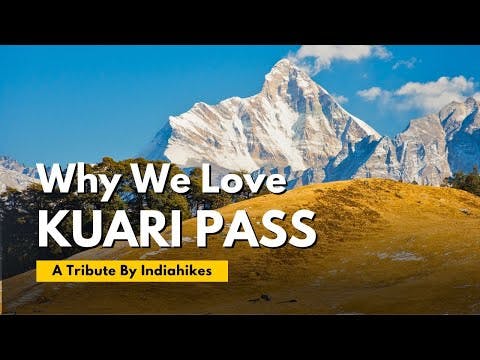
Kuari Pass - Complete Trek Information
We have always wanted trekkers to be well-informed before they go on a Himalayan trek. Knowledge is the difference between a safe trek and a dangerous one. It’s also the difference between a wholesome experience and a superficial experience.
Use this section to learn about the Kuari Pass trek. It has in-depth information about each day of the trek, what to expect, and how you need to prepare for it. Many years of expertise have gone into this content. Trekkers find these extremely useful.

Quick Itinerary
Get your trek plan

How Does Each Day Look
Complete day-wise guide with photos
How Difficult is Kuari Pass Trek?
Why fitness is important for this trek

Best Time To Do Kuari Pass Trek
Time your Trek well

How to Reach the Basecamp
Plan your travel with this

Packing List
Things to take

Why get fit for Kuari Pass Trek
Fitness matters for the trek

Frequently Asked Questions
Get your questions answered here
Photo Gallery
Spring (March - April)
Winter (Dec - Feb)
Autumn (Mid Sep - Nov)
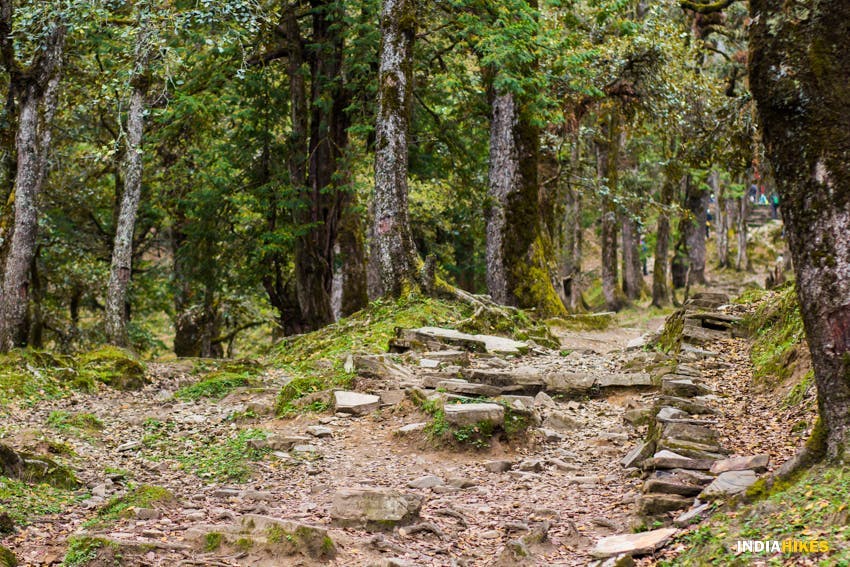
Introducing the
Himalayan trekking summer camps.
For Children Aged 10-14
View details
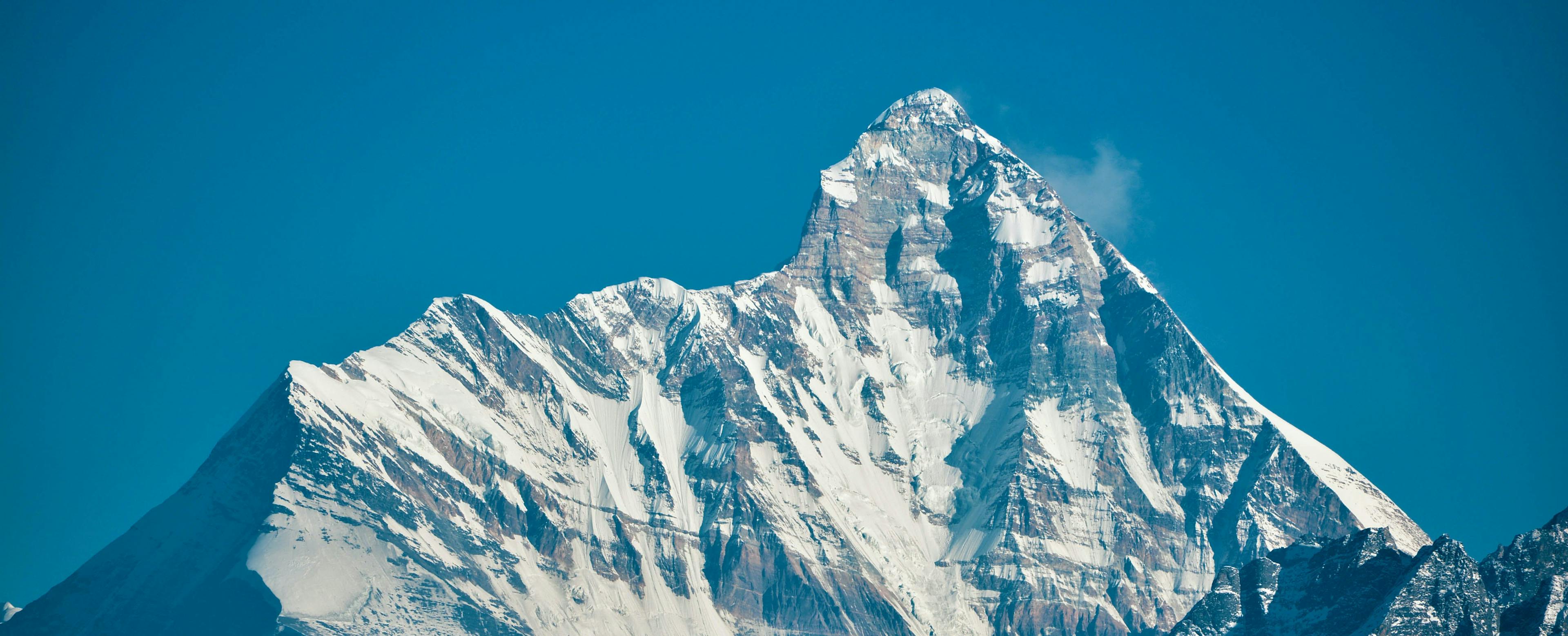
Expert Speaks
Co-Founder & COO, Indiahikes

Sandhya is a founding partner at Indiahikes. Over the past ten years, she has explored and put on the map a few of the greatest Himalayan treks in India, including Kashmir Great Lakes and Kedarkantha. She is a TedX Speaker and has been awarded the Women of Worth Award by Outlook Business in 2017.
Here’s Sandhya talking about one of our most Beautiful Trek Amidst the Tallest Summits treks in our country.
What I Like and Don’t Like About Kuari Pass Trek
What I Like About the Kuari Pass Trek
Sandhya is a founding partner at Indiahikes. Over the past ten years, she has explored and put on the map a few of the greatest Himalayan treks in India, including Kashmir Great Lakes and Kedarkantha. She is a TedX Speaker and has been awarded the Women of Worth Award by Outlook Business in 2017. Here’s Sandhya talking about one of our most Beautiful Trek Amidst the Tallest Summits treks in our country.
1 . The rare view of Mt Nanda Devi
What I like about the Kuari Pass trek is that it offers easy access to this spectacular view. You see Mt. Nanda Devi from Gorson Bugyal to Auli. After you cross the Gorson Bugyal, the view disappears.
This view of Nanda Devi is one top reason why I would do the Kuari Pass trek.
Not only, Nanda Devi, you see other big mountains also, like the Dronagiri mountains. Dronagiri and Mt. Nanda Devi stand side by side. You see Neelkanth, Chaukhamba, Hathi, Ghoda all pretty close.
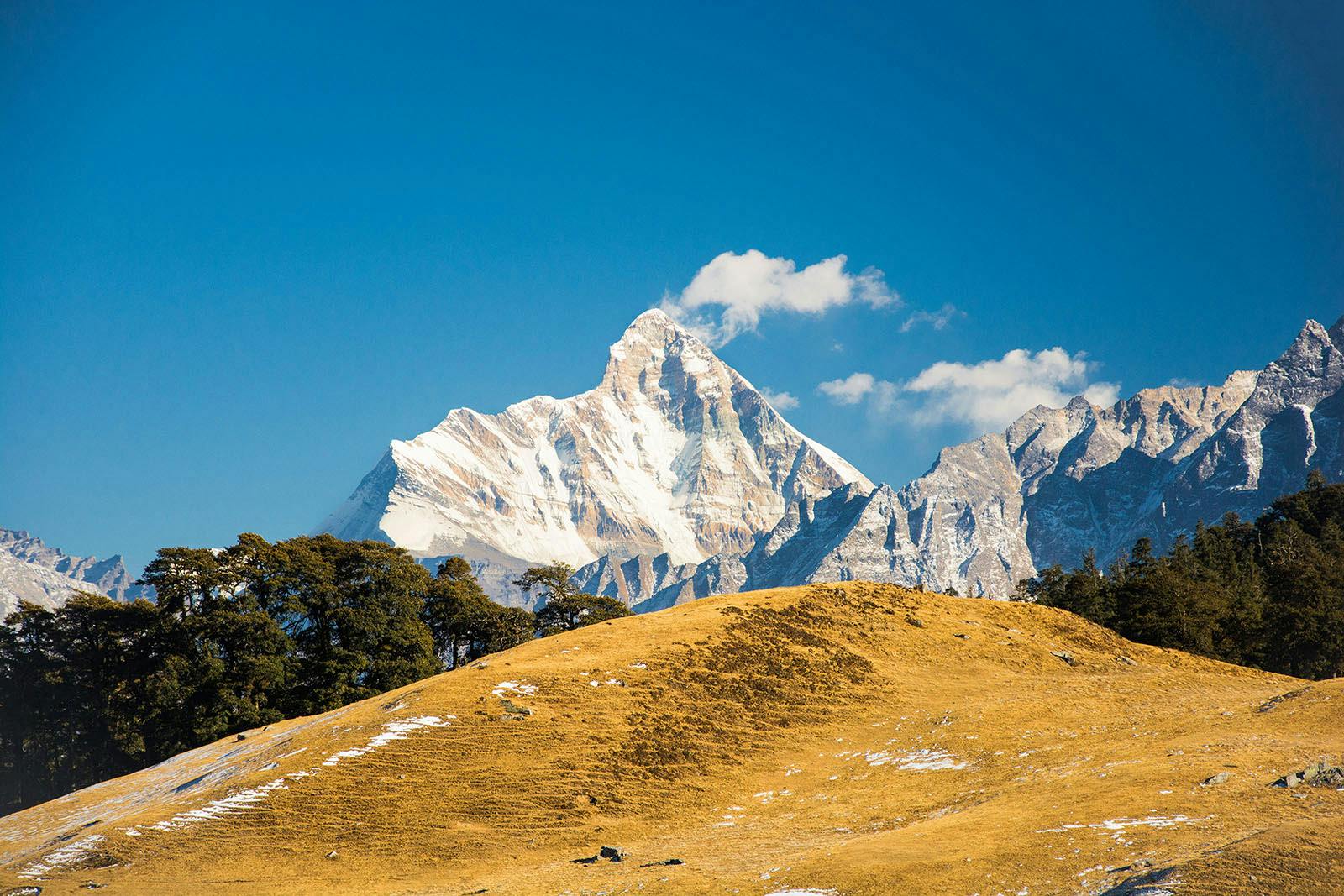
Mt Nanda Devi – Gorson Bugyal offers outstanding views of India’s tallest summit. Picture by Vaibhav Jain
2 . The picturesque oak forests
The lovely oak forests of Kuari Pass are the second reason why I like this trek. These forests are typical in the Uttarakhand region, but you find them only in certain treks like Roopkund, Brahmatal, and Dayara Bugyal.
Compared to the rest, I like the oak forest of Kuari Pass the best. This is simply because oak forests on this trek are placed so beautifully. These oak forests come in a section where the climb is not very steep. So, you have an easy walk through the oak forest.
It’s magical to see oak forests in snowfall. Usually, our mind conjures up images of pine forests in snowfall. But here, the experience is different.
As snow falls through the oak forests, it’s almost like you see bows being formed on the trees. It feels like only the red balls are missing now to complete the look.
Apart from the look, the Kuari Pass trek has an interesting landscape with oak forests merging into meadows. Unlike the steep forest sections on Roopkund and Brahmatal trek, here it is gradual. So it’s like a flattish oak forest walk where you can appreciate the beauty. And this section is not very long. You come across it on Day 3 and Day 4 of the trek for around one and a half and two hours.
This, especially with the snow and oak forest combination, makes for a very beautiful experience.
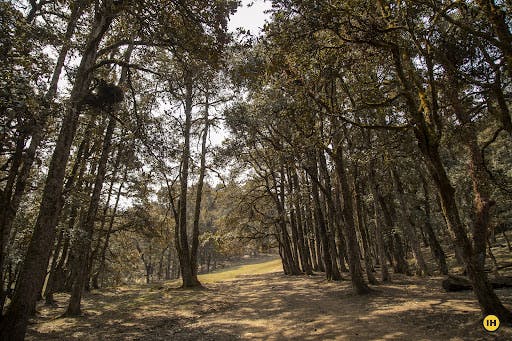
Kuari Pass trek – A trail amidst the magical Padiyar forest Picture by Jothiranjan
3 . The unforgettable walks in the meadows
The next big reason to do the Kuari Pass trek is the Gorson Bugyal. Once you cross the tree line, the Gorson Bugyal stretches in front of you. It’s not like Ali Bugyal. But the setting of this bugyal lingers in your mind long after you are back from the trek.
As you step into Gorson Bugyal, on one side you have the grand Dronagiri and Nanda Devi. And then, on the other side, you have these green meadows stretched in front of you.
The pretty Gorson Bugyal is one part of it. The other part is Chitrakantha. This is a meadowy ridge at 12,000 feet. To walk on this ridge is also an experience to cherish.
What’s great is that the meadows of Kuari Pass are extremely beautiful in any season. If you go in early autumn, it’s lush green. In late autumn it is golden, and it is also extremely beautiful. And winter offers a stark, white setting.
In all settings, the meadows and the mountain views in contrast are very beautiful.
Through and through it’s a meadow. The trek ends with the setting of a meadow. During summer, snow melts from the meadow and you have fresh green grass growing.
It is a legendary trail. You have the Lord Curzon trail passing through it. Kuari Pass is an old trek.
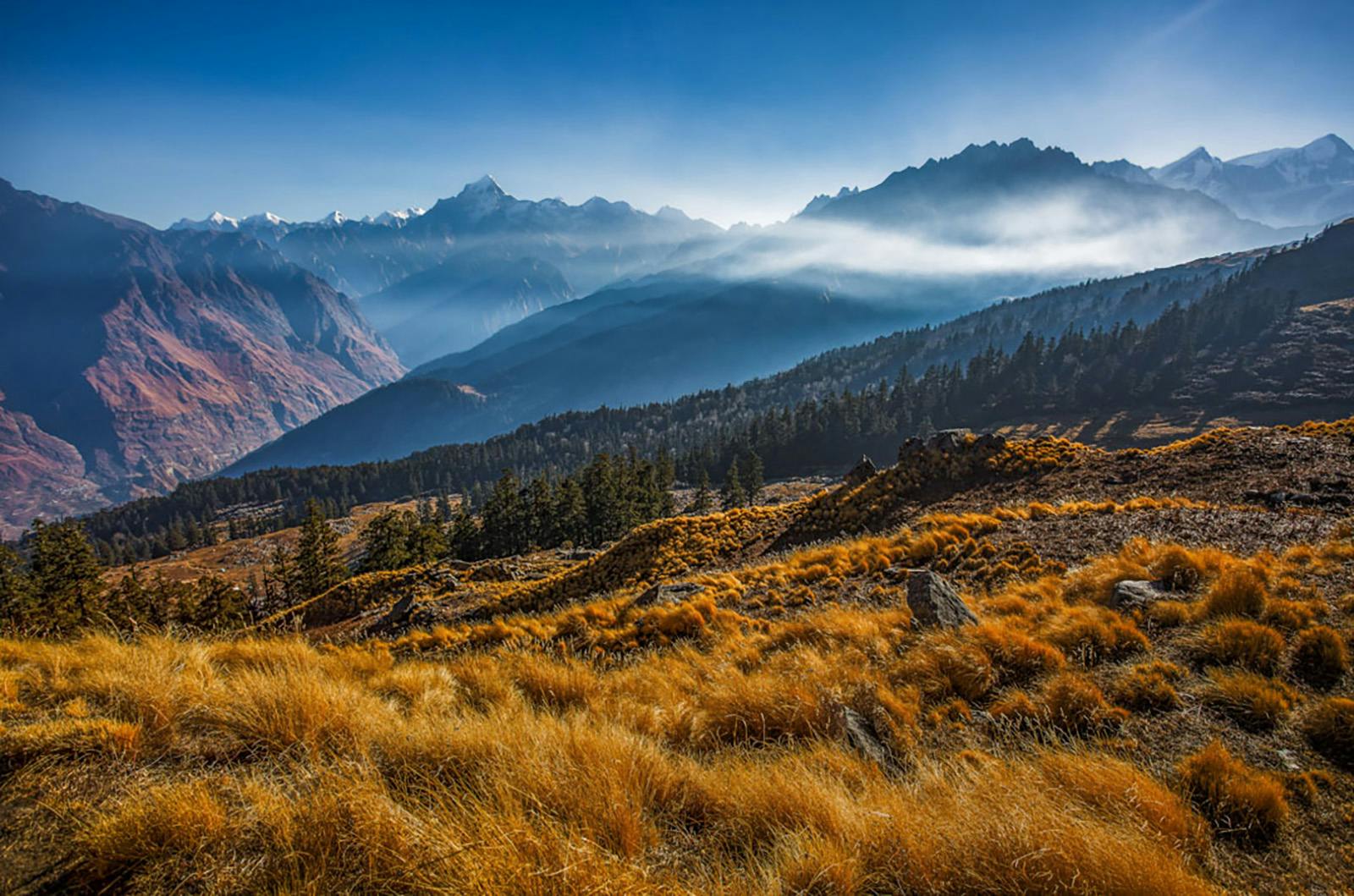
Lord Curzon trail passing through Kuari Pass
What I don't Like About the Kuari Pass Trek
1 . Trek Route from Auli
I wish the Kuari Pass trek had started from the Auli side. Now, the trek starts from Karchi and ends at Auli. I wish it was the other way round.
I’ll tell you why. When you trek to Kuari Pass from the Karchi side, all the spectacular mountain views are behind you. I miss having these views in front of me. You get this when you do the trek from Auli. But that route is not very practical.
From Auli, you tend to gain altitude too quickly while reaching the next campsite at Tali. And, availability of water here is also a challenge.
Due to these reasons, it’s better to begin the trek from the Karchi side. But I wish it was the other way round.
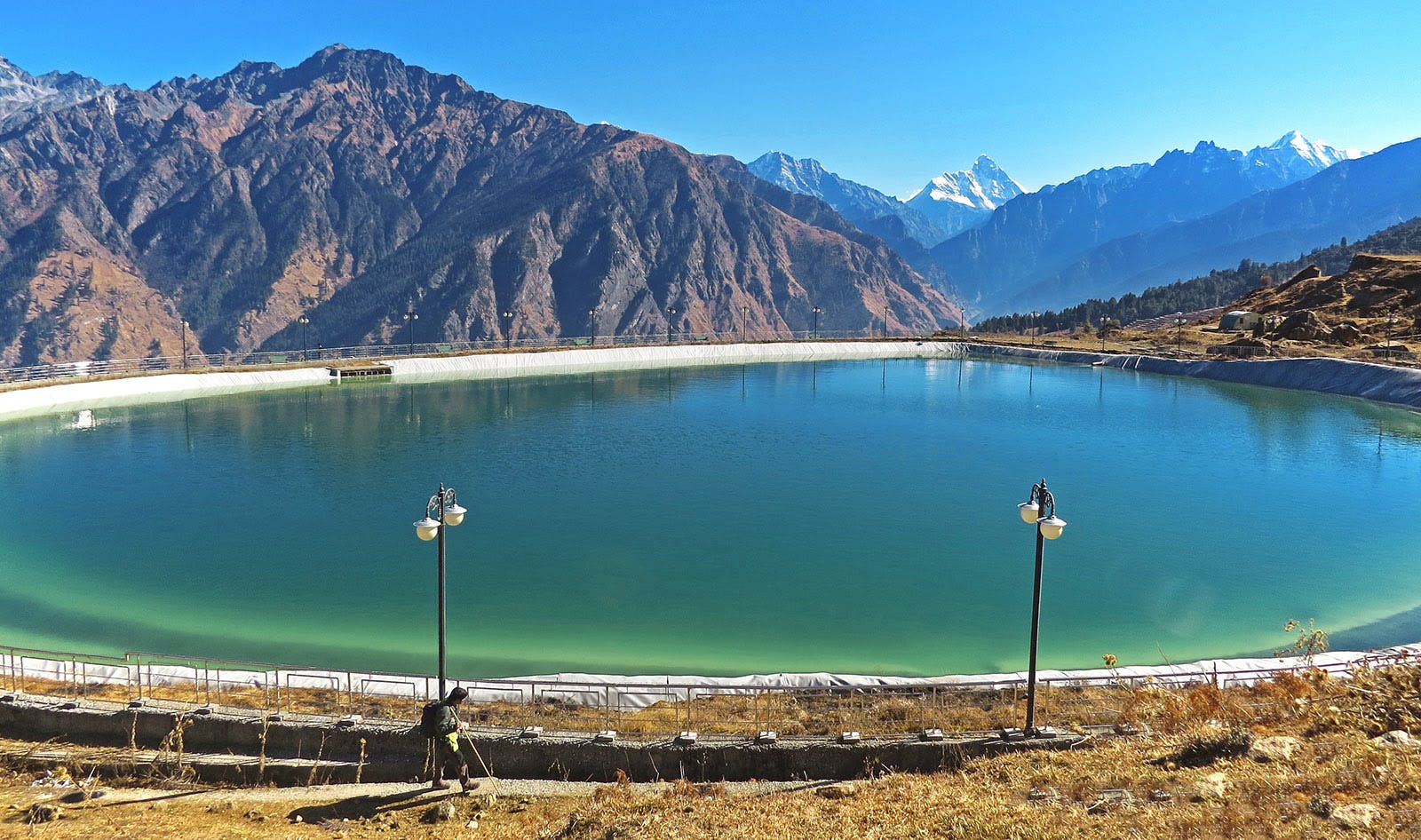
Mt Nanda Devi in the distance as seen from the popular artificial lake at Auli.
Trek Trivia
Things Nobody Tells You About Kuari Pass Trek
- Mountain Views
- Story on the name of Kuari Pass
The Grand Mountain Views from Kuari Pass Trek
You see Mt. Nanda Devi from Gorson Bugyal to Auli. After you cross the Gorson Bugyal, the view disappears.
Not only, Nanda Devi, you see other big mountains also, like the Dronagiri mountains. Dronagiri and Mt. Nanda Devi stand side by side. You seeNeelkanth, Chaukhamba, Hathi Ghoda all pretty close.

Do you know the story behind the naming of Kuari Pass?
The name Kuari Pass was coined in 1905. It was coined by Lord Curzon, who trekked from Ghat, Gwaldam to Kuari Pass. The trail is well known as Kuari Pass or Lord Curzon Trail now.
Before 1905, the locals did not take this pass and were fairly untouched. The pass was untouched because of the local deity.
Lord Curzon took this cue from the local language of what stands for Virgin land and termed it Kuari Pass.
There is another mystery about the name of Kuari Pass. It is said that there was a Japanese traveller who attempted to climb Nanda Devi with her daughter. But, unfortunately, they disappeared on this climb.
After multiple search attempts, the daughter was found on Kuari Pass, but the mother wasn't. Legend says that the daughter's name was Kurai and the mother's name was Nanda. Hence, the names were given to the mountains.
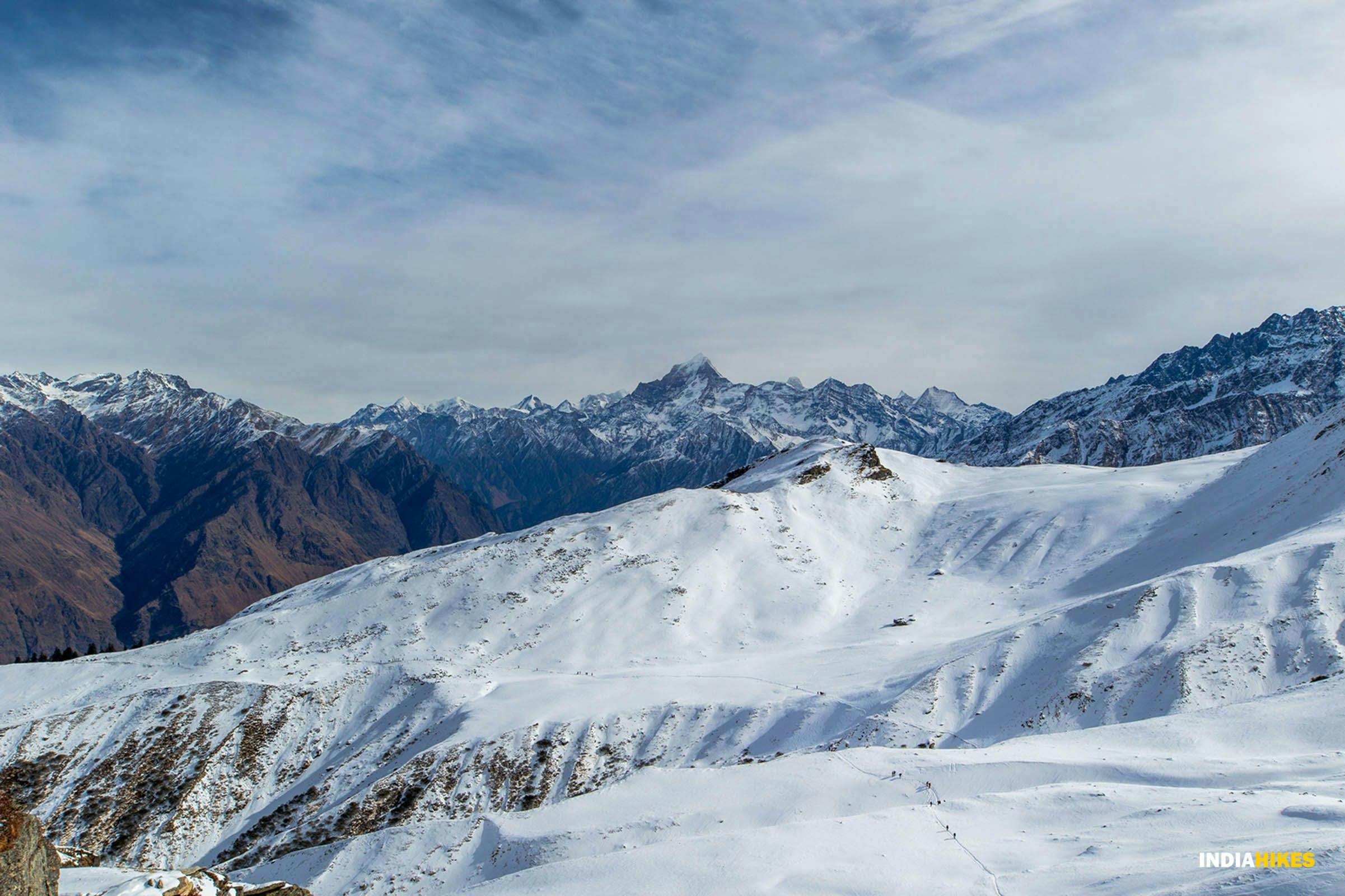
Other Treks like Kuari Pass Trek
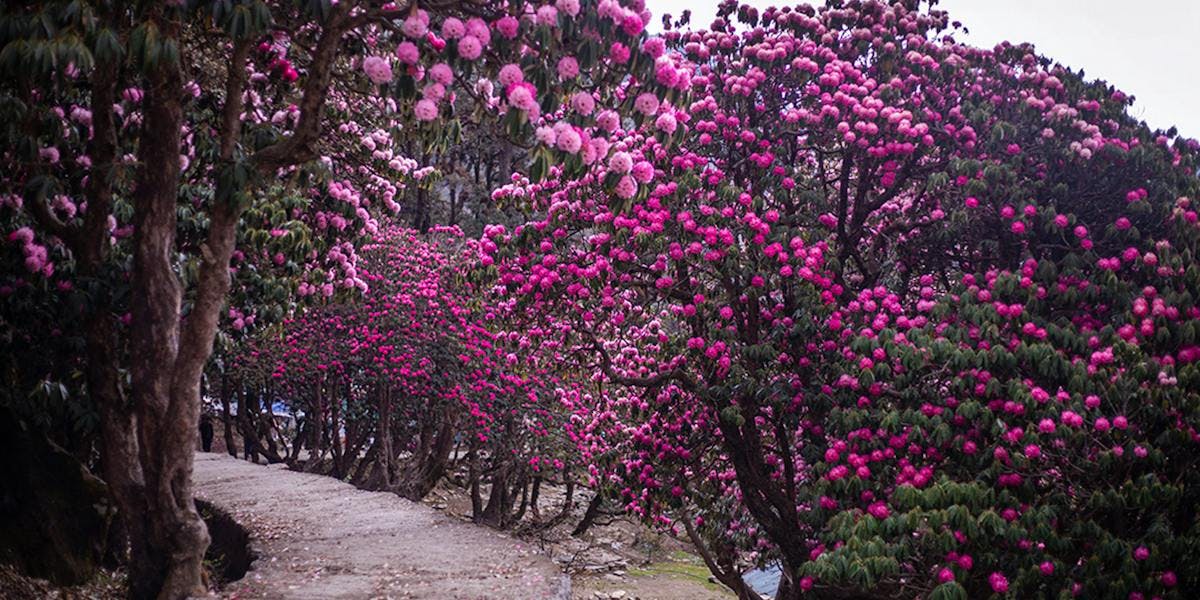
Easy-Moderate
Deoriatal Chandrashila
Get Trek Info
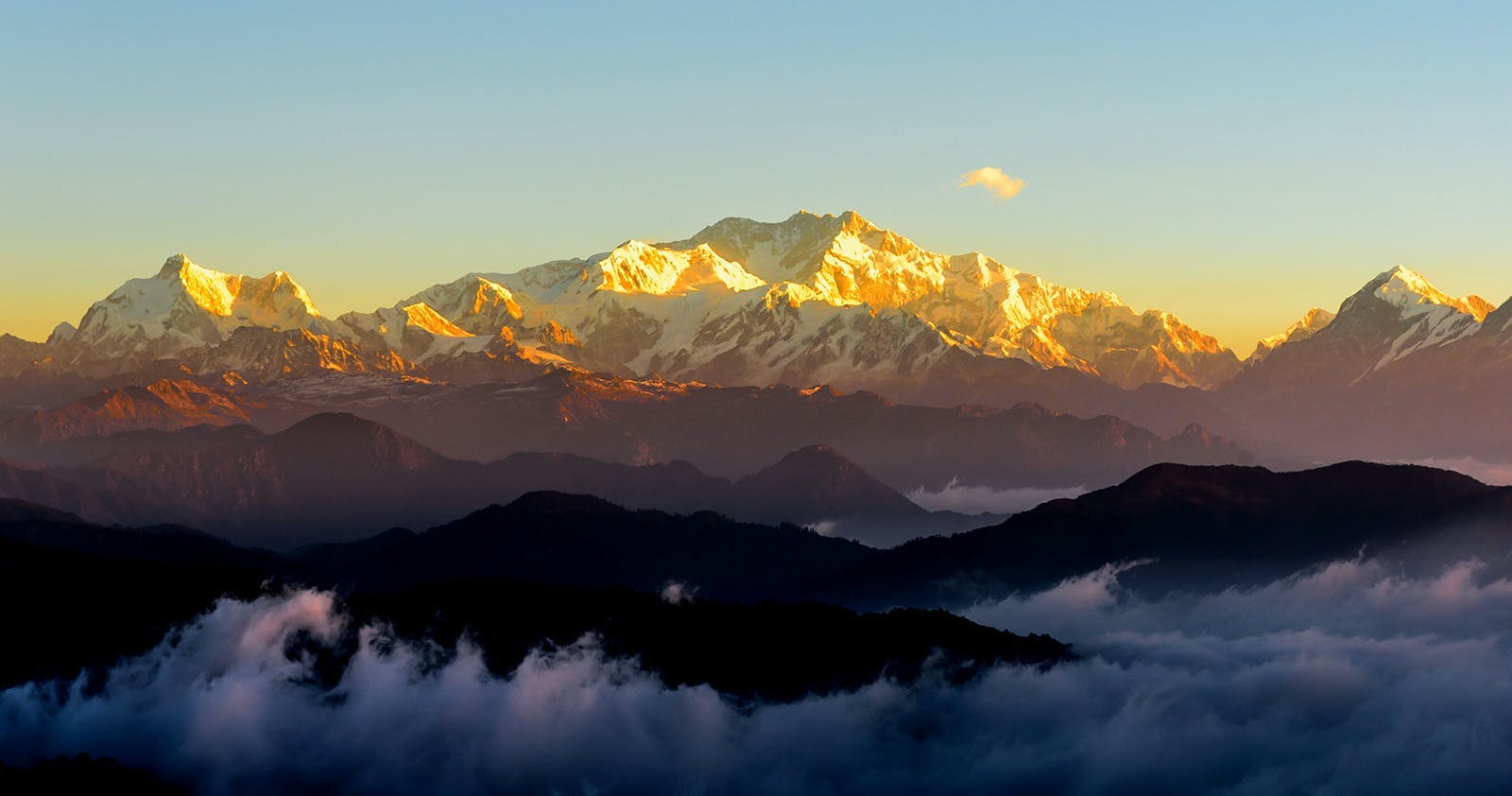
Sandakphu Phalut Trek
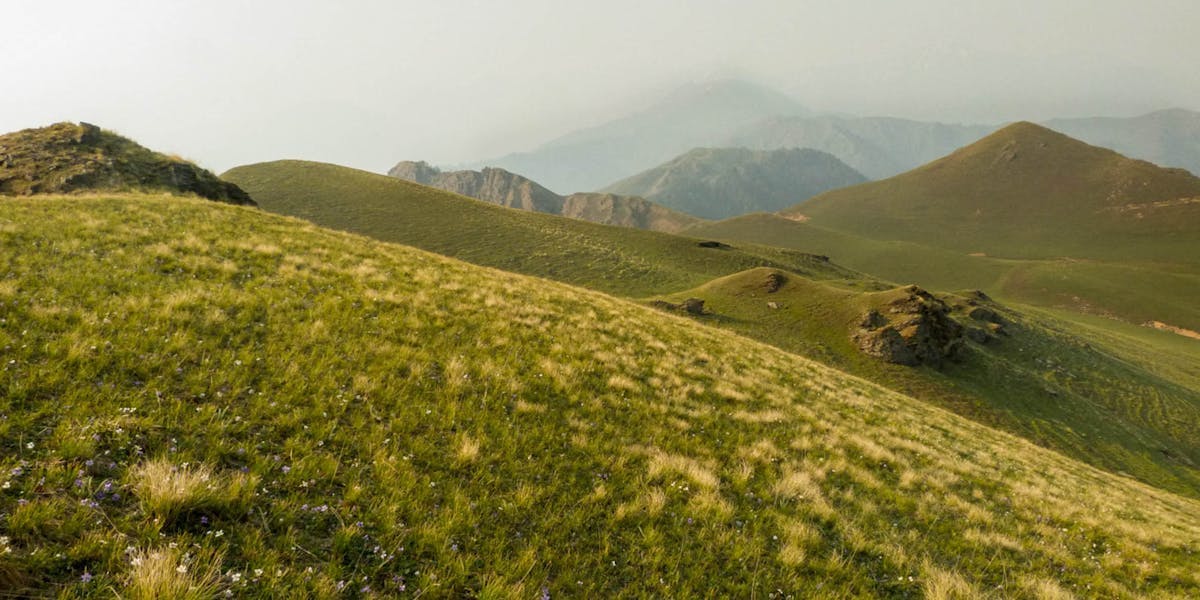
Dayara Bugyal Trek

Deoriatal Chandrashi...
A summit climb to one of India's best panoramas

Sandakphu Phalut Tre...
Sleeping Buddha and the 3 highest summits of the world
An ideal Himalayan trek for beginners and families
Sign up for our much loved Weekly Mailer
We have terrific trekking tips, trek updates and trek talks to look forward to
Treks by Categories
Treks by season, treks by month, treks by duration, treks by difficulty.
- Easy - Moderate
- Moderate - Difficult
Treks by Region
- Uttarakhand
- Himachal Pradesh
- Lahaul and Spiti
- Jammu & Kashmir
- West Bengal
- Chhattisgarh
Treks by Experience
- Family Treks
- Stargazing Treks
- Senior Treks
- Adventure Therapy
- Summer Camps
- Youth Camps
- Cancellation policy
- Work with us
- Our sustainability practices
- Privacy Policy
- Terms & Conditions
080 468 01269 Mon to Sat - 9.30 AM to 7.30 PM Sun - 9.30 AM to 6.30 PM
Bengaluru Office
139, Defence Colony Road, Defence Layout, Sahakar Nagar, Bengaluru, Karnataka 560092
Dehradun Office
Mohabbewala, Titan Road, Near Titan Factory, Chandramani Khalsa Dehradun - 248002
© 2024 Indiahikes Private Limited
All images are copyrighted by their respective authors.

Kuari Pass Trek
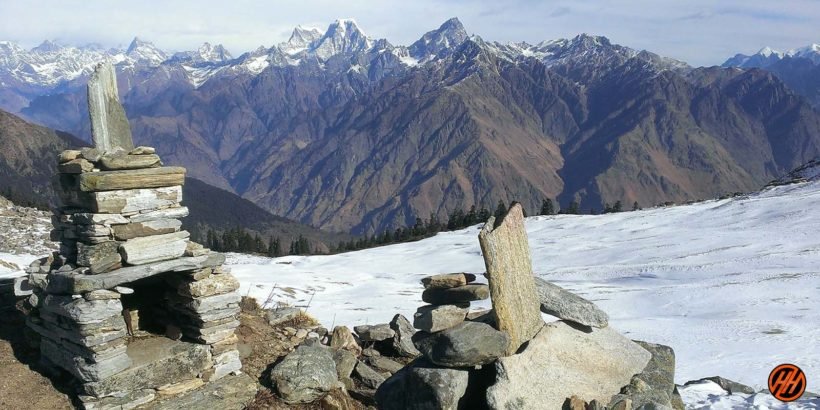
Description
Reviews (5), things to take, available dates, include / exclude, kuari pass trek lord curzon explored in himalayas uttarakhand -2024 complete information from rishikesh to rishikesh .
Kuari Pass Trek was explored by Lord Curzon when the British ruled India. It is a perfect Trek for Beginners which lies in the Garhwal Himalayas at an altitude of 4,264 meters.
So, if you are a beginner and thinking to start in the Himalayas then Kuari Pass can be the first trek of your Himalayan journey. And, it is best for nature lovers because of its untouched surroundings, scenic vistas and views of lofty peaks.
The Kuari Pass Trek is a popular trekking route in the Garhwal region of the Indian state of Uttarakhand.
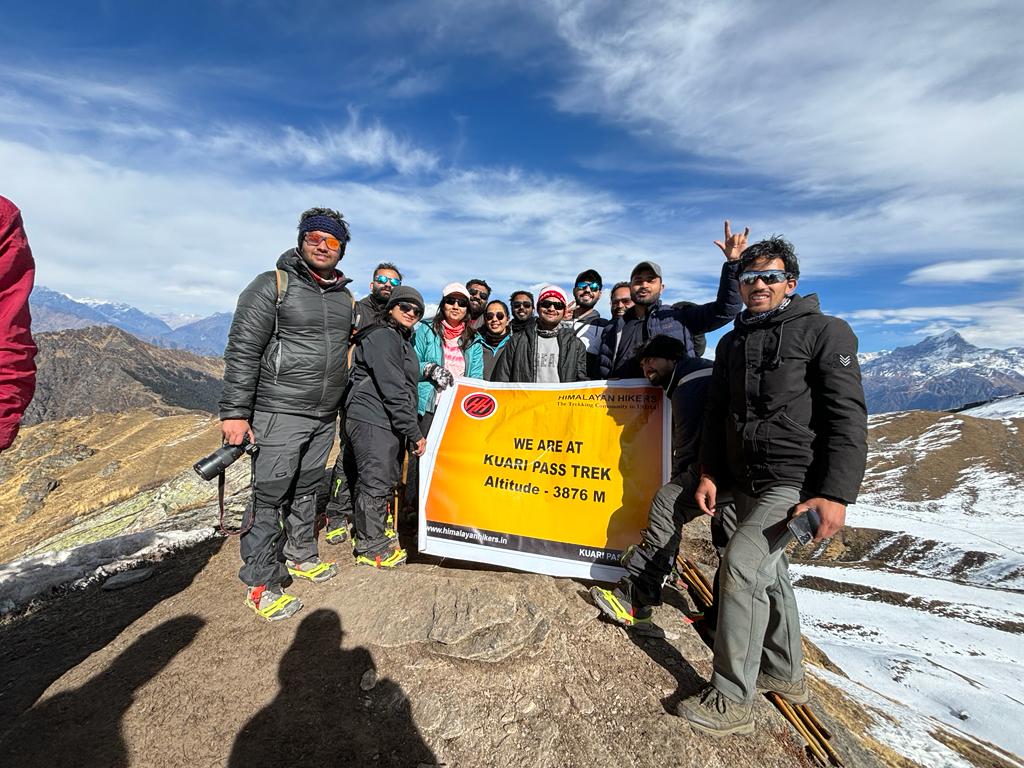
Here is some important information you should know before planning your trip:
Trek Duration: The Kuari Pass trek is typically a 5-6 day trek, covering a total distance of around 33-35 km.
Trek Difficulty: The trek is considered to be of moderate difficulty level and can be done by beginners as well as experienced trekkers.
Best Time to Visit: The best time to do the Kuari Pass trek is between April to June and September to November. or Winter December to April end
Starting Point: The trek usually starts from a small village called Dhak in Uttarakhand.
Altitude: The highest point of the trek is the Kuari Pass which is situated at an altitude of 12,516 ft (3,815 m).
Weather Conditions: The weather conditions on the trek can be unpredictable and can change rapidly. It is important to be prepared for rain, snow and cold weather conditions.
Permits: A permit is required to do the trek, which can be obtained from the forest department office in Joshimath.
Accommodation: There are several options for accommodation on the trek, including tents, guesthouses and lodges.
Fitness Requirements: The trek requires a moderate level of fitness, and it is recommended to do some physical training before embarking on the trek.
Equipment: It is important to carry appropriate trekking equipment such as trekking shoes, warm clothes, rain gear, sleeping bags and a backpack.
Here are some of the notable peaks that are visible from the Kuari Pass summit:
- Nanda Devi: Nanda Devi is the highest peak entirely within India, standing at an elevation of 7,816 meters (25,643 feet). It is one of the most prominent and revered peaks in the region.
- Kamet: Kamet is the second highest peak in the Garhwal region, with an elevation of 7,756 meters (25,446 feet). It is known for its pyramid-like shape and challenging climbing routes.
- Dronagiri: Dronagiri is a group of peaks, with the highest point reaching 7,066 meters (23,182 feet). It is notable for its picturesque beauty and mythological significance.
- Chaukhamba: Chaukhamba is a group of four peaks, with the highest peak reaching an elevation of 7,138 meters (23,419 feet). The name Chaukhamba translates to “four pillars” and represents the four celestial deities.
- Hathi Parvat: Hathi Parvat, meaning “Elephant Peak,” is a prominent mountain in the region, resembling the shape of an elephant. It stands at an elevation of 6,727 meters (22,073 feet).
- Ghori Parbat: Ghori Parbat is another significant peak visible from the Kuari Pass summit, reaching an elevation of 6,708 meters (22,008 feet).
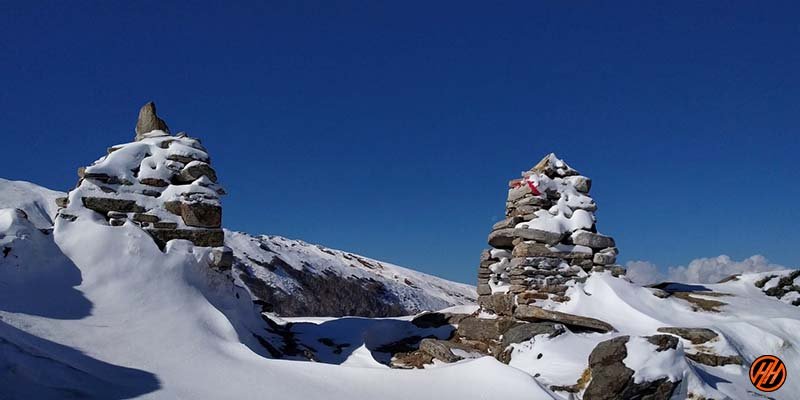
Why Kuari Pass Trek?
The Kuari Pass trek is a popular trek in the Indian state of Uttarakhand, known for its breathtaking views of the snow-capped Himalayan peaks. There are several reasons why people choose to do this trek:
Scenic Beauty: The Kuari Pass trek offers stunning vistas of some of the highest peaks in the world, including Nanda Devi, Kamet, and Trishul. The trail takes you through lush green meadows, dense forests, charming villages, and alpine landscapes, providing a visual treat for nature lovers and photographers.
Adventure and Challenge: The trek presents a moderate level of difficulty, making it suitable for both experienced trekkers and beginners. It involves ascending to an altitude of around 4,264 meters (13,990 feet) at Kuari Pass, which adds a sense of adventure and achievement. The trail includes steep climbs, narrow ridges, and sometimes even snow, providing a thrilling experience for adventure enthusiasts.
Cultural Immersion: The region is inhabited by local communities like the Garhwali and Tibetan people, giving trekkers an opportunity to interact with and learn about their rich culture and traditions. You can visit small mountain villages, interact with the locals, and get a glimpse of their lifestyle, architecture, and cuisine.
Flora and Fauna: The Kuari Pass trek takes you through diverse ecosystems, including oak and rhododendron forests, which are home to a wide variety of flora and fauna. You may come across different bird species, Himalayan wildlife like musk deer, and if you’re lucky, you might spot the elusive snow leopard.
Solitude and Serenity: While the Kuari Pass trek is gaining popularity, it still offers a sense of solitude and tranquility compared to more crowded treks in the region. The pristine surroundings, untouched landscapes, and peaceful atmosphere make it an ideal choice for those seeking a break from the chaos of daily life.
Trekking Infrastructure: The trek is well-established with designated campsites, trekking routes, and experienced local guides and porters available. This infrastructure ensures a relatively comfortable and safe trekking experience, especially for those who are new to trekking or prefer some level of support.
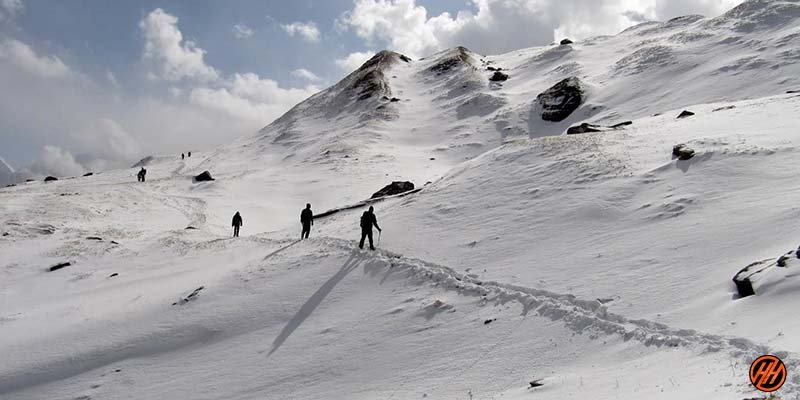
About Base camp Joshimath in Kuari Pass Trek
It is a picturesque town in Chamoli at an altitude of 1875 m nestled amid high Himalayan peaks. It is the base camp of many Himalayan treks and the gateway to famous pilgrim sites like Badrinath .
There is spirituality in the air because of the presence of ancient temples. It is home to one of the four “Math” “Atharva Veda” by Adi Shankar Acharya. Joshimath has a tranquil charm away from the cacophony of cities.
The gushing rivers and silent streams with the cover of verdant green and the pious ancient temples in the area will surely lure you to come here again and again.
Overwhelming sight of the Himalayas in Kuari Pass Trek
Get exotic mountain views from the very first day of the trek. Go higher and get welcomed by the great view of gigantic peaks which will accompany you all along the way.
Kuari pass top is known for the clear and overwhelming sight of the Himalayas because close and imposing views are the real attraction of this trek.
Therefore, the peaks visible from the summit are – Trishul, Chaukhamba, and Kamet, Nanda Devi peaks, Nanda Ghunti, Neelkanth, Dronagiri, Changbang, Mana, Mukut Parbat, Rishi pahad and others.
During the trek, pass through remote villages of the Himalayas and dense forests. Mainly of Oaks and Deodar. Moreover, spot Himalayan animals and rare species of birds on the way. And, in this region the Rhododendron (Burans) trees with beautiful crimson flowers are found in abundance.
In addition to the beauty of Kuari Pass trek, the meadows present here are lavish and walking on their velvety grass is a great pleasure!
Further, traverse Vinayak Pass and head to Kuari Top, it is the highest point of this trek. From here, Nanda Devi Massif looks beautiful among all other peaks and becomes the highlight.
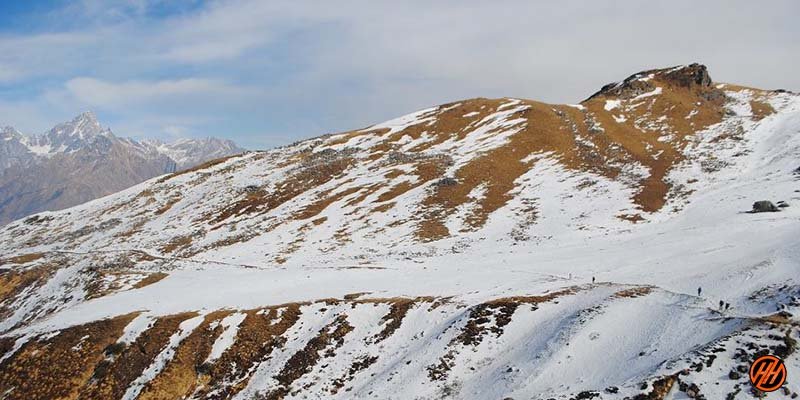
Here are some brief details about the Trek
Before heading towards the itinerary, it is really essential to perceive the reason behind choosing Kuari Pass trek.
See firstly, the trekking distance is a total of by taxi 588 Kms and on foot 33 km which is to be covered in 6 days.
Kuari pass is the best winter trek of Uttarakhand Himalayas, this is the best trek for families, Students, and Beginners Altitude is 12516 feet
Need proper gear & clothing for sub-zero temperature winter?
You got to see so many heavenly bodies in one place like the panoramic view of the Himalayan ranges, meadows, one of the beautiful Trishul, Chaukhamba, and Kamet, Nanda Devi peaks, Nanda Ghunti, Neelkanth, Dronagiri, Changbang, Mana, Mukut Parbat, Rishi pahad and others. , pine forests, and different variety of flora and fauna surpassing through bona fide Garhwali heritage and culture.
Do spare time in Interaction with locals, and you will get to know about some of the ancient tales of Indian mythology. And our Garhwali Culture
And, in winter / summer, the Kuari pass trek turns totally different and amusing because of meadows, wildflowers and woods blooming in different colors.
Beautiful landscapes so carry proper photo gear & Extra battery backup.
The backpack should not exceed 10 to 12 kg only
Is it safe trek for me ?
Yes the Kuari pass trek is very safe. All our professional strive our best to provide trekkers with the best experience possible. Kuari Pass Trek is a moderate trek that starts from Dhak Village. These treks are uphill, You can do this trek comfortably, it is a good way to go through beautiful forests, which makes your trek easy.
Whenever you go for a trek, do it with full enthusiasm, do not think much, you keep adding yourself day by day with Himalayas, then everything will be easy for you. all trek route more beautiful
During the day the temperature of Kuari pass is around Winter temperature is -3°C to -5 °C and during the night the temperature comes down to -5 °C to -15 °C which is not bad.
Summer may ot june months temperature is 8 °C to 15 °C and during the night the temperature comes down to 5 °C to 12°C which is not bad. this is very good for summer trek kuari pass.
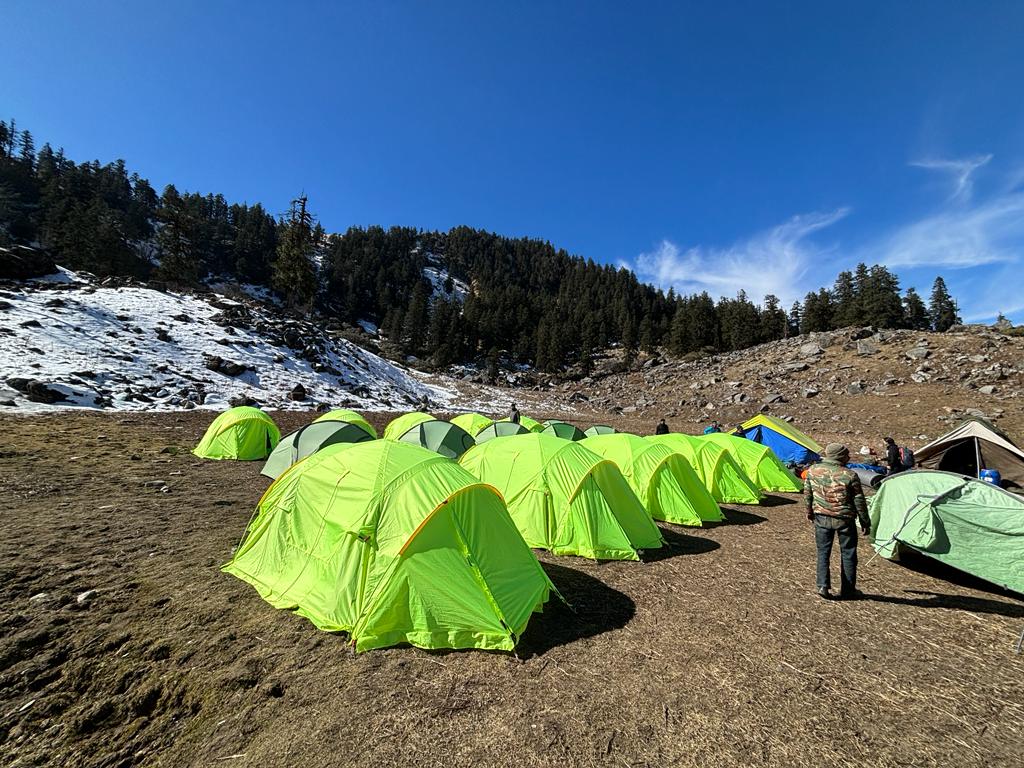
How to difficulty level kuari pass
Kuari Pass Trek is a very beautiful winter or summer trek and an uphill trek in the Uttarakhand Himalayas, The Kuari pass Trek is great for those people who have a great passion for mountaineering and consider it a special purpose in their life. Despite the fact that the top is relatively low in elevation, we recommend physical endurance and a strong fitness record.
You have to travel 544 kms from Dehradun to Joshimath and return Joshimath to Dehradun by taxi and 33 kms on foot from Dhak Village to kuari pass summit 12516 Feet and back to Joshimath.
These treks are not very difficult but you can, we are doing it for the last 30 years, some people come from all over the world who have their own fitness level and all people easily do trek to Kuari pass.
Don’t think much, dedicate yourself to nature, it will be easy for you, and always take the help of your trek leader, wake up in the morning during the trek, do some yoga and pranayam per day morning.
When does snowfall start in Kuari Pass trek?
In the Kuari pass trek, especially snowfall time occurs only in December, but sometimes it happens in early November as well, it is seasonal.
By the way, if it rains sometimes even in October, then the Kuari pass trek Summit becomes snowfall, but I do not know much longer.
The snow that falls from 15th December lasts for a long time.
Kuari pass trek has the highest snowfall in the months of January and February, which lasts till the last of May, and does not melt easily.
What should you keep in mind for the Kuari Pass trek?
Physical Fitness: The Kuari Pass trek involves moderate-level difficulty, including steep ascents and descents. It is advisable to engage in regular physical exercise and cardio workouts to build stamina and endurance before the trek. Additionally, consult with a healthcare professional to ensure you are physically fit for the trek.
Acclimatization: As the trek involves gaining significant altitude, it’s essential to acclimatize properly to avoid altitude sickness. Plan your itinerary in a way that allows for gradual ascent and includes rest days at higher altitudes. Stay hydrated, maintain a slow and steady pace, and be aware of any symptoms of altitude sickness, such as headache, nausea, or dizziness.
Trekking Gear: Invest in appropriate trekking gear to ensure your comfort and safety on the trail. Essential items include sturdy trekking boots, moisture-wicking clothing, a warm and waterproof jacket, thermal layers, a sun hat, sunglasses, gloves, and a good quality backpack. Don’t forget to pack essentials like a first aid kit, sunscreen, insect repellent, and a headlamp.
Weather Conditions: Be prepared for changing weather conditions in the mountains. Pack clothing that caters to both warm and cold temperatures, as the weather can vary throughout the day. Check the weather forecast before the trek and plan accordingly.
Permits and Regulations: Obtain the necessary permits from the forest department or local authorities before starting the trek. Familiarize yourself with the rules and regulations of the trekking area, and follow the guidelines to ensure minimal impact on the environment. Respect the local culture and customs during your interactions with the communities along the trail.
Hydration and Food: Carry an adequate supply of water and stay hydrated throughout the trek. There are several water sources along the trail, but it is advisable to treat or purify the water before consumption. Carry high-energy snacks and packed meals to keep yourself fueled during the trek.
Trekking Support: Consider hiring a local guide or trekking agency that has experience in organizing the Kuari Pass trek. They can provide valuable assistance, local knowledge, and ensure your safety throughout the journey. If you are trekking independently, inform someone about your itinerary and keep them updated on your progress.
Leave No Trace: Practice responsible trekking by following the principles of “Leave No Trace.” Respect the environment by not littering and disposing of waste properly. Minimize your impact on the surroundings and leave the trail as you found it.
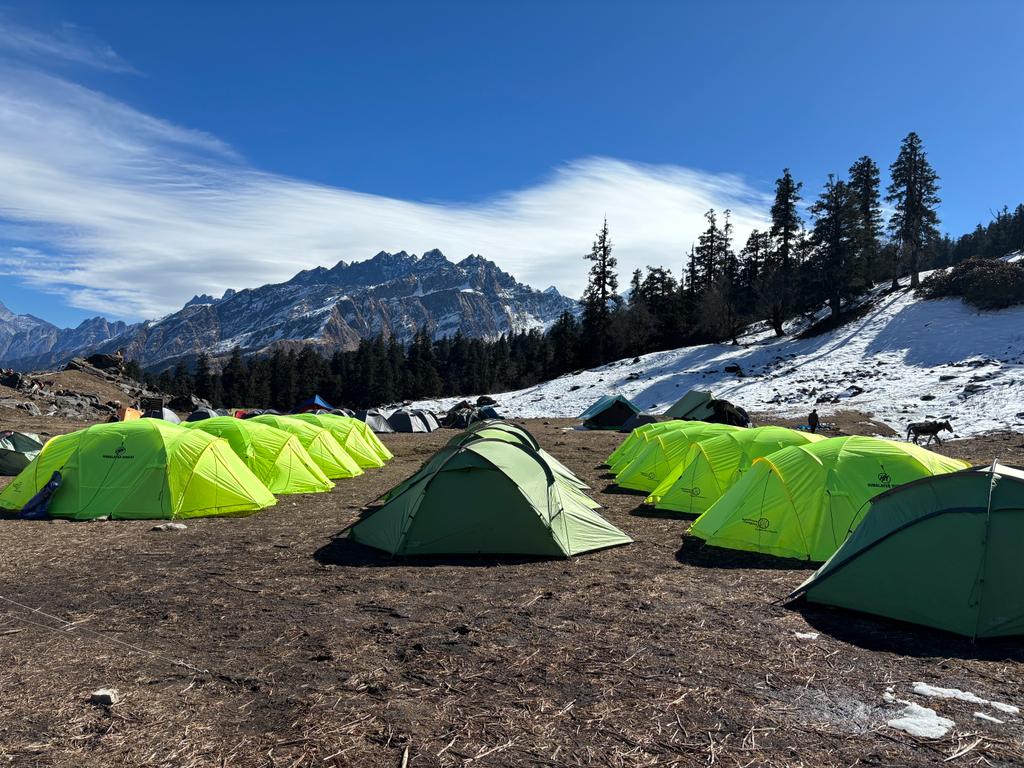
Winter Season
- In Kuari pass winter trek , you will need warm clothes a lot, for which you will need proper good uniform clothes
- Winters are always cold, so only warm clothes can keep you safe on trek
- Always take the information from the company with which you are booking the trek before going on the trek, what do we need to bring
- In the winter season, the temperature always drops day by day , so warm clothes will help you a lot.
- The minimum snowfall in Kunari Pass trek is 2 feet and more than 5 feet.
Summer Season
- Summer trek to Kuari pass trek is very special, the view and the temperature are all favorable to you
- For summer trek, you have to bring only normal clothes, so that your trek can be good, there is no need for hot clothes, but in hiking it is also necessary to bring all the equipment which is necessary for you.
- It is necessary to have 3 pairs of clothes from trekking, especially the poncho, you will have to bring every season
- In the summer season, the temperature is always normal, so there is no need for hot clothes.
Monsoon Season
- During the monsoon season, it rains occasionally during the Kuari pass trek especially in the Uttarakhand Himalayas , so if you have dry clothes here, it is very good, even when wet, it dries quickly.
- At this time you have to bring at least 3 pairs of clothes, for monsoon trek you do not have to bring too warm clothes, at this time you, hiking pants and t-Sart, I can trek
- It’s only a little cold in the morning and evening and the day is a good temperature for you
- Before going on any trek, it will be easy for you to take information related to each season.
- Trekkers need to know about these, you can ask us anytime like, Kuari pass trek route, trek map, temperature, weather conditions, difficulty level, trek starting point, end point, transport, view of the trek, best time to visit, How to reach Kuari pass trek distance etc, Trek Location, keep this information before going
- 5. You also find some types of flowers in the Kuari pass trek which are very beautiful, these treks are very safe trek for monsoon.
The altitude we are going to cover in Kuari Pass Trek
- Dhak village – 6956 ft
- Gulling camp – 9632 ft
- Khullara camp – 11,102 ft
- Kuari pass Summit – 13,989 ft
Key Points of Kuari Pass Trek
- Duration: – 5 Nights 6 Days from Rishikesh to Rishikesh
- Base camp: – Joshimath
- Summer Temperature: – Day (5°C to 15°C) Night (2° C to 8° C)
- Winter Temperature: – Day (-2°C to -5° C) Night (-5°C to -10°C)
- Kuari pass Altitude: – 4264 Meters / 13,989 Feet
- Best Time: – Kuari Pass Trek is perfect for both Summer and Winter treks,
- Trek Level: – Moderate
- Trek distance: – On foot 33 Km – By taxi 588 km
Short Itinerary of Kuari pass Trek –
- Day 1– Pick-up to you from Rishikesh drive to Joshimath by taxi (256 Km) (10/11 Hours) (1,875 m/ 6,152 feet) overnight stay Hotel
- Day 2 – Drive from Joshimath to Dhak by taxi (12 km) Same day trek to Gulling (06 km) (4/5 Hours) ( Altitude –9,832 feet overnight stay Camp
- Day 3 – Trek from Gulling to Khullara camp (05 km) (3/4 Hours) Altitude – 11,072 feet overnight stay at Camp
- Day 4– Trek from Khullara camp to Kuari Pass (4,264/13,989 feet) back to Khullara camp (12 km) (6/7 Hours) overnight stay at Camp
- Day 5– Trek from Khullara camp to Dhak Village same day Drive to Joshimath (09km) (5/6 Hours) overnight stay at hotel
- Day 6– Drive from Joshimath to Haridwar via Rishikesh by taxi (258 km) (9/10 Hours)
Your Travel Plan for the Kuari Pass Trek
You can book trains, air flights, and bus tickets for your journey only according to the information given by us.
The Kuari pass trek will be of 4 days and 02 days of your journey total of 06 Days from Haridwar to Haridwar or Dehradun to Dehradun
First of all, all the trekkers will have to book their flight and train bus according to our timetable as our pick-up is from 6 am to 7 am, and you will have to reach Haridwar in the morning.
A taxi from Himalayan hikers will link you to the Haridwar railway station.
In the Haridwar railway station, you will get our staff that will arrange transport for you. The contacts no Transport coordinator or our office team will give you a week ago to your departure
Please you guys book your transport facility according to your own timetable, after Himalayan Hikers take all the responsibility of Haridwar to Haridwar, you will not face any problems.
How to reach Kuari Pass Trek?
To reach Rishikesh, the starting point for the Kuari Pass trek, you have several transportation options depending on your location. Here are some common ways to reach Rishikesh:
By Air: The nearest airport to Rishikesh is Jolly Grant Airport in Dehradun, which is approximately 21 kilometers away. From the airport, you can hire a taxi or take a pre-booked private transfer to reach Rishikesh. Several domestic airlines operate regular flights to Dehradun from major cities in India.
By Train: Rishikesh has its own railway station called “Rishikesh Railway Station” (IR station code: RKSH). It is well-connected to various major cities in India. From the railway station, you can hire a taxi or an auto-rickshaw to reach your desired location in Rishikesh.
By Road: Rishikesh is well-connected by road and can be reached by bus or taxi from nearby cities. Regular bus services operate from Delhi, Dehradun, Haridwar, and other major towns in Uttarakhand to Rishikesh. If you prefer a more comfortable and private journey, you can hire a taxi or take a self-drive car to reach Rishikesh.
Once you reach Rishikesh, you can make further travel arrangements to reach the specific starting point of the Kuari Pass trek, which is usually Joshimath. You can hire a taxi or take a shared cab from Rishikesh to Joshimath, which is approximately a 9 to 10-hour drive. Joshimath serves as a base camp for the trek, and from there, the trekking route to Kuari Pass begins.
It’s advisable to plan your travel in advance, especially during the peak trekking season, and consider the weather conditions and road conditions while making your travel arrangements.
What is the distance to reach Kuari Pass from another state?
The distance to reach Rishikesh for the Kuari Pass trek from another state in India will depend on the specific starting location within that state. Here are the approximate distances from some major cities to Rishikesh:
Delhi: The distance from Delhi to Rishikesh is approximately 240 kilometers (149 miles) via road. It takes around 6-7 hours to reach Rishikesh from Delhi by car or bus.
Mumbai: The distance from Mumbai to Rishikesh is approximately 1,650 kilometers (1,025 miles) via road. It is a long journey, typically taking around 30-35 hours by car or bus.
Kolkata: The distance from Kolkata to Rishikesh is approximately 1,525 kilometers (948 miles) via road. It is a long journey, usually taking around 30-35 hours by car or bus.
Bengaluru: The distance from Bengaluru to Rishikesh is approximately 2,350 kilometers (1,460 miles) via road. It is a considerable distance, and travel time can range from 40-45 hours by car or bus.
Chennai: The distance from Chennai to Rishikesh is approximately 2,440 kilometers (1,516 miles) via road. It is a significant distance, and travel time can range from 40-45 hours by car or bus.
ATM Point and Mobile Connectivity in Kuari Pass Trek
Before starting the journey to Kuari trek, make sure that you need payments, and then take out the cash on the way, Joshimath, the market is the last place where you can withdraw cash from ATM, (If you want to withdraw money then do it in Haridwar or Rishikesh.)
Mobile Connectivity
The phone does not work well on this trek. Therefore, you should ensure that you do not have to make any important calls. So make sure you finish all your important work and calls before starting the trek. Last Joshimath, your device will receive good networks.
What do we do for safety in Kuari Pass trek?
First of all, the safety of trekkers is much more for us, if you see at the trek, then there are all the risks, which I do not think about.
Himalayan Hikers worry more about you than no one should ever have any problem on the trek.
What should we and you keep more safety in the trek
- Whenever you are going for any trek, it is very important that you go completely fit and ready.
- The trek is not difficult, if you make your feet and your mind calm and strong, you will find the trek very easy.
- While trekking, keep in mind that you are walking on the right route or not always with your guide.
- Most people look somewhere and where they are walking, this can cause twitching in your legs, which can ruin your entire trek.
- It is important to ask your doctor if you have any medical problems
- I should always keep my medical kit with me, it is very important.
- Himalayan Hikers always keep a medical kit with them, such as oxygen cylinders, and medicine to be given in an emergency on the trek
- If any trekkers have any more problems, then they are brought back to the base camp by laying them on the stretcher.
- Our camp in Kuari Pass trek is around the tree line where you can not have any problem with oxygen
- In case of any medical problem, the help of your guide or well-informed trekkers should be taken
For Himalayan Hikers or trekkers, it’s crucial to have some emergency medical support available, given the remote and rugged terrain they often traverse. Here are some essential medical supplies to consider carrying:
- First Aid Kit : Include bandages, antiseptic wipes, adhesive tape, gauze pads, scissors, tweezers, and a CPR mask.
- Oxygen cylinder- Oxygen can be beneficial in alleviating symptoms of altitude sickness, such as headache, dizziness, nausea, and shortness of breath. Administering oxygen can provide relief and help prevent the condition from worsening.
- Personal Medications : Any prescribed medications should be carried in sufficient quantities.
- Pain Relief : Ibuprofen or acetaminophen for pain relief in case of minor injuries or headaches.
- Antihistamines : For allergic reactions and insect bites.
- Anti-diarrheal Medication : Such as loperamide, in case of gastrointestinal issues.
- Water Purification Tablets : In areas where clean water may not be readily available.
- Blister Treatment : Moleskin or blister pads for foot care.
- Tweezers : For removing splinters or ticks.
- Emergency Blanket : To keep warm in case of exposure.
- Whistle and Signal Mirror : For attracting attention in emergencies.
- Flashlight or Headlamp : Essential for navigating in the dark or signaling for help.
- Emergency Communication Device : Such as a satellite phone, PLB (Personal Locator Beacon), or a two-way radio for calling for help if needed.
- Basic Wilderness First Aid Guide : To assist in treating common injuries or illnesses.
- Sun Protection : Sunscreen, sunglasses, and a wide-brimmed hat to protect against sunburn.
- Emergency Shelter : Lightweight emergency shelter or tarp for protection from the elements.
It’s also essential for hikers to have basic knowledge of first aid and wilderness survival skills. Additionally, informing someone of your hiking plans and expected return time can be crucial in case of emergencies. Always be prepared and stay safe while exploring the beautiful but challenging Himalayan terrain.
Himalayan Hikers – Provided food During the Kuari pass Trek
– We serve five -05 times meals a day including- Breakfast, Lunch, Eevening Snakes, Soup, Dinner, A variety of delectable and healthy food is provided which includes; Indian, Chinese and other Western meals. They are nutritious and keep you fit and healthy on the trek.(Veg or non-veg food) With our local food and Day Pack, for Summit Day like fresh fruits
Food Menu – Roti + Rice + Salad + Papad +Matter paneer +Daal +mix veg+ daily more vegetable +sweet+ Bread +Omelets + jam + butter +Muesli, Milk+Banana+ Allo parantha +Tea & coffee Cornflakes, Milk +Egg bhurji +Bread, Peanut Butter +Pancake +Plain parantha +Fruits+ Porridge Oats+ +Bread & cheese +Poha +Boiled egg + Gulab Jamun+ Custard+ Jalebi+ Chilla +Honey+ Puri + Chole more
Note: – This is only list Himalayan Hikers Team or Cook provide you more healthy food and more items of per day menu
The type of food provided during a trek can vary depending on factors like the location, duration, and the trekking company or organization you’re with. However, there are some common types of food that are often included in trekking provisions:
- Carbohydrates : Foods high in carbohydrates provide energy for the trek. This includes items like rice, pasta, bread, and potatoes. More
- Proteins : Protein-rich foods help with muscle repair and recovery. Common protein sources include lentils, beans, tofu, meat (if available), eggs, and dairy products.
- Fruits and vegetables : These provide essential vitamins, minerals, and fiber. While fresh produce may not always be available, dried fruits and vegetables or canned options might be included.
- Snacks : Trekking often involves long hours of physical exertion, so snacks are important for quick energy boosts. Snacks like nuts, energy bars, trail mix, and chocolate are common choices.
- Local cuisine: Depending on the region you’re trekking in, you might also get the chance to sample local dishes. This can be a delightful way to experience the culture and flavors of the area.
Day 1: Pickup from Rishikesh Drive to Joshimath (base camp) by taxi or tempo travellers
Total distance 257 km – 10/11 Hours journey
Mode of the journey – By taxi
Altitude – Joshimath– 6152 feet
Night stay –Hotel on twin/three share basis
Himalayan Hikers organizes transport for trekkers from Haridwar or Rishikesh in the morning which will leave for Joshimath around 6:00 am to 7:00 am.
Today start your journey with team Himalayan Hikers from Haridwar,or Rishikesh
The drive from Rishikesh to Joshimath, which serves as the base camp for the Kuari Pass trek, offers several scenic viewpoints along the way. Here are some notable viewpoints you can encounter during the journey:
- Devprayag: Devprayag is the confluence of the Alaknanda and Bhagirathi rivers, where they merge to form the holy river Ganges. It is a significant pilgrimage site and offers a picturesque view of the river’s meeting point.
- Rudraprayag: Rudraprayag is another confluence point on the route, where the Alaknanda and Mandakini rivers merge. The town is surrounded by the scenic beauty of the Himalayas and is considered sacred by Hindus.
- Karnaprayag: Karnaprayag is yet another confluence point, where the Alaknanda River meets the Pindar river. It is located at the confluence of the Pindar and Alaknanda valleys, providing beautiful views of the rivers and surrounding mountains.
- Vishnuprayag: Vishnuprayag is the confluence of the Alaknanda river and the Dhauliganga river. It is named after Lord Vishnu and is considered one of the Panch Prayag (five confluences) in Uttarakhand.
Day 2: Drive Joshimath to Dhak by taxi (12km) same-day trek to Gulling camp
Total distance 18 km – 4/5 Hours journey
Mode of the journey – By taxi -12 km – On foot – 6 Km
Altitude – Gulling camp – 9,600 feet
Night Stay – Our Campsite – on a twin/three share basis
travel from Joshimath to Dhak by taxi, which is a distance of approximately 12 kilometers (7.5 miles). Once you reach Dhak, you can start your trek to the Gulling camp viewpoint on the same day. Here’s a suggested plan:
- Arrive in Joshimath: Start your day by reaching Joshimath, which serves as the base camp for the Kuari Pass trek.
- Hire a Taxi: Hire a taxi or a shared cab from Joshimath to Dhak. The journey takes about 30-45 minutes, depending on the road conditions.
- Trek from Dhak to Gulling: Once you reach Dhak, you can begin your trek towards the Gulling camp viewpoint. The trail from Dhak to Gulling is approximately 06 kilometers and can take around 4/5 hours, depending on your pace.
- Enjoy the Viewpoint: As you trek from Dhak to Gulling, you will be treated to beautiful views of the surrounding mountains, forests, and valleys. The Gulling camp viewpoint offers a panoramic vista of the Himalayan landscape.
- Overnight Stay: After spending some time at the Gulling camp viewpoint and enjoying the scenery, you can either choose to camp overnight at Gulling or trek back to Dhak and find accommodation there.
Please note that the trekking time and distances mentioned are approximate and can vary depending on your fitness level and the pace at which you trek. It’s advisable to start early in the day to allow ample time for the trek and ensure that you have enough daylight to reach your destination.
Day 3: Trek from Gulling to the Khullara Camp
Trek Distance 05 km – 3/4 Hours journey
Mode of the journey – On foot – 5 Km
Altitude – Khullara camp – 11,072 feet
Night Stay – Our Campsite – on a twin/thee share basis
Wake up early in the morning and do not miss the morning sight of Chaukhamba peaks. After having breakfast leave for khullara camp.
Apologies for the confusion in my previous response. The Kuari Pass trek does not typically include a campsite or viewpoint called “Gulling” or “khullara campsite.” Therefore, there may have been a misunderstanding or misinformation.
The usual route for the Kuari Pass trek involves trekking from Dhak village to Tugasi, Khullara, and then reaching the Kuari Pass. After descending from the pass, trekkers typically stay at the Tali campsite. From Tali, the trek continues to Auli and ends at Joshimath.
If you have specific information about a different route or campsite named “Gulling” or “Tail campsite,” it would be best to consult a local trekking agency or experienced guides who are familiar with the region. They will be able to provide accurate information about the trekking routes, campsites, and viewpoints that are available.
Remember, it’s essential to have reliable and up-to-date information before undertaking any trek to ensure your safety and enjoyment.
Day 4: Trek from Khullara camp to Kuari pass summit – (4264 Meters) back to Khullara campsite
Trek Distance 13 km – 8/9 Hours journey
Mode of the journey – On foot – 13 Km
Altitude – Kuari pass Summit – 13,989 feet
Night Stay – Campsite – on a twin/three share basis
The trek from the Tail campsite to the Kuari Pass summit and back to the Khullara viewpoint is a significant part of the Kuari Pass trek. Here’s a breakdown of this section of the trek:
Khullara Camp to Kuari Pass Summit:
- Start early in the morning from the Tail campsite, which is located near Tali.
- Begin the ascent towards the Kuari Pass summit, situated at an altitude of 4,264 meters (13,993 feet).
- The trail involves a steep and gradual climb, crossing through alpine meadows, rocky terrain, and possibly some snow patches, depending on the season.
- As you gain altitude, the panoramic views of snow-capped peaks and the surrounding Himalayan range become increasingly spectacular.
- Reach the Kuari Pass summit, which offers breathtaking vistas of peaks such as Nanda Devi, Kamet, Dronagiri, and Chaukhamba.
- Spend some time at the summit, taking in the awe-inspiring views and capturing memorable photographs.
- Kuari Pass Summit to Khullara Viewpoint:
- Descend from the Kuari Pass summit, retracing your steps back towards Khullara.
- Enjoy the beautiful scenery as you descend through the mountainous terrain, alpine meadows, and forests.
- Reach the Khullara viewpoint, which offers stunning panoramic views of the surrounding mountains, valleys, and meadows.
- Rest, relax, and soak in the natural beauty before continuing further.
Day 5: Trek from Khullara camp to Dhak Village same day Drive to Joshimath (09km) (5/6 Hours) overnight stay at hotel
Trek Distance 09 km – 4/5 Hours journey
Mode of the journey – On foot – 09 Km
Night Stay – Hotel – on a twin/three share basis
The trek from Khullara camp to Dhak Village and the subsequent drive back to Joshimath can be done on the same day. Here’s a suggested plan:
- Trek from Khullara camp to Dhak Village:
- Start early in the morning from the Khullara campsite.
- Descend from Khullara towards Dhak Village, following the trail downhill.
- The trek from Khullara to Dhak Village is approximately 10-12 kilometers (6-7 miles) and can take around 4-5 hours, depending on your pace and the trail conditions.
- Drive from Dhak Village to Joshimath:
- Once you reach Dhak Village, arrange for a taxi or shared cab for the return journey to Joshimath.
- The drive from Dhak Village to Joshimath is approximately 12 kilometers (7.5 miles) and takes about 30-45 minutes, depending on the road conditions.
- Return Time and Viewpoints:
- The return time from Dhak Village to Joshimath can vary depending on your specific arrangements and the pace of your trek.
- During the drive from Dhak Village to Joshimath, you can enjoy the scenic beauty of the surrounding mountains, valleys, and rivers. You may also have opportunities to stop at viewpoints or take short breaks to admire the landscape and capture photographs.
Day 6 : Return: Drive from Joshimath to Haridwar via Rishikesh by taxi (258 km) (9/10 Hours)
Today’s last breakfast with Himalayan Hikers After breakfast leave early 6 am, have your lunch en route and you can reach Haridwar evening between 5 to 6 pm,
The return journey from Joshimath to Rishikesh typically involves a scenic drive through the mountains, offering beautiful views of the valleys, rivers, and Himalayan landscapes. The distance from Joshimath to Rishikesh is approximately 250 kilometers (155 miles), and the drive takes around 8-9 hours, depending on the road and traffic conditions.
During the drive, you may pass through picturesque towns and villages, such as Chamoli and Devprayag, where you can witness the confluence of rivers and visit temples or other attractions. The road winds through the mountains, offering glimpses of the stunning natural beauty of the region.
It’s always advisable to start early in the morning to allow ample time for the drive and to avoid traffic congestion. Along the way, you can take breaks at roadside dhabas (local eateries) to enjoy local cuisine or simply stretch your legs and soak in the surroundings.
Once you reach Rishikesh, you can unwind and reflect on the memories and experiences of the Kuari Pass trek. Rishikesh, known as the “Yoga Capital of the World,” offers a serene and spiritual atmosphere, with the Ganges River flowing through the town. You can explore the famous Laxman Jhula and Ram Jhula bridges, visit ashrams, attend yoga or meditation sessions, or simply relax by the river.
Mandatory Documents
Please carry the documents given below.
Original and photocopy of government photo identity card- (Aadhar Card, Driving License, Voters ID, etc, Passport and Visa important to foreigners Medical Certificate (First part should be filled by the Doctor and Second part by the Trekker) Declaration Certificates
Note: – Many trekkers commit the same mistake of carrying unnecessary items on a trek which only makes the backpack heavy. It is important to know the right items to carry. It differs from season to season if you are trekking in summers then carry less layers of warm clothing and if you are trekking in winters carry enough layers to protect yourself against chilly cold.
Necessary Items for trekkers

Backpack (50 to 60 liters) A strongly built backpack with good support is compulsory for a trek. (Rain cover is important)
Sturdy Trekking Shoes The shoes should be strong enough with good support. The people ask if sports shoes would be comfortable but it is good to bring the right trekking shoes.
The Clothes You Should Bring On a Trek Avoid keeping extra clothes because it only makes you backpack heavy.
Trek Pants – The jeans are never suitable for a trek so you need at least 2-3 trek pants for treks carry more for longer treks.
Jacket – Jackets are very important to carry on a trek it protects you against the chilly weather. So carry 2 jackets on a week long trek.
Layers of warm Clothing Carry warm woolen layers or fleece. Carry more layers during winter season (at least 2 to 3) and less during summer.
Thermals – The Temperature decreases at night so you might be need thermals for Night.
T- Shirts – Bring those t shirts which dry fast.
Poncho –They are needed if you are trekking on a Rainy day to keep you dry.
Hiking Pole
Water Bottle 2
Cap or Balaclava
Woolen and Waterproof Gloves
Socks (Woolen and Regular)
Torch head light
Personal Toiletry Items – (toothpaste, toothbrush, toilet paper, sanitizer etc.)
Carry Personal Medical Kit
Personal Medical Kit (Carry minimum 5 tablets and maximum 10)
Medicine for Altitude Sickness
Medicine for acidity and discomfort.
Fever and Headache Medicines
Pain Reliever
Motion Sickness Medicine
Medicine for Allergies
Medicine for Diarrhoea
Sprains Cream or Spray
Antiseptic Cream
Stretchable/Elastic bandage
Note:- Please take all medicines only when prescribed by the doctor. In case you face any problem during your trek, discuss and take advice from the Professional guide.
It is important to have some guidelines in place in case something unexpected happens. Here are some general guidelines that may be helpful:
- Have a first-aid kit: Make sure to carry a well-equipped first-aid kit that can be used to treat minor injuries and ailments.
- Follow safety protocols: It is important to follow all safety protocols and guidelines related to the trek. This includes staying on designated trails, avoiding risky or dangerous areas, and staying with your group.
- Have a communication plan: Make sure to have a communication plan in place in case of emergencies. This may include carrying a mobile phone or a satellite phone, or using a walkie-talkie to stay in touch with other members of your group.
- Know the local emergency services: Be aware of the local emergency services available in the area where you will be trekking. This includes knowing the location of the nearest hospital, police station, or rescue service.
- Carry proper gear and equipment: Make sure to carry appropriate gear and equipment for the trek, including proper footwear, warm clothing, and rain gear. This will help you stay comfortable and safe during the trek.
- Follow Leave No Trace principles: Follow Leave No Trace principles and leave the trekking area as you found it. This includes packing out all trash and waste, avoiding damaging vegetation, and respecting wildlife.
- Stay calm and collected: In case something unexpected happens, try to stay calm and collected. Assess the situation and take appropriate action to stay safe and help others in your group.
Kuari Pass Trek FAQ
1. What is the Kuari Pass Trek? The Kuari Pass Trek, also known as the Curzon Trail, is a popular trekking route in the Garhwal region of Uttarakhand, India. The trek is renowned for its stunning views of some of the highest peaks in the Indian Himalayas, including Nanda Devi, Dronagiri, and Kamet.
2. Where is Kuari Pass located? Kuari Pass is located in the Chamoli district of Uttarakhand, India. The trek usually starts from the village of Joshimath.
3. How do I reach the starting point of the trek? The trek starts from Joshimath. Here’s how you can reach Joshimath:
- By Air : The nearest airport is Jolly Grant Airport in Dehradun, about 268 km from Joshimath. From there, you can hire a taxi or take a bus to Joshimath.
- By Train : The nearest railway station is Haridwar Railway Station, about 292 km from Joshimath. You can take a bus or taxi from Haridwar to Joshimath.
- By Road : Joshimath is well-connected by road. You can take a bus or taxi from Haridwar, Rishikesh, or Dehradun, which is approximately a 10-12 hour drive.
4. What is the best time to visit Kuari Pass? The best time to trek to Kuari Pass is during the following periods:
- Summer : April to June
- Winter : December to February (for snow trekking) Both seasons offer different experiences; summer is ideal for clear views and pleasant weather, while winter offers a snow-covered landscape.
5. What is the duration of the trek? The Kuari Pass trek typically takes 6-7 days, including travel time to and from Joshimath.
6. What is the difficulty level of the trek? The trek is considered moderate. It involves some steep ascents and descents but is generally manageable for trekkers with a reasonable level of physical fitness.
7. What is the altitude of the Kuari Pass? The highest point of the trek is Kuari Pass, which is at an altitude of approximately 3,820 meters (12,533 feet).
8. What should I pack for the trek? Here’s a list of essential items to pack:
- Warm clothing (layers, thermal wear, down jacket)
- Waterproof jacket and pants
- Trekking shoes with good grip
- Trekking poles
- Backpack (40-60 liters)
- Sleeping bag (if not provided by the trekking company)
- Personal medical kit
- Water bottles and purification tablets
- Snacks and energy bars
- Raincoat/poncho
- Sunscreen, sunglasses, hat
- Flashlight/headlamp with extra batteries
- Toiletries and personal hygiene items
9. Do I need a permit for the trek? Yes, you need permits to trek in the Nanda Devi National Park area. These can usually be arranged by your trekking company or obtained from local authorities in Joshimath.
10. What kind of accommodation is available during the trek? Accommodation during the trek typically includes camping in tents at designated campsites. The facilities are basic but comfortable.
11. Are there any risks or challenges on the trek? The trek involves challenges such as:
- Changing weather conditions
- Physical strain from long trekking days
- Altitude-related issues It’s essential to acclimatize properly, stay hydrated, and follow the guidance of your trek leader.
12. Is it safe to trek alone? While it is possible to trek alone, it is highly recommended to join a group or hire a local guide for safety, navigation, and a richer experience.
13. Can I do the trek if I have no prior trekking experience? The trek is moderately challenging and can be undertaken by beginners with a good level of physical fitness. Prior experience in trekking will be an advantage.
14. What kind of food is provided during the trek? Most trekking packages include vegetarian meals, which are nutritious and catered to trekking needs. The food usually includes local cuisine, rice, chapati, vegetables, dal, and snacks.
15. What are some key highlights of the trek?
- Panoramic views of Himalayan peaks like Nanda Devi, Dronagiri, Hathi Ghoda, and Kamet
- Camping in scenic locations like Chitrakantha and Tali
- Trekking through beautiful oak and rhododendron forests
- Crossing the high-altitude Kuari Pass
- Interaction with the local mountain communities
16. Are there any cultural or historical aspects of the trek? The trek provides an opportunity to explore the local culture of the Garhwali people. You may pass through remote villages and get a glimpse of their traditional lifestyle and customs.
17. What kind of fitness is required for the trek? A good level of fitness is required for the Kuari Pass trek. Regular cardiovascular exercise, such as jogging, swimming, or cycling, and leg strengthening exercises can help prepare for the trek.
18. What should I be aware of regarding altitude sickness? Altitude sickness can affect anyone above 2,500 meters. To minimize the risk:
- Acclimatize properly
- Stay hydrated
- Avoid alcohol and smoking
- Ascend slowly and give your body time to adjust
This FAQ should provide a thorough overview for anyone considering the Kuari Pass trek. If you have more specific questions, feel free to ask!
It’s also a good idea to consult with a local trekking agency or experienced guide before embarking on a trek, as they can provide additional guidance and support to ensure a safe and enjoyable experience.
Are you Looking for Trekking Equipment on Rent?
If any trekker needs trekking equipment on Rent then Himalayan Hikers has the best trekking equipment available on rent.
There are many people behind this who are in great need of it, it is better to hire it at affordable price without spending much money for just a few days.
Rent Costs per Day
1. Hiking shoes Per day Rs. 100/-
2. Hiking Pant Per Day Rs. 100/-
3. Down Jacket Per Day Rs. 100/-
4. Hiking Pole Per Day Rs. 50/-
5. Headlight Per Day Rs. 50/-
6. Trekking Bag 50 to 60 litter Per Day Rs. 50/-
7. Gloves Per Day Rs. 50/-
Trek Equipment You can book directly at the Base Camp of your trek.
What is Included In This Trek?
Transport from Dehradun to Dehradun/Rishikesh – Tempo Travellers or Bolero Taxi
Forest Permit and entrance fee
Accommodation in Hotel Joshimath
Accommodation in tents on twin/three share basis
All meals: Breakfast, Lunch, Tea, Coffee, Snacks, Soup and Dinner
High quality Dome tents
Sleeping bags
Separate Toilet tents – Ladies and Gents
Dining Tent
Dining Table
Kitchen team
Radio Walkie Talkie for Communication
Good Experience Trek Leader guide and Technical guide
Medical Kit
Oxygen Cylinders
Crampons and Gaiters
What is Not Included In This Trek?
Personal Insurance
Medical Certificate
Personal toiletry Items and Personal Medicine kit
On first day En Route to base camp the Breakfast and Lunch are Not Included
Last Day En Route Lunch and Dinner are Not Included
Offloading Costs Per Bag Per Day Rs. 350.00 Pay to Directly our manager at Joshimath
5 reviews for Kuari Pass Trek
swagnik1998 – January 26, 2024
I have had the honour of being part of their team thrice and that too for the most popular winter treks of India Kedarkantha,Bramhatal and Kuari Pass trek. For the very first time I chose Himalayan Hikers for being budget friendly. But after completing Kedarkantha trek, everytime I think of going for trek I never went for other providers. According to my experience they are very much clear about what you may expect during trek like now a days even on last week of Dec snowfall is nothing more than luck and in many cases service providers say that ya you’ll get snow and all but Himalayan Hikers have never made any such false statements ever in my experience. They have a set of highly experienced and trustworthy guides who makes the trek more enjoyable. No matter if you’re fast or slow there’ll be always one of them to accompany you.I bonded with each of them and remember each of their name even today due to the memories i had during the trek. Thank you Tirpan bhaiya,Rawat ji, Pankaj, Suresh and all of you for making these days of trek such memorable. Waiting for my next Trek and to meet you guys
Ayush Sharma – January 5, 2021
Absolutely, amazed by the experience. Kuari Pass is a great trek to feel Himalayas. Himalayan Hiker Team is consistent with their good work and service.
I personally have done 4 winter treks with them in the last two years and many more to come. I personally want to Thanks Kuldeep and Pradeep Ji for making the experience amazing.
Cheers to more peaks and heights in the coming days.
Pranjal shrivastava – January 5, 2021
I have just completed the Kuari Pass trek. The overall experience was awesome. The whether at Kuari Pass is more challenging, despite of that Himalayan hikers provides you the best services there. Camps and food was very good as well. Thank you Himalayan hikers for a beutiful and memorable experience.
Sulagna – November 24, 2019
It was an amazing experience to complete Kuari Pass Trek with Himalayan Hikers.. . Kudos to entire team. Awesome experience.
Arindam Saha – November 23, 2019
A awesome route and a Awsome Himalayan Hikkers team… Really enjoyed the trip. Now my every North India trek route I book with Himalayan Hikkers. They are well organized and co-ordinated, believe me they always take care of their guests with utmost importance. I recommend Himalayan Hikkers strongly. They do customized trekking / tours also as per your convenience. Keep it up team Himalayan Hikkers ?
Your email address will not be published. Required fields are marked *
Name *
Email *
Save my name, email, and website in this browser for the next time I comment.
Related Tours
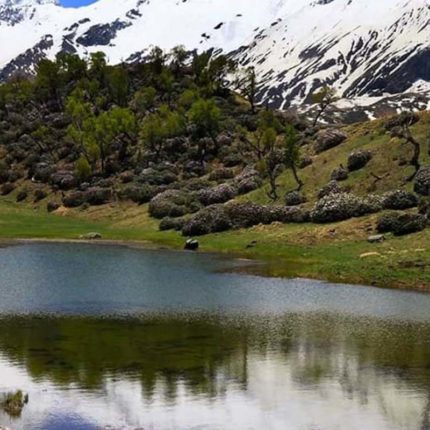
Ruinsara Tal Trek
Bamsaru Khal Trek a Lush Green Valley in Garhwal
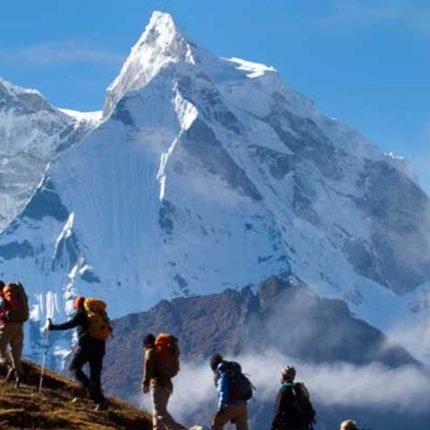
Indrahar Pass Trek
Awe- Inspiring Beauty of Indrahar Pass
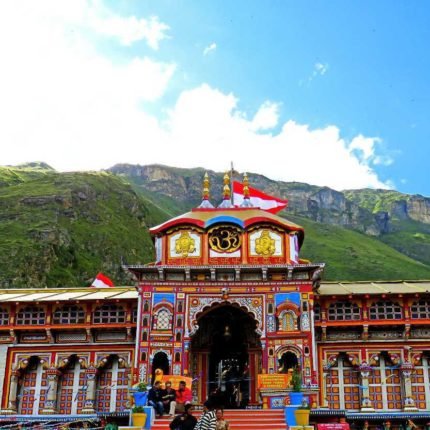
Badrinath Trek
Kedarnath is a town in the State of Uttarakhand Himalayas in India
Price: ₹ 9,000.00
Book the tour
Send a quick enquiry.
- Overview Itinerary Dates Include/Exclude
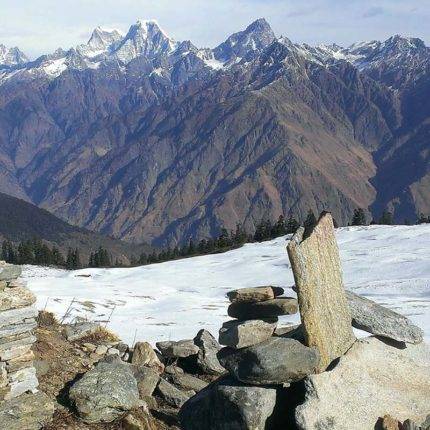

- Trekking & Travel Events
- Travel Organizations
- Himalayan Treks
- Maharashtra Treks
- Karnataka Treks
- Travel Guides
- Weekend Getaways
- Trekking Tips & Advice
Kuari Pass: Ultimate Trek Guide 2024
- Trekking Destinations
Table of Contents
Introduction
The Kuari Pass Trek also known as “the Lord Curzon trail” , is an exhilarating adventure that takes you through the breathtaking landscapes of the Himalayas. Nestled in the Garhwal region of Uttarakhand, India, this trek offers a mesmerizing experience for nature lovers and adventure enthusiasts.
In this article, we will delve into the details of the trek, including its scenic beauty, difficulty level, the best time to visit, trek itinerary, safety measures, and much more.

- Max Altitude: 12,516 Ft. (3,815M)
- Average Trekking Fees: INR 7000 – INR 12,000
- Distance: 32 - 35 kms
- Difficulty: Easy-Moderate
- Duration: 5-6 days
- Ideal For: Both First Time & Experienced Trekkers
- Best Season: October – March
- Region: Uttarakhand
Overview of Kuari Pass Trek
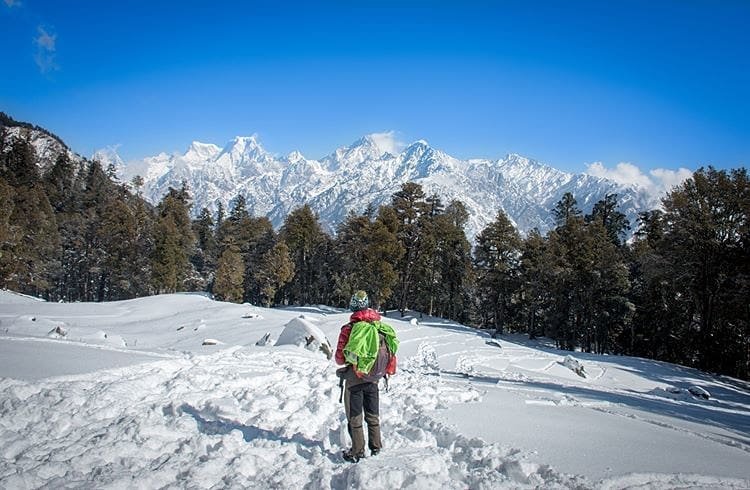
The Kuari Pass Trek is a popular trail that spans approximately 33 kilometers . Situated at 3,800 meters, it offers panoramic views of the surrounding peaks, including Nanda Devi, Dronagiri, Kamet, and Trishul.
The trek usually starts from the picturesque village of Joshimath and takes you through dense forests, charming meadows, and snow-clad landscapes.
The Scenic Beauty
As you go on this trek, you’ll be mesmerized by the stunning natural beauty that unfolds before your eyes. The trail takes you through enchanting rhododendron and oak forests, where you can witness various flora and fauna.
The vibrant colors of the wildflowers, such as primroses and blue poppies, paint a picturesque canvas against the backdrop of snow-capped peaks.
The serene meadows of Gorson Bugyal and Tali Top offer breathtaking views of the Himalayas, making it a photographer’s paradise.
Kuari Pass Trek Difficulty Level
The Kuari Pass Trek is moderately difficult and suitable for both beginners and experienced trekkers . The trail involves a gradual ascent, allowing trekkers to acclimatize to the high altitude.
However, it is essential to maintain a good level of fitness and stamina as the trek involves walking for several hours each day.
Prior trekking experience is not mandatory, but regular exercise and cardiovascular training will enhance your trekking experience.
Best Time to Visit Kuari Pass Trek
The best time to go on this trek is from April to June and September to November . During these periods, the weather is pleasant, and the clear skies offer magnificent views of the surrounding peaks. The months of April and May bring the blossoming of rhododendrons, adding a vibrant touch to the landscapes. Avoid trekking during the monsoon season (July and August) due to heavy rainfall and the risk of landslides.
One can else do the trek in the months of December – February to enjoy the snowfall and see the winter wonderland.
Cost and Budgeting for Kuari Pass Trek
The cost of the trek can vary depending on various factors, such as the duration of the trek, accommodation choices, and transportation. The trek costs range from INR 8,000 to INR 12,000 +GST per person , including meals, accommodation, permits, guide charges, and equipment rental.
It is advisable to book through a reputable trekking agency that provides experienced guides and ensures safety standards.
How to Reach Kuari Pass
To reach the starting point of the Kuari Pass Trek, you need to reach Joshimath, a town in the Chamoli district of Uttarakhand. Joshimath is well-connected by road from major cities like Delhi, Dehradun, and Haridwar.
The nearest airport is Jolly Grant Airport in Dehradun, and the railway station is Rishikesh. You can hire a local taxi or take a shared cab from Joshimath to reach the trek starting point0
Kuari Pass Trek Itinerary
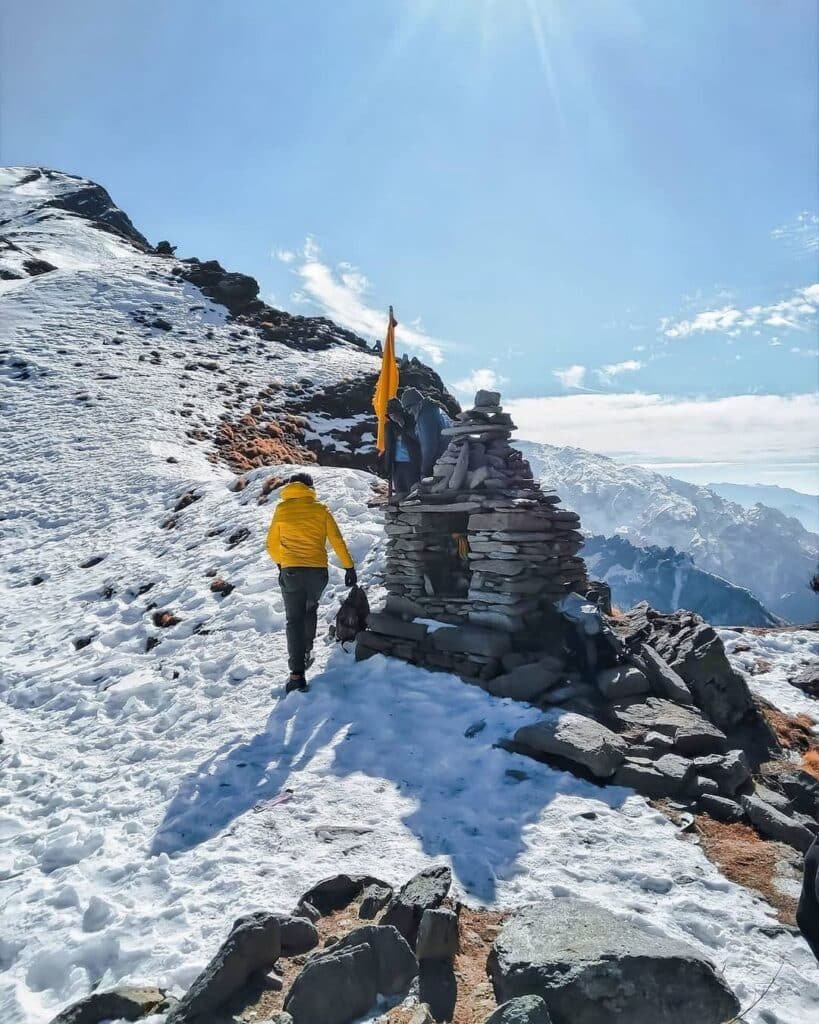
Day 1: Arrival in Joshimath, Acclimatization, and Orientation
Upon your arrival in Joshimath, a picturesque town in the Chamoli district of Uttarakhand, you will be greeted by the stunning vistas of the Garhwal Himalayas. Joshimath is the base camp for the Kuari Pass Trek, and you will spend the first day acclimatizing to the high altitude and getting oriented for the upcoming adventure.
After checking into your accommodation, you can stroll through the town, exploring the local markets and soaking in the serene atmosphere. You should visit the famous Narasimha Temple, which holds great religious significance for the locals. Take this day to relax, adjust to the altitude, and prepare yourself physically and mentally for the trekking experience ahead.
Day 2: Joshimath to Auli (Drive) and Auli to Tali Top (Trek)
On the second day, you will go on your trekking journey. After an early morning breakfast, you will drive from Joshimath to Auli, a beautiful ski resort renowned for its panoramic views of the Nanda Devi and Kamet peaks. The drive to Auli is approximately 15 kilometers and takes about an hour.
Upon reaching Auli, you will start your trek toward Tali Top, which is situated at around 11,070 feet (3,375 meters) above the tree line. The trail winds through lush meadows and enchanting oak and rhododendron forests and offers breathtaking views of the surrounding snow-capped peaks. It takes around 4-5 hours to reach Tali Top, where you will set up your camp for the night.
Day 3: Tali Top to Khulara (Trek)
After a rejuvenating night’s sleep amidst the tranquil surroundings of Tali Top, you will continue your trek toward Khulara. The trail gradually ascends, offering awe-inspiring views of the Himalayan ranges, including Mt. Nanda Devi, Mt. Dronagiri, and Mt. Chaukhamba.
As you go through the enchanting landscape, you will come across pristine alpine meadows dotted with vibrant wildflowers during the summer months. After approximately 5-6 hours of trekking, you will reach Khulara, a scenic camping spot at about 12,516 feet (3,815 meters). Settle into your camp, enjoy a delicious meal, and spend the night under the starry sky.
Day 4: Khulara to Kuari Pass (Trek) and Back to Khulara
The fourth day of the trek will be the most exhilarating as you make your way to the highlight of the journey, the Kuari Pass. After an early morning start, you will ascend through a steep trail, sometimes covered with snow, adding adventure to the experience.
Upon reaching the Kuari Pass, located at an altitude of approximately 12,516 feet (3,820 meters), you will be rewarded with breathtaking panoramic views of majestic peaks like Nanda Devi, Kamet, Chaukhamba, Trishul, and Dronagiri. Take time to soak in the awe-inspiring scenery, capture memorable photographs, and relish the sense of accomplishment.
After spending some time at the pass, you will retrace your steps and descend back to Khulara, where you will spend the night in your camp, surrounded by the serene beauty of the Himalayan wilderness.
Day 5: Khulara to Auli (Trek) and Auli to Joshimath (Drive)
On the final day of the trek, you will bid farewell to Khulara and commence your descent towards Auli. The trail offers mesmerizing views of the snow-clad peaks and verdant valleys, making for a memorable journey. The trek from Khulara to Auli takes around 3-4 hours.
Upon reaching Auli, you will board the waiting vehicle for a scenic drive back to Joshimath. The drive offers a final opportunity to immerse yourself in the majestic landscapes and reflect on the incredible experiences of the past few days. Upon reaching Joshimath, you can rest, celebrate your successful trek, and reminisce about the mesmerizing sights you encountered.
Please Note: This is a general itinerary, which is followed by most of the trekking groups in India. However, there might be slight differences on the itinerary depending on the trekking group you opt to go with. Some groups also start from Dhak village about 12 kms from Joshimath
Highlights of the Kuari Pass Trek
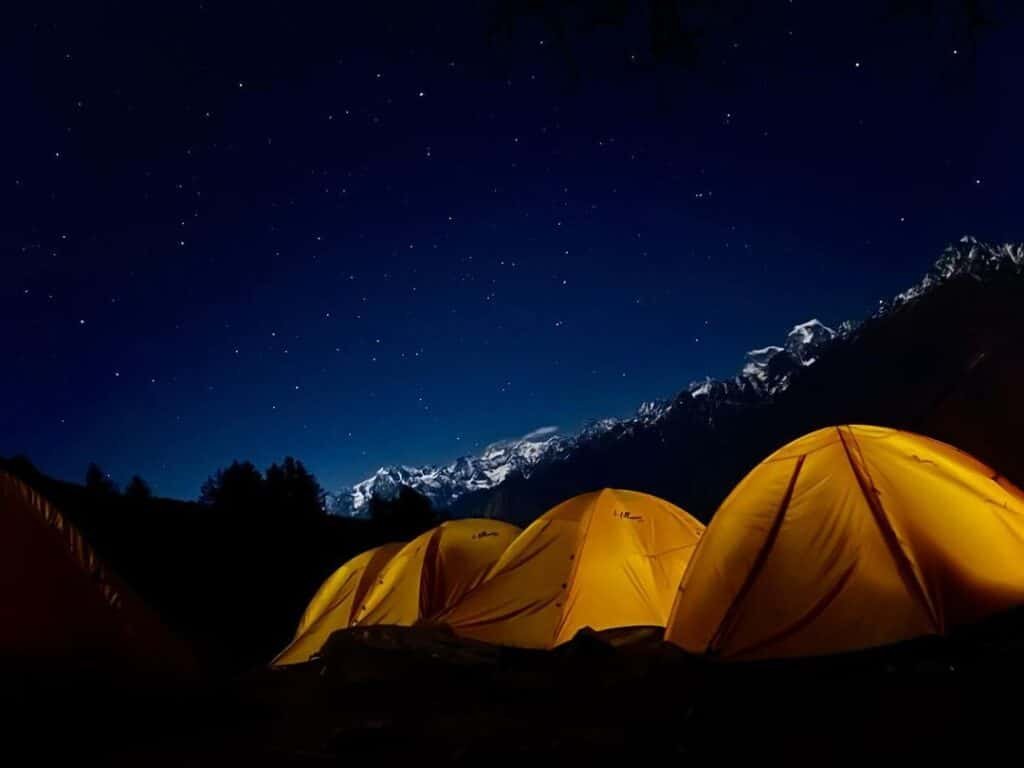
The Kuari Pass Trek is a spectacular journey through the Garhwal Himalayas, offering a multitude of highlights that leave trekkers in awe of their surroundings.
- Panoramic Himalayan Views: The trek provides breathtaking panoramic views of towering Himalayan peaks such as Nanda Devi, Kamet, Chaukhamba, Trishul, and Dronagiri. The snow-capped summits create a mesmerizing backdrop throughout the journey.
- Kuari Pass Summit: The high point of the trek is reaching the Kuari Pass, situated at an elevation of around 12,516 feet (3,820 meters). Standing at the pass, trekkers are rewarded with a jaw-dropping 360-degree view of the surrounding peaks and valleys.
- Enchanting Campsites: The trek offers opportunities to camp in serene and picturesque locations. Camping amidst alpine meadows, surrounded by colorful wildflowers during the summer months, adds to the enchanting experience of the trek.
- Rich Biodiversity: The trail takes trekkers through lush forests of oak and rhododendron, showcasing the region’s rich biodiversity. Spotting exotic flora and fauna along the way, including vibrant Himalayan bird species, adds to the trek’s allure.
- Local Culture and Villages: Interactions with local villagers during the trek offer insights into the traditional mountain lifestyle and warm hospitality. Trekkers can witness the unique culture, architecture, and way of life of the Garhwal region.
- Scenic Beauty of Auli: The trek begins from Auli, a famous ski resort known for its stunning beauty and panoramic vistas. The meadows of Auli, adorned with vibrant flowers, create a picturesque setting at the start of the journey.
Exploring Nearby Attractions
After completing the Kuari Pass Trek, you can explore nearby attractions like Auli, a popular skiing destination, and Badrinath, one of the Char Dham pilgrimage sites. The Valley of Flowers National Park, known for its vibrant alpine flowers, is also a must-visit attraction in the region.
Are you finding this trek guide for the Kuari Pass trek useful?
We have 100s more such guides on similar off-beat experiences & we send out such guides, offers, hidden gems, and trekking destinations weekly via email. Subscribe to our newsletter to get them directly into your inbox.
Essential Gear and Equipment for the trek
Proper gear and equipment are crucial for a successful and comfortable trek. Here’s a checklist of essential items:
- Sturdy trekking shoes
- Trekking poles
- Warm clothing, including thermals, fleece jackets, and down jackets
- Raincoat or poncho
- Sleeping bag
- Water bottles and hydration system
- Headlamp with extra batteries
- Sunscreen lotion and sunglasses
- First aid kit
- Snacks and energy bars
Safety Measures and Precautions
While undertaking the Kuari Pass Trek, it’s important to prioritize safety. Here are a few safety measures and precautions to keep in mind:
- Acclimatize properly to the high altitude.
- Stay hydrated and carry water purification tablets.
- Follow the instructions of your trek leader or guide.
- Carry necessary medications and a first aid kit.
- Dress in layers to adapt to changing weather conditions.
- Be cautious while walking on steep or slippery terrain.
- Respect the local culture and environment.
Tips for a Successful Kuari Pass Trek
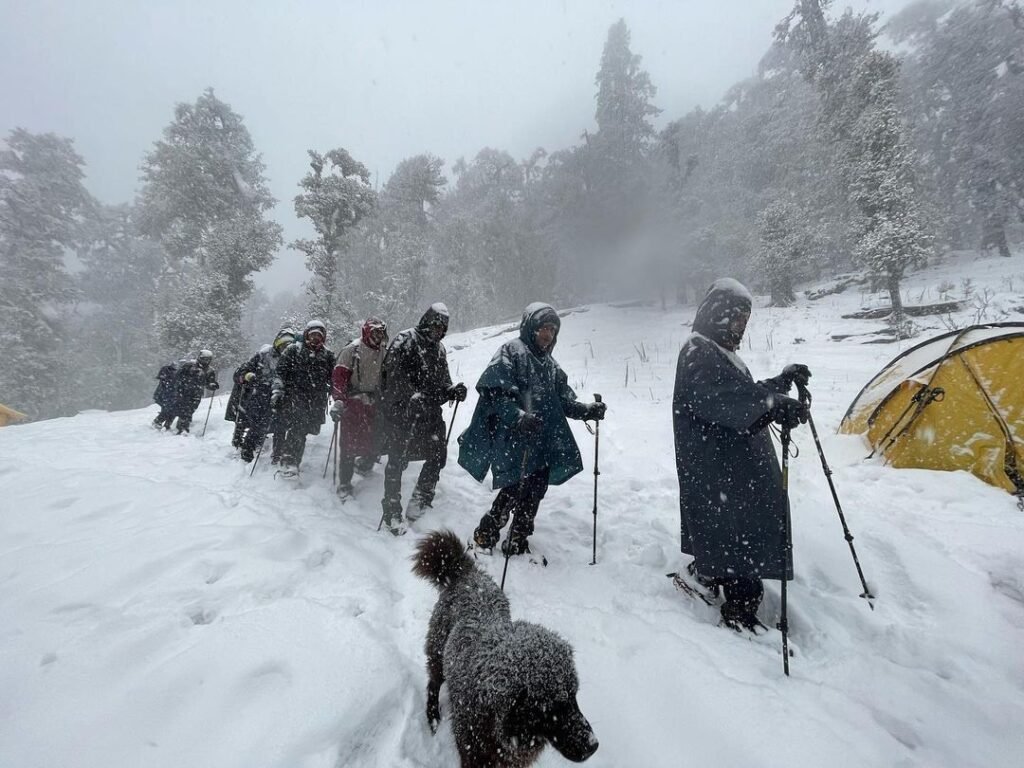
To make your Kuari Pass Trek memorable and enjoyable, here are some valuable tips:
- Start preparing and training your body at least a month before the trek.
- Carry sufficient cash, as ATM facilities might be limited in remote areas.
- Pack light and carry only essential items.
- Stay hydrated and consume a balanced diet during the trek.
- Engage with the local community and learn about their culture.
- Respect the environment and leave no trace of your presence.
- Enjoy the journey and embrace the challenges that come your way.
Commencing on the Kuari Pass Trek is an experience that will leave you awe-struck by the majestic beauty of the Himalayas. With its scenic landscapes, moderate difficulty level, and a chance to immerse yourself in nature, this trek is an ideal choice for adventure seekers. So, pack your bags, lace up your trekking shoes, and get ready to create memories that will last a lifetime.
Kuari Pass is famous for its panoramic views of the snow-capped Himalayan peaks, including Nanda Devi, Kamet, Chaukhamba, Trishul, and Dronagiri. It is also known for its alpine meadows, pristine forests, and enchanting campsites.
Yes, the Kuari Pass trek is considered moderately difficult. It involves trekking through varied terrains, including steep ascents, rocky trails, and sometimes snowy paths. Prior trekking experience and a good level of fitness are recommended to fully enjoy the trek.
Kuari Pass is located in the state of Uttarakhand, India.
Kuari Pass is situated in the Chamoli district of Uttarakhand, India.
Glimpses of the Kuari Pass Trek (Winter Trek Edition)
Video Credits: Ajay Panwar
Bhrigu Lake , Brahmatal Trek , Sar Pass Trek , Shrikhand Mahadev Trek , Buran Ghati Trek , Bali Pass Trek , Kareri Lake Trek , Rupin Pass , Tarsar Marsar Trek
- Uttarakhand
- No comments yet.
Add a comment
Leave a reply · cancel reply.
Your email address will not be published. Required fields are marked *
This site uses Akismet to reduce spam. Learn how your comment data is processed .
- Share via...

- Almora District
- Bageshwar District
- Chamoli District
- Champawat District
- Dehradun District
- Haridwar District
- Nainital District
- Pithoragarh District
- Pauri Garhwal District
- Rudraprayag District
- Tehri Garhwal District
Udham Singh Nagar
- Uttarkashi District
- Char Dham Yatra 2024
- Kartik Swami Temple
- Madhyamaheshwar Temple
- Kedarnath Dham
- Bansi Narayan Temple
- Bhavishya Badri Temple
- Narsingh Devta Temple
- Gopinath Temple
- Rudranath Temple
- Kalimath Temple
- Vishwanath Temple
- Kalinka Temple
- Kausani Hill Station
- Ranikhet Hill Station
- Kamal Tal Lake
- Sariyatal Lake
- Khurpatal Lake
- Chamba Hill Station
- Dhanaulti Hill Station
- Normal Trekking
- High Altitude Trekking
- Water Sports
- White water rafting
- Rajaji National Park
- Gangotri National Park
- Assan Barrage Bird Sanctuary
- Binsar Wild Life Sanctuary
- Jim Corbett National Park
- Nanda Devi National Park
- Valley of Flowers National Park
- Homestays in Uttarakhand
Use the form below to contact us directly.
Please complete all required fields.
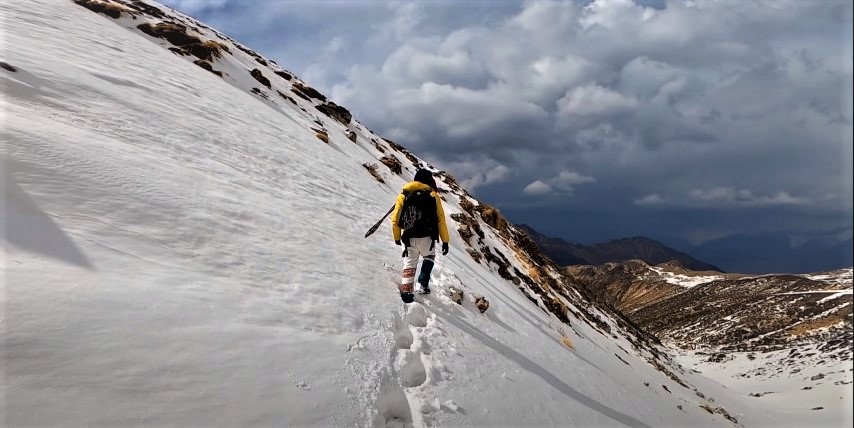
Kuari Pass Trek – One of the Popular Treks in Chamoli
The Kuari Pass Trek also known as Lord Curson Trail is a popular and scenic trekking route located in the Chamoli Garhwal district of Uttarakhand state, India. The trek takes you through lush green forests, scenic meadows, and beautiful Himalayan authentic villages, offering breath-taking views of the snow-capped peaks of the Garhwal Himalayas.
There are basically 4 different trek routes to Kuari pass, the most common trek starts from the Ghat village of Joshimath and takes around 5-6 days to complete. The highest point of the trek is the Kuari Pass, located at an altitude of over 12,000 feet, which offers stunning panoramic views of the surrounding peaks such as Nanda Devi, Dronagiri, Kamet, Hati-Ghoda Parvat, Keelkanth, Rishi Pahad and Trishul etc.
In terms of difficulty level, Kuari Pass Trek is a moderate-level trek and is suitable for beginners as well as experienced trekkers. The trek takes you through a variety of landscapes, from dense forests to wide-open meadows, and offers ample opportunities to spot local flora and fauna such as oak trees, Deodar Trees, rhododendrons, and Himalayan black bears.
Along the way, you will also get to visit traditional Himalayan villages and interact with the locals, giving you an insight into their culture and way of life. The trek also includes camping in tents and staying in homestays, adding to the adventure and authenticity of the experience.
Overall, the Kuari Pass Trek is a must-do for any adventure seeker visiting Uttarakhand. The trek offers a unique combination of stunning natural beauty, cultural immersion, and adventure, making it a memorable experience for anyone who embarks on it.
Things to explore in Kuari Pass Trek | Activities to do in Kuari Pass Trek
The Kuari Pass trek offers a variety of activities that you can enjoy during your trekking expedition. Here are some of the popular activities that you can do during the Kuari Pass trek:
Trekking - Trekking is the main activity of the Kuari Pass trek. The trek offers stunning views of the Himalayas and the surrounding landscape, making it an unforgettable experience.
Camping in Kuari Pass Trek - the Kuari Pass trek offers numerous camping opportunities. You can pitch your tent in the meadows and enjoy the beauty of the Himalayas under the stars.
Photography - The Kuari Pass trek offers many opportunities for photography enthusiasts to capture stunning shots of the Himalayas, meadows, forests, and wildlife. You will love to click some shots of highest peaks including Nanda Devi, Dronagiri, Kamet, Hati-Ghoda Parvat, Keelkanth, Rishi Pahad and Trishul etc.
Birdwatching in Kuari Pass Trek - The forests and meadows on the Kuari Pass trek are home to a variety of birds, including the Himalayan monal, the snow partridge, golden eagle and other Himalayan birds. Birdwatching is a popular activity on the trek.
Wildlife spotting - The Kuari Pass trek offers opportunities to spot some of the rarest wildlife species in the Himalayas, including the snow leopard, musk deer, and Himalayan black bear.
Village Tourism and interacting with local - During the trek, you'll come across many small villages where you can interact with the local people and learn about their way of living pahadi life, culture, and traditions of Uttarakhand. You can also stay there for a day or two to refresh yourself in Authentic Himalayan Nature.
Overall, the Kuari Pass trek offers a wide range of activities that can make your trekking experience truly memorable.
Places to Explore near Kuari Pass Trek | Famous Tourist Attractions near Kuari Pass
The Kuari Pass trek is located in the Garhwal region of Uttarakhand, India, which is known for its natural beauty and cultural heritage. The trek takes you through lush green forests, scenic meadows, and beautiful Himalayan authentic villages, offering breath-taking views of the snow-capped peaks of the Garhwal Himalayas. Here are some of the popular places to explore near the Kuari Pass trek:
Auli Hill Station - Auli is a popular skiing destination located near the Kuari Pass trek. The town offers stunning views of the Himalayas and has some of the best ski slopes in India.
Badrinath Dham - Badrinath is a holy town located on the banks of the Alaknanda River, about 62 km from the Kuari Pass trek. The town is home to the famous Badrinath temple, one of the four sacred shrines in Hinduism.
Valley of Flowers National Park - The Valley of Flowers National Park is a UNESCO World Heritage Site located near the Kuari Pass trek. The park is known for its stunning alpine flowers, including Himalayan blue poppies, Himalayan cobra lilies, and Himalayan bellflowers.
Hemkund Sahib - Hemkund Sahib is a holy shrine located near the Kuari Pass trek. The shrine is dedicated to Guru Gobind Singh, the tenth Sikh guru, and is located at an altitude of 4,632 meters.
Nanda Devi National Park - Nanda Devi National Park is a UNESCO World Heritage Site located near the Kuari Pass trek. The park is known for its stunning landscapes and is home to rare wildlife species, including snow leopards, Himalayan black bears, and musk deer.
Joshimath Town - Joshimath is a small town located near the Kuari Pass trek. The town is a popular starting point for many treks in the Garhwal region and is home to the famous Shankaracharya temple.
Kuari Pass trek offers many opportunities to explore the natural beauty and cultural heritage of the Garhwal region of Uttarakhand, making it a truly unforgettable experience.
Tour Itinerary
Day wise kuari pass trek route full information | day wise itinerary to kuari pass trek.
Kuari Pass Trek is one of the most popular trek among trekkers in Garhwal Region, Uttarakhand. The Kuari Pass trek is of moderate difficulty level, it is one of the best treks for adventurers and first-timers to gain some experience . There are 4 different trek routes to Kuari pass, the most common trek starts from the Ghat village. Here's a day-wise guide for the Kuari Pass trek:
Total Trek Distance of Kuari Pass Trek is 60km
Day 1: Rishikesh to Joshimath/Dhak Village (7-8 hours drive) : Start your trip early morning to Joshimath which is 251km approx. from Rishikesh. It usualy takes 7 to 8 hours’ drive to reach. Another option is to use Local Transport like Govt. buses (Limited) or Share taxi. You can stay in Dhak Village also, which is around 10 km from Joshimath.
Day 2: Joshimath/Dhak Village to Guling (11 km, 6-7 hours). If you are staying in Joshimath then drive to Dhak Village to start your trek. The trek from Dhak Village to Guling is a gradual ascent through the forest, with a few steep sections. The trail passes through beautiful meadows and offers stunning views of the surrounding peaks.
Day 3: Guling to Khullara (7 km, 4-5 hours ) the trek from Guling to Khullara is a moderate ascent, and the trail passes through dense forests and beautiful meadows. The campsite at Khullara is located in a beautiful meadow and offers stunning views of the surrounding peaks.
Day 4: Khullara to Kuari Pass and back to Khullara (12 km, 8-9 hours) This is the most challenging and rewarding day of the trek. The trek from Khullara to Kuari Pass is a steep ascent, but the views from the pass make it all worth it. You can see some of the highest peaks of the Garhwal Himalayas, including Nanda Devi, Dronagiri, Kamet, and Trishul. After spending some time at the pass, you trek back to the Khullara campsite.
Day 5: Khullara to Dhak Village (18 km, 8-9 hours) the trek from Khullara to Dhak Village is a long descent through beautiful forests and meadows. The trail passes through a few traditional villages, and you can interact with the locals and get a glimpse of their way of life.
Day 6: Dhak Village to Rishikesh (7 to 8 hour drive) Drive back to Rishikesh with sweet memoires of Kuari pass Trek
This is a general itinerary and may vary depending on the tour operators, government instructions and weather conditions. It's important to consult with your tour operator and be well-prepared for the trek to ensure a safe and enjoyable experience.
How to Reach
Location and how to reach kuari pass trek.
Location : Chamoli Garhwal District, Uttarakhand
Nearest Railway Station to Kuari Pass Trek : 261km, Rishikesh Railway Station
Nearest Airport to Kuari Pass Trek : 275km, Jolly Grant Airport, Dehradun
Total Trek Distance of Kuari Pass Trek is 60km approx. and is covered with in 5 to 6 days.
Best Time to Visit
Best time to visit kuari pass trek | best time to explore kuari pass trek.
The best time to visit the Kuari Pass trek is between April to June and September to November . During these months, the weather is pleasant and the skies are clear, providing spectacular views of the surrounding peaks and valleys.
In the summer months from April to June, the weather is mild, with temperatures ranging between 10°C to 20°C during the day and 5°C to 10°C at night. The meadows are in full bloom, and the forests are lush green, making it an ideal time for photography and birdwatching.
In the post-monsoon months from September to November, the weather is cool and dry, with temperatures ranging between 5°C to 15°C during the day and -5°C to 5°C at night. The skies are clear, offering stunning views of the snow-capped peaks, and the forests turn into a vibrant display of autumn colours.
The winter months from December to March are not recommended for the Kuari Pass trek, as the region experiences heavy snowfall and the temperatures can drop below freezing point. However, if you are an experienced trekker and are looking for a challenging trek and thrill, you can opt for the winter trek, which offers a different kind of adventure altogether.
During Monsoon in July and August month, Trek gets difficult and slippery, chances of landslides increases, conditions becomes worst, so it’s recommended to skip. Still if you are planning, be update with weather and road conditions.
Inclusions & Exclusions
Inclusion
- During the trek, there will be places to stay in Camps or Tents (Camping)
- At Trek, all meals will be provided ( Healthy Food)
- At Camps, Bonfire will be provided according to weather conditions.
- For the Trek, there is fees for trekking permits and forest campsites.
- Trekking Supplies (Tents, Sleeping Bags, Ice Axes, Ropes, etc.)
- Expert Trek Leaders will there to Guide (Certified in basic/advanced mountaineering courses)
- A skilled trek crew (Guides, Chefs, Assistants, porters/mules) is available.
- Protective Gear (First Aid Kit, Medical Kit, Oxygen cylinders (if necessary), stretcher, etc.)
- Trek Certificate for Completion.
- Basic Survival Techniques in forest by using natural resources etc.
- GST (Service Tax)
- Offloading Fees for Backpacks (Rs.250 Per day/Per bag)
- Food on the way to Base and from Pick and Drop
- Offloading fees for backpacks (Rs. 250/day/bag)
- Anything not mentioned in Inclusion
- Any personal Expense
Cancellation Policy
At the time of booking, full payment is required.
For the Cancellation due to any reasons, Uttarakhand Guide must be notified of the same in writing at [email protected] . At the time we receive your written cancellation statement, refunds policies will be applicable according to following conditions:
Cancellation before 30 days from the start of Trip
10 % will be deducted from total
Cancellation between 21 to 30 Days from start of Trip
35 % will be deducted
Cancellation between 10 to 21 Days from start of Trip
50 % will be deducted
Cancellation less than 10 days from start of Trip
No amount will be refunded
Note : After the cancellation date, the refund will be handled within 10 working days.
Cancellation fees will be determined based on the total trip cost, and they may vary depending on the date of departure and the date of cancellation.
There will be no refunds:
- For any missed/unused tour services, including meals, owing to any reason.
- If the tour's services are changed, altered, revised, cancelled, or not used.
- If a customer cancels or is forced to cancel the tour due to changes in the itinerary or travel
- If the consumer is dissatisfied with any of the operator's services
Top Destinations

Uttarkashi, kashi of north is situated on the banks of river Bhagirathi at an altitude of 1158 m above sea level.
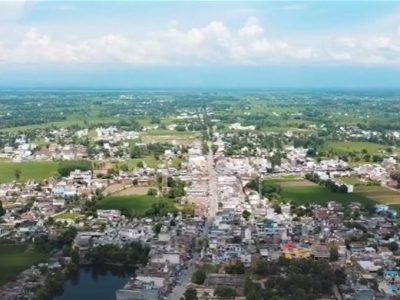
Udham Singh Nagar is a district located in the state of Uttarakhand in Kumaon Region, India. It was carved out of the Nainital district and came into existence on 30th September 1995.
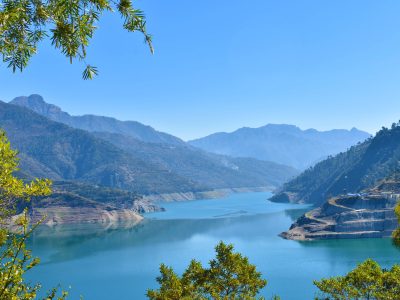
Tehri Garhwal
Tehri Garhwal District, located in the state of Uttarakhand, India, is a mesmerizing region renowned for its natural beauty, spiritual significance, and cultural heritage.
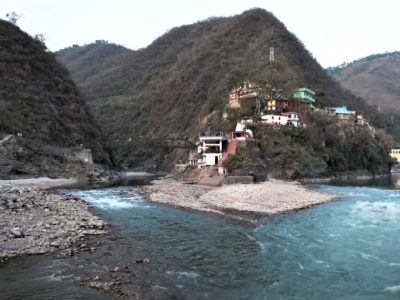
Rudraprayag
Rudraprayag is a picturesque town located in the Rudraprayag district of Uttarakhand, India. It holds significant religious and cultural importance as it is situated at the confluence of two sacred rivers, Alaknanda and Mandakini.

Pithoragarh
Nestled in the eastern reaches of the picturesque Kumaon region, Pithoragarh stands as a breathtaking district in the scenic state of Uttarakhand, India.
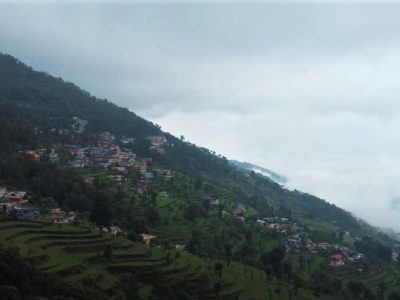
Pauri Garhwal
Pauri Garhwal District, situated in the breathtaking state of Uttarakhand, India, is a hidden gem that offers a soul-stirring experience for tourists seeking a blend of natural beauty, spiritual serenity, and cultural heritage.
Discover Uttarakhand
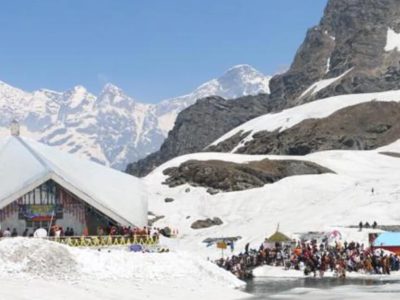
Pilgrim’s body recovered day after avalanche
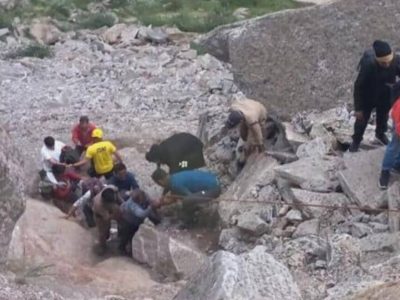
Over 180 Adi Kailash pilgrims rescued from landslide-hit road stretch
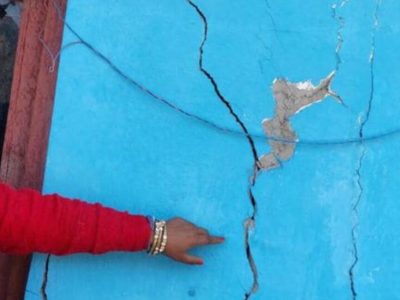
Monsoon sparks apprehensions of further geological instability in Joshimath
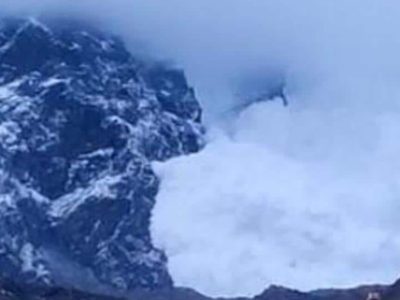
Massive avalanche hits mountains around Kedarnath Temple
Trending tourist places.
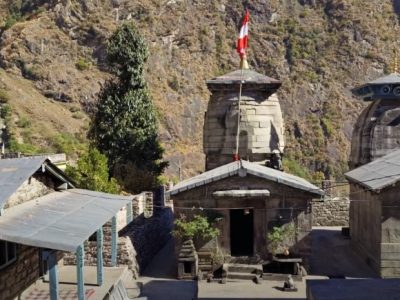
Yogdhyan Badri Temple – Chamoli, Uttarakhand
Yogdhyan Badri is one of the sacred Panch Badri temples located in the picturesque state of Uttarakhand, India. Situated amidst…
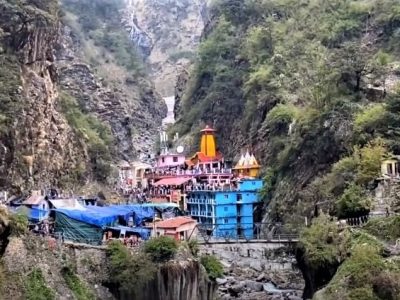
Yamunotri Dham Travel Guide 2024
Yamunotri Dham is one of the four sacred sites, collectively known as Chota Char Dham, which are located in the…
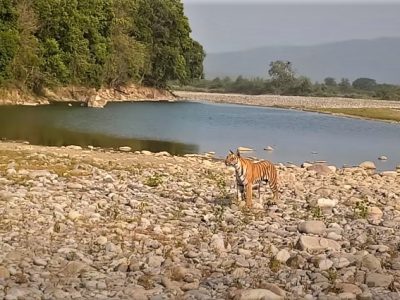
Wild Life Safari in Uttarakhand
The state is home to several national parks and wildlife sanctuaries, providing a chance to observe a wide range of…
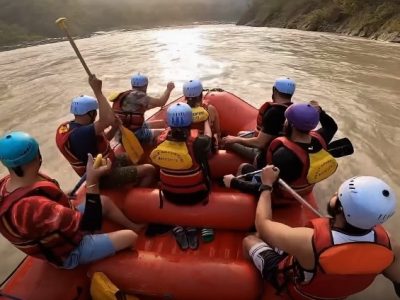
White Water Rafting
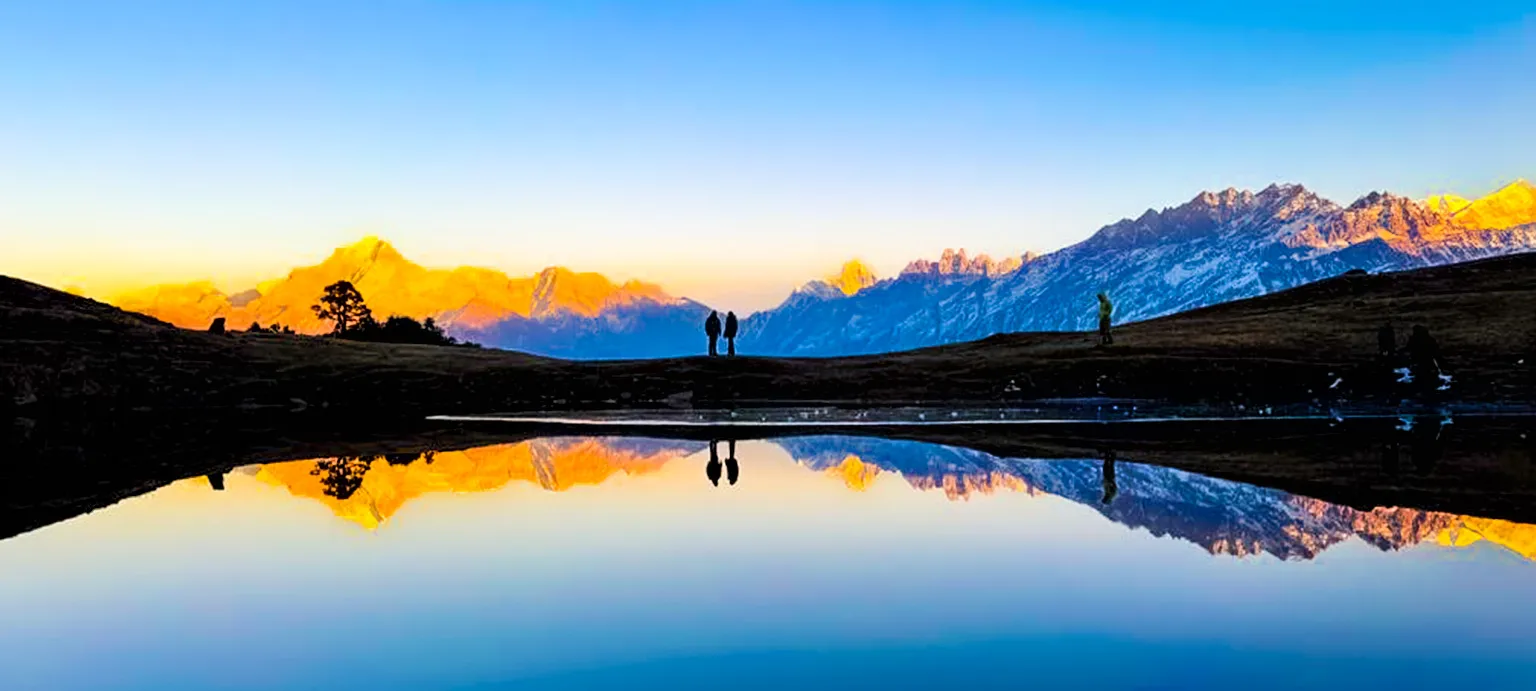
Winter Kuari Pass Trek
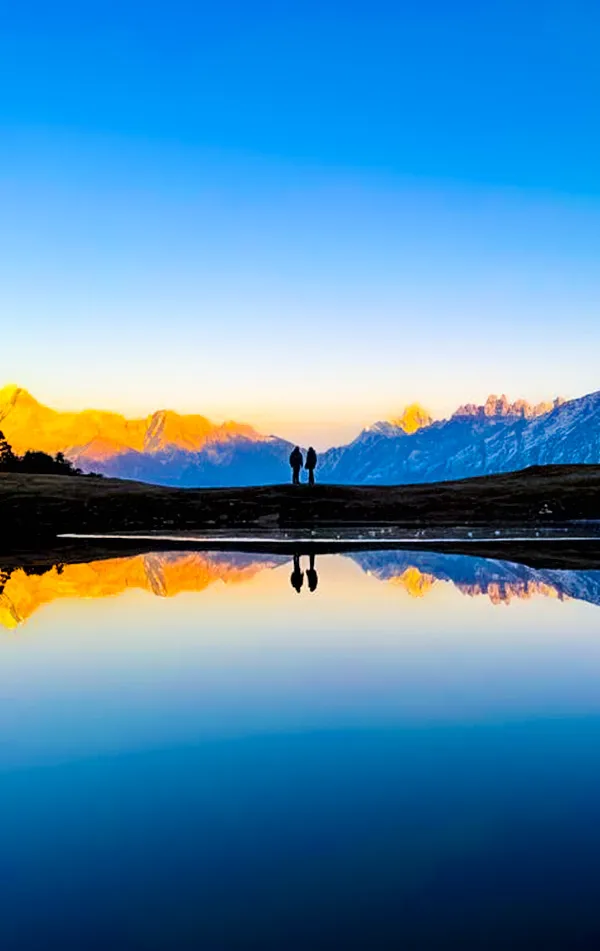
Uttarakhand |
Uttarakhand | India
Max Altitude
Trekking Km
Help & Support
9500 /person $ /person.
- October-2024
- November-2024
- December-2024
- January-2025
- +5% GST (goods and services tax).
- Services Pipalkoti Pipalkoti.
Insurance 210
Insurance is Mandatory.
Non-Indian rates are slightly higher. Trek coordinator will provide balance payment link post-booking.
- Get insurance through us or elsewhere. If not through us, email for a refund after booking.
Cancellation 4 or more days before the start of the trip results in a 100% cash refund.
Cancellation less than 4 days from the start of the trip results in no refund.
Transport 1600
Transportation Rishikesh to Pipalkoti & retun is optional
Choose add-ons during booking. If missed, log in and add them later
Book transportation at least 10 days before the trek.
Cancellation less than 4 days from the start of the trip results in a 50% cash refund.
Cancellation after the trip date does not qualify for a refund.
Offload 1200
Backpack offload is optional
Choose add-ons during booking. If missed, log in and add them later.
Book off-load at least 10 days before the trek.
For offline bookings at the base camp, a convenience fee of Rs. 1800 applies.
Cancellations made before the trip date will receive a full refund.
For more information. Please complete this form.
Help & Support
Trek Name: Winter Kuari Pass Trek
Adventure Type: Trekking
Base Camp: Pipalkoti
Season: Spring | Winter |
Month: January | February | March | April | November | December |
Country: India
Altitude: 12750 Ft.
Grade: Moderate
Rail Head: Haridwar/Rishikesh is the nearest rail head to the base camp
Stay: Camping (Twin sharing) & Hotel/Guesthouse
Food: Meals while on trek & at Hotel/Guesthouse (Veg & Eggs)
Location: Uttarakhand
Distance: 33 Km.
Trail Type: Circle trail | Camping in various locations, starting and ending at the same point.
AirPort: Jolly Grant Airport, which is 21 km away from Rishikesh
The Winter Kuari Pass Trek is a mesmerizing high-altitude adventure in the Indian state of Uttarakhand. It is renowned for its breathtaking vistas of the Garhwal Himalayas, including the Nanda Devi, Dronagiri, and Kamet peaks. This winter trek offers a unique experience for trekkers, allowing you to explore the Himalayas in their snow-covered splendor. All along the trek mountain views keep you company as you immerse yourself in the wintry charm of the Himalayas. The best thing about this trek is that its moderate grade allows both seasoned trekkers as well as fit beginners to embark on the journey.
The Winter Kuari Pass Trek is an extraordinary journey that allows you to immerse yourself in the snowy beauty of the Himalayas. It combines the natural grandeur of the mountains, cultural immersion, and the thrill of high-altitude trekking, making it a memorable and transformative experience.
The Breathtaking Views from Kuari Pass
The main attraction of the trek, of course, is standing atop Kuari Pass. From the pass, you get an unrivalled view of the Himalayan Ranges that encircle you all around. The Dronagiri Parvat is the most prominent along with Hathi and Gauri Parvat, Nanda Devi, and several other Himalayan peaks.
Suitable for Beginners
While the views from Kuari Pass rival those from more challenging treks, the trail itself is relatively accessible, making it an excellent choice for novice trekkers. The well-defined path and gradual elevation gain provide an ideal introduction to high-altitude trekking.
Varied Terrains
The trek offers a diverse range of landscapes, from dense rhododendron forests to open meadows and high-altitude alpine zones. This variety keeps the trek interesting and engaging for trekkers who appreciate the changing scenery.
Sunset Views
The sunset view on this trek is unlike any other. Witness the last rays of the sun casting a golden glow over the Dronagiri Parvat making it appear as made of molten gold. It is such a surreal sight to watch and will last in your memory forever.
A Scenic Descent
As we descend through the route via Gorson Bugyal and Auli, the view of Mt. Nanda Devi becomes prominent. You get close-up views of the tallest mountain in India, which is a wonderful experience. Also, you will descend via the vast Gorson Bugyal - a snowy expanse surrounded by high mountains and the charming snow-draped town of Auli. Keep your cameras on the ready as the views are simply mesmerizing.
- Who can Participate
- Important Links
- How to Reach
- Trek Essential
Who Can Participate
- Age; 12 years +.
- First timers can apply; previous trekking experience is more appreciated.
- The climber must be fit and have sufficient stamina to cover 5 km of distance in 35 minutes without stress.
- The climber should be able to carry a 10-15 kg backpack.
Rishikesh to Pipalkoti
- Altitude: 1,500m/4,950ft.
- Drive Distance: 200 km | 9-10 hours.
- Trekkers will be picked up from the Rishikesh TTH office at 6:00 am in a Tata Sumo or a similar vehicle (cost is not included).
- Arrive at Pipalkoti approx by 5 pm – (tea, briefing of the trek & dinner).
- Breakfast and Lunch on the way (exclusive of charges).
- Accommodation at the guest house.
- Telephone Network- Available.
You will begin your journey with us from Rishikesh. Starting the drive from Rishikesh from the appointed pickup point (Rishikesh TTH office), we will take the fabled Badrinath Road.
If you are enthusiastic about cultural sightseeing and adventure water sports, you may like to arrange a brief stay at Rishikesh.
The 9 hour drive to Pipalkoti will surely be long and arduous, but you are never going to run out of mesmerizing views. The great river running with us on parallel will get wilder and more fascinating as we trudge uphill. We will be passing by the panchprayag or the five holy confluences of Ganga—Devaprayag, Rudraprayag, Karnaprayag, Nandaprayag, and Vishnuprayag.
So, keep your cameras on the ready and remain awake for most of the journey!
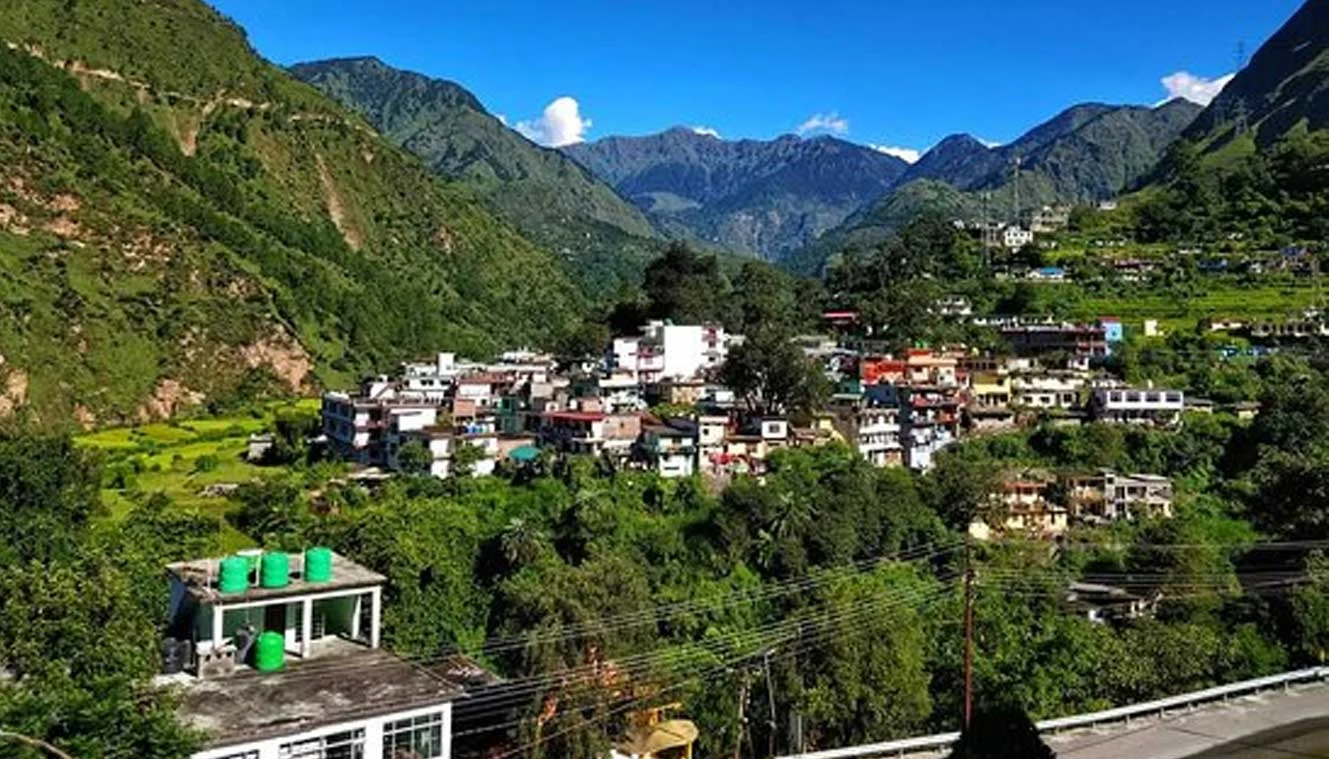
Pipalkoti – Gulling Top
- Altitude: 2,750 m/ 9,000 ft.
- Drive Distance (Pipalkoti-Tugasi): 50 km | 2-3 hrs.
- Trek Distance: 3km | 2-3 hrs.
- The trail is a mix of steep and gradual ascent, mostly through villages.
- Hot lunch at campsite.
- Water Points- Available at villages in passing.
- Accommodation in a tent.
- Peaks spotted: Dronagri, HathiParvat, GoriParvat.
A host of ice peaks will greet us at Pipalkoti. After an early breakfast on this day, we will head off to Tugasi village, a rocky drive of 2-3 hrs.
The trek flags off from Tugasi along a steady ascent . The terrain is mostly rough here. Leaving out the terrace farming lands, there is no affluence of greenery, but offers a sweeping view of the Garhwal frontier all around. Look out especially for the bright silvery sun-dazed stream of Dhauli-Ganga snaking it way in the abyss, and the Vishnugad-Tapovan Hydroelectric Power Station. You are not likely to find any snow in this zone.
Continue on this path, maintaining a steep climb, leaving the farmland behind and you will find the awe-inspiring sight of Dronagiri peak hauntingly rising at a distance. We will be pitching tents in the open meadows og Gulling camp overlooking Dronagiri and fringed around with oak forests. Along with Dronagiri, you can also get views of Hathi Parvat and Gauri Parvat.
The sunset from Gulling campsite is especially beautiful. Also, brace up for a mesmerizing vista of the Dronagiri peak caught in the shimmer of morning light from this camp site the next dawn.
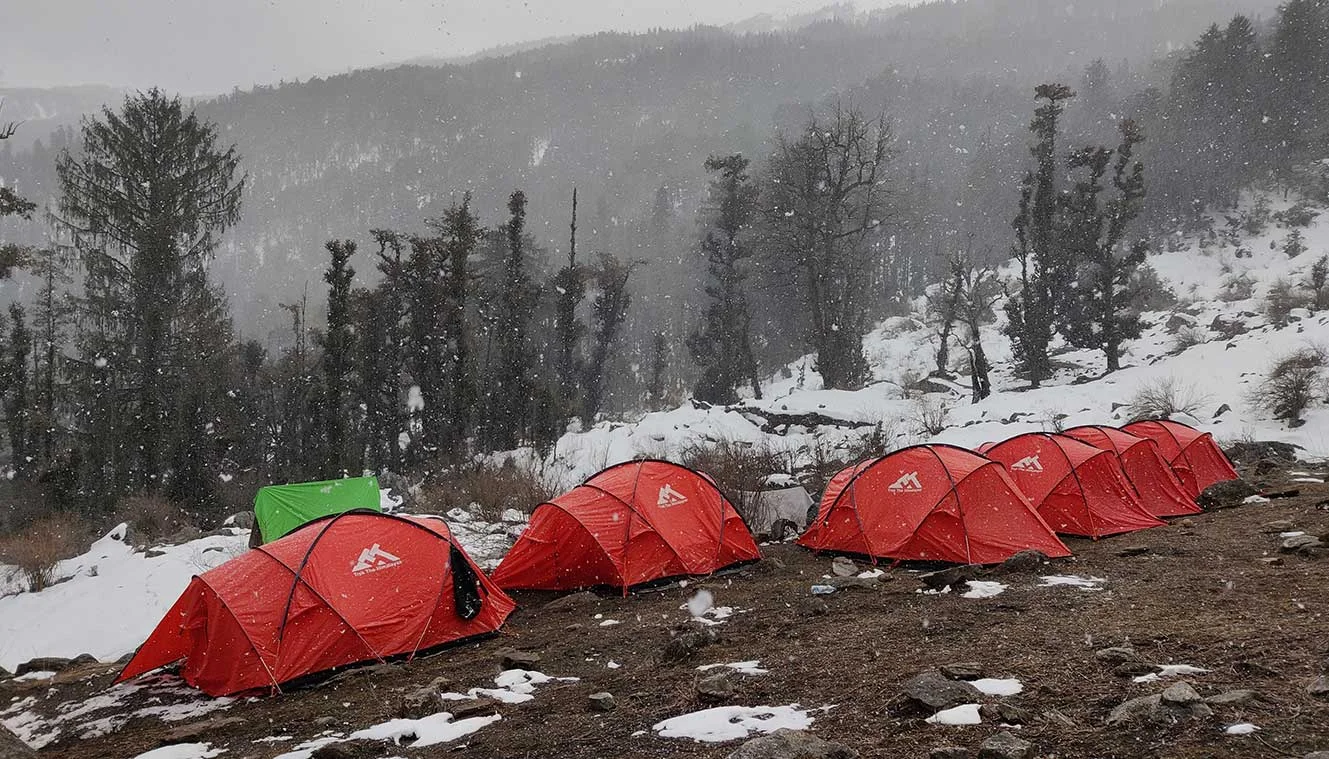
Gulling Top to Tali Forest Camp
- Altitude: 3,350 m/ 11,100 ft.
- Trek Distance: 5 km | 4-5 hrs.
- Altitude Gain: 600m/ 2,100ft.
- Oak, Rhododendron (mostly pink and white), walnut forest.
- Accommodation in a tent.
- Peaks:- Nanda Devi, Kalanka, Chang Bang, Dronagri, Hathi Parvat, Gori Parvat.
Wake up in time next morning to start on a 5 hour journey deeper into the forest of Talli. After the exacting climb of last day, the trek today will be less arduous. The gradients of ascent is relatively smooth and will allow you an enjoyable hike.
Twenty minutes into the trek, you will come to a green clearing overlooking the magnificent snow peaks. After a few moments of rest, the climb must continue crossing a little stream to enter a mixed forest slowly thickening with oaks and rhododendrons. If you are coming in late March you might still find some white and pink blossoms. Except for rhododendrons, you can find walnut and some other varieties of conifers here.
At the height of winter’s splendour, you can find everything in the forest coated with a cover of snow. In the thickening snow, light, and shade of the conifer forests of Gulling, your second camp on the trek will be pitched.
Along this path, the Hathi-Ghori peaks will be manifesting gloriously along with Dronagiri now somewhat flipped to the side.
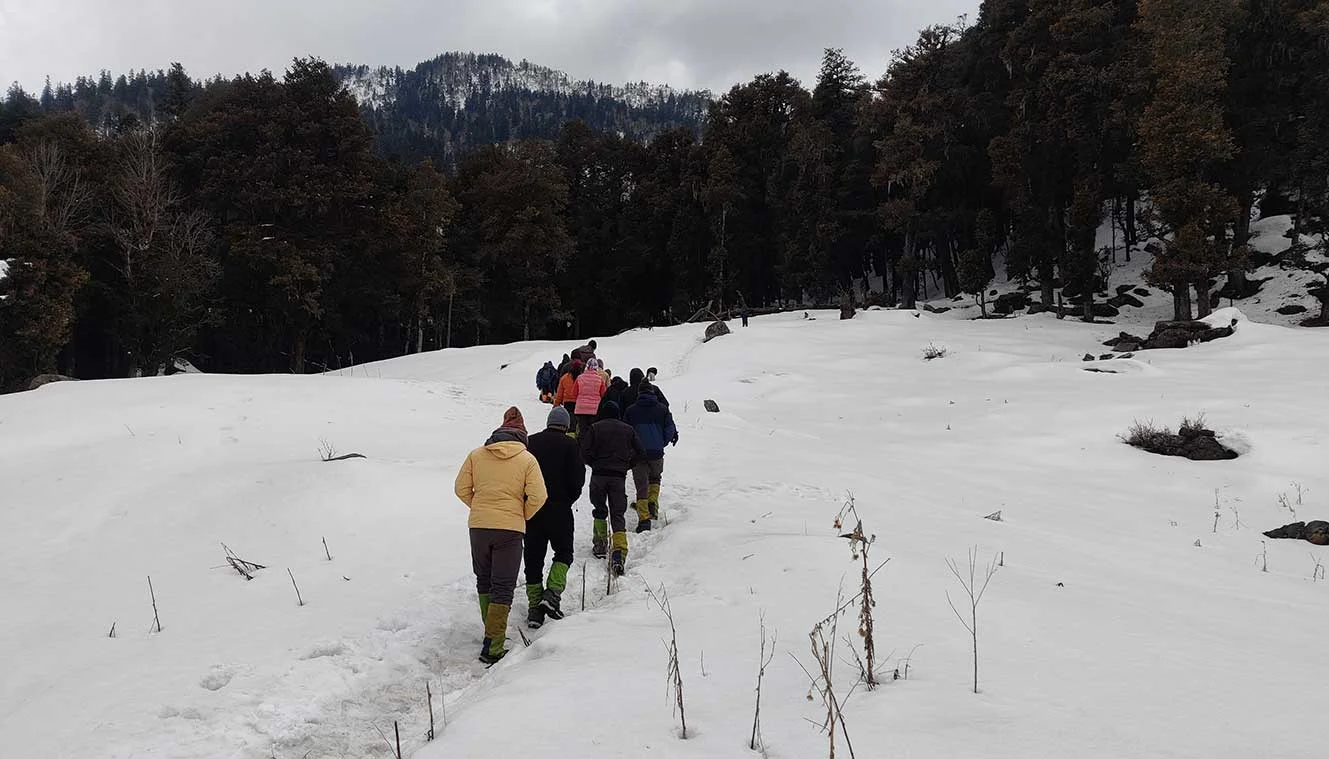
Tali forest camp to Kuari pass and back via Khullara top
- Altitude: 3,800 m/ 12,500 ft.
- Trek Distance: 10-11 km | 8-9 hrs.
- Tali forest camp to Khullara top (moderate ascent) (3,600 m/ 11,800 ft) (3 km trek).
- Khullara top to broken bridge with frozen stream (traverse walk) (3,750 m/ 12,300 ft) (1.5 km trek).
- Broken bridge to KUARI PASS (Strenuous climb) (3,900 m/ 12,500 ft) (1 km trek).
- Today is the toughest day.
- Carry enough water (no water source on the way).
- Early morning after breakfast starts trekking to Kuari Pass.
- Peaks:- Kedarnath Peak, Kedardome, Chaukhambha, Balakun, Neel Kantha, Mukut Parvat, Kamet, Abhi Gamin, Mana I, Ghori Parvat, Hathi Parvat, Dronagiri, Kalanka, Chang Bang, Nanda Devi, Nanda Ghunti.
The fourth day is the summit day, likely to span 8-9 hours depending on the group’s pace. You need to gear up appropriately for high snow and squalling wind on the ridges today. There is going to be no water source found on the way today, so carry enough to sustain you through.
In the first phase, the trek will move up to the Khullara top—a moderate ascent of 3 km. You will need to traverse a broken bridge and a stream frozen at the heights of winter, followed by a ridge climb to the high pass, severely strenuous and made more challenging with the snow. Every 15 minutes, you are welcome to take a break and catch your breath. At Jhandi Dhar, a suitable rest point 2 hours into the trek, you can afford a long break. Lunch will be had on the way or after reaching the temple at the base of the Kuari high pass.
Make sure to crampon your shoes properly. Trek the Himalayas will provide you with good-quality crampons and gaiters.
The climax of this trek comes with a visual bang exposing a host of Garhwal behemoth peaks, unveiling—Kedarnath Peak, Kedardome, Chaukhambha, Balakun, Neel Kantha, Mukut Parvat, Kamet, Abhi Gamin, Mana I, Ghori Parvat, Hathi Parvat, Dronagiri, Kalanka, Changabang, Nanda Devi, Nanda Ghunti.
The magnificence of this vision is incomparable.
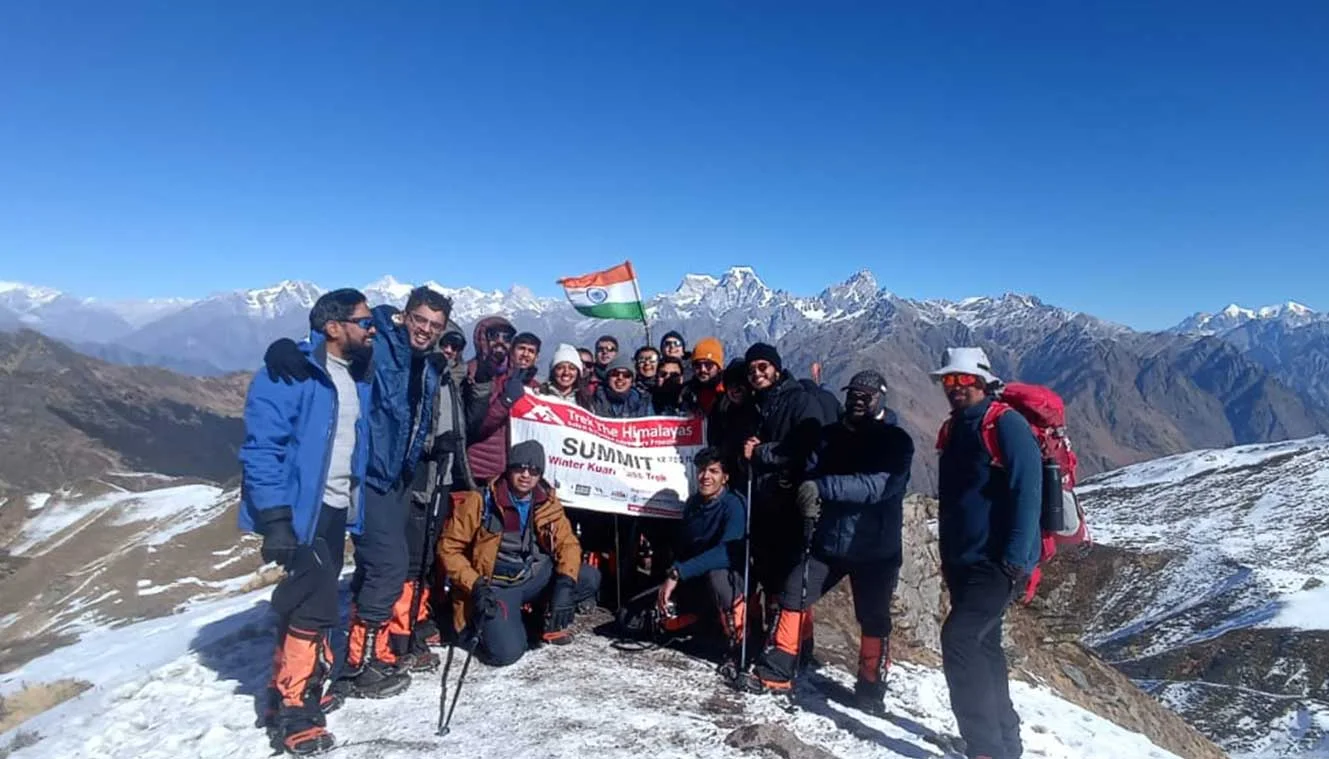
Tali forest camp - Pipalkoti via Gurson bugyal (11150 ft) and Auli (9680 ft)
- Altitude: 1,500 m/ 4,950 ft.
- Trek Distance: 9 km | 6-7 hrs.
- Drive Distance: 45 km, 1 hr 20 min.
- Tali forest camp to Tali lake (3,500m/ 11,500ft) (1 km trek).
- Tali lake to Gurson bugyal (3,400m/ 11,150 ft) (3.5 km trek).
- Gurson bugyal to Auli (2,950m/ 9,700 ft) (4.5 km trek).
- Auli to Pipalkoti (1,500m/ 4,950ft) (45 km drive).
- Breakfast at Tali campsite.
- Lunch Pack on the way.
- Pipalkoti (evening tea, debriefing, dinner).
Today we will advance towards Auli—the skiing capital of India, and one of the most famous in South Asia. Exploring the beautiful snow-patched rolling valleys of Gorson Bugyal, we will come down to Auli through a sweetly enjoyable journey.
Traversing the Bugyals of Gorson is completely free of any arduous and hassling climb, mainly on a smoothly rolling terrain, though the snow of high winter might leave the place a tad desolate. In the thaw season of March, skiing is a big activity here.
Please be advised that the cable car ride to Pipalkoti is not included in the trek package. However, trekkers have the option to experience the scenic cable car ride at their own expense upon reaching Auli. The cable car journey offers breathtaking vistas of the majestic ski resort, the gently sloping snow-covered slopes, and the captivating pine forests.
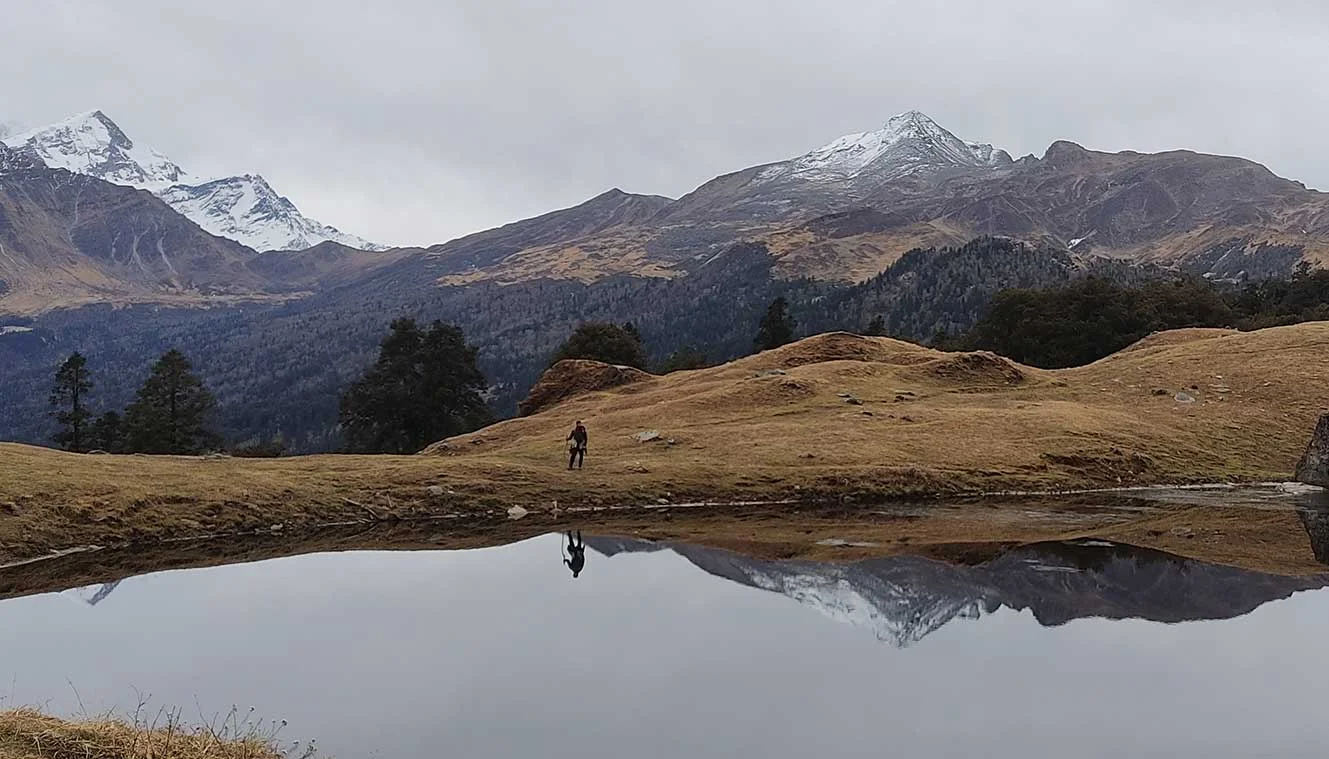
Pipalkoti To Rishikesh
- Drive Distance: 200 km | approx 9 hrs.
- Ride will commence at 7 am, reaching destination at around 4-5 pm.
- Breakfast and Lunch will be on the way at a roadside inn, exclusive of charges.
Note: On Day 6, you’ll reach Rishikesh between 4-5 pm. You can book your travel any time after 8 pm.
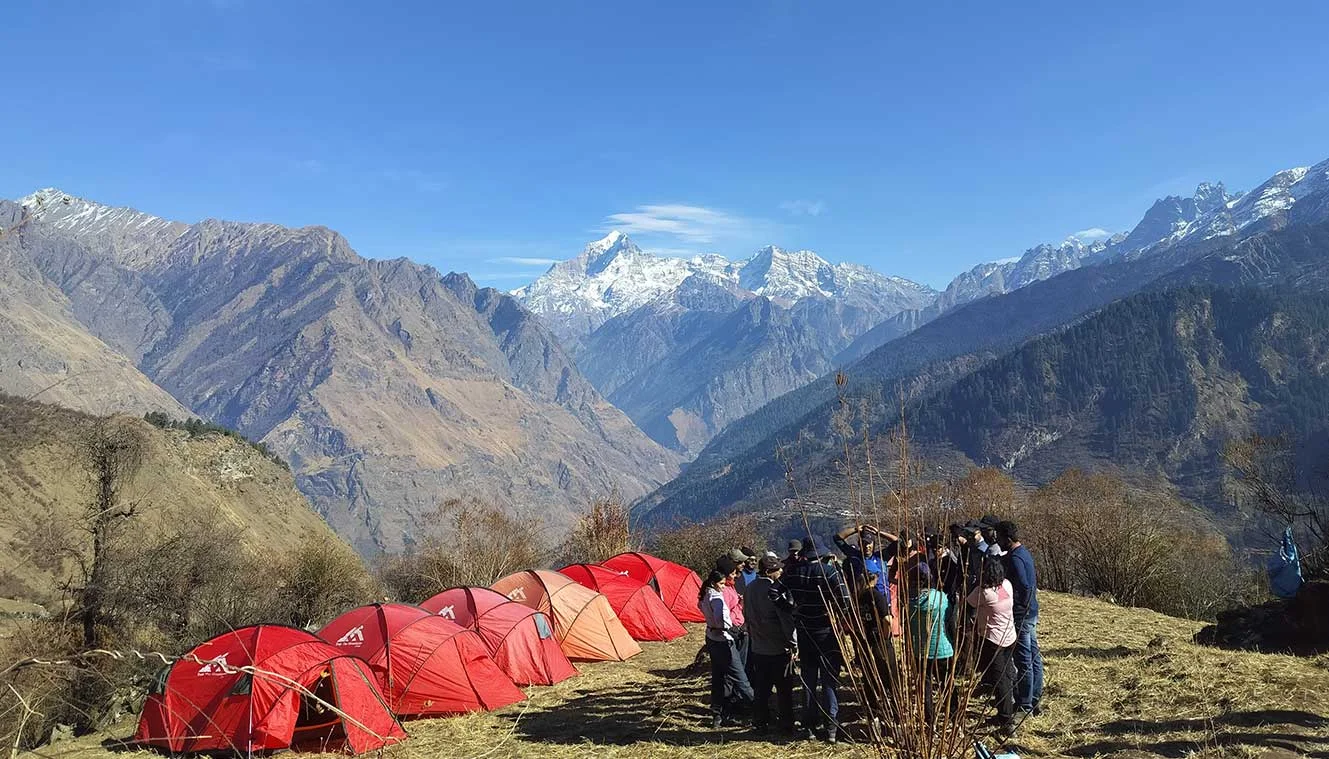
Day-1: Rishikesh to Pipalkoti
- Drive Distance: 200 km | approx 10 hours.
1 - Distance, Altitude and Trekking hours are approximate and rounded off.
2 - Keep the original and copy of ID proof handy.
3 - Please arrive one day early to ensure you reach the pickup point on time for your 6 am departure.
Day-2: Pipalkoti – Gulling Top
Day-3: gulling top to tali forest camp, day-4: tali forest camp to kuari pass and back via khullara top, day-5: tali forest camp - pipalkoti via gurson bugyal (11150 ft) and auli (9680 ft).
Note: If weather and route conditions will be fine and safe then only we will descend through Gurson Bugyal and Auli otherwise, we will descend through Gulling Top to Tugashi.
Day-6: Pipalkoti To Rishikesh
- Keep a buffer day in your travel plan.
- If buffer day is not used in the travel then it can be used to Explore Rishikesh.
- Read the article Things to do in Rishikesh.
- Distance, Altitude, and Trekking hours are approximate and rounded off.
- Keep the original and copy of ID proof handy.
- Come one day early if planning to come by flight.
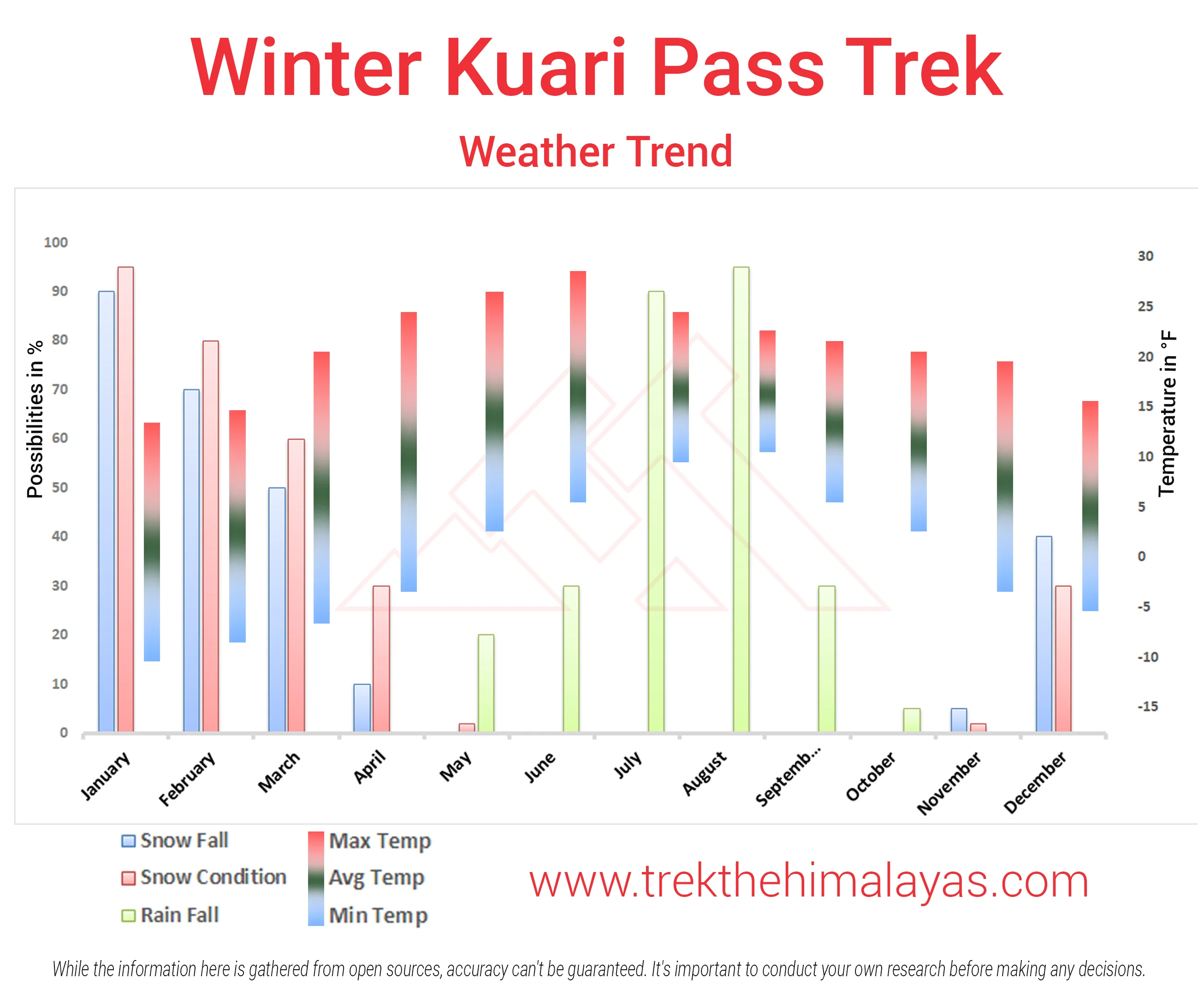
Pulse rate at rest must be in between (60 to 90 beats per minute).
Blood Pressure Reading must be in between (DIASTOLIC 70 – 90, SYSTOLIC 100 - 140 mm Hg).
Respiratory rate at rest must be in between (12 to 20 breaths per minute).
Should not have Liver and kidney issues.
Should not have Diabetes Mellitus, Bronchial Asthma, Heart problems, Hypertension, etc.
No pacemaker implant.
People with Sinus issues, Epilepsy please contact to trek coordinator before booking the trek.
If your BMI is not normal, Please contact our Trek coordinator before Trek booking.
Medical & Disclaimer Form (Mandatory Documents) Click here to download Medical & Disclaimer Form
- Government Employees can avail the benefit of Special Casual Leave (SCL) when they join us for a trekking expedition. As per the rules of the Pay Commission, Special Casual Leave can be availed for up to 30 days in a calendar year for trekking/mountaineering expeditions through a registered organization. Trek The Himalayas is a registered adventure tour operator by the Indian Mountaineering Foundation (IMF) and the Ministry Of Tourism (MOT).
- Trekkers have to apply for leave at least 20 days before the trek departure date.
- This service is exclusive to Indian government employees and is applicable only for treks within India.
- Do mail at info@trekthehimalayas to apply and mention your booked trek date and trek name.
Junior trekkers (below 15 years) should have a company of parents/guardians.
Trekkers between 15 to 18 years can come solo with the disclaimer form signed by parent/guardian.
- Medical & Disclaimer Form (Mandatory Documents) Click here to download Medical & Disclaimer Form
Exercise For Moderate
Fitness Regime For:
Calculate Your Bmi
Your BMI value is
Congratulations, your body is in good conditions!
- Mandatory Documents to Bring on A Trek Click Here.
How To Reach
It is essential for everyone to arrive at Rishikesh (06:00 am)
Pick-up Location - Tapovan, Laxmanjhula, Landmark -Nainital Bank opposite Shiv Vilas Hotel
Once you have reached Rishikesh, TTH will manage the rest of your travel arrangements, if you have opted for TTH's pick-up service, you can select this option during the booking process by adding it as an add-on.
Options to reach Rishikesh - First, you can arrive at Delhi, Dehradun airport or Chandigarh. The journey from these locations to Rishikesh is explained below.
1. Take overnight train/bus to Rishikesh.
2. Take overnight train/bus to Haridwar and drive to Rishikesh (25km | 35 min drive with normal traffic).
3. Take overnight train/bus to Dehradun and drive to Rishikesh (50km | 1hr 20min drive with normal traffic).
We always recommend going for the govt. Buses over the private ones outside the bus station as based on the experience we have found that there are very high chances of delay involved with private buses. Also, govt. Buses are always more reliable. Whichever bus you choose, just make sure to reach Rishikesh at least by 05:30 am.
4. Board a flight to Dehradun airport (Jolly Grant Airport) (21 km, 30 min). If you're arriving by air, then come one day in advance.
The designated drop-off point is Tapovan, Rishikesh.
Reach in Rishikesh by 4:00 to 6:00 pm.
Please consider planning your subsequent travel arrangements after 10:00 pm.
Note - In July and August month always have a buffer day in your Itinerary due to Monsoon.
It's highly advisable to keep a buffer day in your travel plan. If the buffer day is not needed, it can be used to explore Rishikesh.
If you prefer to travel independently to Base camp and don't want to take TTH's pick-up service, you can either take a government bus or book a private cab from Rishikesh. Your trek coordinator will provide guidance on how to arrange for the bus or cab booking.
TTH offers comfortable transportation through Tempo Traveler, Bolero, or equivalent vehicles. If you wish to upgrade your mode of transportation, please contact your trek coordinator for further assistance.
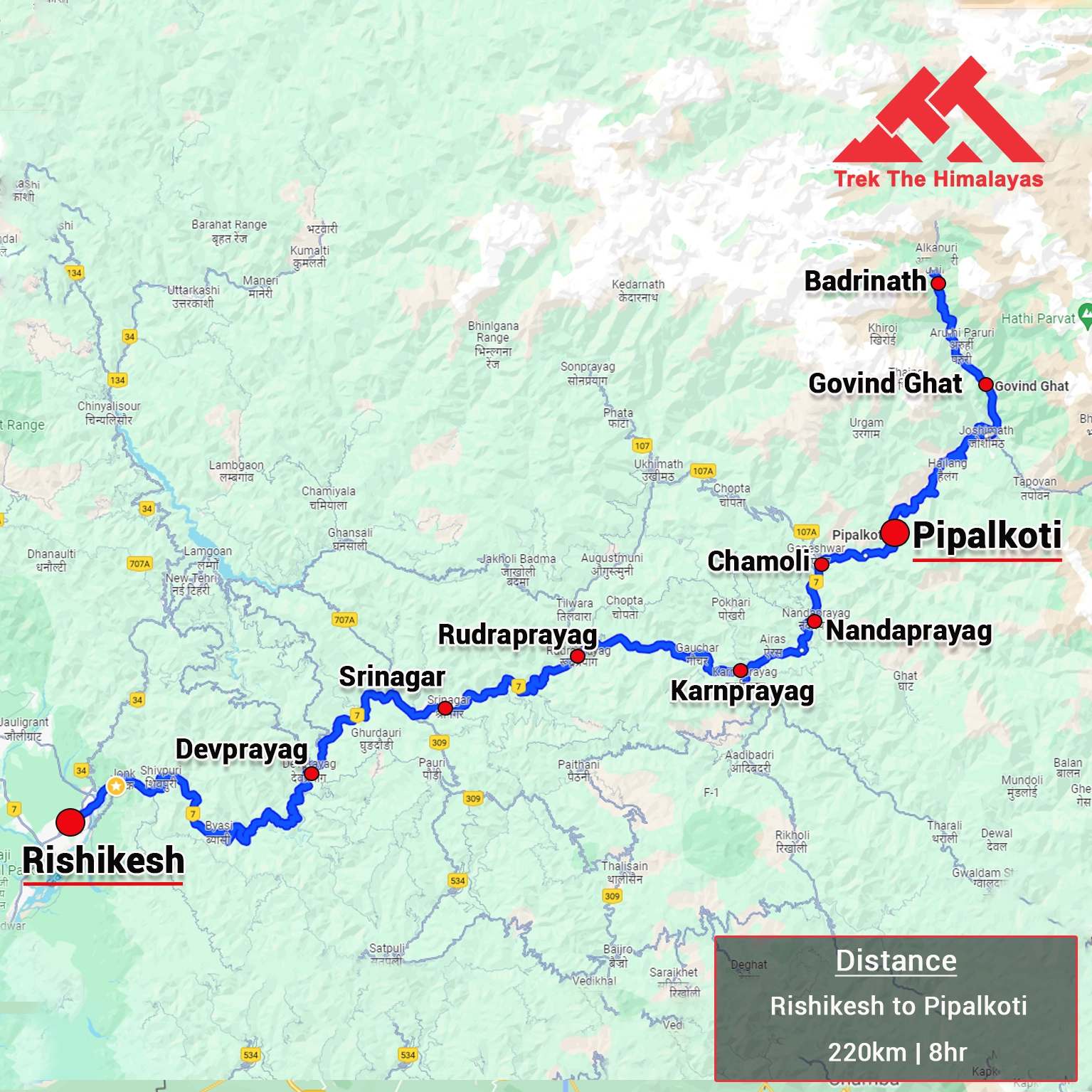
1. Accommodation (as per the itinerary):
- Guest house in Pipalkoti (Day 1 and Day 5 as per the itinerary) .
- Camping while on trek (twin sharing).
2. Meals (Veg + Egg):
- All meals (including tea, soup, snacks, etc.) from Day 1 Dinner to Day 5 Dinner.
3. Support:
- 1 Versatile base camp manager handles communication and deploys extra manpower in emergencies.
- 1 Mountaineering & First aid qualified professional trek Leader.
- 1 Experienced high-altitude chef.
- Local experienced guides (Number of guides depending on the group size).
- Enough support staff.
4. Trek equipment:
- Sleeping bag, Sleeping liners (if required), mattresses, and Utensils.
- 3 men all season trekker tent (twin sharing), Kitchen & Dining tent, Toilet tent.
- Camping stool, Walkie talkie.
- Ropes, Helmet, Ice axe, Harness, Gaiters & crampons (if required).
5. First aid:
- Medical kit, Stretcher, Oxygen cylinder, Blood pressure monitor, Oximeter, Stethoscope.
6. Mules/porters to carry the central luggage.
7. Clock room facility available at the base camp for additional luggage.
8. All necessary permits and entry fees, up to the amount charged for Indians.
9. Trek Completion Certificate.
- Insurance (Mandatory).
- Food during the transit.
- Any kind of personal expenses.
- Mule or porter to carry personal luggage.
- Emergency evacuation, hospitalization charge, etc.
- Anything not specifically mentioned under the head Inclusion.
- Transport from Rishikesh to Pipalkoti and back ( As per the itinerary) .
Things can be provided on demand and availability (participant has to pay extra for these things).
1- Satellite phone/set phone - a type of mobile phone that connects via radio links via satellites orbiting the Earth instead of terrestrial cell sites like cellphones. Therefore, they can operate in most geographic locations on the Earth's surface.
2- Gamow/PAC HAPO Bag (Portable Hyperbaric Bag) - is a unique, portable hyperbaric chamber for the treatment of acute mountain sickness (AMS), also known as altitude sickness.
3- AEDs (Automated External Defibrillators) - are portable life-saving devices designed to treat people experiencing sudden cardiac arrest, a medical condition in which the heart stops beating suddenly and unexpectedly.
Cancellation terms:
Cancellations prior to 25 days from the start of the Trip
Refund options
- 5% deduction of trek fee
- 100% cash voucher for any trip till one year
- Transfer your trek (any trek, any date) to your friend
Cancellation between 24 days and 15 days to the start of the Trip
- 30% deduction of trek fee
- 100% cash voucher for same trip till one year
- 85% cash voucher for any trip till one year
- Transfer your trek (same trek, any date) to your friend
Cancellation between 14 days and 10 days to the start of the Trip
- 50% deduction of trek fee
- 80% cash voucher for same trip till one year
- 70% cash voucher for any trip till one year
- Book the same trek, in the same season, with any other batch
Cancellation less than 9 days to the start of the trek
- No cash refund
- 20% cash voucher for the same trip till one year
- 10% cash voucher for any trip till one year
- Transfer your trek (same trek, same date) to your friend
Note- If a booking is made using a voucher or discount code, the policies related to vouchers and discounts cannot be modified.
In the unlikely event that TTH cancels a trek prior to the scheduled departure date:
While it is extremely rare for TTH to cancel a trek, we understand that unforeseen circumstances or natural disasters may occasionally require us to do so before the scheduled departure. These circumstances could include continuous rain or snow, thunderstorms, snowstorms, landslides, floods, earthquakes, or any other natural calamity that poses a risk to the safety of our trekkers. Additionally, unforeseeable events such as local riots, curfews, pandemics, lockdowns, government orders, or any similar situations that compromise the safety of the trekking experience may also necessitate a cancellation.
In the event of such a cancellation, TTH will provide you with a voucher equivalent to the amount you paid for the trek. This voucher can be redeemed for any of our treks within the next year, allowing you to still enjoy an adventure with us at a later date.
The issuance of a voucher is not applicable in situations where you are required to descend from the trek for any reason. The trek leader may make the decision to send you down from the trek due to factors such as insufficient fitness level, symptoms of Acute Mountain Sickness (AMS), high blood pressure, exceeding the designated turn-around-time, health concerns, or if you are found smoking, drinking, or violating the rules set for the trek. In such cases, the provision of a voucher does not apply.
In the rare event that TTH shifts a trek:
We would like to emphasize that weather conditions in high-altitude areas are highly unpredictable and can undergo sudden changes at any time, irrespective of the day. Additionally, circumstances beyond our control, such as natural disasters, political unrest, pandemics, and lockdowns, may impact the feasibility of conducting a trek. In cases where we are unable to proceed with an event due to such circumstances that are beyond our direct control, we will make every effort to provide you with an alternative trek that is safer and more suitable.
In such situations, we will issue a voucher to offset the cost difference between the originally scheduled trek and the alternative trek. This voucher can be redeemed at any time within one year from the date of issue. Please note that a refund fee or reimbursement of the cost difference is not applicable in these cases.
- Change of trek batch is dependent on the availability of seats in the batch
- In case of transferring a trek to a friend, he/she should satisfy all the mandatory requirements put forward by TTH
- TTH holds the right to change/cancel the policies, without prior notice
- Cash refund is applicable only in case of bookings made without using any promotional offer code or vouchers
Cash Voucher Terms:
- This is a non-transferable voucher
- The voucher cannot be merged with any other offer of Trek The Himalayas
- The voucher is valid for Trek booked directly with Trek The Himalayas in India
- To avail the voucher please use your register phone number or e-mail id
- All the other Terms of booking a trek with Trek The Himalayas are applicable to the voucher
- Trek The Himalayas holds rights to add/remove any of the Terms and Conditions without prior notice
Itineraries are based on information available at the time of planning and are subject to change. "Trek The Himalayas" reserves the right to change expedition dates, people or itineraries as conditions warrant. If a trip must be delayed or the itinerary changed due to bad weather, road conditions, transportation delays, government intervention, airline schedules, sickness, or other contingency for which TTH or its agents cannot make provision, the cost of delays and/or other changes are the responsibility of the participant. TTH reserves the right to decline, or accept, any individual as a trip member for any reason whatsoever.
Trek Essentials
PDF Of Trek Essential Download
Frequently Asked Questions(FAQ)
How to register/create an account with tth.
To register with TTH, visit our website - www.trekthehimalayas.com and create your account. To create your account you will need to use your email address and fill in all the details, set your unique password and your account is ready to use.
How to book a trek?
- To book a trek with TTH, you first need to register with us and create an account.
- Choose the trek that you want to do and click on available dates.
- You will land at the login page, fill in the required details.
- Add Participants, choose add-on services click on the Pay now button, choose your preferred payment method, and make the payment. TTH accepts multiple payment options, including credit/debit cards, net banking, and UPI.
- You will receive a confirmation email from TTH with all the necessary details about the trek, including the meeting point, transportation, accommodation, and other important instructions.
Made a payment but did not receive any confirmation.
please send an email to us at [email protected] or reach out to the numbers provided in the Help and Support section of your Trek Page. We will ensure that your issue is promptly resolved.
How to book off-load luggage and transportation?
To book services such as off-load luggage and transportation, you can find them listed as add-ons. These additional services can be booked at the time of your initial booking. If you miss booking add-ons during the initial reservation, you can log in anytime and easily book 4 days before the departure date add-ons through the platform.
If I have booked the wrong trek or date, how can I make changes?
In such a situation, please log in to your account and transfer your trek or date to the desired one within 12 hours or drop us an email at [email protected] 10 days before the departure date of the trek. After the initial 12-hour period, any changes will be processed according to the cancellation policy.
I am a beginner and confused which trek to book.
We recommend visiting our "Suggest Me a Trek" page. By filling out the form, our experts will contact you with the best possible trek options based on your preferences and experience level. Alternatively, you can reach out to us via email at [email protected] or give us a call using the numbers provided on our website for personalized assistance and recommendations.
How is family trek different from regular trek?
Family treks differ from regular treks by focusing on ease of difficulty, offering shorter durations for younger participants, Kid-friendly and easily digestible foods, child-friendly activities, maintaining a higher guide ratio for diverse age groups, and implementing additional safety measures for families.
Ideal treks for children.
Family Trek with Kids recommendation Only Dayara Bugyal and Chopta Chandrashila Trek.
Minimum age for children to trek with TTH.
Minimum age for TTH treks is typically 7 years, though this may vary depending on the specific trek.
Can we take children to high altitudes with their guardian?
Yes, you can take a kids to a high-altitude trek with a parent. Discuss with a trek expert before booking a trek.
Can we send kids without Parents/guardian?
Medical & Disclaimer Form (Mandatory Documents) Click here to download medical and disclaimer form
How to prepare a child for a high altitude trek?
Physical Fitness: Ensure your child is physically fit. Engage them in regular exercise, outdoor activities, and hikes to build stamina and endurance. Hydration: Emphasize the importance of staying hydrated at high altitudes. Encourage your child to drink water regularly, even if they don't feel thirsty. Proper Nutrition: Provide a well-balanced diet with sufficient carbohydrates for energy and foods rich in iron to prevent altitude sickness. Adequate Sleep: Ensure your child gets enough sleep in the days leading up to the trek. Quality rest is crucial for altitude adaptation. Educate on Altitude Sickness: Teach your child about the symptoms of altitude sickness, such as headache, nausea, and dizziness. Encourage them to communicate any discomfort immediately. Appropriate Clothing and Gear: Dress your child in layers to adjust to changing temperatures. Ensure they have appropriate trekking gear, including sturdy footwear. Positive Mindset: Foster a positive mindset. Encourage your child, and let them know it's okay to take breaks when needed. Medical Check-Up: Schedule a medical check-up before the trek to ensure your child is fit for high-altitude activities. Consult with a healthcare professional about any potential health concerns.
Kind of food will be served during the trek for children.
TTH takes special care to provide wholesome and nutritious food for children on treks. Here are some of the foods that are typically served for children: Breakfast: For breakfast, TTH serves a variety of options like porridge, cornflakes, bread, butter, jam, honey, boiled eggs, omelettes, and pancakes. Children can choose from these options to fuel themselves for the day's trek. Lunch: For lunch, TTH serves lunch which includes rotis, vegetables, rice, dal, and salad. The rotis are usually made fresh on the trek and are a good source of carbohydrates. The dal and vegetables provide protein and other essential nutrients. Snacks: TTH provides healthy snacks like fresh fruits, dry fruits, energy bars, cookies, and biscuits to keep the children energized throughout the day. Dinner: For dinner, TTH serves a hot and wholesome meal which includes soup, rice, dal, vegetables, and a non-vegetarian dish (if requested in advance). Children can also choose from a variety of desserts like custard, jelly, and fruit salad. Dietary requirements: If a child has any special dietary requirements, TTH can cater to those needs as well. For example, if a child is lactose intolerant or allergic to nuts, the kitchen staff can make arrangements to accommodate those requirements.
How to choose the right trek?
Choosing the right trek for a beginner can be a bit overwhelming as there are many factors to consider such as distance, elevation gain, terrain difficulty, weather, and time of year. Here are some tips that can help you choose the right trek for a beginner:
1. Determine fitness level: Assess the fitness level of the beginner to understand their physical capabilities. This will help you select a trek that is challenging but not too difficult.
2. Choose a well-traveled trail: A well-traveled trail will have more amenities such as signposts, water stations, and shelter. It is also safer as there will be other hikers on the trail.
3. Consider the length of the trek: For beginners, it is recommended to start with a shorter trek that can be completed in a day or two. This will help them get acclimatized to trekking and build their confidence.
4. Look for gradual elevation gain: Choose a trek with a gradual elevation gain rather than steep ascents. This will make the trek easier and more enjoyable.
5. Check the weather: Check the weather forecast before selecting a trek. Avoid treks during the monsoon season or winter when the trails can be slippery or dangerous.
6. Research the trail: Read about the trail to get an idea of the terrain, altitude, and difficulty level. This will help you select a trek that is suitable for the beginner.
7. Consult with an expert: If you are unsure about which trek to choose, consult our trek expert Mr. Nitin (+91 70600 59773) between 10 AM to 6 PM (Tuesday - Friday). Mr. Nitin will provide you valuable advice and guidance.
Overall, it is important to choose a trek that is enjoyable, challenging but not too difficult, and suitable for the beginner's fitness level and experience.
Can a beginner choose a tough trek?
It is not recommended for a beginner to choose a difficult Himalayan trek. Trekking in the Himalayas can be physically and mentally challenging, especially if you are not used to the high altitude, steep slopes, and rugged terrain. Choosing a difficult trek without the proper experience, fitness level, and preparation can be dangerous and put you at risk of altitude sickness, injury, and other hazards.
If you are a beginner, it is recommended to start with an easier trek and gradually build up your skills and experience. This will help you understand the challenges of trekking in the Himalayas, and also prepare you physically and mentally for a more difficult trek in the future. It is also important to choose a trek that matches your fitness level, experience, and interest.
What is the age limit for a beginner trekker?
There is no specific age limit for a beginner trekker. However, it is important to consider your physical fitness, health condition, and personal interests before embarking on a trek. Trekking in the Himalayas can be physically and mentally demanding, and requires a certain level of physical fitness and endurance.
If you have any pre-existing medical conditions or are above a certain age, it is recommended to consult with a doctor before embarking on a trek. It is also important to listen to your body and take breaks as needed during the trek to prevent exhaustion or injury.
If I am solo, can I join the trek in a group?
Yes, you can join the trek. We have fixed departure groups where you can simply book your trek and we will take care of curating a group.
How does my family get updated about my Trek?
Before you start the trek, it is recommended that you make all the necessary phone calls as during the trek you may or may not receive network coverage, once you come back to the Base Camp, you can reconnect with your family via phone once again. You can share your trek coordinator contact detail with your family members to get the latest updates about your trek batch.
What food can I expect?
At TTH, we provide wholesome and nutritious meals during the trek. The food is vegetarian and includes a variety of dishes such as rice, dal, vegetables, chapati, paratha, pasta, noodles, and soup. We also offer snacks such as biscuits, and salty, and dry fruits during the trek. Special dietary requirements such as vegan, gluten-free, or Jain food can also be arranged if informed in advance.
I am allergic to some foods.
If you are allergic to some foods, you need to let us know in advance so that we can make arrangements accordingly.
How safe is trekking with TTH?
TTH is a trekking company that prioritizes the safety of all its participants, including women trekkers. They have a comprehensive safety system in place, which includes a dedicated team of experienced and trained trek leaders and support staff who are equipped to handle emergency situations and provide first aid.
TTH also takes specific measures to ensure the safety and comfort of women trekkers. They have a separate tent accommodation for women trekkers, female trek leaders, and support staff. They also provide separate toilet facilities for women and encourage a safe and respectful environment for all trekkers.
Moreover, TTH has a strict policy against any kind of harassment and has a zero-tolerance policy towards such incidents. They have a designated Internal Complaints Committee (ICC) to investigate and address any complaints related to harassment or misconduct. Overall, TTH has a good reputation for safety and responsible trekking practices, and women can feel comfortable and safe while trekking with them.
How TTH will manage if I am the only woman in the group?
In case you are the only women in the group, we provide a single sleeping arrangement. Also, during the trek, the trek leader will always remain by your side to provide optimum safety and reassurance.
How can I know that other women are in the batch?
You can reach out to the trek coordinator to inquire about the number of female trekkers and their respective states who have booked the trek. Please note that the trek coordinator cannot disclose personal details of any trekker. Once you've confirmed your booking, a WhatsApp Group will be created for all the trekkers in your batch. This allows you to connect with fellow trekkers before the trek begins.
Can I know in advance, which trek is led by a women Trek Leader?
While many of our treks are led by female trek leaders, however, it is not possible to know which trek leader is assigned to which group. But nonetheless, whether the trek leader is male or female you can be completely assured of your safety and security with us.
Can I trek with periods? If yes, then where can I dispose of the sanitary pad?
Yes, it is possible to trek with periods. However, it is important to take some extra precautions and preparations to ensure a comfortable and safe trekking experience.
Here are some tips that can help you trek during your period:
1. Use menstrual hygiene products that you are comfortable with, such as tampons, pads, or menstrual cups. It is recommended to carry enough supplies for the entire duration of the trek.
2. Pack wet wipes, hand sanitizer, and plastic bags to dispose of used hygiene products.
3. Wear comfortable and breathable clothing that allows for easy movement and reduces friction. Avoid wearing tight or restrictive clothing that can cause discomfort.
4. Carry pain relief medication, such as ibuprofen or acetaminophen, in case of menstrual cramps.
5. Stay hydrated and maintain a balanced diet to support your energy levels and overall health.
6. Take breaks as needed and listen to your body. If you feel uncomfortable or experience any unusual symptoms, seek medical attention immediately.
It is also recommended to consult with a doctor before going on a trek during your period, especially if you have a pre-existing medical condition or are taking medication. By taking necessary precautions and being prepared, you can have a safe and comfortable trekking experience even during your period.
We provide proper disposal facilities for sanitary pad disposal during the trek.
How will the accommodation be during the trek?
We offer three person tents with twin-sharing for optimum comfort. A woman trekker will share a tent with another woman trekker and if you are the only woman in the group, you will be given a single accommodation for your comfort and privacy.
Are trek poles, Jackets and other equipment available for rent from Trek The Himalayas?
Yes, we do provide gears on rent. You can book it using you TTH account directly.
Who will be with us on the trek from Trek The Himalayas?
Mountaineering qualified Experienced and first aid certified Trek Leader, First Aid Certify local guide, Cook, helpers and supporting staff.
Who can not join the trek?
People suffering from Bronchitis, Asthma, High blood pressure, Epilepsy (got faints), TB , Heart problem or on higher BMI side are strictly not allowed to go on any Himalayan trek. Apart from this if you had any medical history, please let us know.
When it gets really cold can I consume alcohol?
No. Alcohol and smocking isn’t allowed while on trek. It is totally misconception that it will keep you warm. Your body need to acclimatize properly and for that eat properly and drink enough water; these things will keep you warm.
What type of toilet facility is TTH providing at the trek?
Toilet tents provide a convenient solution for answering nature's call in the great outdoors. Dry toilets, in particular, offer a highly sanitary approach. By digging a pit and utilizing mud and a shovel, you can easily cover up your waste. This method ensures cleanliness and hygiene while camping or exploring in the forest.
Remember to pack essential toiletries to complete your outdoor bathroom kit and maintain proper personal hygiene during your adventures. With these practices in place, you can enjoy nature while also respecting it.
How do I manage the negative temperatures on the trek at higher camps? Do I need special jackets?
Layer Up From Head To Toe Eat Full Meals, never sleep empty stomach You can keep warmee (if you’re more susceptible to cold). Use sleeping bag in right way and don’t leave free space in sleeping bag.
For upper body – Thermal layer – T-shirt (full-sleeves) – Fleece T-shirt (for extreme colds) – Fleece layer – Thick Jacket/Down Jacket – Waterproof or Windproof layer (outermost layer, when it is snowing or raining) - For Lower Body – Thermal layer – Hiking pants (normal) or Winter hiking pants
Based on how warm you feel you can skip any of the above layers. Your outer later should be windproof since it is windy at high altitude. The idea behind layering is that the more insulation you have the less cold you feel, and instead of wearing a very thick jacket if you wear multiple layers, your body will be better insulated against the cold.
Do you provide crampon/micro spikes and gaiters?
Yes, we provide micro spikes and gaiters, if required.
What documents need to carry on trek?
Mandatory documents: 2 xerox of ID having address (addhar card/driving license), 2 Passport size photographs, hard copy Medical form signed & sealed by doctor, disclaimer form sign by trekker and high altitude insurance.
If we come prior the trek date, Do you provide accommodation?
No. We don’t but we can suggest you good hotel/Stay nearby pick up location.
Do we get enough water for drinking?
Yes, trekker must carry 2 water bottles 1 litre each so they can refill it at campsite for drinking and keep themselves hydrate.
What kind of shoes we should buy for the trek?
You should buy shoes which has these three features –Good grip, Ankle Support and additional water resistant layers. Generally, we advise Quechua Trek 100, MH 500 and MH 100.
What happens if some members of the team need to turn back before the summit?
No one is forced to go on. There is always enough staff to split the party according to need and regroup later at the camp. Most people have no trouble reaching the highest campsite. If some members decide not to climb the final distance they can wait for the climbers to come back down the same way or take a lateral path to the descent route.
What is the Winter Kuari Pass Trek?
Winter Kuari Pass , a breathtaking slice of paradise nestled in the heart of the Indian Himalayas, beckons adventurous souls with its ethereal beauty and enchanting allure. As the snow-covered trails wind their way through dense forests and pristine meadows, nature's masterpiece unfolds before your very eyes. The towering peaks stand tall, their majestic presence inspiring a sense of awe and wonder. The crisp, cold air fills your lungs, invigorating your spirit as you embark on this unforgettable journey. Each step brings you closer to the summit, where a panoramic vista of snow-clad mountains embraces you, leaving you spellbound. The serenity and solitude of this winter wonderland create the perfect canvas for self-reflection and introspection, allowing you to connect with the raw power of nature.
How many days does the Winter Kuari Pass Trek take?
It takes 6 days to complete the Winter Kuari Pass Trek.
What is the total distance covered in the Winter Kuari Pass Trek?
Winter Kuari Pass Trek is a 33 km trek.
What is the difficulty level of the Winter Kuari Pass Trek?
Winter Kuari Pass Trek is a moderate-grade trek.
What is the best time to do the Winter Kuari Pass Trek?
The best time to do Winter Kuari Pass Trek is winter (Mid-Nov - Mid-Feb) and Spring (Mid-Feb - Mid-Apr) .
What is the maximum altitude of the Winter Kuari Pass Trek?
The maximum altitude reached during the Winter Kuari Pass Trek is 12,750 ft .
What kind of equipment do I need for the Winter Kuari Pass Trek?
Here are some of the essential items that you should bring for the trek:
1. Mountaineering Boots: Sturdy, waterproof boots with good ankle support and crampon compatibility are a must.
2. Warm Clothing: This includes a warm-down jacket, thermal inner layers, and waterproof outer layers.
3. Backpack: A durable backpack to carry your equipment and personal items.
4. Sunglasses: To protect your eyes from harmful UV rays and snow glare.
5. Gloves: Waterproof and warm gloves that provide dexterity and grip.
6. Headlamp: A powerful headlamp with extra batteries for se during early morning starts or late night hikes.
Do I need a permit to do the Winter Kuari Pass Trek?
The Winter Kuari Pass Trek falls under the jurisdiction of the Forest Department and as such it is necessary to obtain Forest Permit for the trek. When you trek with us, we obtain the permit ourselves.
Is it safe to do the Winter Kuari Pass Trek?
Yes, it is safe to do the Winter Kuari Pass Trek with an expert organization. However, it is always advisable to take necessary precautions and follow safety guidelines issued by the Trek Leaders and guide while trekking in the mountains.
What kind of accommodation is available on the Winter Kuari Pass Trek?
On the Winter Kuari Pass Trek , you will be camping in different campsites. We provide twin-sharing tents for optimum comfort.
- Date and Price
Rent A Gear
Trek Articles
Quick Links
Trekking & Hiking
Mountaineering
Multi Sports
Himalayan Pilgrimage
Website Privacy
Terms & Condition
Contact Info
Get in touch with us. E-mail us Monday-Saturday (10 AM to 6 PM)
Address: Trek The Himalayas, Kaintura Plaza, Badrinath Road Tapovan, Rishikesh - 249201 Uttarakhand
Phone: 8191004846
Email: [email protected]
2010 Trek The Himalayas. All rights reserved
Kuari Pass Trek
The most scenic winter trek for beginners
Available Batches
Brief description.
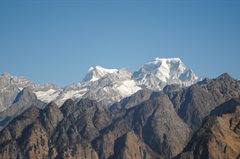
Brief Itinerary
Detailed itinerary.
Arrive in Joshimath (2040 M)
Arrive in Joshimath. If you opt for transportation from us then we will assemble early morning in Dehradun ISBT by 7 AM and drive towards Joshimath. Overnight in guest house / hotel in Joshimath
Joshimath to Tugashi (by car) and trek to Tali (3362 M)
Distance: 6 kms
Duration: 5-6 hours
After breakfast around 7:30 AM, we head to Tugashi Village to start our trek. Keep a jacket handy, you may need it along the way, but if the sun is up, you can easily trek in a t-shirt and a fleece. You’ll start walking through the dusty trails up to Tugashi village, which will be your first water source. It’s a charming little village, where you’ll get a glimpse of the traditional way of life of the locals. As you move further up from Tugashi village, the terrain changes and you’ll find yourself walking in and out a beautiful oak forest. The forest opens up to a clearing or a meadow every now and then. You’ll have your lunch at Gulling around 1 pm, rest up here but gear up for the final ascend to the Tali Campsite from here. It’s not a steep ascend, but for the next 4 kms, you’ll be walking uphill. Tali campsite is right in the middle of the forest, and you’ll be delighted to be there because you’ll have a team waiting with hot beverages and snacks for you.
Tali to Kuari Pass (3814 M) to Tali
Distance: 12 kms
Duration: 7 hours
Today is going to be an epic day. It’s much easier than the previous day, as you will go up and down hills and snow slopes (in the winter months). The trek today will amaze you with the glorious views of the mountains around you, the snowfield you’ll traverse through and the feeling of being on top of the world at Kuari Top. It would take you around 4 hours to reach Kuari Top, which is the highest point on the trail, from there, Kuari Pass is just 700 meters (40 minutes) away. Today you’ll see peaks like Neelkantha, Nanda Devi, Hathi Ghoda Parvat, Dronagiri, Pangarchulla, and Chaukhamba. After spending some time at the pass, we retrace the same route to reach Tali by late afternoon.
Tali to Auli (3048 M) via Gorson bugyal. Drive to Joshimath.
Distance: 10 kms
If the views blew your minds away yesterday, today is going to be an even better day. 800 meters of steady climb after the camp, you’ll be out of the forest. Your first break point would be at the beautiful Tali lake. You’ll be able to get clear views of Nanda Devi from Tali lake, which is the highest mountain in India. The trail from here climbs onto a narrow path, with the mountain on one side and a steep drop on the other. Make sure you walk as a team on this path, as people scared of heights or prone to vertigo, might feel a little uncomfortable here. This narrow path continues for 1.5 KMs till you enter Gorson Bugyal. For the next 5KMs you’ll walk in a beautiful wide open meadow, and in the winter months, the snow makes the landscape absolutely stunning. You’ll find a lot of day hikers here from Auli, who come here to experience the snow. Reach Auli Ski Resort and board the vehicle for Joshimath from Auli road head. The drive from Auli to Joshimath is around an hour. Your trip ends here, and now it’s time to take a hot shower, relax and celebrate.
Depart from Joshimath (2040 M)
The trip ends today. Checkout of the guest house. If you opt for transportation from us then we will reach Dehradun by late evening.
What's Included
- Food as per menu on the trek (Starting Lunch on Day 2)
- Forest Permits/Camping Charges , if any
- Tents, Sleeping bags, mats,Technical equipment
- Safety Equipments.
- Trek guide, cook, helpers, porters & mules for carrying common luggage.
- Services of a Trek Leader.
- 2 Nights Hotel stay in Joshimath.
What's Not Included
- Meals during road journeys
- Meals during hotel stay
- Any expense of personal nature
- Any expense not specified in the inclusion list
- Transportation from Dehradun to Joshimath and back to Dehradun.
Are you Eligible for this Adventure?
Max Altitude

BRS Level Required
Kuari Pass Trek is a level 3 adventure on the Bikat Rating Scale.
Since it is a beginner’s trek, you need no special prior experience. Although any high-altitude trek requires a certain level of stamina and physical endurance.
If you do not know what level of BRS trek would suit you best, worry not! Fill out this Form:

we will send you a progression chart to help you comfortably get out of your comfort zone in order to level up and ultimately reach your highest potential in the big, bad world of outdoor adventure.
Packing List
This is a list of essential items for individuals doing the trek with Bikat Adventures. This list contains only those items which the participants are required to bring with them. The list excludes those items which are provided by Bikat Adventures on the trek. We have divided the items into five categories. All the items in the list are essential except for those marked as optional.
Trekking Gear
- Ruck sack bag with rain cover. Qty -1
- Day Pack Bag - Recommended for treks with summit day
- Head Torch with spare Batteries. Qty -1
- U V protection sunglasses. Qty -1 Here is how you can choose the best sunglasses for trekking.
- Water Bottles: 2 bottles of 1 liter each
- Non-skid, deep treaded, high-ankle trekking shoes Qty -1
- Pair of light weight Slipper/Sandals Qty -1
- Quick Dry Warm lower or Track Pants. Qty - 2
- Full sleeves T-shirts/ Sweatshirts. 1 for every 2 days of trekking
- Pair of thick woolen socks. 1 pair for every two days of trekking
- Thermal Body warmer Upper & Lower. Qty-1
- Undergarments. Qty - 1 for every day of trekking
- Warm jacket closed at wrist & neck .Qty-1
- Full sleeves sweater. Qty -1
- Rain wear ( Jacket & Pants ) . Qty-1
- Pair of waterproof, warm gloves. Qty-1
- Woolen cap. Qty-1
- Sun shielding Hat. Qty -1
- Personal toiletries kit (Small Towel, Toilet paper, paper soap, Bar soap, toothbrush, toothpaste, cold cream, etc.)
- Sun screen lotion small pack. Qty -1 Here is your Sun Protection 101 to stay safe in the bright sunny outdoors.
- Lip Balm small pack. Qty-1
- Small size, Light weight & Leak proof lunch box. Qty-1
- Plate. Qty- 1
- Spoon.Qty-1
- Tea/Coffee (plastic) Mug.Qty-1
Miscellaneous
- Camera (Optional)
- Carry your medicines in plenty in case you have any specific ailment. Consult your doctor before joining the trek.
- Dry fruits, Nuts, Chocolate bars (Optional)
Frequently Asked Questions
Eligibility, is this adventure good for me, what’s a good fitness benchmark for this adventure, what skills do i need to complete this adventure, what is the minimum and maximum age limit, about the activity, where is it located, what are some of its highlights, what are some of its challenges, what is the best season for this, what is the accommodation type, what is the temperature like here, is it technically challenging, connectivity, how do i reach the starting point, is there cellular network available throughout, where is the nearest atm, if i choose to travel to the base with you, what is the pick-up point, what time is the drop-off on the last day, what are the nearby attractions that i can explore, equipment & gear, what equipment is provided to us, what can i rent from you, where will i receive the rented items, where do i have to return the rented items, what gear do i need to bring, are there local shops to rent/buy equipment, facilities & additional services, can i offload my bag, can i leave any extra luggage i carry at the base of this adventure, what are the meals like, what are the washroom/ toilet facilities like, what should i do if i get my period on this adventure, what are the medical facilities available to me on this adventure, are there any electricity charging points on this adventure, mandatory documents, what documents do i need to carry, do i need insurance for this, do i need a permit for this, certification, do you provide a certificate of completion, when and how will i get the certificate of completion, international travel, will i need a visa, when should i apply for the visa, what kinds of insurance do i need to travel here, what is the specialty of this when compared to other mountain ranges, till which month can i make a booking for this, what is the qualification of the outdoor leader provided to us, how do you choose your outdoor leaders, is it safe for women, what is the ratio of outdoor leader to participants, what do you do in case of an emergency, what are the rescue options on this adventure, how do you choose your equipment, can i attempt this adventure if i have a specific medical condition, sustainability, what kind of camping do you practice on your outdoor adventures, why are you against fixed camping in the outdoors, how do you manage overcrowding on certain trails, what are some things to remember when using a dry toilet, why should i avoid wet wipes in the outdoors, where should i dispose of my sanitary waste if i am on my period, why should i carry my own utensils on an outdoor adventure, booking process, what happens after i make the payment, do you create a whatsapp group of participants before the start date of the activity, do i need to submit a medical certificate, do i need to submit an undertaking form.
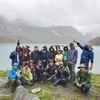
Small Group Size
Our batch sizes are capped at 15 for smaller treks with the trek leader and trekker ratio of 1:8. This ratio, in our years of experience, has proven to deliver the best trekking experience for individuals as well as groups. Capping the size of the group ensures individual attention to each trekker so that no signs of distress or need during the trek go unnoticed. It also helps to form a more cohesive cohort with better group energy which helps define the rhythm and pace of days on the trek. As you go higher up on the BRS scale, since the stakes are higher, expeditions have an even smaller group size with the ratio of expedition leader to climber set at 1:2.
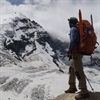
Qualified Trek Leaders
We follow a rigorous regime of hiring and training our experts in the field. Each trek leader is a certified mountaineer with years of experience in the field. In addition to their qualification, they also go through practical and situational training to tackle any and all kinds of sudden conditions that may present themselves on the ground. Being unpredictable is the core nature of the mountains but being ready for any circumstance as best as possible is a controllable asset that we try to nurture. Our field experts are also trained in basic medicine and first-aid response. Watch: Forerunners - The Making of A Trek Leader At Bikat Adventures
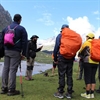
Guided Progression
Since Bikat Adventures is a learning-based organization, we help you climb up the ladder of difficulty within the sphere of outdoor adventure systematically. Our on-ground training modules are designed to handhold you through the upskilling process so that you are ready to take on bigger challenges.
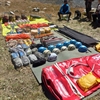
Equipment Quality and Check
All the gear used on our treks and expeditions is tried and tested, maintained for good quality, and is overall top-notch in quality and condition. We are continually looking to obtain the best of everything there is in the market so as to ensure optimum safety.
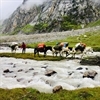
Support Systems
Along with the staff you see on-ground, we have a team of superheroes working in the background to give you the best experience possible. Our background team also comprises local staff from each area who know the region best. Having local support helps with studying the area, pre-planning, execution, and in receiving timely support in case of emergencies in these remote locations.
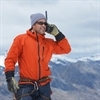
Communication
Our on-field staff is in constant contact with our teams based in primary locations so as to eliminate any avoidable delay in reaching additional help and support when required. We try to use the best tools for communication available, including satellite phones, in regions where they are not restricted.
What our customers Say

Cancellation Policy
Cash refund
Cancellations up to 30 days prior to departure date
5% deduction
Cancellations between 30 days to 15 days prior to departure date
50% deduction
Cancellations within 15 days prior to departure date
Voucher refund
Cancellations up to 5 days prior to departure date
No Deduction
Cancellations within 5 days prior to departure date
- Cash refund is applicable only in case of bookings made without using any promotional offer code or vouchers
- This is only a brief of cancellation terms. For finer details please refer Detailed Cancellation Policy.
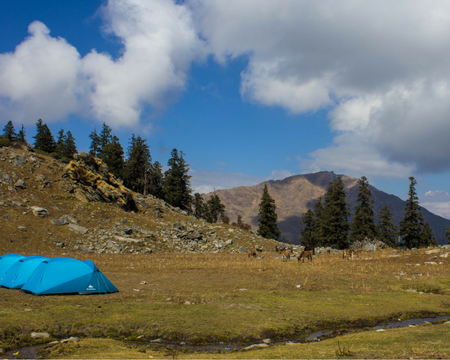
Subscribe for latest updates & offers
Similar adventures.
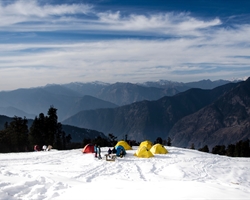
Brahmatal Trek
The best beginners' trek in uttarakhand.
Uttarakhand
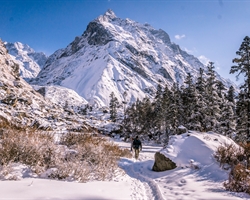
Har ki Dun Trek
A gorgeous river valley trek for beginners.
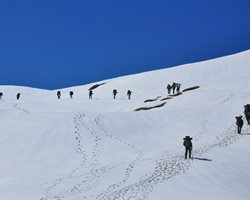
Panwali Kantha Trek
Enter your email, events by categories.

Mountaineering

Scuba Diving
Events by months.
- January July
- February August
- March September
- April October
- May November
- June December
Events By Nights
- 5 & More Night
- Environmental Policy
- Privacy Policy
- Term & Conditions
- Work With Us
- Address: 303, 3rd Floor, Tower B4, Spaze Itech Park, Sector 49. Gurgaon
- Pre Sale - 8448680062 , Post Sale - 8588878499, 9667639126
Bikat Adventures
- Cancellation & Refunds
- Content Sharing
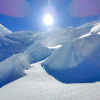
© 2024 Bikat Adventures - All Rights Reserved
Powered by: novel knett software solutions, submit enquiry.
You will receive an email containing a link allowing you to reset your password to a new preferred one.
Verification mail has been sent.
Please check your mail to verify your account.
Click Here to Login
- How To Reach
- Dates & Price

30°26'45.3"N 79°34'12.0"E
- Kuari Pass Trek

Joshimath, Uttarakhand
Pickup Point
Railway Station, Dehradun
Minimum Age
- The views from Kuari pass trek are majestic, unreal and 360 degrees.
- The maximum altitude of the Kuari pass trek is around 12,716 feet, demanding 6 days of trekking.
Kuari Pass Trek - Best Winter Trek
Kuari pass trek which is one of the best Winter trek, lies south of the Tibetan border begins from Joshimath, in the Chamoli district of Himalayas; which has evolved into a hub for trekkers and pilgrims in this part of Himalayas. Kuari means "doorway" and we suggest it to be a doorway into your inner-self. As you reach higher, the Himalayas are arrayed before you in a stupendous arc and the play of light from the trees is a visual delight. Looking so closely at the sky-high mountains is almost religious. Walk through the jungles of oak and deodar to get the closest view of mt. Nanda Devi.
Kuari Pass Trek Difficulty
Kuari Pass Trek is a high altitude Himalayan trek . The level of this trek is easy to moderate, which demands physical fitness, stamina, and endurance. No prior trekking experience is required which means beginners are always welcomed. The duration of the trek is just od 6 days and it is around 33 kilometers altogether. You would find some steep slopes or risky ridges. Most of the trail is covered with forests. It might get a bit difficult during the winter when the snow starts to play its part because the trail gets submerged in the snow, otherwise, it is considered to be an easy trek all around the year.
Kuari Pass Elevation
Kuari Pass lies at a high altitude in the laps of Himalayas. The maximum altitude of the trek is around 12,716 feet, demanding 6 days of trekking.
Temperature at Kuari Pass Trek
Kuari Pass during the winter months of November to March tends to go below the 0-degree centigrade mark. The minimum temperature is around -3-degree centigrade while the maximum is around 10-degree centigrade. There will be snowfall and the whole region will be covered with snow. During the rest of the year, the weather remains quite pleasant. The minimum temperature is around 4-5 degrees centigrade while the maximum temperature hovers around 15-18 degrees centigrades. You can expect rains during the months of July and August as the weather remains overcast due to clouds covering the entire region.
Best time to visit Kuari Pass Trek
Kuari Pass trek is best during the winter months . Winters are chilly and summers are pleasant in the regions of the trek. The best is from November to March. You will get to walk on the blanket of snow. The whole region and the surrounding hills in the vicinity will provide a picturesque setting. You will get to witness the snow-laden ranges of the mighty Garhwal Himalayas. Just make sure that you don't forget to carry a good camera or smartphone.
Kuari Pass Trek Brief Itinerary
Drive from Dehradun to Joshimath. The distance of the whole journey from Dehradun to Joshimath is around 260 Kms journey and it will take approximately 10 hours to reach Joshimath via road. Once we reach Joshimath, We will take a rest and stay overnight. Dinner will be served at night. We will try to start the second day of our trek from Joshimath to Guling top. we will drive to Dhak village. The distance from Joshimath to Dhak village is around 12 kilometers and it takes around an hour of drive to reach Dhak village. We will start our trek from Dhak Village to Guling Top Campsite which will be the destination for day 2., On day 3, we will advance to Tali Top. The altitude of Tali Top is around 11,000 feet. It takes around 5 hours to reach the Tali Top forest campsite. The complete trek distance from Guling top campsite to Tali Top forest campsite is around 6 Kilometres. On day 4, this is the toughest day of the whole trek. We will trek to the Kuari pass which is at an elevation of 12,716 feet from the mean sea level. The total trek distance is around 15 kilometers and it will take approximately 11 hours to complete the scheduled task of the day. After this, we will make our way back to the Tali base camp and this will mark the end of the longest and the most hectic day of our trek. On day 5, Trek from Tali forest camp to Joshimath via Gurson Bugyal. On day 6, This will be the last day of the trek on which we will drive you from Joshimath to Dehradun.
Kuari trek booking with Trekmunk is very easy. I would like to assure you that booking a trek with us is as simple as putting the icing on the cake. You will find a "Book now" option on this page. Click on the option and fill in all the details that are being asked and then forget everything and prepare for the trek. In case of any kind of queries, you can mail us or call us on the number that is provided on the website. Our trek care executive will always be ready to assist and guide you.
Peaks Visible from Kuari Pass
Brief itinerary, detailed itinerary, day 1 : drive from dehradun to joshimath.
Note: Trekmunk arranges transport from Dehradun Railway station at 7.00 am on Day 1 of the trek. The cost of this transport (Rs.6,500 per cab) will have to be shared by trekkers. You can pay the driver directly. The cost might go up, depending on the availability and other unforeseen factors.
will arrange a pick up for you from the Dehradun Railway station early in the morning that shall take you to Joshimath (You will have to pay for the cab as it is not included in the package). The distance of the whole journey from Dehradun to Joshimath is around 260 Kms journey and it will take approximately 10 hours to reach Joshimath via road. The 10-hour journey from Dehradun to Joshimath will be exhausting but throughout the trail, you will never run out of alluring views, so don’t sleep as you might miss out on a view that you will cherish forever. We will come across many confluences of rivers and spectacular landscapes all along the drive from Dehradun to Joshimath.
We will cross a lot of places while our drive from Dehradun to Joshimath. We will break this journey into 6 parts. The first one is a drive from Dehradun to Rishikesh which is around 24 kilometres. Rishikesh is called as the adventure capital of India. It is famous for river rafting and you can get glimpses of rafts flowing swiftly over the gushing water through an undulated terrain. From Rishikesh, we will drive to Devprayag which has a distance of 74 kilometres and it will consume around 150 minutes to reach Devprayag. You will find the confluence of the two purest rivers namely Bhagirathi and Alaknanda. The water is crystal clear and is accompanied by a light blue texture. From Devprayag, we will make our journey to Srinagar which is around 40 kilometres. An hour of the drive will take us to Rudraprayag which is around 33 kilometres from Devprayag. Here, you will find the confluence of the Mandakini and Alaknanda river. The way to Kedarnath starts from Rudraprayag. The next point will be Karnprayag which has the confluence of Pindar and Alaknanda river. A drive of 3 hours will take us from Karnaprayag to Joshimath. The mobile network will be available throughout the drive from Haridwar to Joshimath.
Once we reach Joshimath, it will mark the end of day 1 on this trek to Kuari Pass. We will take a rest and stay overnight. Dinner will be served at night and in order to have an ample amount of rest, we will suggest you sleep early.
Day 2 : Trek from Joshimath to Guling top
We will try to start the second day of our trek as early as possible. The morning breakfast will be served at the campsite. After breakfast, we will drive to Dhak village. The distance from Joshimath to Dhak village is around 12 kilometers and it takes around an hour of drive to reach Dhak village via road. During this drive, you can look out for the Sleeping Lady Mountain of Joshimath with gentle slopes running through a long distance. The actual trek via foot starts from Dhak village. We will start our trek from Dhak Village to Guilng Top Campsite which will be the destination for day 2. The whole distance from Dhak village to Guling top campsite is around 6 kilometers and it takes around 4 to 5 hours to complete the required distance. The trail is a mixture of gradual and steep ascent which passes through a lot of villages. These villages will serve as water points and we can refill the water bottles from here. The whole trek from Dhak village to the campsite will pass through delightful surroundings comprising of hemlock, oak, and rhododendron forest. A series of wheat fields, flower beds and huts with a thatched roof will be delightful to watch. You will also find a few streams with clean and clear gushing water that can replenish the water supplies. Moving ahead, you will witness the mesmerizing sight of the bright sun-kissed Dronagiri peak. There lies a splendid snow-capped ridge from where you can witness the elegant Chaukhamba peak. There are few other peaks such as Hathi Parvat and Ghori Parvat which also assures breathtaking views from the trail. Passing through open meadows and oak forests, we will reach Guling Top. Once we reach the campsite we will stay overnight. Dinner will be served at the campsite. Tents will be pitched and fun activities will be organized.
Day 3 : Trek to Tali Top forest camp via tali top from Guling Top Campsite
We will be starting the day early with a few minutes of yoga and healthy exercise. After having breakfast at the previous campsite, we will advance to Tali Top. The altitude of Tali Top is around 11,000 feet. It takes around 5 hours to reach the Tali Top forest campsite. The complete trek distance from Guling top campsite to Tali Top forest campsite is around 6 Kilometres through some green vegetation and really beautiful serene beauty of the hills. The whole trail comprises of dense mountain forests covered with rhododendrons, silver birch, and spruce. The magnificent alpine meadows will fill your heart with joy. An uphill trek covering 3 kilometers will take us to lush green meadows where there are well-composed tracks from Tapovan. The panoramic landscapes, wide lush green pastures, frozen ice valleys and a thrilling advancement of the trail make this journey a memorable one. The last water point is at Forest Hut which is at an elevation of 9,840 feet. The next ascent is quite steep as it connects the forest Hut to Tali top which is located at an elevation of 11,480 feet. You will find the calm and serene Tali lake here. The total trek distance from Forest Hut to Tali Top is around 2 kilometers. You can witness a bunch of snow-clad mountains peaks from here. The mesmerizing views of Nanda Devi, Dronagiri, Hathi Parvat, Ghori Parvat, and Chang bang will take make you wonder about your existence. A walk of few distances along a gradual descent will take you to the Tali Top forest campsite. Here, we will camp at the end of meadow at the Tali Top. The tents will be pitched, evening snack and tea will be served as you create memories that will last for a lifetime. Retire to your tents after a hearty breakfast and re-energize yourself for the day to come.
Day 4 : Trek to Kuari Pass and back to the Tali Top Campsite
This is the toughest day of the whole trek. We will trek to the Kuari pass which is at an elevation of 12,763 feet from the mean sea level. The total trek distance is around 15 kilometers and it will take approximately 11 hours to complete the scheduled task of the day. It is important to carry enough water because there is no water source on the whole way to the Kuari Pass. The first step is a trek from Tali Top to Khullara Top. Khullara top is at a height of 11,800 feet and it is around 3.5 km from the Tali Top. We will reach the top of Khullara with some moderately ascending trek. A joyful walk of 2.5 km will advance us to a broken bridge comprising of a frozen stream. From here, we will be going through some snow-covered patches to reach the Kuari Pass. A strenuous climb of 1.5 km will take us to the Kuari Pass which is at a height of 12,716 feet. The view from the top will take your breath away and compel you to introspect the way of your living in the cities. On the top of the Kuari Pass, you can enjoy the view of Himalayan peaks including Nanda Devi. There are numerous other elegant mountain peaks namely Kedarnath Peak, Kedar Dome, Chaukhambha, Balakun, Neel Kantha, Mukut Parvat, Kamet, Abhi Gamin, Mana I, Ghori Parvat, Hathi Parvat, Dronagiri, Changabang and Nanda Ghunti. You will feel like you are in heaven being surrounded by these many mountain peaks in the vicinity. We will spend some time embracing the beauty of the setting and glorifying the magnificence of nature. After this, we will make our way back to the Tali base camp and this will mark the end of the longest and the most hectic day of our trek. It will certainly be a long and tiring day. So, we will have dinner at the campsite and proceed to sleep as soon as possible without incorporating any further delay.
Day 5 : Trek from Tali forest camp to Joshimath via Gurson Bugyal
After having breakfast we will trek down alongside Rishi Ganga river. A descent of 1 kilometre will take us to Tali Lake. The whole trek will pass through delightful surrounding comprising of a hemlock, oak and rhododendron forest. A series of wheat fields, flower beds and huts with a thatched roof will be delightful to watch. You will also find a few streams with clean and clear gushing water which can replenish the water supplies. You can witness the mesmerizing sight of the bright sun-kissed Dronagiri peak again. From here, a descent of 3.5 kilometres will take us from Tali Lake to Gurson Bugyal which is situated at an altitude of 11,150 feet. You will have packed lunch today, sitting in between a beautiful meadow. Another 3.5 kilometres of descent will advance us to Auli and make our arrival to a motorable road. Auli is famous for skiing enthusiasts. Auli is known as the ski capital of India. The breathtaking lake at Auli will provide a different kind of tranquillity to your soul. The clarity and serenity of this lake will blow your mind with excitement. This beautiful scenery and serenity of the place will surely restrict your return back into the chaotic world. The ski resort is run by Garhwal Mandal Vikas Nigam (GMVN) and offers 7 days and 14 days skiing courses. However, to ski here, trekkers have to pay whatever their package costs as it is not included in the trek package. A drive distance of 13 kilometres from Auli will lead us to Joshimath. We will have evening tea and debriefing at the campsite. A few hours later, dinner will be served and some fun activities can be organised. After that, we will go to sleep and make our overnight stay at Joshimath. The mobile network will be available at Joshimath; you can finally contact your loved ones and ensure them of your safety.
Day 6 : Drive to Dehradun
This will be the last day of the trek on which we will drive you from Joshimath to Dehradun. The distance of the whole journey from Joshimath to Dehradun is around 293 km and it will take approximately 10 hours to reach Joshimath via road. The 10 hours of journey from Joshimath to Dehradun will be exhausting but throughout the trail, you will never run out of alluring views. We will come across many confluences of rivers and spectacular landscapes all along the drive back from Joshimath to Dehradun. We will follow the same route as we followed to reach Joshimath. We will pass Karnprayag, Srinagar, Devprayag, Rudraprayag, Rishikesh and finally reach Dehradun in the evening. If we can reach on time, you can enjoy the evening Ganga Arti at Har ki Pauri in Haridwar. This will mark the end of your Kuari Pass Trek with us. Plan your onward journey accordingly. Throughout the whole return journey to Haridwar, I can assure you will keep thinking about the whole trek. The pristine snow-laden mountains and the serene cascade of water bodies will keep flashing continuously. The inclusion of such beauty on the heart will compel you to become a travel nomad who is in seek of nature’s love. Kuari Pass trek will be imprinted in your heart forever. You are certainly going to return back with a happy heart and a self promise to visit this beautiful place again and again.
We can arrange a cab for you from the pickup point in Dehradun for Joshimath but you will be liable to pay for it. The trekkers joining the trek can share the cab cost among them. For communications purposes, we will create a Whatsapp Group before the departure date of the trek and will share the details regarding the transportation. The drop at Dehradun after the trek will be arranged in a similar way.
How to reach Kuari Pass Trek Base Camp (Joshimath) :
Jolly Grant Airport is the nearest airport to Dehradun and is easily accessible, it is just 25 km away from the city. Daily flights from New Delhi are available to this airport. Take a cab/bus to Joshimath from Dehradun Bus Stand.
Dehradun railway station. Overnight trains that hail from Delhi are Nandadevi Express and Dehradun Express. People often prefer railways over airways because with trains you get to see the landscape in its full glory, it is also cheaper and you will definitely enjoy your way till Dehradun. Take a cab/bus to Joshimath from Dehradun Bus Stand.
Regular bus service is available from Delhi ISBT Kashmere Gate which plies government buses that are safe and you can rely on them more than the private buses. Take a cab/bus to Joshimath from Dehradun Bus Stand.
Latest Stories
Why trek with us .

Fixed Departures All
Get yourself fit, nutrition tips, things to take, health & safety.
- Accommodations at Trek: All accommodations on the trek will be on twin sharing basis in Tents and triple/quadruple basis at the basecamp in Homestays. Any accommodation in a hotel/guest house/hostel will be in a budget hotel.
- Services of a Professional Trekking Team: A team of an experienced Guide, Cook, Camp Staff, Porters/Mules will accompany you for all the arrangements on the trek . The team will have years of experience and well equipped for any emergency situation.
- Meals: All Meals on the Trek are included. We will serve Vegetarian Indian food on the trek which will be cooked by our high altitude chefs. It will be a five-course meal plan.
- Camping and Safety Equipment: All the camping equipment such as Tents, Sleeping bags, Toilet Tents, Dining Tent, Mattresses, and other things will be provided by us and we guarantee the quality. Safety Equipment including Medical kit, Oxygen Cylinder, Oximeter, Crampons & Gaiters(if required) will be provided by us. We recommend you to bring your own sleeping bags if possible.
- Trek Permits and Forest Camping Charges: Only for Indian Clients, All the applicable trekking permits, Camping Charges, Forest Entry Fee, etc will be paid by us. Foreigners have to pay these charges if not mentioned.
- A Life-Changing Experience: We assure you that by trekking in the Himalayas you will have a life-changing experience and we will do everything we can to provide you with the best services and make your venture in the wild an unforgettable one.
Note: Prior to booking any adventure with Trekmunk, it will be mandatory to sign the waiver form and get a medical certificate from a doctor in due time, without these, you will not be allowed to start the trek. All this will be done online without using any paper.
- GST and Other Taxes: The goods and services tax is not included in the price mentioned with the trek. They are subjected to change according to the government rules of India.
- Accommodation and Food in Dehradun: Food and stay in Dehradun and during transit are not included in the package. You can book your hotels or homestays in Dehradun, we can recommend a few good options.
- Flights and Transportation to the base camp: Flights or other means of transport are not included in the package. Transportation from Dehradun to Joshimath and back to Dehradun is not included in the package.
- Personal Equipment: Your Rucksack, personal clothing, shoes, trek poles, and other personal trekking gear is not included in this package. You have to bring your own gear according to the weather and difficulty of the trek.
- Portage of Personal Bags(Offloading): We highly advise you to carry your own burden (your rucksack) but due to any reason, if you wish to not carry your rucksack, we can arrange for a porter/mule to carry it. For this service, you will be charged over and above the trek cost. The charges for offloading vary with every trek.
- Travel Insurance: Travel Insurance is not included in this package. We recommend you to have travel insurance before opting for such adventures. You can buy insurance from us while booking the trek, it is optional.
- Personal Expenses: Any personal expenses incurred (Laundry, Bottled Water, Beverages, Snacks, Orders at tea houses or dhabas, Tips for guides, Camera fees, etc) are not included in the package.
- Emergency Expenses: Any costs arising out of unforeseen circumstances such as accidents, bad weather, landslides, road conditions and any other circumstances beyond our control are not included in the package.
- Anything not mentioned in Inclusions of the package.
Cancellation Policy And More Information
Booking terms:, confirmation policy:.
Upon Booking, An invoice will be sent to your mail & within 12 to 24 hours the booking confirmation with additional details will be sent to your mail.
Cancellation Policy:
This image is only a brief visual representation of the policy.
Please read the detailed policy carefully by clicking on this text.
_1655191763393.jpg)
Refund Policy:
Any refund applicable will be processed within 10 to 15 business days as per the company policy.
Postpone/Transfer of a booked trek:
a) You can postpone your booked trek for a period of two months (61 days) but Trekmunk will charge a 20% processing fee. The last date for the postponement will be 15 days before the start of the trek. You can book any slot for the same trek in the next 2 months (61 days) which will totally depend on the availability. You will have to confirm your slot for your future trek 15 days prior to that trek. Failing to book the slot in 2 months (61 days) time, would be considered a cancellation with no refund of any kind. The 2 months (61 days) time frame will be from the start date of the initial trek you booked for. Postponing a booked trek can only be done once. If it is postponed 45 days before the departure date, we will not charge any fee.
b) You can transfer your booked slot for the trek to any fit person till 15 days before the trek. You just have to mail us the request and rest we will handle. The new person has to get all the mandatory documents duly signed for the trek and is bound with this booking contract. It is the participant's responsibility to read and agree to all these terms.
More Information:
1. We Trek for a Cause: For overall development of the areas we run our operations in, we donate Rs 100/- per booking from our profits which are used for the upliftment of the local people and conserving nature. We have named this initiative as - Trek for a Cause. For more details, follow: https://www.trekmunk.com/trek-for-a-cause
2. We are paperless: We are focusing on Sustainable Tourism and to do that we are trying all measures to convert our trek operations to be Eco-Friendly. Going Paperless is one step closer to our aim.
3. Single-Use Plastic: Trekmunk does not encourage the use of single-use plastic items. We are ensuring that our team is working together to reduce the problem and educate those around them. We will send you instructions on how to go plastic-free on your adventures.
4. Preparing for your Holiday: Getting some additional exercise makes a lot of sense to spend time before coming on a trekking adventure. The fitter you are, the more enjoyable you will find the experience. Hiking in the hill country is the best training but jogging, squash and swimming are also good for developing cardiovascular fitness and stamina. To read more on how to get fit, follow: https://www.trekmunk.com/get-fit-for-trek
5. Electricity Supply & Plug: You will get electricity supply till the starting point of the trek. If not Indian, We recommend you check if you require an adaptor for your electrical items at: http://www.worldstandards.eu/electricity/plugs-and-sockets/
6. Currency: The unit of currency in India is the Indian Rupees.
7. Health & Vaccinations:
Severe Allergies: If you have a severe allergy please inform the Trekmunk office before you travel. We will do all we can to help, but we cannot guarantee an allergy-free environment on trekmunk trips. You will need to carry your own treatment for the allergy with you, as 'adrenaline auto-injectors' are not carried as standard by our leaders and staff. You should inform your leader on the arrival of your allergy, and let them know where you keep your adrenaline pen.
Vaccinations: You should contact your doctor or travel clinic to check whether you require any specific vaccinations or other preventive measures. You should be up to date with routine courses and boosters as recommended e.g. diphtheria-tetanus-polio and measles-mumps-rubella, along with hepatitis A and typhoid. Malarial prophylaxis is not usually required for trips in the mountains, however, if you are visiting rural and remote low lying areas then they might be necessary.
8. Passport & Visas/Identity Proofs: If foreigner, Validity for 6 months, should have blank pages, and should be kept with yourself all the time.
9. Water: If you are on a trekking or cycling holiday, water is supplied to fill up your individual bottles. This will be boiled or filtered. Additionally, you should take purification tablets or a filter bottle (such as a LifeStraw, Sawyer Filter) to treat your water when in towns or where water is not supplied. We do not encourage the purchasing of single-use plastic bottles.
10. Altitude: This adventure involves going to a very high altitude. This is not something that you should worry about; the human body is quite capable of adapting to a very wide range of altitudes, but it is important that we follow some simple rules in order to acclimatize successfully. We will send you the information in your mailbox about Acute Mountain Sickness and trekking in high altitudes. On this trip, we carry bottled oxygen for use in emergencies.
11. Guidance on Tipping: Tipping is the accepted way of saying thank you for good service. Normally the guide and any other trek staff are given their tips at the end of the trek and this is best done as a group. The main guide will make sure that the tip is appropriately distributed among all the staff members on the trek.
12. Spending/Emergency Money: Approximately Rs. 8000-10000/- (in Indian Currency)should be carried for miscellaneous expenses including porter and trek crew tips, drinks, soft drinks, etc. We recommend that you carry your travel money in the form of cash as the availability of ATM is less in these remote areas. This can also serve as your emergency spending money.
13. Travel Insurance: It is recommended to have travel insurance for these kinds of adventures. When taking out insurance please ensure the policy you choose covers you for the activities and altitude included in your itinerary. We will ask for the Travel Insurance Details over a mail. Indians can buy insurance from us while booking the trek.
Our 7 days trip to Meghalaya was a truly memorable experience. Thank you Trekmunk for arranging such an adventurous backpacking trip and a special thanks to Mohit Goswami our trip leader for giving us an experience of what true travelling is. From hitchhiking to traversing the un ...
I chose (after a lot of research) Trekmunk for my first trek - The Hampta Pass and Chandratal Trek. And I am so really glad I did so. The trekker needs to only focus on the trek and the beautiful landscape around him/her. The rest of everything is taken care of by Trekmunk from d ...
I had the best time of my life at Sandakhphu Phalut trek arranged by Trekmunk. Literally I felt like I was in heaven and I was soo very happy. I will recommend everyone to opt for Trekmunk. I was a solo woman traveler and was a bit worried, but things went very smoothly and I en ...
Our 7 days trip to Meghalaya was a truly memorable experience. Thank you Trekmunk for arranging such an adventurous backpacking trip and a special thanks to Mohit Goswami our trip leader for giving us an experience of what true travelling is. From hitchhiking to traversing the unknown places to eating delicious Momo's to climbing 3000 steps, we did it all in those 7 days which came to end so quickly and none of us wanted to go back home. Such an experience where you just pick up your rucksacks and walk down the roads of a traveller could have been only possible because of Trekmunk!
I chose (after a lot of research) Trekmunk for my first trek - The Hampta Pass and Chandratal Trek. And I am so really glad I did so. The trekker needs to only focus on the trek and the beautiful landscape around him/her. The rest of everything is taken care of by Trekmunk from day 1 till the end of the trek. Scrupulously managed logistics; no compromise on safety and security; experienced, intelligent and knowledgeable trek leaders; scrumptious meals; contingency and backup plans; etc. make Trekmunk an ideal choice to go trekking with. My trek was lead by Ashish Pathania, Prashant Reddy and Sanjay Thakur. The three are were thorough professionals. They were jolly, very helpful, experienced, knowledgeable, organized, and needless to say polite yet strict when needed. They played the most important roles in making sure our overall trekking experience was a wonderful one. Thank you Trekmunk for one of the most beautiful experiences I have had till date. Will see you guys soon.
I had the best time of my life at Sandakhphu Phalut trek arranged by Trekmunk. Literally I felt like I was in heaven and I was soo very happy. I will recommend everyone to opt for Trekmunk. I was a solo woman traveler and was a bit worried, but things went very smoothly and I enjoyed it a lot. I miss my fellow trekkers too. I am very satisfied with their arrangements.
I had the most wonderful experience trekking through the ranges of Chandrashila with Trekmunk. The small moments of achievement were phenomenal. Chandrashila is the most astonishing peak that I've ever trekked through; I've never been so fascinated. I think I am going to go for another trek with Trekmunk soon enough! The kind of hospitality that is provided to us is worth appreciating. I made many new friends and have enjoyed each and every day of this trek to its fullest.
No words for the bike trip from Srinagar to Leh. One should experience it to feel it and all this because of the management of Trekmunk especially Mohit and Harshit whose efforts even made the hardest of the ride exciting adventurous and above all safe. Although some hindrances which are quite common like bike issues and medical problems arose with our co-riders, I liked the way these two guys handled it dexterously. I went with one of my best friends and came with a lot more and the trip turned out to be memories that can be cherished for a lifetime. Thanks, Team Trekmunk for giving me a wonderful experience. I can't wait to go on my next adventure with them.

Related Blogs
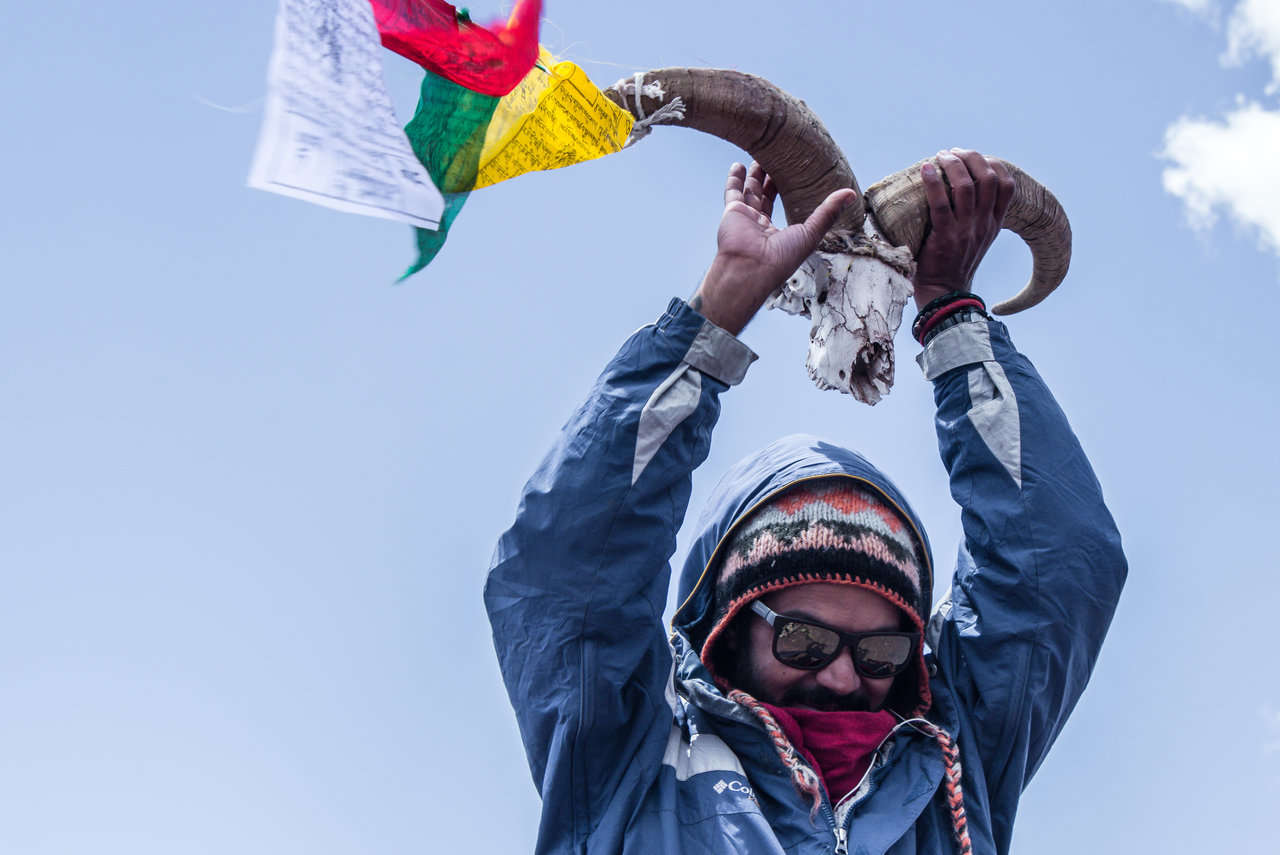
Related Tours
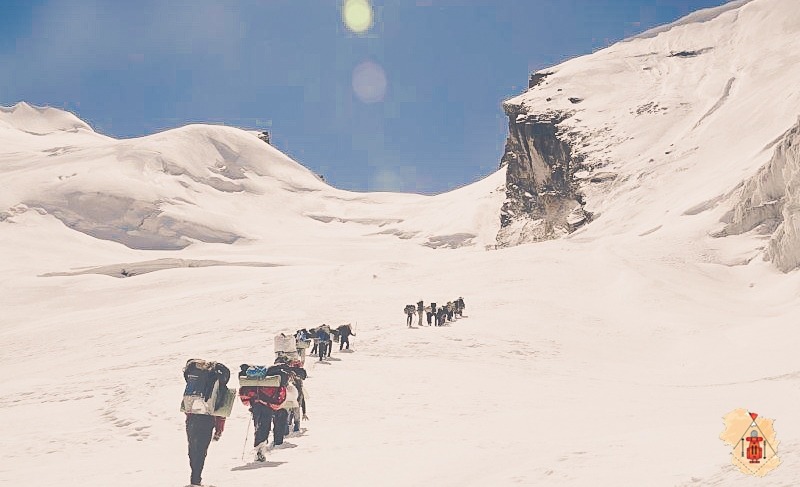
Auden's Col Trek
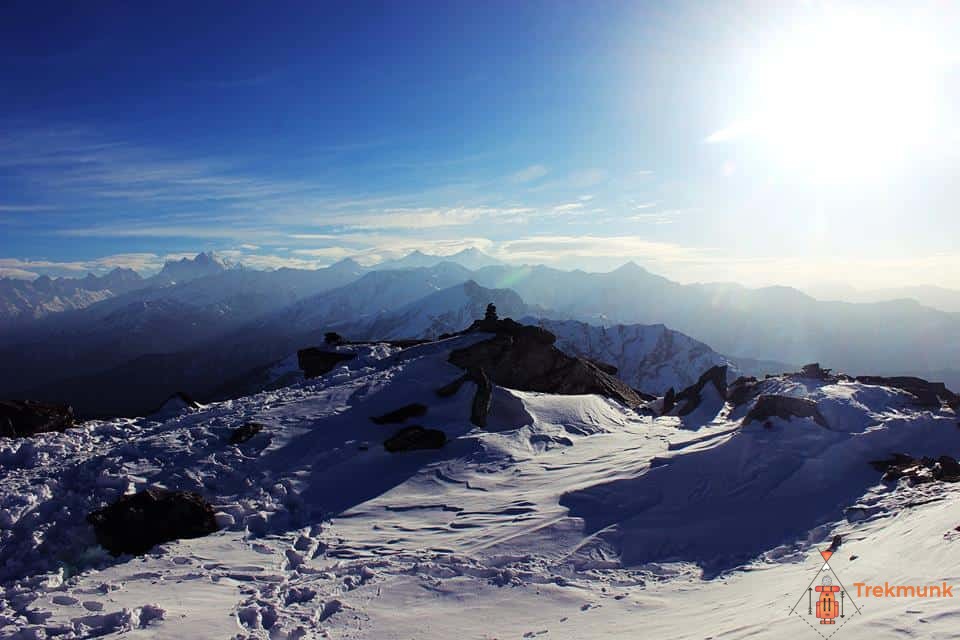
Kedarkantha Trek
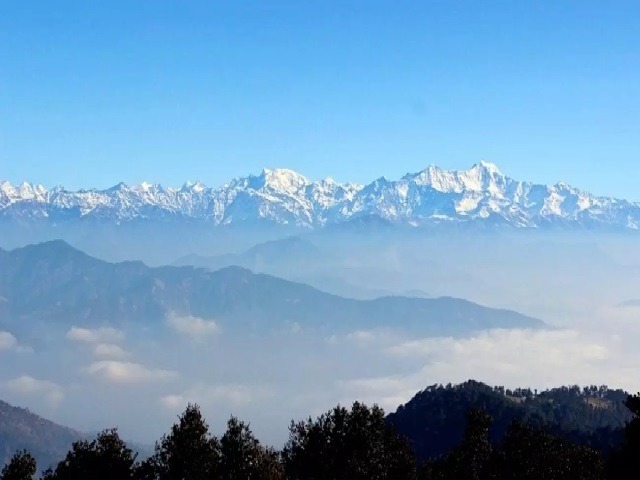
Nag Tibba Trek
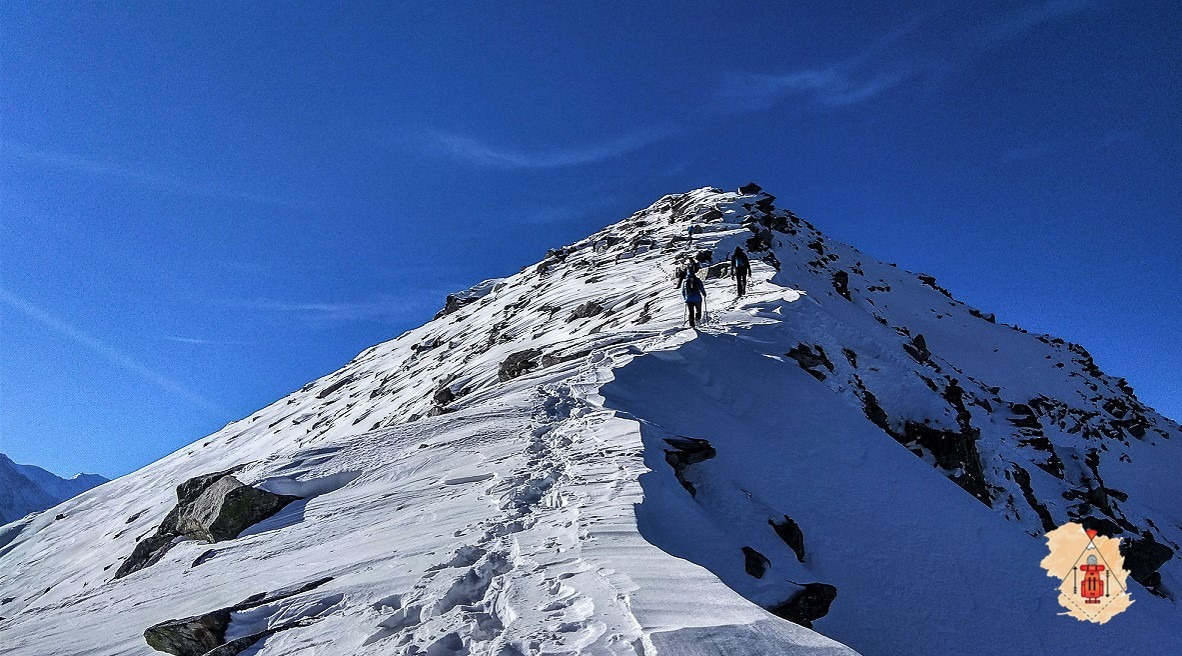
Pangarchulla Summit Trek
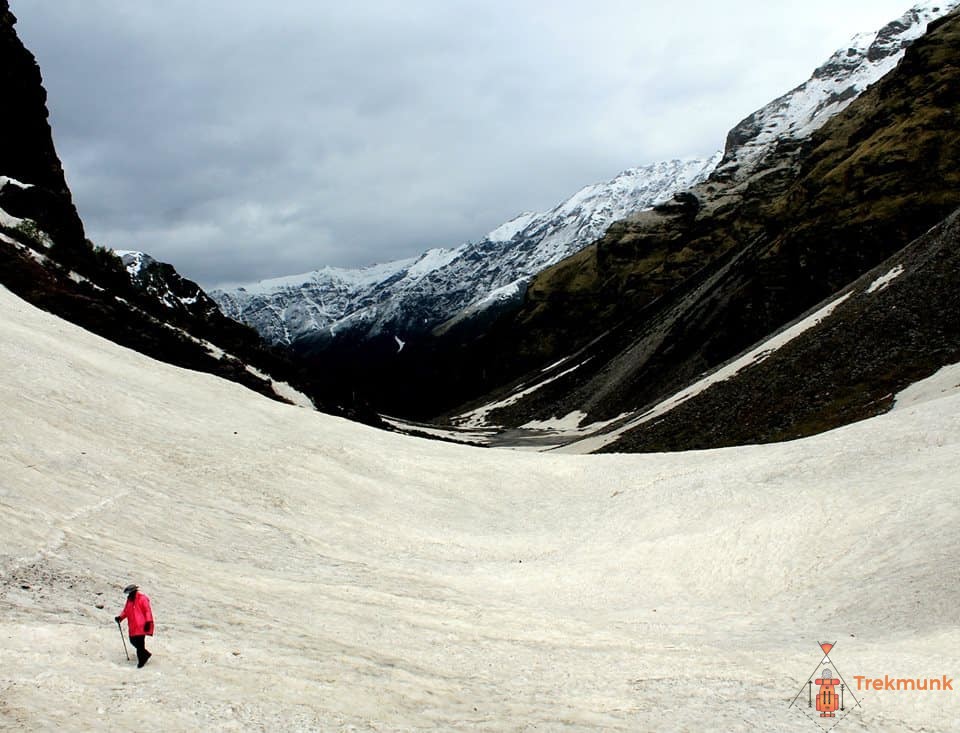
Rupin Pass Trek

"Trekmunk is changing the indian trekking industry"
"10 Most Promising Adventure Sporting and Trekking Companies - 2020"
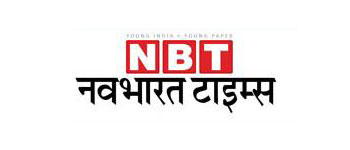
" Things you do for the Passion for Travel"
Hello there, How can we help you ?
Timing: 10 am to 6 pm IST (GMT +5:30)
Whats App Us
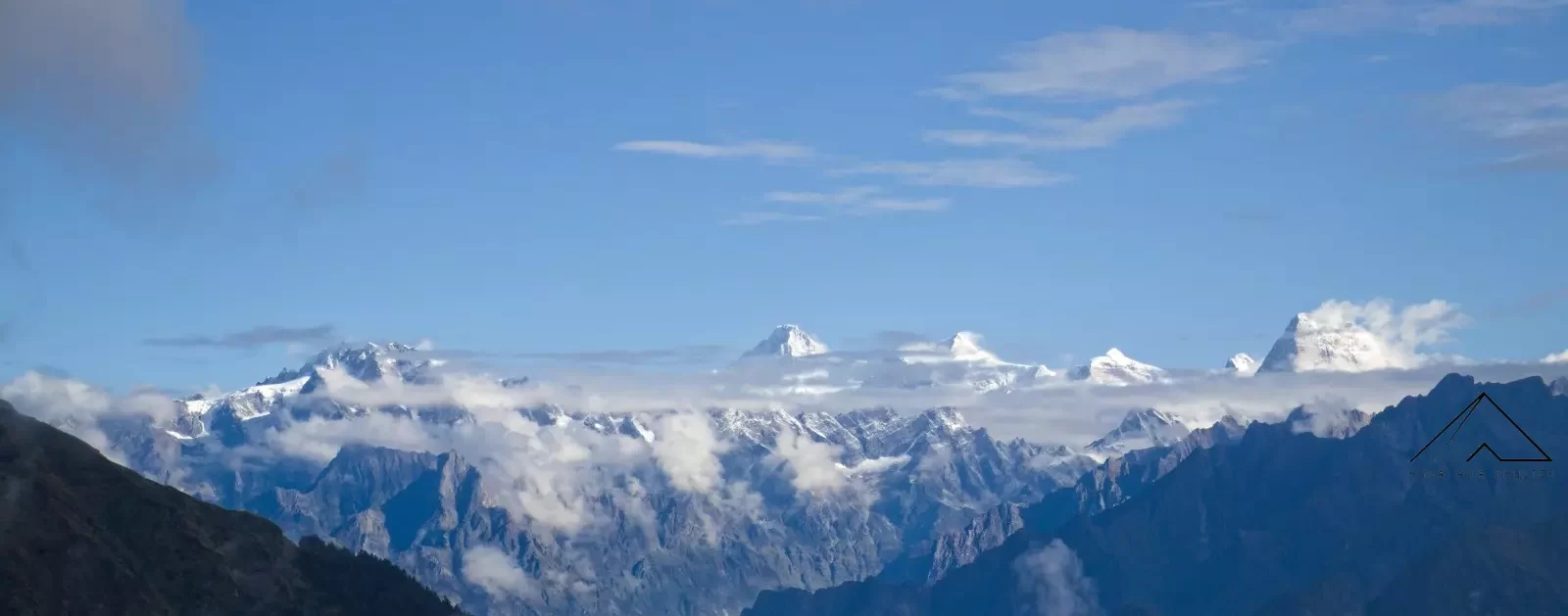
Kuari Pass Trek
Lord curzon's trail, the most magnificent himalayan winter trek in the uttarakhand, kuari pass trek in various months-, march-april:-.
- Weather: During the Kuari Pass Trek in March and April, the weather is usually pleasant. The sun shines gently, and sometimes there might be a little rain shower to freshen things up.
- Scenery: During this time, the meadows turn into a lush sea of green. It's like nature's canvas coming to life with a burst of colorful wildflowers.
- Temperature: Temperatures along the Kuari Pass in the daytime usually range from 10 to 15 degrees Celsius, with nights being cooler, typically between 0 and 5 degrees Celsius. It's important to bear in mind that temperatures may vary with altitude, and higher elevations often entail colder conditions.
- Weather: May and June bring warmer days. The sun shines bright, making it a perfect time for exploring.
- Scenery: Spring is in full swing, and the meadows and slopes explode in a riot of colors. It's like walking through a living painting with rhododendrons and alpine blooms cascading down the hillsides.
- Temperature: In May and June, the Kuari Pass Trek sees warmer weather compared to March and April. Daytime temperatures typically range from 15 to 20 degrees Celsius, while nighttime temperatures hover between 5 to 10 degrees Celsius. Nevertheless, it's important to note that at higher altitudes, temperatures can still drop below freezing during the night.
July-August:-
- Weather: Monsoon brings a refreshing change. The rain washes the landscape, creating a vibrant and almost dream-like beauty but avoid trekking in Kuari Pass during the monsoon season due to the occasional showers, slippery trails, and landslides.
- Scenery: The monsoon turns the region into a lush, green paradise. Waterfalls cascade down the slopes, and the forests become a haven for a variety of plants and animals.
- Temperature: The temperature in Kuari Pass Trek during the month of July-August is generally warm and humid, with average daytime temperatures ranging from 20 to 25 degrees Celsius and average nighttime temperatures ranging from 10 to 15 degrees Celsius. However, the temperature can vary depending on the altitude and the weather conditions.
September-October:-
- Weather: September and October welcome trekkers with clear skies and cool, refreshing air. It's the perfect weather for an invigorating trek.
- Scenery: The meadows turn golden as autumn sets in. The landscape is dotted with golden leaves, creating a picturesque view against the towering peaks.
- Temperature: In September and October, daytime temperatures along the Kuari Pass Trek typically range between 10 and 15 degrees Celsius, while nights tend to be cooler, with temperatures between 0 and 5 degrees Celsius. It's worth noting that temperatures may fluctuate with altitude, with higher elevations often experiencing colder conditions.
November-February:-
- Weather: Kuari Pass weather in winter brings a calm, snowy blanket to the region. The air is crisp, and the landscape shimmers in the gentle winter sun.
- Scenery: The meadows and slopes transform into a sparkling, snow-covered wonderland. The quiet of the winter landscape adds a touch of magic to the trekking experience.
- Temperature: The temperature in Kuari Pass Trek during the month of November-February is cold, with average daytime temperatures ranging from 5 to 10 degrees Celsius and average nighttime temperatures ranging from 0 to -5 degrees Celsius. However, the temperature can vary depending on the altitude, with the higher altitudes being colder.
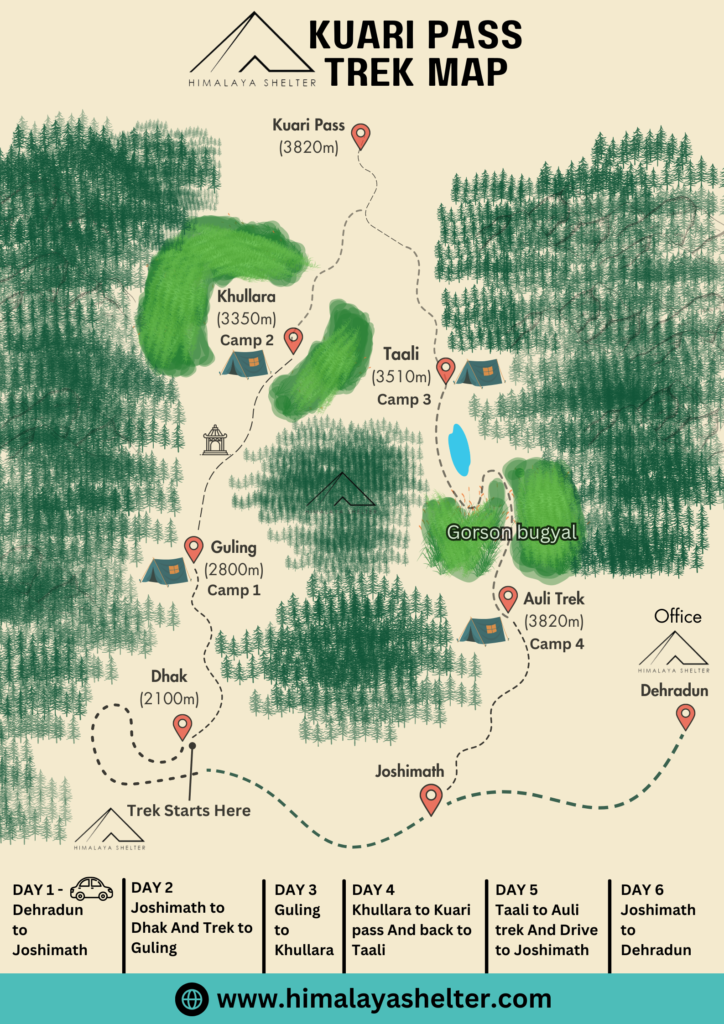
Best time to Vist Kuari Pass Trek-
Kuari pass trek from various places-, from delhi:.
- By Road: The distance from Delhi to Kuari Pass starting point (Joshimath) is approximately 476 km via NH-7 and 512 km via NH-334 . Traveling by bus, taxi, or self-driving are all viable options. The bus journey takes about 12 to 14 hours, while a taxi ride typically spans 11 to 12 hours. If you plan to self-drive, ensure you check road conditions beforehand.
- By Train: There isn't a direct train route from Delhi to Joshimath . You can take a train to either Haridwar or Rishikesh and then proceed by bus or taxi to Joshimath.

From Dehradun:
- By Road: The road distance between Dehradun and Joshimath is approximately 290 km. You have the option to travel by bus, taxi, or self-drive. The bus journey takes around 9 to 10 hours. If you choose to self-drive, do check road conditions prior to departure.
- By Train: Similar to Delhi, there's no direct train route from Dehradun to Joshimath. You can take a train to Haridwar or Rishikesh and then proceed by bus or taxi to Joshimath. The train journey to Haridwar or Rishikesh takes approximately 2 to 3 hours.
From Rishikesh:
- By Road: The road distance between Rishikesh and Joshimath is approximately 270 km. You have the option to travel by bus, taxi, or self-drive. The bus journey takes around 7-8 hours, while a taxi ride usually takes 5-6 hours. If you plan to self-drive, ensure you check road conditions beforehand.
- By Road: The road distance between Auli and Joshimath is approximately 13 km. You can opt for a taxi or shared jeep to reach Joshimath, which takes approximately 30 minutes.
Conclusion-
Customize your trek with himalaya shelter:, day 1 drive from dehradun to joshimath.
Drive: 290 km; 8-9 hrs
Altitude: 2,100 ft (640 m) – 6,150 ft (1,875 m)
Accommodation: Hotel/Resort
Meals: Dinner
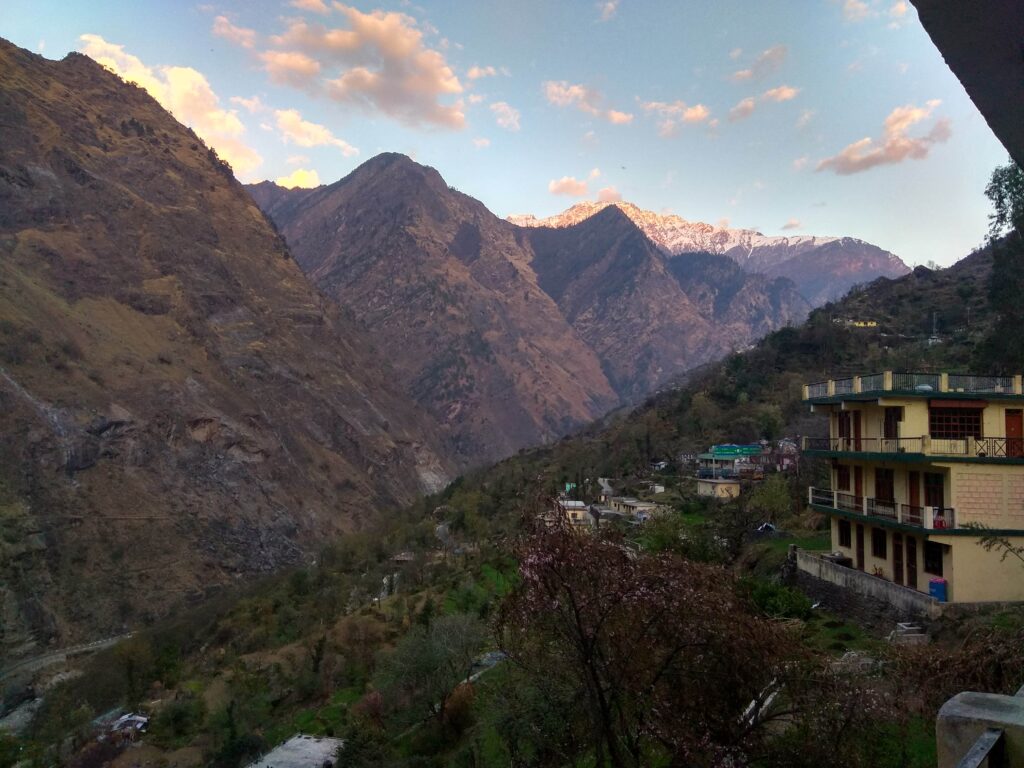
We commence our journey from Dehradun around 6:30 am, aiming to arrive in Joshimath by evening. The drive will lead us through several towns of great significance, such as Rishikesh, Srinagar, Devprayag, and Rudraprayag, two of the renowned Panchprayags, each holding its own religious and spiritual importance. Upon reaching Joshimath in the evening, we will check into our hotel. This is where we’ll make final preparations for tomorrow’s trek, ensuring that we are fully ready for the adventure ahead.
Day 2 Drive from Joshimath to Dhak and Trek to Guling
Drive: 7 km, 15 min
Trek: 5 km, 3 hrs
Altitude: 6,150 ft (1,875 m) – 6,890 ft (2,100 m) – 9,186 ft (2,800 m)
Accommodation: Camping (Alpine Tents)
Meals: Breakfast + Lunch + Evening Snacks + Dinner
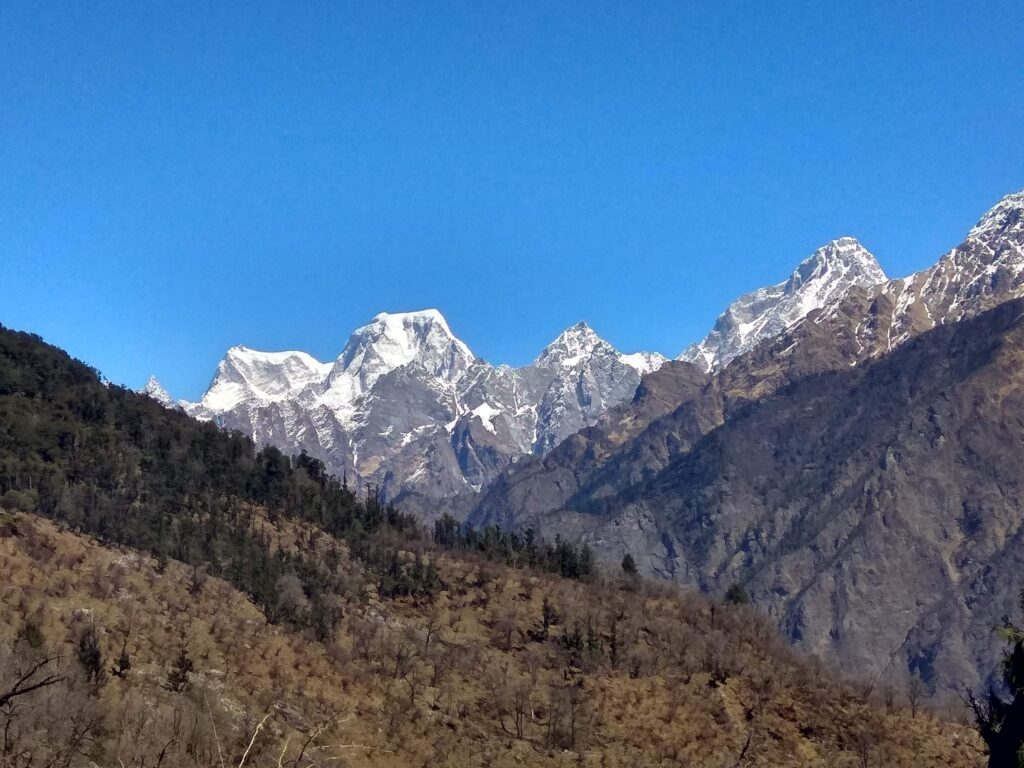
After breakfast, we drive to Dhak, towards the road to Tapovan. The trek begins from Dhak. The trail goes uphill towards our right away from the road. Over half of the path is open and without shade. We pass two villages on the way. We enter a forest about a kilometre before reaching the campsite of Guling. The camp has views towards the peak of Dunagiri. We can enjoy the tranquillity and natural beauty of the place once we arrive at the campsite.
Day 3 Trek from Guling to Khullara
Trek: 5 km, 4 hrs
Altitude: 9,186 ft (2,800 m) – 10,990 ft (3,350 m)
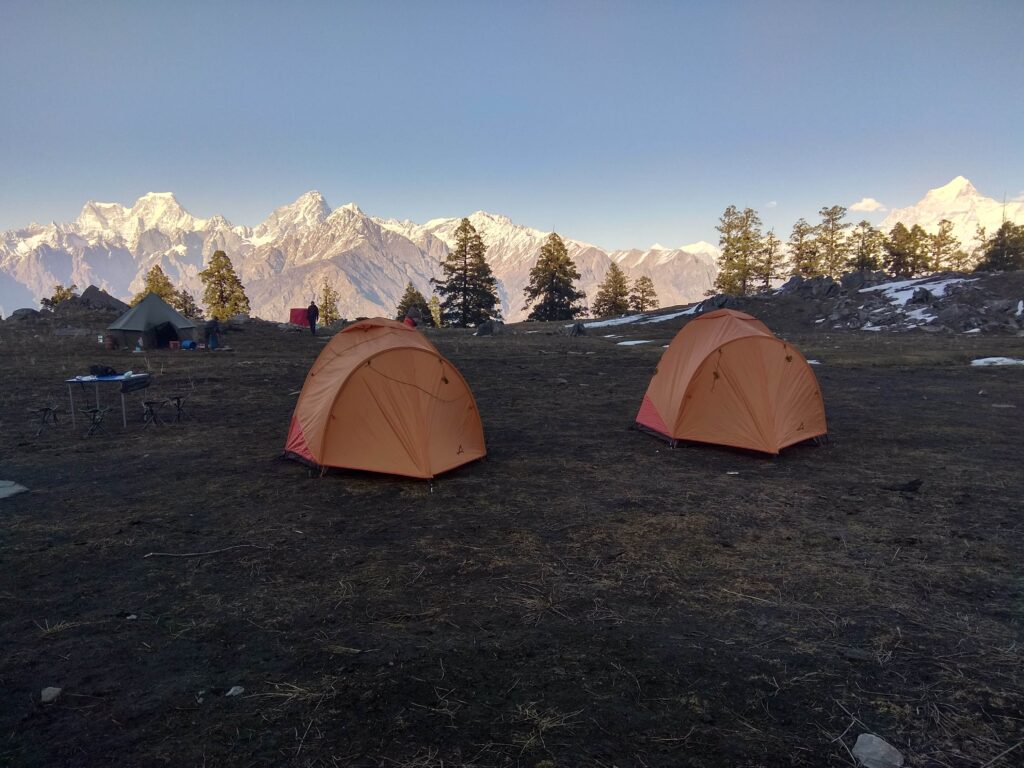
Like in previous days, we will have a healthy breakfast in the morning and begin our today’s trek. The trail today has a gradual slope up. We walk among Oak, Rhododendron, Himalayan Birch and Pine forests. Khullara is an open meadow with astounding views of surrounding peaks like Dunagiri, Hathi and Ghodi, Nanda Devi, Trishul, Kamet, Mana, Nilgiri. We will set up our campsite at khullara and stay there for tonight.
Day 4 Trek from Khullara to Kuari pass and back to Taali
Trek: 10 km, 6 hrs
Altitude: 10,990 ft (3,350 m) – 12,532 ft (3,820 m) – 11,515 ft (3,510 m)
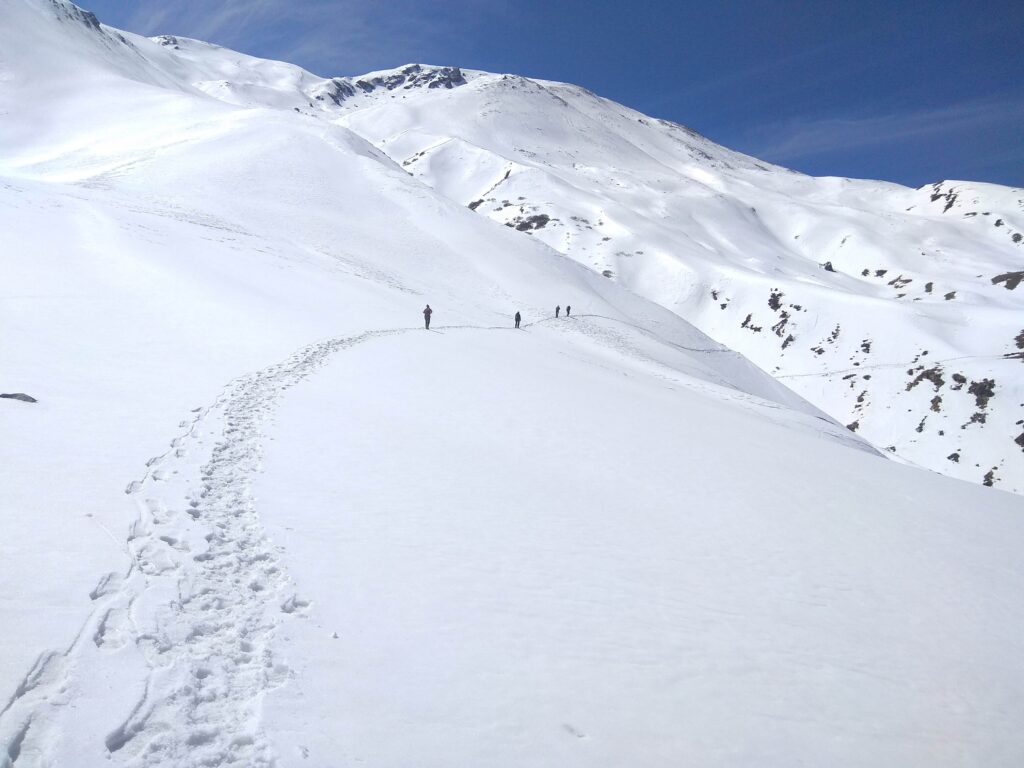
We will have an early breakfast and start walking uphill towards the pass. We will reach a ridge, cross it and take a left. The path leads us away and towards our right to the pass. We spend some time here and then head back along the same way till we reach the ridge again. From here instead of heading down towards Khullara, we walk along the ridge towards Taali. We reach a small hillock with flag, named Chitrakantha. From here we get This spot has stunning panoramic views. We can see the peaks including Chaukhambha, Neelkanth, Mana, Hathi, Ghodi and Dunagiri. We walk down the other side and proceed towards our campsite. Taali is located inside the forest and is closed from all sides.
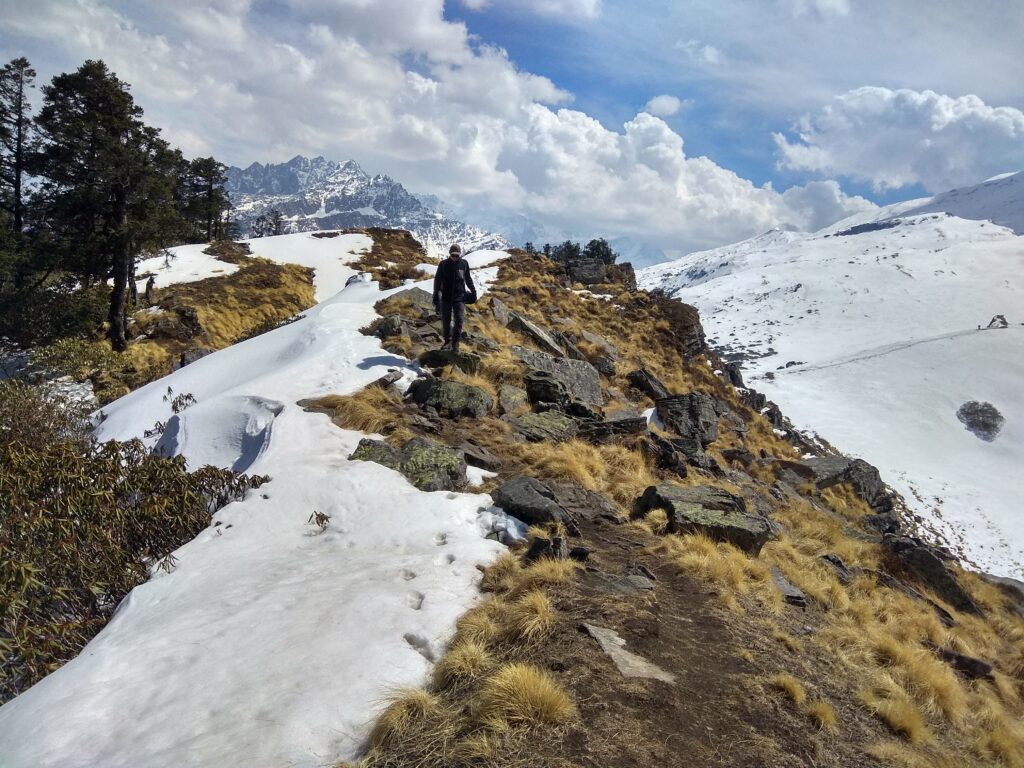
Day 5 Trek from Taali to Auli trek via Gorson Bugyal; Drive to Joshimath
Trek: 7 km, 3-4 hrs
Altitude: 11,515 ft (3,510 m) – 6,150 ft (1,875 m)

On this day, the walk is easy. The forest clears away soon. We pass by Taali Lake, which is often frozen in winter. As we keep traversing towards Auli, the view of Nanda Devi peak becomes clearer towards our back. After crossing Gorson Bugyal, a large meadow, we enter a forest. A short walk further, the skiing destination of Auli presents itself. A vehicle will take us back to Joshimath from here where we will check into the Hotel.
Day 6 Drive from Joshimath to Dehradun
Drive: 290 km, 9-10 hrs
Altitude: 6,150 ft (1,875 m) – 2,100 ft (640 m)
Meals: Breakfast
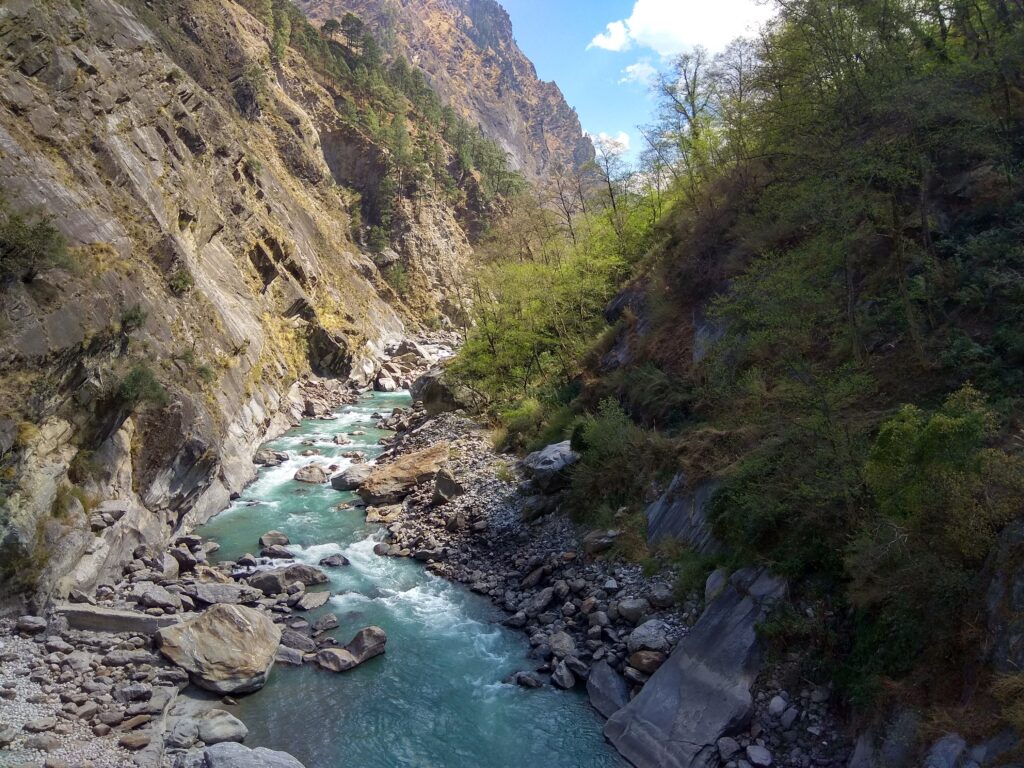
We leave from Joshimath and reach Dehradun by early evening.
Day 2 How difficult is the trek & what are the challenges?
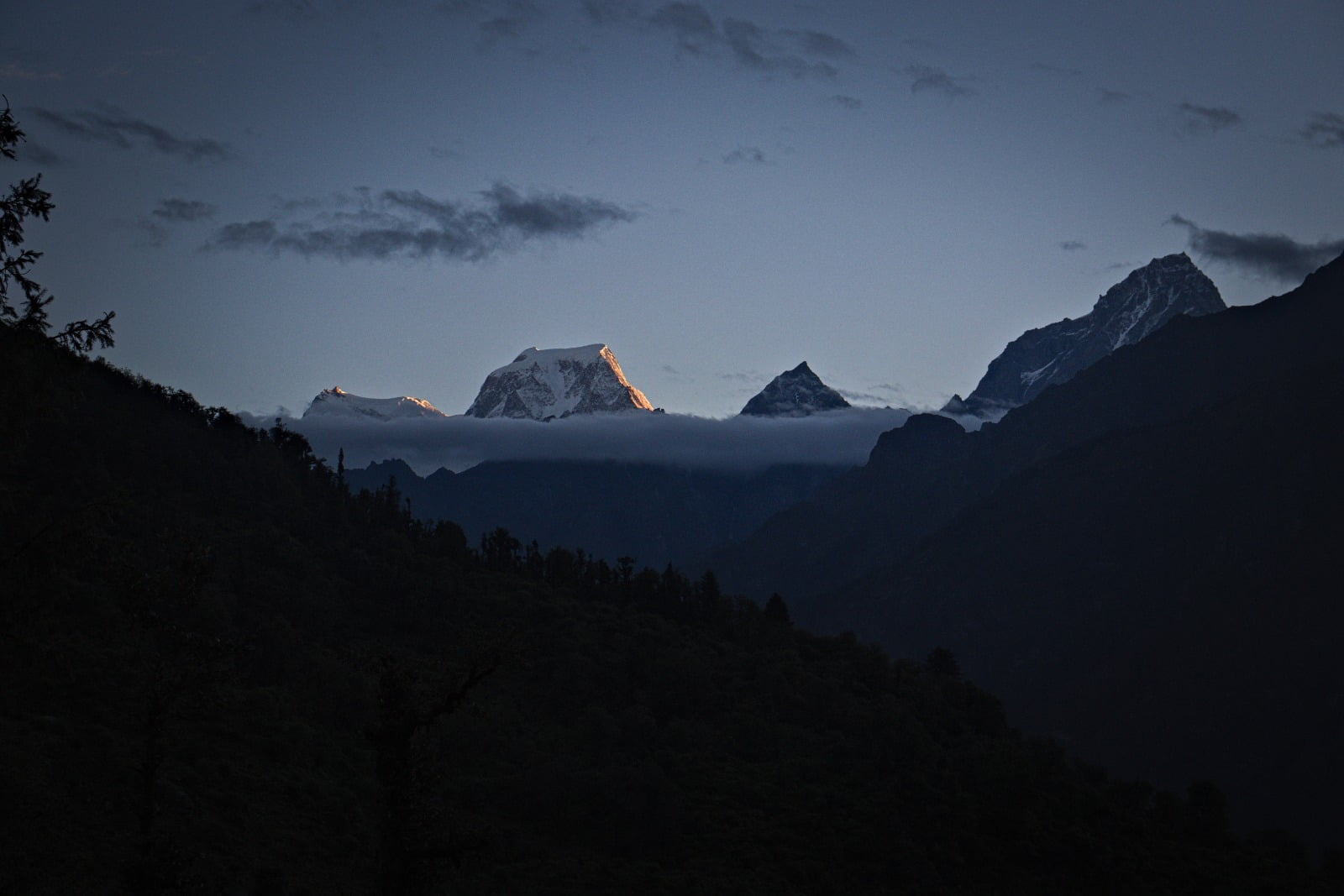
Upcoming Treks
- September 7, 2024 open
- September 8, 2024 open
- September 14, 2024 open
- September 21, 2024 open
- September 22, 2024 open
- September 29, 2024 open
- September 30, 2024 open
- October 5, 2024 open
- October 6, 2024 open
- October 12, 2024 open
- October 19, 2024 open
- October 26, 2024 open
FAQ's about kuari pass trek
How difficult is the trek.
- Kuari pass is an easy- moderate trek in terms of difficulty. It is a 6 days trek and generally categorized as easy for experienced trekkers and moderate for beginners.
- The trek gains an altitude of 6,000 feet within 3 days. Hence, it requires us to trek up to 4 hours everyday except for the day of summit.
- The trek reaches an altitude of only 12,500 feet making it suitable for beginners with no prior experience (but good fitness level) and for experienced trekkers who are looking for a lighthearted trek.
- The overhanging trail from Tali Campsite to Gorson Bugyal is marked by a narrow trail with a number of fluctuations which can get a little problematic on days with heavy snowfall.
What is the best time to visit the trek?
- Mostly winter because it offers a white setting full of snow covered forest and grasslands which makes the trek enchanting and almost magical.
- However, if you are a fan of the meadows, Kuari pass is beautiful in all the 4 seasons. Early autumn provides the lush green views. It is golden in the late autumn. Year round you will be able to see snow covered high rising peaks on the trek.
Which months is the trek open/close?
Kuari pass is open 8 months of the year except during rainy months, i.e. July and August. It also closes during peak winter months for 2 to 3 days when there’s heavy snowfall .
What are the main attractions of the trek?
- Kuari pass trek is popularly known as “ Lord Curzon’s trail “.The British Viceroy, George Curzon, attempted crossing it in 1905 and remarked about the beauty of the trek.
- Mt. Nanda Devi is a mountain not easy to be sighted. In Kuari pass trek, you see it from Auli to Gorson Bugyal in the first day itself. It is a view that most trekkers would die for. Mt. Nandadevi is the highest peak in India after Kangchenjunga .
- Neelkanth, Chaukhamba massif, Hathi Ghoda, Dronagiri mountains, Trishul, Nandaghunti, Mana and Kamet are also visible.
Where will you find the last ATM?
The last ATM is in Joshimath which is a big city in Uttrakhand. A simple google search will reveal the nearest ATM in your location.
Where will you lose network coverage?
There’s scarcity for network connection in Kuari pass but there are some points where you might find good network for communication.
You will find good network and internet connection at Joshimath, Dhak village, Tali (beyond the lake facing the valley), Auli and Gulling . VI, Airtel, BSNL and Jio are mostly available in this part of Uttarakhand.
You will get good network connectivity at Khullara campsite towards the edge facing the valley but no internet whatsoever.
Will you find electricity?
Joshimath is the last point which has an electrical connection.
However, after starting the trek, you will not find electricity until you reach Auli .
We strongly suggest you bring additional batteries and powerbanks for your electronic devices.
Where will you find the nearest Hospital or information for emergencies?
For minor issues, the nearest medical care can be found in Joshimath and Chamoli . However, for major emergencies, the nearest hospital is in Srinagar or Dehradun which is an 8-9 hours drive from the basecamp.
What is the best time to do the trek and how is the weather?
What are the top highlights of the trek.
- Transport Support from Dehradun from Day 1 to Day 6
- Accommodation on Twin Sharing basis. Day 1 & Day 5 in Guest house, rest in camps
- Meals from Day 1 Dinner to Day 6 Breakfast
- Adventure Travel Insurance
- Guide, Cook & Other Support Staff
- Forest Permits
- Camping Equipment, Dining Tent & Stools, Kitchen Tent, etc.
- Your designated hotels may not reopen by the time you reach there. While we are making alternate arrangements, do understand that things may not be as “tip-top” as our designated hotels.
- The gurudwara, Hemkund Sahib may not be open. While we are trying to take permission to go to Hemkund Sahib, if it does not happen, then do understand that the pandemic has put restrictions beyond our control.
- Personal expenses like tips, personal medicines, phone calls etc
- Any cost or services not mentioned in the Inclusions
- Any transport support during the trek apart from what is included above
- Accommodation in Dehradun
- Cost arising due to unforeseen incidents like bad weather, medical evacuation, roadblocks etc
- Personal Baggage Offload, at INR 350 per bag per day or INR 1400 for entire trek
- lunch box for packed lunch/breakfast. To avoid using polythenes and Aluminium foils. Keeping the Himalayas clean is our own responsibility. Reduce the use of Plastic when you are in the abode of the Sacred Himalaya
- 17-07-2021 to 23-07-2021 open
- 17-07-2021 to 23-07-2021 close
Send Request
Your query has been successfully registered. we will contact you within 24 hours., something went wrong.try after sometime..
- Weekend +91 87 6262 3333
- Himalayan +91 9886 444 809
- International +91 84968 85968
- [email protected]
- One Day Treks
- Two Day Treks
- Himalayan Treks
- International Treks
- Private Treks
- Group Adventures
![Trek to Kuari Pass [Premium] - Tour Trek to Kuari Pass [Premium] - Tour](https://vl-prod-static.b-cdn.net/system/images/000/340/281/a3b594d76996c48e67271ecada3960d2/x600gt/Trek_to_Kuari_Pass.png?1615964042)
- Trek to Kuari Pass [Premium]
- Secure & Easy Booking
- Best Price Guaranteed
- 1000+ Happy Customers
- Winter Treks 2023 & 2024
If you’re looking for an easy trail to start your Himalayan journey, look no further, Kuari Pass trek is the just the right trek for you. This easy to moderate trail was discovered back in early 1900s by the then Viceroy of India, Lord Curzon. The trail then got named after the keen trekker and has been called the Lord Curzon trail ever since. Kuari pass trek height is 13,989 ft (4,264 m), this trail is blazing with gorgeous views of the surrounding mountains, mystical forests and breathtakingly gorgeous meadows.
Situated in the heart of the Garhwal region in Uttarakhand, this trail offers a diverse terrain that is perfect for a beginner to explore the Himalayas and fall in love with it. The total Kuari pass trek distance is 40+ kms.
Snow Trekking
The winters are a great way to explore the Garhwal region when it is drenched entirely in snow. Kuari Pass Trek offers the best experience during winters. The forests would be making way to the autumn and the meadows would be carpeted in snow. For a first-timer, this is a brilliant opportunity to trek through the thrilling terrains of the Himalayas. If you’ve trekked to the Himalayas before, this trek will surely be an epic snow adventure waiting to happen.
Rhododendron Forests:
All through the Kuari pass trek, you get to trek through the mystical and ancient forests adorned with Oak and Rhododendron trees. The forests are a perfect treat for photography lovers with tall trees touching the sky, the rays of the sun making its way through the canopy to the ground and a trail with a clearing leading to a magical meadow.
The Kuari Pass trek route goes through Nanda Devi Sanctuary. The entire trek route gives you a good close up view of the revered Mt. Nanda Devi along with other peaks such as Mt. Chaukamba, Mt. Dronagiri, Hathi Parvat, Ghoda Parvat, and Trishul Parvat. All of this makes this trek a perfect escapade from the monotony of daily life. Best time for Kuari pass trek is considered to be in the spring season. But Kuari pass winter trek is a different experience altogether.
Picture Perfect Campsites
Ever imagined what it would feel like to wake up with a view of the snow-capped mountains? This trek is all about picture-perfect campsites and great camping experiences for kuari pass winter trek. Cozy up in your camps with blankets or brave the snow and chat the night away in front of a bonfire, make new friendships and be a true nature’s nomad. When you camp in the Himalayas, you’ll get to experience what a nomadic life feels like. Making this wild enough for an unforgettable experience.
Panch Prayag
To reach the Kuari pass trek Uttarakhand, you have to travel via the five sacred river confluences in the Garhwal Himalayas. Devprayag, Rudraprayag, Karnaprayag, Nandaprayag, and Vishnuprayag in the ascending flow sequence of their occurrence.
- Devprayag is the confluence of the two holy rivers, the Bhagirathi - the chief stream of the Ganges and the Alaknanda. It is the first Prayag on the way to Badrinath. Beyond this confluence, the river is known as the Ganges.
- Rudra Prayag is the confluence where the river Alaknanda meets the Mandakini River. The confluence is named after god Shiva, who is also known as Rudra.
- Karn Prayag is the location where Alaknanda River is joined by the Pindar River that originates from the Pindar glacier, below the Nanda Devi Mountain range.
- Nandaprayag is the confluence where the Mandakini River joins the main Alaknanda River.
- Vishnuprayag - The Alaknanda River, which originates from Satopanth glacier is joined by the Dhauli Ganga River near Joshimath (on Joshimath - Badrinath route). Alaknanda flows in front of the Badrinath temple, one of the most revered Hindu shrines.
- 4 Treks in one trip
- 1N stay at Auli
- 3N camping stay along the trail
- Travel via the 4 major confluences of River Ganga
- Camp along the trail to Kuari Pass
- Trek to Khullara and get a glimpse of Pangarchulla Peak
- Day 1: Arrive in Rishikesh and witness the Ganga Arati
- Day 2: Travel to Auli via 4 holy confluence on River Ganga (Devprayag, Rudraprayag, Karnprayag, Nandprayag).
- Day 3: Trek to Taali from Auli via Gorson Bugyal
- Day 4: Acclimatisation trek to Gorson Top
- Day 5: Trek to Kuari Pass and then to base camp at Khullara
- Day 6: Trek to Dhak from Khullara and then take a jeep drive to Joshimath
- Day 7: Travel back to Rishikesh
- Day 8: Travel back home
- Day 1: Arrive in Rishikesh and witness the Ganga Arati
- Day 2: Travel to Joshimath via 4 holy confluence on River Ganga (Devprayag, Rudraprayag, Karnprayag, Nandprayag).
- Day 3: Travel to Dhak and Trek to Guling from Joshimath
- Day 4: Trek to Khullara
Detailed Itinerary for Kuari Pass Trek:
Day 1: Rishikesh
Altitude: 1,220 ft (372 m)
For the Kuari pass trek, arrive in Rishikesh and check in to the hotel. Meet your fellow trekkers in a meet and greet session where you will also be prepped for the upcoming trek. In the evening, head out to witness the magnificent Ganga Arati and explore the authentic local cultures of India. Stay the night at Rishikesh.
Day 2: Auli
Altitude: 8,218 ft (2,505 m)
Travel Duration: 7-8 hours
On day 2 you start your journey from Rishikesh to Auli for kuari pass trek india. Witness the four confluences of the sacred River Ganga (Devprayag, Rudraprayag, Karnaprayag, Nandprayag) en route and also get the very first glimpse of the snow-clad peaks when you're about to arrive in Joshimath. Check in to the hotel and stay the night at Joshimath.
Day 3: Taali
Altitude: 10,887 ft (3,318 m)
Trek Duration: 6-8 hours
Kuari pass trek route starts from here. On day 3, we start trekking towards Taali from Auli. During this trek, we meander through the narrow pathways right behind the Gorson Top trail. The trail is gorgeous with an open meadow all through. Tonight, we camp in Taali.
Day 4: Gorson Top
Altitude: 12,772 ft (3,893 m)
Trek Duration: 6 hours
Today we start trekking from Taali to Gorson Top. This trek, although slightly steep, is breathtaking and extremely rewarding because of the majestic views of the revered Mt. Nanda Devi, Hathi Parvat, Ghoda Parvat, Mt. Neelkant and the mighty Mt. Dronagiri.
Day 5: Kuari Pass
Altitude: 13,989 ft (4,264 m)
Wake up early and start your trek to Kuari Pass. Get enchanted with the majestic views along the way. On the kuari pass trek route, you will get to see various Himalayan peaks and frozen waterfalls along the way as you head towards your camp to Khullara base. Today's trek will be the toughest and you challenging as you will be trekking in snow entirely. Kuari pass trek height is 13,989 ft (4,263 m).
Day 6: Joshimath
Altitude: 6,150 ft (1,875 m)
Today is an easy trek to Dhak through the beautiful meadows and small villages. We will pass through Dhak, a smaller block in Joshimath. The views of peaks like Hathi Ghoda, Barmal & Mana will be your constant companion in today’s trek. We will reach Dhak by afternoon. Travel to Johsimath and stay overnight.
Day 7: Rishikesh
Altitude: 1,220 ft (372 m)
On your last day, you travel back to Rishikesh from Joshimath via road.
Day 9: Your City
Travel back to your city.
Trek Insurance
Trekking in the Himalayas comes with its own set of risks. While adventure is fun and can be extremely thrilling, nature can be unpredictable, and to help secure you during your trek, it is of utmost importance that you are covered with insurance.
We've gone a step ahead and made sure that you don't have to worry about scouting for the best insurance option out there. When you trek with us, your insurance comes as a part of your inclusions. To know more about the benefits covered and sum insured, click here .
Risk and Liability
We will endeavor to make your program smooth and as pleasant as possible. However, the entire course of trekking depends on the ranges of the mighty mountains, physical health, and environmental conditions. Therefore, TrekNomads shall not be responsible for any changes in the itineraries due to unavoidable circumstance and natural disasters such as landslide, road blockage, flood, snowing, cancellation of flight and delay, any types of sickness including altitude sickness.
Fitness Criteria
This trek requires a good level of fitness.
If you're not already following a fitness regime, you would need to follow the regime that will be shared with you. The training routine is spread over four months and you would be expected to work out at least 4 times a week. The regime is designed to help you climb smarter even in higher altitudes. The regime consists of a good combination of exercises that works on all parts of your body including - Upper Body, Core, Endurance, Lower Body, Shoulder strength and along with streamlining your breathing pattern. When followed religiously, you can rest assured that you will be ready for the trek. Not only does this regime help you with the trek, but it will also help you inculcate a sense of fitness in your day-to-day life.
Do’s and Don’ts:
- We believe in leaving the mountains in a better condition, which is why we follow a no-litter policy on our treks. Each trekker will have to bring back the waste that is created during the trek.
- Trekking is best enjoyed when you’ve worn comfortable clothes. Try and avoid wearing Jeans, bright colours and heavy apparels as much as possible.
- A lighter backpack always helps you have a better trek, try and carry just as much as needed.
- Always be in sight of your trek lead, if you feel the need to stop for any reason at all, please keep the trek lead informed.
- If you do come across any reptiles, animals or even insects during the trek, please keep your calm and let it patiently pass by. Any kind of noise and panic will scare them as well.
- Do not venture out into the forest/waterfalls on your own as it may be dangerous.
- Trekking is a good adventure, having said that, it is our primary responsibility to take good care of ourselves and be compassionate towards fellow trekkers
- If, at any point, during the trek, you feel uneasy or unwell, please inform the trek lead immediately
- Tune in to the sounds of nature while on a trek and avoid carrying speakers or playing music during the course of the trek
- To help you enjoy the trek to the fullest, we avoid smoking and consumption of alcohol, and other intoxicants during the course of the trek
What is included in the tour
- Transportation to & fro from Rishikesh in a private vehicle
- 2 nights 3-star hotel stay with breakfast at Rishikesh
- 1-night resort stay at Auli
- 1-night hotel stay at Joshimath
- 3 nights of tented accommodation
- Accommodation on a double/triple sharing basis
- Trek equipment: Sleeping bags, Mattresses, Utensils, Ropes
- Tents: Trekkers tent (twin/triple sharing), Kitchen & Dining tent, Toilet tent
- Porter for 1 - 60 ltr Bag (Max 10 kgs)
- Entry Permit Fee, Guide Fee & Driver Bata
- Standard vegetarian food for breakfast, lunch, evening snacks, and dinner during trek days
- 4 days of trekking with an experienced, English-speaking and government-licensed trek guide and assistant trek guide (Number of guides depending on the group size)
- 1 Mountaineering qualified & professional trek Leader
- Insurance, meals, transportation daily salary of guide & porter
- Nomads are allowed to carry only 10 kg personal luggage on trek
- Basic First Aid Kit
- Personal accident insurance
- All government, local taxes and service charges
- TrekNomads Fee, Trek Captain support and expertise
- 10% discount on Fast&Up products
- 25% discount on HappyBars products
- Personalized Dri-Fit T-shirt
- TrekNomads goodies
What is NOT included in the tour
- The cost to reach Rishikesh and back
- Airport Pick up and Drop Off
- Personal trekking gear
- Tips for guide, chef, porter, etc (calculated per person)
- Excess baggage charges, if it exceeds 10 kg
- Local sightseeing and entrance fee, camera fee, etc
- Mineral water or any type of soft drinks
- Hot water for shower, etc, during the trek
- Extra meals apart from inclusions
- Food during travel days
- Lunch and dinner at Rishikesh 3-star hotel stay
- Any other expenses incurred apart from inclusions
- All personal, medical, evacuation and emergency expenses like extra day stay out of itinerary, helicopter services and vehicle charges due to delays, landslides, evacuation
- Expenses incurred for guide or porter during extra days stay, transport, flight, helicopter service, etc (divided amongst the group which utilises the services of guides/porters on extra days)
Altitude Map:
- Joshimath: 6,150 ft (1,875 m)
- Auli: 8,218 ft (2,505 m)
- Dhak: 7,601 ft (2,317 m)
- Khullara: 11,100 ft (3,383 m)
- Kuari Pass: 13,989 ft (4,263 m)
Other Details:
- Trek Gradient: Moderate-Difficult
- Trek Distance: 40+ Km
- Assembling Point: Rishikesh
- Average Temperature: -2°C to 20°C
- Travel Distance: 700+ Km
- Best Months to trek: March, April, May, June, From Mid September, October, November, December
Kuari Pass Trek FAQs
How difficult is the kuari pass trek.
Kuari Pass is categorized as an easy-to-moderate trek. It is one of the best winter treks for beginners to start with.
Where Is the Kuari Pass Trek?
Kuari Pass is situated in the Nanda Devi National Park in Chamoli District of Uttarakhand state in India.
What are the base and trek distances of the Kuari Pass Trek?
Kuari Pass trek distance is 37 km. It is a long trek that starts from Auli or Dhak village.
Is there any trekking experience needed to do this trek?
It is not essential to have a trekking experience to do the Kuari Pass trek. But if you are an experienced trekker, it is the cherry on the cake. We also recommend undertaking a fitness regimen that includes cardiovascular and running exercises one week before the trek.
What is the best time to visit Kuari Pass Trek?
March - June and September - December is the best time to visit the Kuari Pass trek. In winter, Kuari Pass Trek offers the best views.
Is the Kuari Pass Trek safe?
Yes, the Kuari Pass Trek is relatively safe. The Kuari Pass Trek's difficulty level is "easy-moderate," so the route is not very dangerous. Although, staying attentive and taking the necessary precautions during the trek always helps avoid any hassles.
How to reach the base camp?
The assembling point of this Kuari Pass Trek is Rishikesh. You can reach Rishikesh by bus, train, flight, or private vehicle. From Rishikesh, you will travel to Auli/Joshimath. The trek will start from Auli. Kuari pass trek distance is 37 km. Kuari pass height is 3,814 m (12,516 ft).
Will there be an A.T.M. on the trail?
A.T.M.s are available at Joshimath. Carry enough cash when you leave Rishikesh or from your base city.
What is Kuari Pass altitude?
Kuari Pass trek reaches a maximum altitude/height of 3,814 m (12,516 ft)
Will there be toilets/restrooms on the Kuari Pass trek?
The lodges at Tapoban and Auli will have concrete toilets. On the other days, bio-toilets will be set up along each campsite. A bio-toilet has a deep pit, where one can answer nature’s call. Do reach out to us for Kuari Pass Trek package details.
Is a good cellular network available on the Kuari Pass trek?
On the Kuari Pass trek route, You will get a good network signal till Joshimath. You will also get a 4G network at Auli on day 1. On the trail, you might have intermittent signals on the first and last day of the trek. You will get Jio and B.S.N.L. network coverage at the base camp if the weather conditions are good.
Will there be a safe place available to store all the luggage that I do not require?
On the Kuari Pass trek route, you can keep your luggage at the base camp for the duration of the trek. At the end of the trek, all the belongings from the cloakroom can be collected.
What is the Nearest railway station for the Kuari Pass trek?
The nearest railway stations are Dehradun, Kathgodam, and Haridwar.
What is the Kuari pass temperature like?
The Kuari Pass temperature during summer remains between 19 and 29 C while the winter temperature drops to -8 C. Kuari Pass weather may get extremely cold during winter.
Which is the nearest big city? How to reach from here?
The nearest big city is Rishikesh. The further journey to Joshimath shall be made by road. Rishikesh to Joshimath/Auli will take around 8-12 hours by road. The travel time may vary due to road conditions, landslides, weather, traffic, and other similar reasons.
What types of stays/accommodations will be available on the Kuari Pass trek?
There will be a resort/hotel stay in Auli, and the rest will be in campsites. Do reach out to us for Kuari Pass trek package details.
Loading the map...
- TREKNICAL DETAILS

Recognitions

OTHER POPULAR TOURS
![Valley of Flowers Trek and Hemkund Sahib [Premium] - Tour Valley of Flowers Trek and Hemkund Sahib [Premium] - Tour](https://vl-prod-static.b-cdn.net/system/images/000/326/464/f004eeac1383bb5aea2b18eb9400c343/x400gt/VOF_Banner.png?1684915067)
Valley of Flowers Trek and Hemkund Sahib [Premium]
![Kashmir Great Lakes Trek [Premium] - Tour Kashmir Great Lakes Trek [Premium] - Tour](https://vl-prod-static.b-cdn.net/system/images/000/414/735/bed5a46f080cd0e89659ed19c0c6d7aa/x400gt/TrekNomads_Website_Banner__13_.png?1684931452)
Kashmir Great Lakes Trek [Premium]
![Everest Base Camp Trek [Premium] - Tour Everest Base Camp Trek [Premium] - Tour](https://vl-prod-static.b-cdn.net/system/images/000/352/493/2f06596a5543585d0f67bc5c9eabe2dd/x400gt/Everest_Base_Camp.png?1684317973)
Everest Base Camp Trek [Premium]
OTHER ACTIVITIES

- Testimonials
- Customized Private Treks
- Corporate Outings
- Cancellation Policy
Online booking system by Vacation Labs | © 2024 TrekNomads

Kuari Pass Trek: The Best Himalayan Trail for Beginners

traveller Aarush
Kuari Pass trek is located amidst the gorgeous Garhwal Himalayas. It offers majestic views, an easy trail and fairly good weather conditions. The best part about the Kuari Pass trek is that beginners will love it. In fact, if you are a first timer, Kuari Pass trek will be a good experience to start.
I won an all-expenses-paid trek to Kuari Pass courtesy of Tripoto and India hikes for being the 2nd topper in the leader board list for the most credits achieved in the month of June.
I had to spend six months waiting before the day arrived when I set foot on the Himalayan terrain. The hype was built up with each passing day. Two weeks before the big week, there were reports of the cancellation of the Har-ki-Dun trek for the season.
This was followed by more bad news stating the Kuari Pass trek had been cancelled for a recent batch due to an unexpected snowstorm. My heart shook. All that time I had spent imagining how it would be, all that hype could be sucked out from me in a jiffy, I had my fingers crossed and thankfully it worked.
So, in the current article, I’d like to provide first-hand travel information to future trekkers and hikers.

Kuari Pass trek is located amidst the gorgeous Garhwal Himalayas. Photography by Sachin
Kuari Pass: An Overview
Kuari Pass trek being easy to moderate in nature is extremely convenient for beginners. Sure, there will be obstacles but none that cannot be managed easily. The campsites along the Kuari Pass trek are spectacular and so are the natural landscapes.
For a first-timer, the Kuari Pass trek will come across as a beautiful experience since it offers a decent natural introduction to the Himalayas. There are not many treks in India that offer magnificent views on the first day itself.

Kuari Pass trek being easy to moderate in nature is extremely convenient for beginners. Photography by Niveditha Narayanan
Kuari Pass Trek: The Usual Itinerary
Kuari pass trek: my 6 day itinerary.
The Kuari Pass trek route that I followed was different from the usual route. But it was worth it.
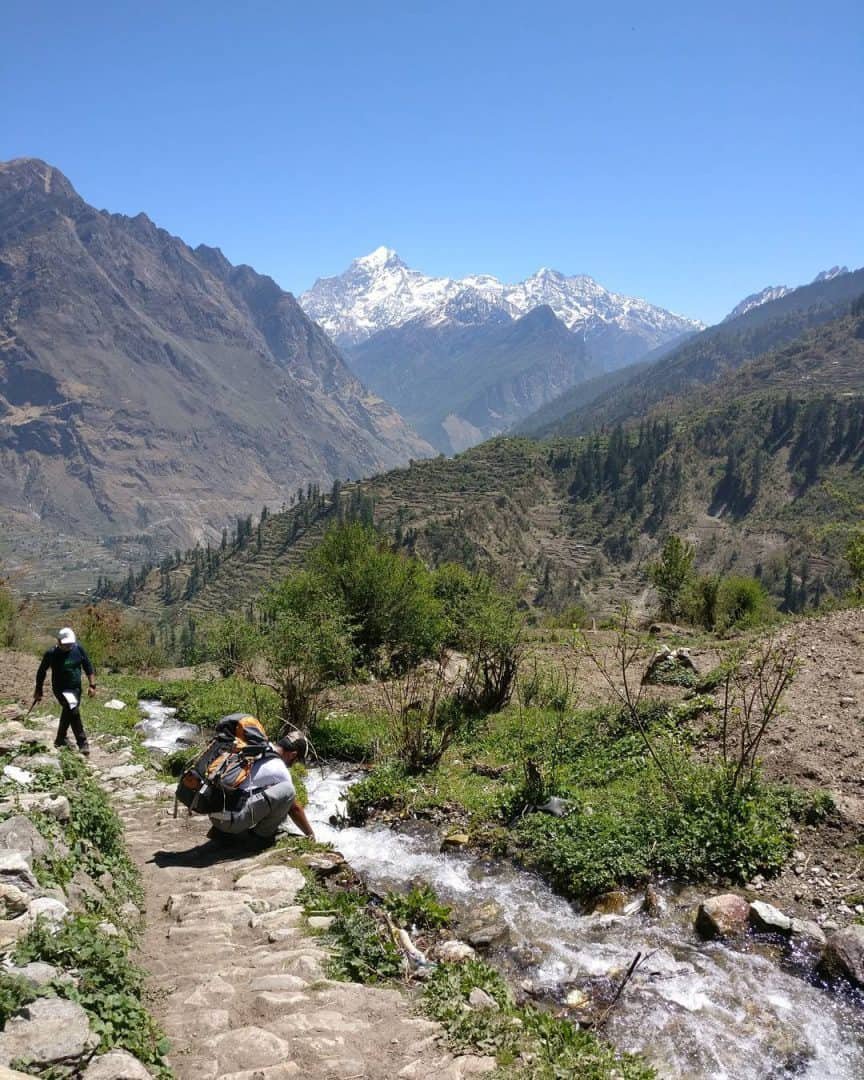
Dhak Village. Photography by Arunava Chakraburthy
What to Pursue After Kuari Pass Trek?
Kuari pass trek: a discovery by lord curzon.
Lord Curzon – the Viceroy of India from 1899 to 1905 A.D was a curious trekker. He is credited for having discovered the Kuari Pass trek. There is an interesting story behind the discovery as well as the name.
When Lord Curzon discovered the trail and witnessed Kuari Pass (not named at that time), curiosity hit him. He kept trekking and on reaching a place called Auli, he asked the locals about the name of the place. To his question, the locals responded and told him that the place was holy, untouched and without a name.
The witty man he was, Lord Curzon asked the local people as to what they call ‘untouched’ in their regional dialect. “Kuari” was the reply and henceforth the name was kept as Kuari Pass. The trail began to be known as the Kuari Pass Trek.

The beautiful town of Auli. Photography by Anmol Rikhra
My Journey Along the Kuari Pass Trek
Each long journey begins with a single step. When it comes to trekking, each destination has its own significance.

The ravishing Nanda Devi Peak is seen from a distance. Photography by Ravi Singh Rana
Reaching Haridwar
I reached Haridwar at 3:30 am. From here, we had to make our way to the majestic Joshimath base camp for the first night.
I had time before heading to the Kuari Pass trek. So I decided to pay a visit to Har Ki Pauri.
Har Ki Pauri was covered in fog and strong cold winds that could blow anyone away. Early morning in North India is chilly. However, this did not stop the devotees at Har ki Pauri from taking a dip in the holy Ganges.
Ganga Arti starts at 6:30 am in case any website or person tells you otherwise ignore it.

Har ki Paudi at Haridwar. Photography by Ved Prakash Thawait
Heading to Joshimath
A company of 22 people left for an 11-hour journey to Joshimath. The view along the way made it seem like a fairy tale. The distant mountains looked majestic with snow-clad peaks hit by the first rays.
We made our way to the arrangements for the night stay. There were scrumptious snacks and welcome drinks for us followed by a good dinner and sweets. Lastly, we were made to undertake Oximeter and Pulse checks.

Joshimath from a distance. Photography by Francesca Daws
Reaching the first Base Camp Akhrot Geta
Dhak was the point from where we started the Kuari Pass trek. We didn’t follow the itinerary that is usually taken by people due to some unavoidable circumstances.
The initial stages are always the hard ones. The experienced trekkers knew how to deal with them. The rest of us were helped by the trek leaders. Long strenuous walks were the order of the day. The mountain ranges with tall peaks could be clearly seen from the beginning. Some of the teammates struggled in stages. But all in all, we delivered a pretty impressive performance.
It took us 4 hours to reach our first camp – Akhrot Geta. Fortune was with me as I was lucky enough to find the only Akhrot (walnut) from Akhrot Geta. The base camp had figments of snow which seemed manageable. At a distance though we could see the snowy trail that we had to take the next day.
A breathtaking view of some of the major peaks – Hathi-Godha, Kamat, Dronagiri could be seen. Serenity could be felt by us.
In the following hours, instructions were given to us. They comprised of learning how to pitch a tent, snack time, wearing warmers, tea time, dinner time etc. After receiving instructions, we finally had time to ourselves to play tent games. The best part was that almost the entire team joined in including a 60-year-old man.
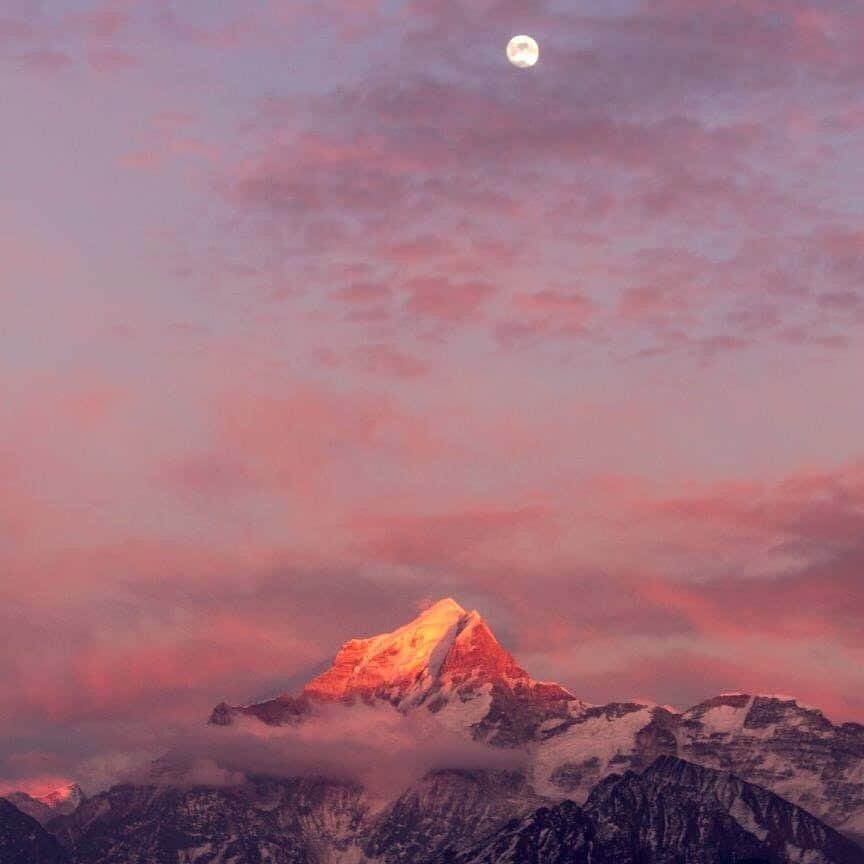
The dazzling Dronagiri peaks at the moonrise. Photography by Arun Singh
Base Camp 2 – Khullara Campsite
The next day was another early start but we didn’t have packed lunches for the day. This meant the trek was even shorter than the previous day. There were phases where we trekked on patches of snow but mainly the trek was on familiar terrain.
The level of difficulty was easier than the previous day but consecutive 2 days trekking took its toll on one of the trekkers. The gentleman was my tent mate. He made the basic mistake of not taking Diamox being a first-time trekker and not being used to high altitude.
His oxygen levels had dipped, the colour of his face had faded, and life seemed to be stuck out of his body. He was in immediate requirement of care when he reached the Khullara Base Camp. A supply of artificial Oxygen was required to put him through the night.
The rest of us went through the same chores as the day before. The highlight of the day was the time spent with 9 others (a group) to venture to a cliff, finding our own spot and spending quality time admiring the beautiful multi-coloured tents in white background complimenting the tranquil Himalayas.

Magnificent view from Khullara campsite. Photography by Shubhodeep Roy
Reaching the Majestic Kuari Pass
The next day started with bad news from the camp, unfortunately, our sick mate had to be sent down. We started off earlier than usual with microspikes attached to our footing. We were ready to face the steep snowy incline. Adrenalin rush hit me as from the end of the pack I was in the front of the pack in no time.
There was snow everywhere. We were leaving the mountain range that had us entrapped in its magic from the moment we started our journey. However, what was in front of us was even better – A panoramic view of the range. Group photos were the order of the day and this was the first one of the many that followed.
Kuari Pass grabbed us by the neck and let us loose as all that effort we had put in was to reach till this point. The weight on us was brought down and we were as relaxed as monks.
Last Set of Complexities
The relaxed mood after the achievement of completing the trek got reflected during the next day. We had our eyes set on the untouched Nanda Devi – the highest peak with a presence only in Incredible India.
There were snowflakes falling on us not from the skies but from a horizontal trajectory. Well, it was a snow fight!
The progress was slow and it was not due to the fun we were having but due to the 5 new joiners from the other batch who refused to complete the trek and joined us.
Nanda Devi’s top was all covered in mist. It cleared with gushing winds for only a brief moment of time but I must say that the moment was worth the time.
This brief experience of observing the peak brought me some insight- “ Your goals might not be clear enough at first but those who are willing to continuously stride will achieve clarity in life and eventually success.”
From here, things weren’t as easy as they seemed. The slope wasn’t all downward. I had to bring a person from the other batch down in his bid to get back. This took a significant toll on me.
Eventually, we reached back but not before nightfall. So, the day that started out with all the fun turned out to be quite gruelling in the end.

Every journey begins with a single step. Make sure you start your journey soon. Photography by Ravi Singh Rana
Kuari Pass Trek: Why I didn’t want to go back home?
I didn’t want to leave the sight of Nanda Devi. I just wanted to sit there watching the mist and admiring the peak. I didn’t want to leave the people that I had bonded with so much in the past week.
Most of all, I didn’t want to leave the adrenaline rush that my body experienced so often as compared to the normal boring days.
Important Merchandise to Pack for Kuari Pass Trek
Miscellaneous items, commonly asked questions by beginners taking the kuari pass trek.
I had a fantastic experience heading along the Kuari Pass trek. You should too. So pack your bags next season and sweat it out amidst the Himalayas.
Happy wayfaring 🙂
THIS POST IS AN EXCLUSIVE PROPERTY OF BUDGET WAYFARERS. ANY INDIVIDUAL OR ASSOCIATION INDULGING IN PLAGIARISM WILL BE DEALT WITH STRICTLY . IF YOU WANT TO USE INFORMATION FROM THE ARTICLE ABOVE, KINDLY QUOTE THE SOURCE.

Kuari Pass Trek 2024 - 6 Days in Uttarakhand
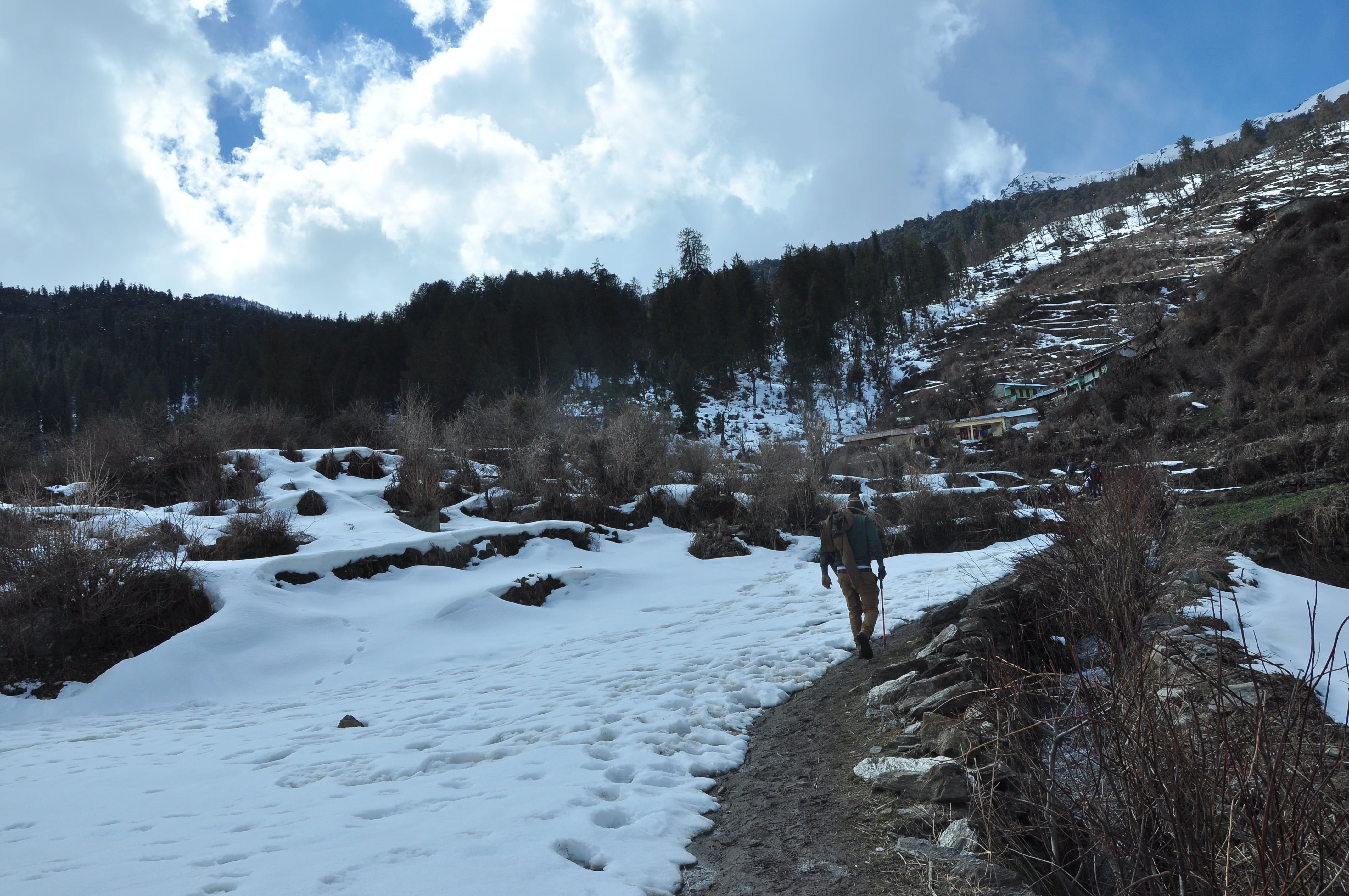
Starting from
₹ 8904 ₹ 6500 +5% gst.
- 6 Days 13,992 ft. 35 Km
- Easy to Moderate Uttarakhand
- Best season : Oct - Jan
Trek Highlights
- This trek has the most ancient and most beautiful forest trails.
- You get to see a spectacular view of the forests.
- Last but not the least, in this trek mountain views are what die for. You will see superb mountain views from the starting of this trek.
- This trek stays cover with snow most of the months, so it is suitable for those who wish to trek in the snow.
- Kuari Pass trek is one amongst them which gives you the wonderful experience.
- This trek will provide you with a beautiful view of Garter Himalayas, Nanda Devi Mountain, Trishul, Chaukhamba, Dronagiri, meadows and beautiful forests.
- This trek includes everything from beauty till adventure, and the white carpet of snow all around.
- The trek will be a little challenging as you will pass by the broken bridge, frozen stream followed by ridges that will make the trek little tiring.
Inclusion/Exclusion
- Inclusion in cost during the trek:
- Meals as specified in the itinerary (it will be basic Indian vegetarian Meals).
- Experienced Trekking Guide.
- Experience trekking Cook for the Trek.
- Trekking Crew.
- Trekking Permissions.
- Basic First Aid Kit (Please do carry your personal medicine).
- Sleeping Tents.
- Dining Tents.
- Kitchen Tents.
- Toilet Tents.
- Sleeping Bags (You may also carry your own sleeping bags as per your comfortability).
- Sleeping Liners (We do provide the same, however its recommend to carry your own for comfort).
- Sleeping Mattress.
- Exclusion in cost during the trek:
- Mandatory GST of 5% on Invoice Amount.
- Trekking Shoes, Trekking Jacket, Trekking Sticks.
- Any kind of Travel / Health Insurance (Trekveda strictly recommend each traveller to please carry your own travel / health insurance).
- Any specific Meals /Snacks / Beverages unless mention in the cost included section.
- Any of Cost for Airfare, Train fare.
- Any kind of medical expenses.
- Any tips, laundry, Phone call, liquors, mineral water, camera fee or any other personal nature expenses.
- Airport pickup and drop services ( Will be subject to additional cost).
- Any other fee / charges not mentioned in the cost included section.
- Backpack offloading charges, the backpack should not weigh more than 9 kgs.
- Suitcases/strollers/duffel bags will not be allowed (Subject to additional cost).

Have any question?
contact us @
+91 8958094170
- OVERVIEW & ITINERARY
- THINGS TO CARRY
- SAFETY & SECURITY
- FITNESS TIPS
Short Itinerary
Day 1: Reach Joshimath.
Day 2: Joshimath to Dhak By Drive and To Gulling top by Trek.
Day 3: Gulling top to Tali.
Day 4: Tali to Kuari pass to Tali.
Day 5: Tali to Joshimath via Auli.
Day 6: Departure from Joshimath.
Kuari Pass Trek Booking Options:
Kuari Pass Trek without Transportation: INR 6,500/- +5% GST Per Person.
Kuari Pass Trek with Transportation (Rishikesh to Rishikesh): INR 8,300/- +5% GST Per Person.
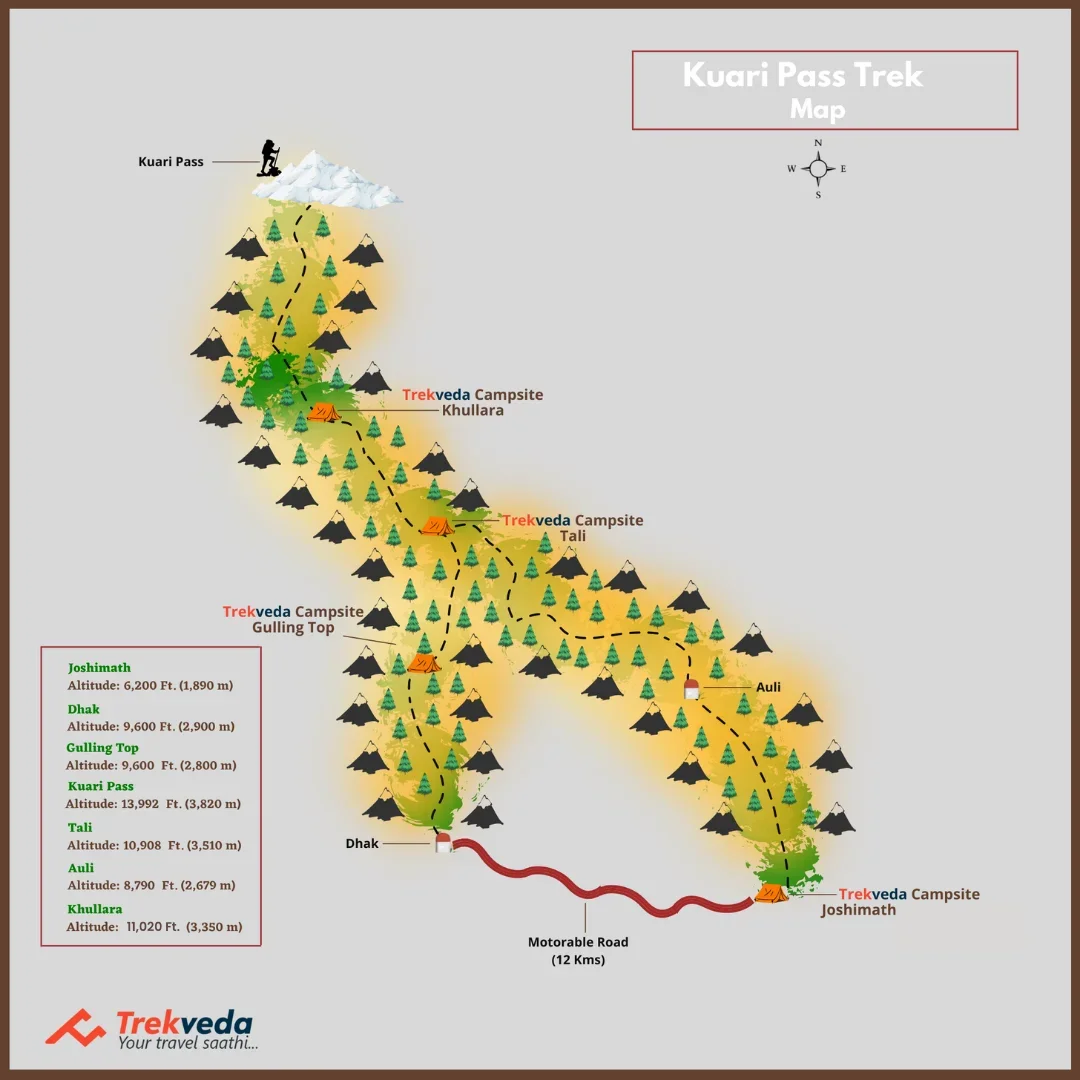
Set on the foothills of the Garhwal Himalayas, this trek is a must on the bucket list of trekkers. The best time to go on Kuari Pass Trek is during the summer months, as it allows you to enjoy the brilliant Himalayan views, but many trekkers choose to go on this trek in monsoon and spring as well. Kuari Pass India is one of the best treks in the Himalayas for beginners as well as for regular trekkers. This is one of the most preferred treks in Uttarakhand by those who want to explore the Himalayas. You can Trek in India during summer, monsoon, or spring. Nearly 3-4 hours drive from Rishikesh, this trek is a perfect trek for nature lovers. Don't forget to carry a pair of good hiking shoes and some woolen socks to keep yourself warm during the hike. The best time to do this trek is from April till mid-June, Monsoon: the route becomes muddy and slippery for the trekkers, spring: mid-September to early November.
The Kuari Pass Trek in the Jungle of Uttarakhand will provide you with the ultimate beauty when you travel to this untouched paradise in the month of March and April when the destination offers you a view of all Gather Munsignores; Nanda Devi, Trishul, Chaukhamba, and Dronagiri. The Trek covers remote villages of Uttarakhand which are still unaware of the civilization that exists in this era.
If you're looking for the ultimate travel experience, the Kuari Pass Trek package is the one to take. It's got breathtaking views of lush green mountain trails, remote villages, and more.
Difficulty Level : Kuari Pass Trek
Nestled at an altitude of 13,992 Ft. Kuari pass trek is an easy to moderate trek which is best for the beginners.
What makes this Trek Different?
Kuari pass trek is the best trek for the beginners so if you are planning your first trek, and you can choose Kuari Pass. The trek opens up the perspective of the Himalayas, and many great peaks such as Nanda Devi Mountain Trishul, Chaukhamba, Dronagiri. This trek includes everything from beauty till adventure, and the white carpet of snow all around. The endless view of meadows and forest, changing landscape. Each day in the trek, you will see the unique beauty.
Is Kuari Pass Trek easy?
Kuari Pass Trek is easy to moderate trek; therefore, it is an easily accomplished task to do this trek.
Is Kuari Pass Trek safe?
Talking about altitude wise, so you climb 13,992 Ft. which is an ideal height for the beginners to pick. However, you can get hit with AMS, but this is a normal changes body face while climbing above 8,000 Ft.
Is Kuari Pass Trek difficult?
Kuari Pass Trek is graded as easy to moderate with an altitude of 13,992 Ft. which is an absolute height for someone to hit the Himalayas trail for the first time.
Important tips for Kuari Pass Trek?
The most important thing to keep in mind is to take a light backpack with essential winter clothes that can cheat the winter and won’t be heavy to keep as climbing with a heavy backpack can get hectic.
Trek Itinerary : Kuari Pass Trek
Altitude : 6,200 Ft.
Time taken : Approx 10 hrs
Altitude : 9,600, 10,908 Ft.
Trek gradient : Easy to Moderate
Altitude : 13,992 Ft.
It will be approx 5 hrs journey today. Deep into the forest almost after 20 min of the trek, you will reach the greenwood by overlooking the snow peak, and then greenery will boost up your mind and soul. The peaceful area fringed with oak and rhododendrons trees, and if you choose this trek in March, you can find the charming beauty of the white and pink blossom. Later on, you will see everything coated with the snow from trees to land seems like a paradise. The more profound you will go into the forest, find the shadow of conifer forest of Gulling, and with Donagiri peak your eyes will embrace Hathi Gori peak along the way.
On this day start your trekking early for Kauri pass, as it may take 10 to 11 hrs depends on the speed of the trekkers, and remember that you will not get any waterways along the way so bring enough for yourself. You will trek to Kauri pass via Khullara top – a moderate ascent of 3.5 Km today. The trek will be a little challenging as you will pass by the broken bridge, frozen stream followed by ridges that will make the trek little tiring.
As the last day was so pleasing and awe-inspiring, you must have kept all the memories close to your heart to cherish them your whole life. So, Kauri pass trek will end this day, and you will find your way back to Joshimath via Auli were on the way you can capture the beauty of Auli too.
On the 6th day, you will depart from Joshimath, towards your destinations. And the trek to Kauri pass will end. Keep all the memories of the five days trek, and drive back home.
Kuari Pass Trek: Essentials
Trekking, no doubt, is one of the most thrilling adventure one could ever have in his/her life. With an elegance of nature and unmatchable experience of the pristine mountain ranges, trekking stands out among all the adventures across the world, but nothing comes free, there are certain aspects of the trekking which one needs to consider while he/she is making up his/her mind for trekking. Here’s a list of some basic requirements which one would need during his/her camp trekking. Let’s pay some heed to these prerequisites for trekking.
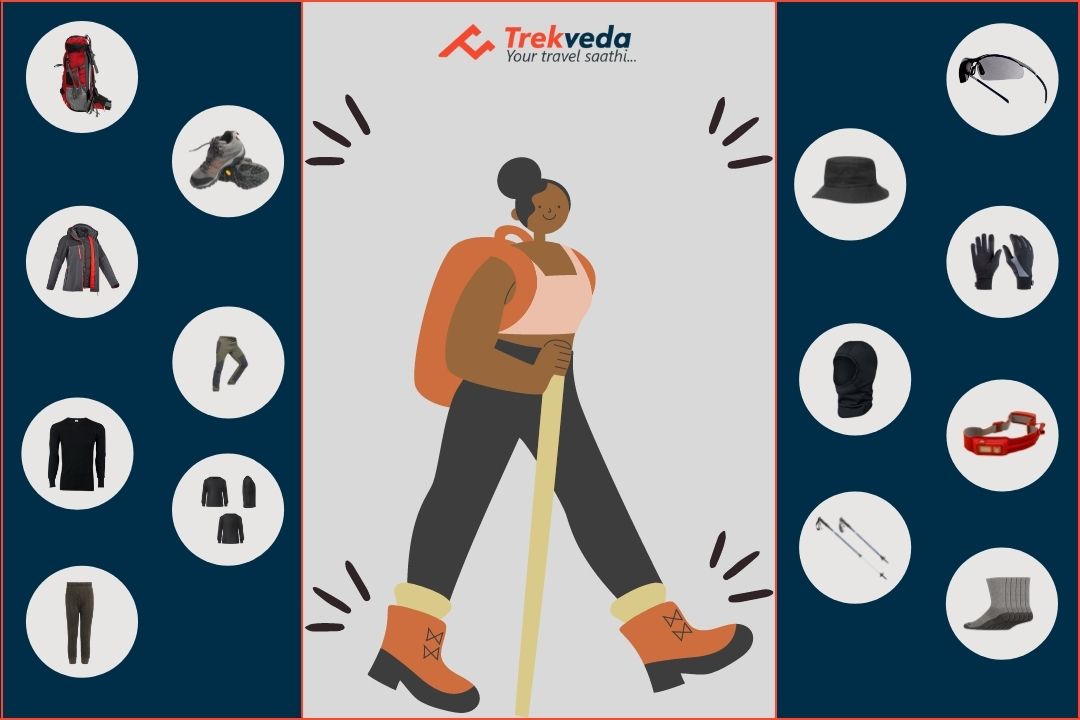
Things You Can’t Afford Missing On Trek
1. A Sturdy Backpack/RukSack
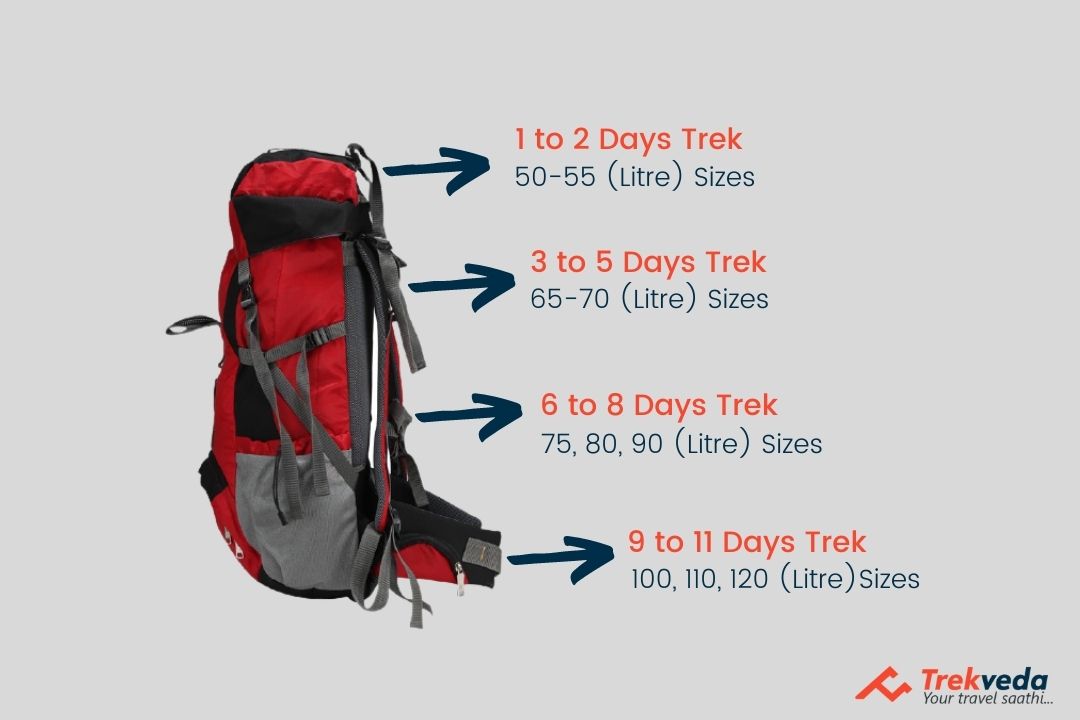
A high-quality backpack with an ease of carrying facility with durable and stern straps is one of the pivotal thing that you’d need during the entire trekking. The easier it’s to carry, the more fun you can have during your trek.
2. A Pair of Trekking Shoes
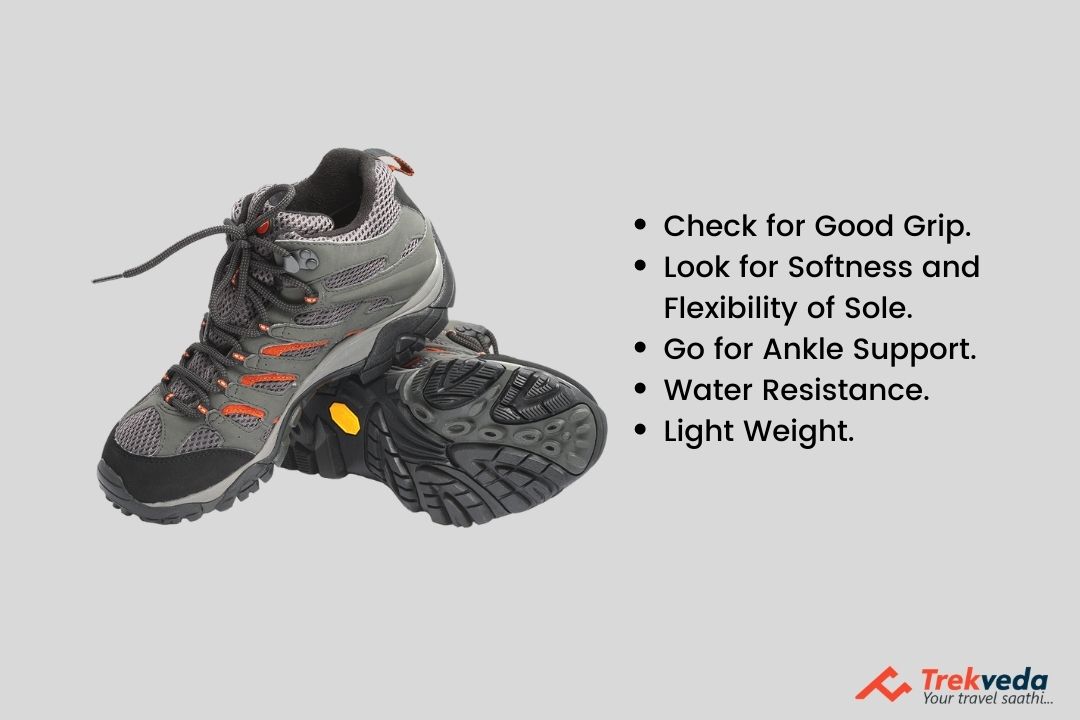
Your regular sports shoes can be a mess during the trek and one of the most regretting thing that might take away the joy of trekking. To prevent yourself from slippery patches through the streams, a pair of trekking shoes with good grip would do a great work for you and reciprocate your experience of trekking to the manifolds.
Clothing is one of the most important aspect of trekking but that doesn’t imply the “what if situation”, hence carry the clothes that you’d need normally. Carrying more and more clothes will only add the weight, thus problem. Once on the trek, you’d not generally need to change the clothes every now and then, provided if you maintain your hygiene properly.
Three Warm Layers Jacket

On high altitude treks, temperature after the sunset drops to the considerable degrees. So during these campsites, you might need an additional layer along with the padded jacket coupled up with a fleece and a warmer.
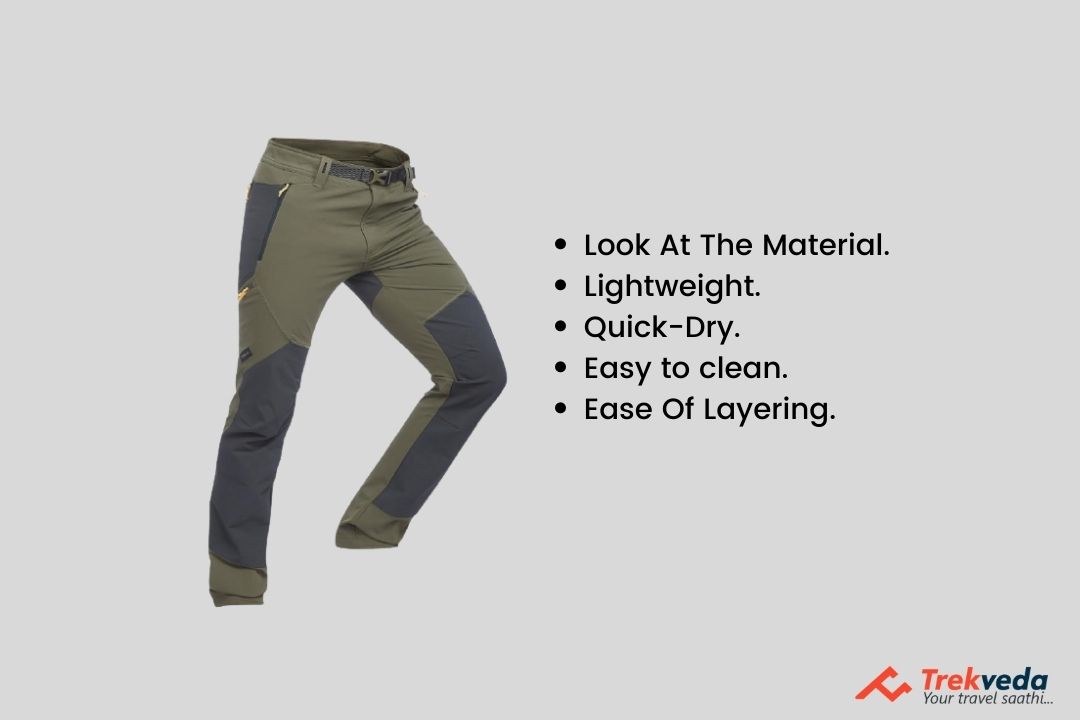
Please don’t go for jeans/ denims for the substitute for the trek pants since they’d not add comfort to your stay at the campsites. Wear one pair and carry the remaining two.
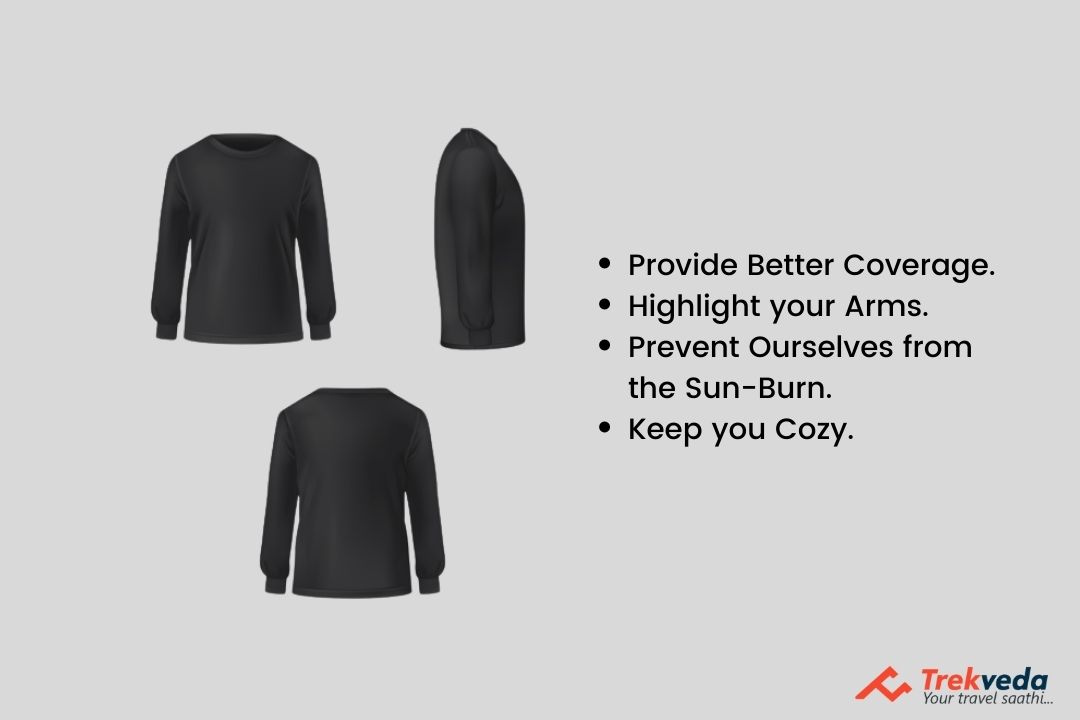
It’s advised to wear full sleeved t-shirts in order to prevent ourselves from the sun-burn. Carrying a dry-fit t-shirt or two can be a wise idea if you’re trekking during the rainy season. Regardless of the cold weather, trekkers’ bodies tend to sweat and to prevent yourself from falling ill, you’re advised to change your clothes at campsites.
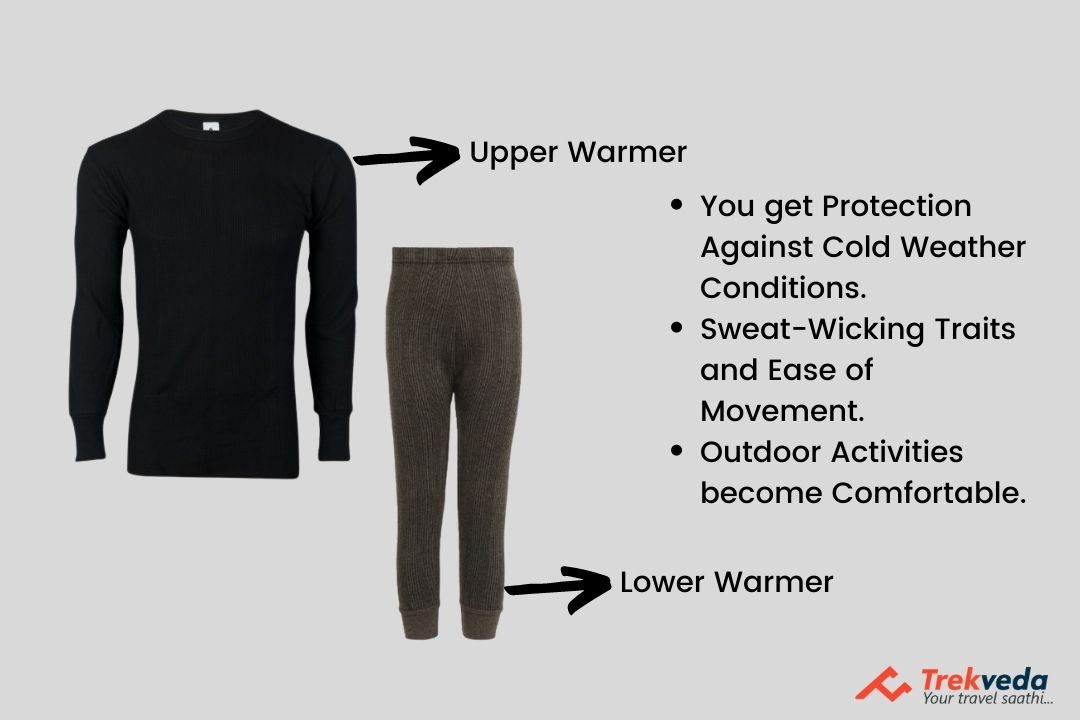
Warmers or thermals can be added on one’s own concern related to their health and their exposure to the cold climate.
Accessories
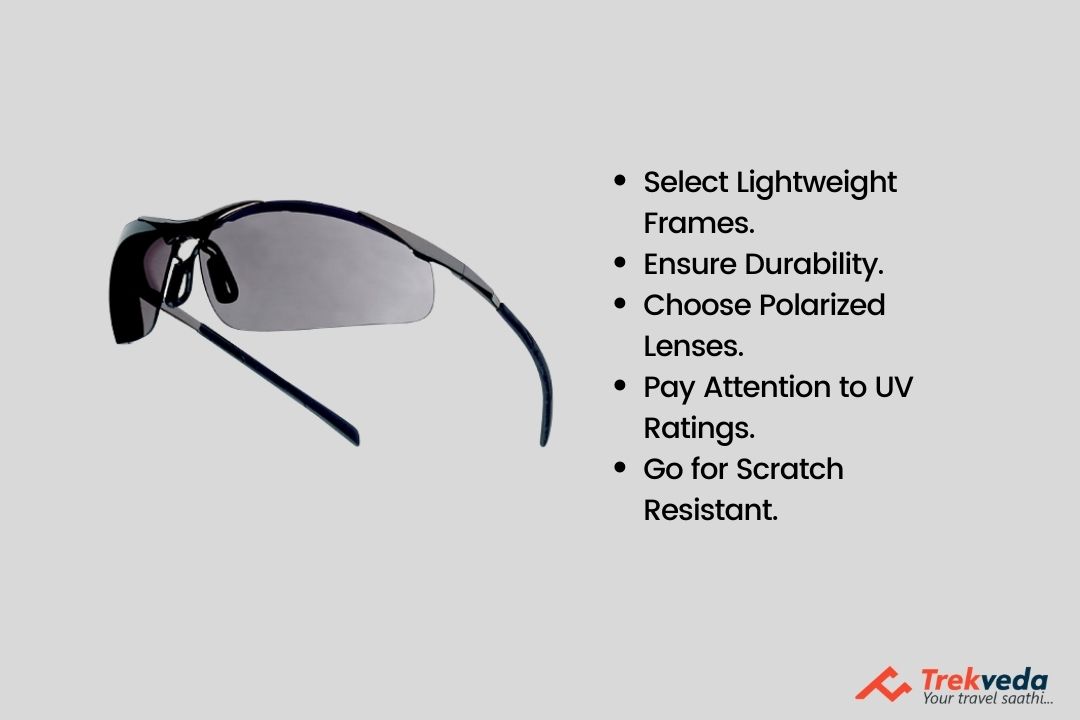
Sunglasses are to counteract snow visual deficiency. While at the same time you're probably not going to discover snow in October, convey a couple in any case.

The sun feels more grounded while at the same time strolling on the mountain slants. Convey a sun cap to shield your head and neck from the warmth, particularly in case you're trekking later in the day.
Engineered Hand Gloves
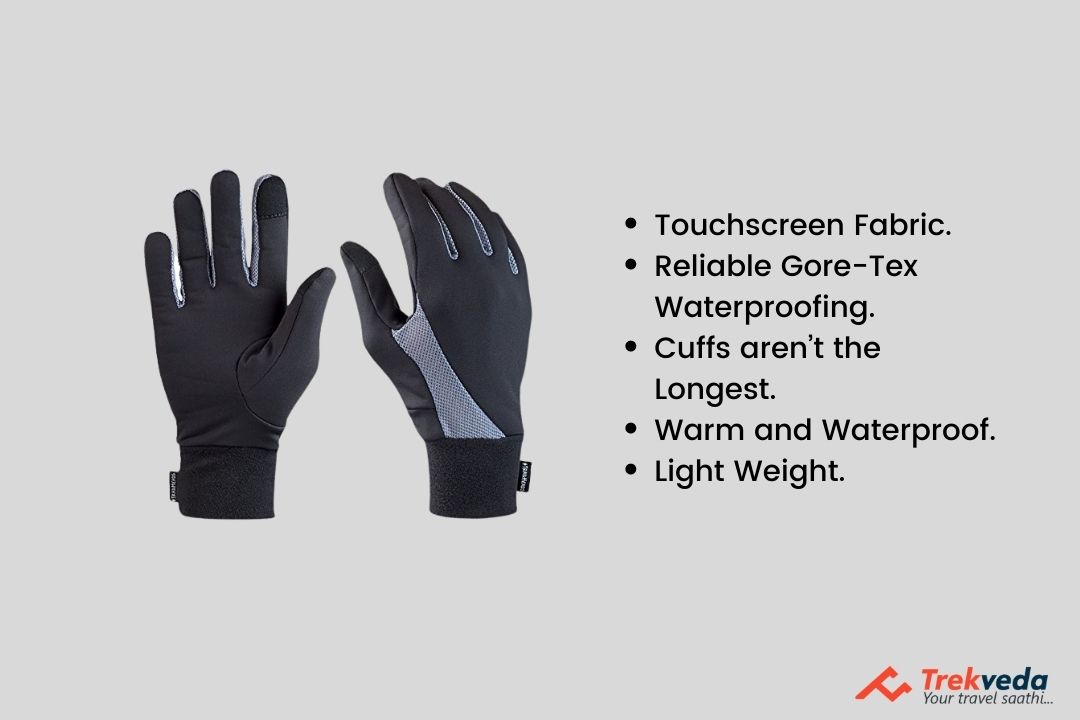
One sets of downy or woolen hand gloves. One sets of water evidence/safe, wind verification gloves.
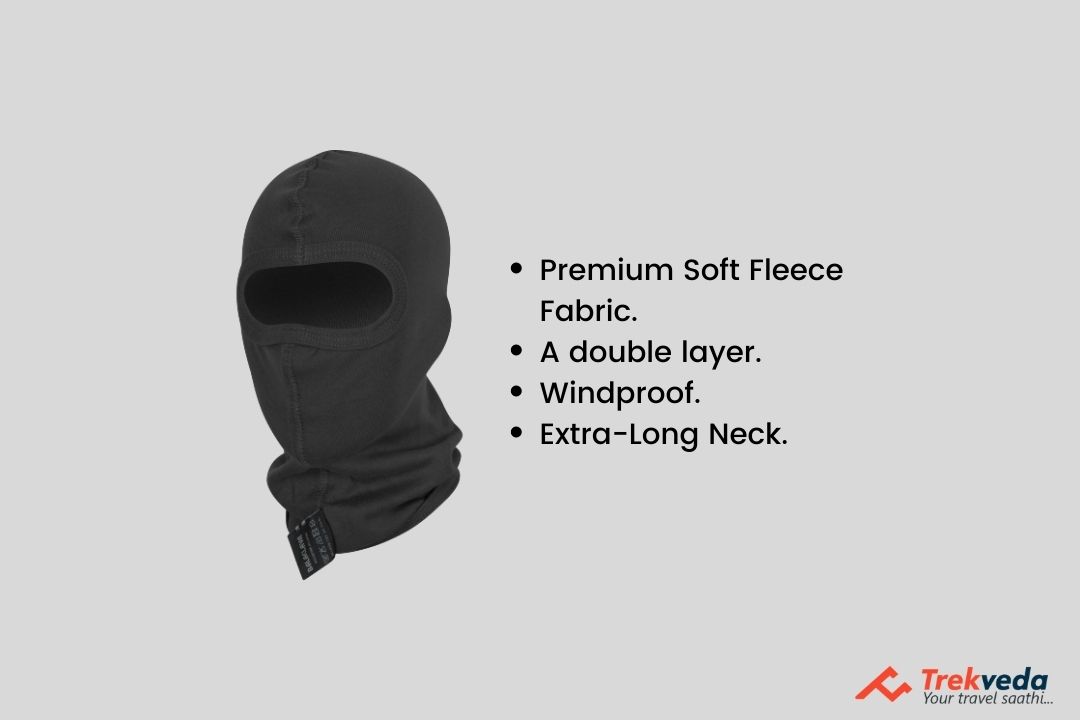
You may utilize woolen scarves rather too.

A part from two sports socks, you can take a couple of woolen socks for the night as they’d spare you from the dripping temperature.
Headlamp/LED Burn
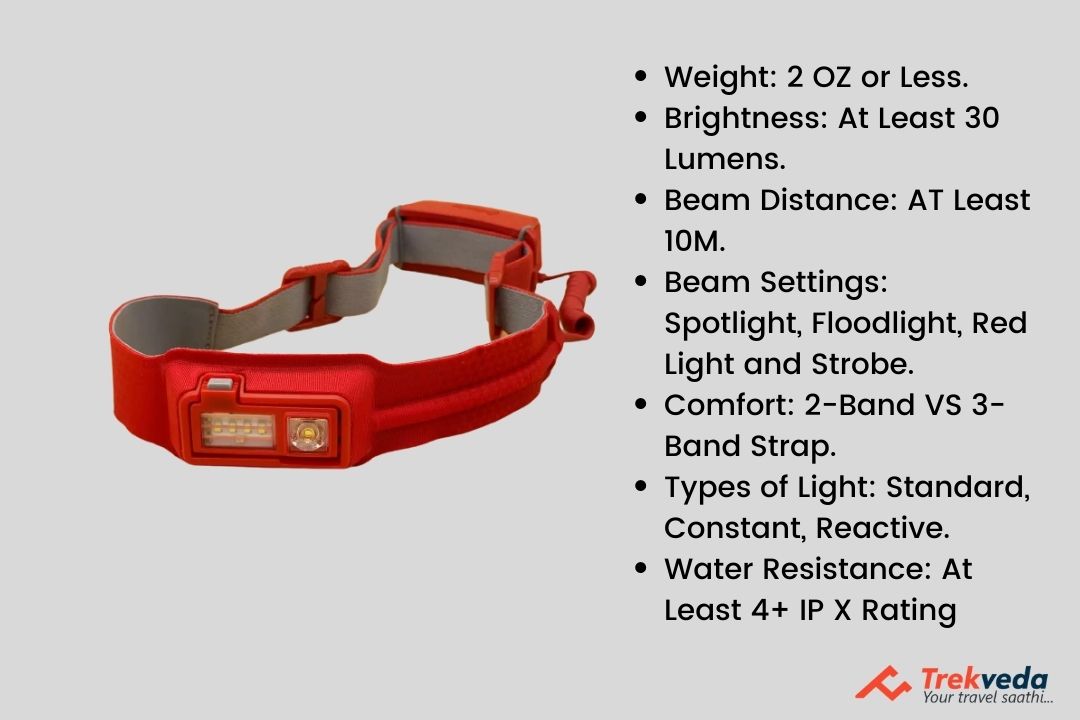
Trekking Pole
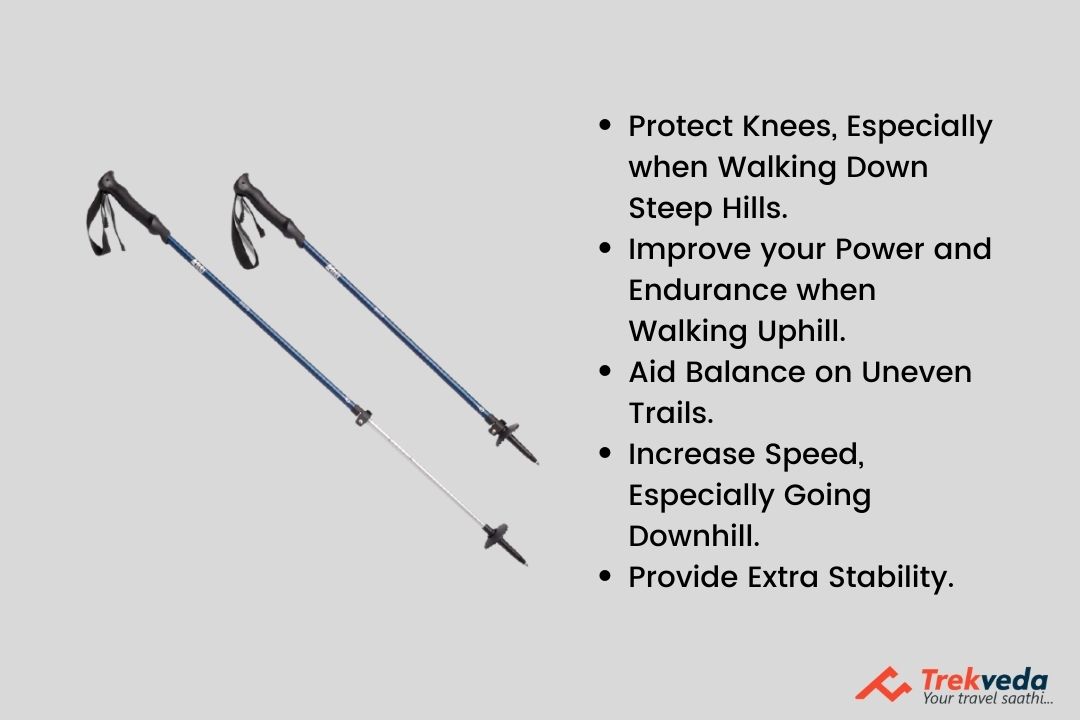
Having a trekking pole in your hand during the trek is boon, although at times it may bother you as an unnecessary article but it proves out most handy during the submit as it curbs your effort of straight inclinations of the high altitudes which often turns out tiring.
Other Essentials to Carry
An Additional Pack: This is one of the best practice you can do on one-day submits or treks where you need to get back to your campsite by the end of the day. Here you can pack your essentials like, water bottle, medical aids and snacks. This keeps you away from carrying the unnecessary weight.
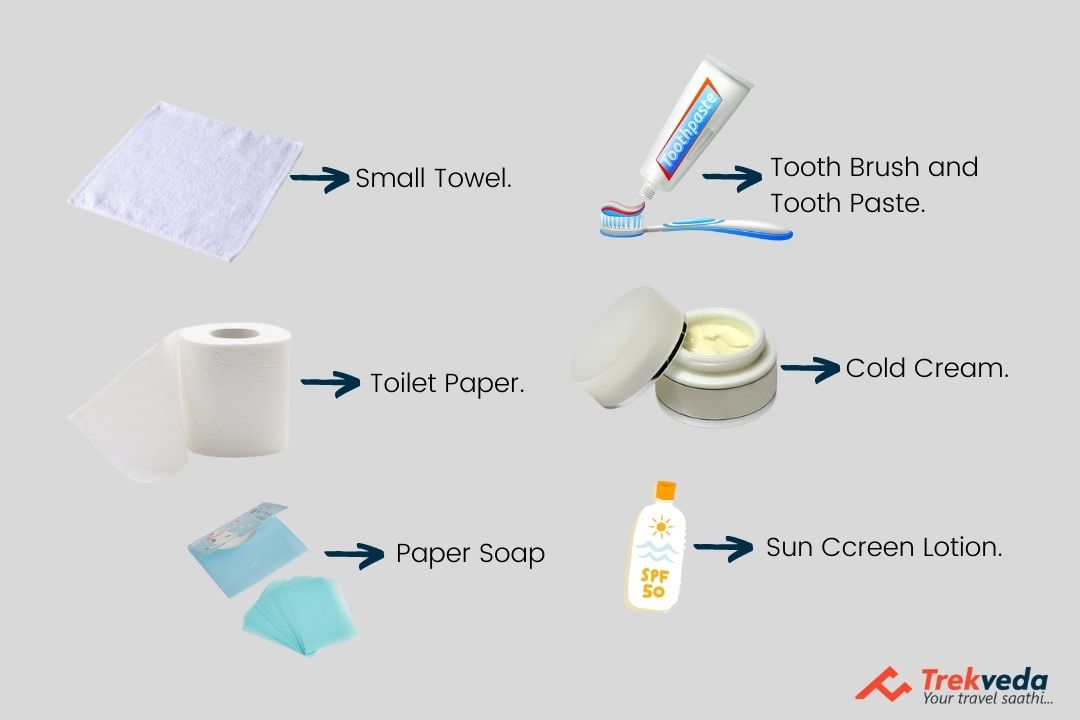
Be wise while choosing your cosmetic needs and daily use products. Refrain from using the non-biodegradable products, if you do so then make sure that you leave residue on the mountains. Always carry a zip bag to put such piece of stuff after use. Sanitary napkins also needs to be treated in the same manner.
Indispensable Water Bottles
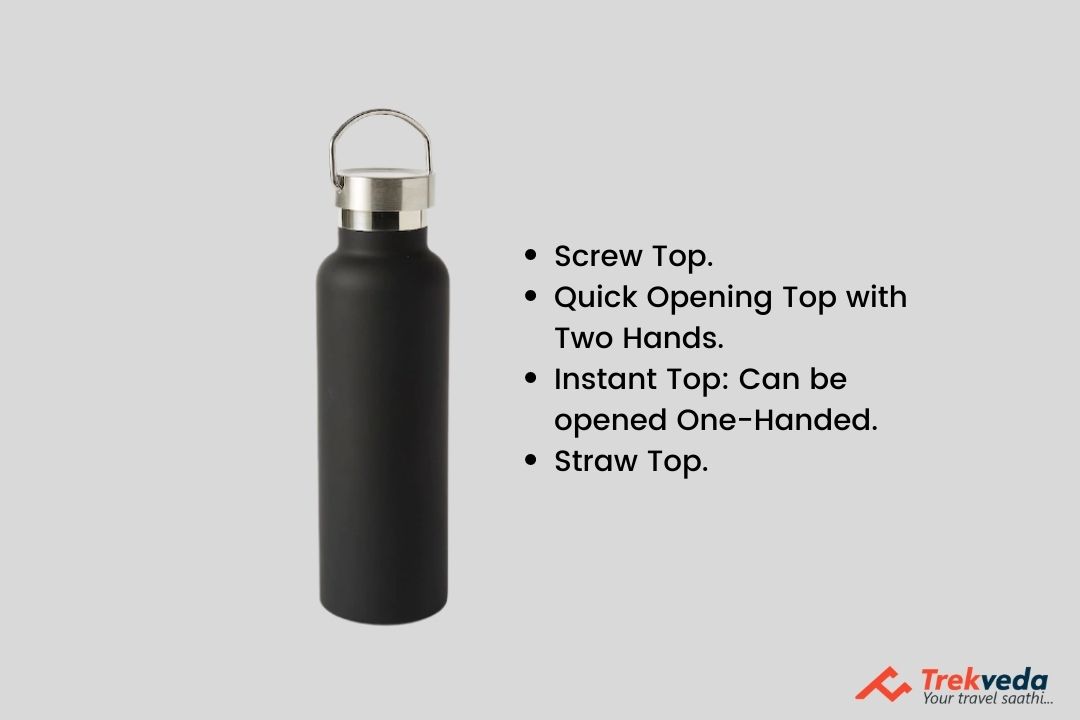
To keep your body hydrated during the trek, you are advised to carry your own water bottles during the treks since leaving plastic and its product is not advised on the mountains since they are not suitable for the environment of the altitudes.
Plastic Bags
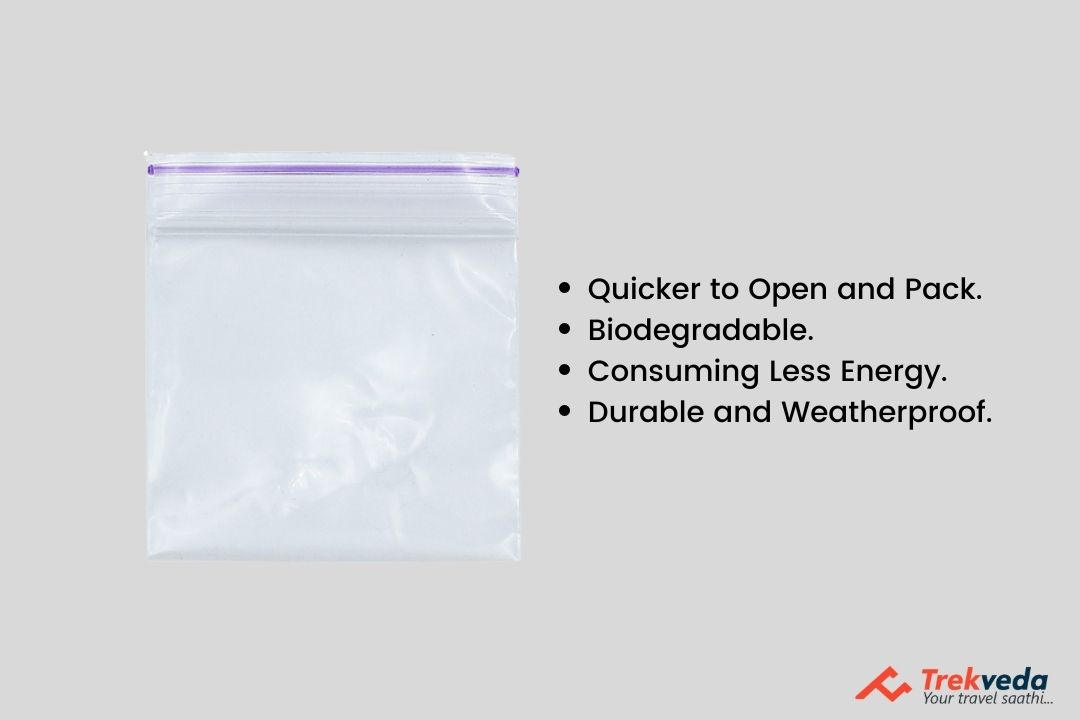
To keep everything organized, you should compartmentalize the stuffs into plastic zip bags and also carry a few in spare for wet clothes and other by-products.
Mandatory Documentation
There are certain rules and laws that you need to abide by, while going for the treks, however Trekveda takes care of all such kind paper works which is inclusive in the package. Certain registration fees and document verification along with some permissions are required in order to protect the nature and its evergreen heritage for future. In addition to this, if you need to avail a guide, you can also hire a guide with some bucks and a nominal paper work.
Please carry the documents mentioned below. Documents two and three need to be downloaded (PDF), filled in, signed and handed over to the trek leader at the base camp.
- 1 passport size photos and an original + copy of government photo ID document – required for Sanctuary registration and TIMS (Trekker’s Information Management System)
- Medical Certificate (first part to be filled by a doctor and second part by the trekker)
- Disclaimer form (to be filled by the trekker)
Measures Taken by Trekveda to Ensure the Security of Trekkers
Trekking is altogether a different kind of adventure where you required to be physically and mentally prepared for the best and adverse, all at once. With high altitudes making it tough to breath, the scenic beauty of those pristine mountains leave you spell-bounded so that you forget to breath for a moment or two. In addition to the physical and mental preparation, there are certain aspect of the health that are needed to be considered at the first hand when you make up your mind for the trekking,
Trekveda, by dint of its team of trained professionals, leave no stone unturned to provide you with the best trekking experience while ensuring your safety as its priority. Here are some vital aspects that Trekveda includes in its checklist to ensure the safety of its trekkers.
Criteria for Fitness Analysis
Trekking at high altitudes demands endurance and fitness and those who are prone to any kind of physical or physiological ailments are advised to not to go for high altitude treks in the beginning. To get assurance about the trekker’s fitness, we comply with certain aspects of the being fit such as BMI (Body Mass Index) along with the fitness proof since we can’t put the trekkers into the risk.
Acclimatization is another important aspect when it comes to getting an adaptation to the climate at the high range treks. A day at rest is not just the rest but a chance to get used to of the place and its habitat.
Monitoring the health is one thing that is conducted regularly during the trek by the trek leaders which includes the monitoring of your blood pressure, oxygen level and pulse rate. Details of your health during the trek is maintained in the health card on the regular basis. Health card can be collected from the trek leader at the end of the trek.
Medical Kit for High Range Trekking
An ideal medical kit that’s developed for the trekking has Blood Pressure Monitor/checker, Stature, Oxygen checker and Oxygen Cylinder coupled up with certain must have medicines, in case of medical emergency:
- Dexamethasone
- Asthalin Inhaler
Trekking Equipment for High Altitudes
Trekveda provide you all the necessary equipment for trekking from tents to ropes. In addition to that, our trek leaders also ensure the safety by various safeguards they take time to time for your safety. Micro spikes are provided to attach to your shoes which help you to keep the traction on the snow and make it easier to climb. An additional gaiters are provided to cover the shows which prevent the entering of snow into the shoes. Customized tents are provided to the trekkers which ensure the warmth and temperature 10 degrees higher than the outside coupled up with high quality sleeping bags which can endure the temperature up to 15 degree Celsius below the freezing point.
Nutrition and Hydration
Trekveda, keep all your nutritional and hydration requirements on its checklist, our trek leaders will guide you to keep your body hydrated on the high altitudes as de-hydration can attract to the severe medical emergencies on high altitude treks.
We provide the highly nutritious meal to energize your body for the trek, however before certain long trails we ensure your nutritional requirements to be fulfilled with some high energy snacks or packaged lunch.
Make sure you keep up with your hydration and nutritional part as this can lead to some fatal consequences for your health.
In case of any symptoms you feel during the trek, don’t ignore or avoid them, immediately tell the trek leader.
Keeping up with the pre-defined processes and the guidelines will help you to have a memorable trekking experience.
What Trekveda has to offer in case of medical emergency like AMS, HAPE or HACE?
In case of medical emergencies, Trekveda and its trek leaders bear the sole responsibility to get you back to your wellbeing with their training and techniques. Suspecting any physiological disturbance in your body, immediately report to your trek leader as they are trained to counter such problems.
Problems like Acute Mountain Sickness can be prove fatal if not taken into consideration seriously on time. If you encounter/experience any of the symptoms such as persistent headache, fatigue or weakness, nausea, dizziness, loss of appetite, difficulty in sleeping, you shouldn’t let it go or treat it by your own either.
Acute mountain sickness is one of the most common yet the fatal problem trekkers face due to number of reasons, if the problem continues to persist, then you’re advised to descend down to the basecamp and then to visit the doctor immediately.
People with AMS are treated with number of medicines such Diamox, Nifidipine etc. coupled up with methods like Triple One Test- where one disprin is given with a liter of water along with the rest for an hour.
While AMS is most common at the high altitudes yet it can’t be risked taken casually as it leads to severe fatal conditions like HAPE (High Altitude Pulmonary Edema) or HACE (High Altitude Cerebral Edema) which, if not treated on time can lead to number of serious chronic disorders. These conditions need to not to comply with AMS, they can occur without AMS preceding.
It’s suggested to take every single disturbance into the consideration while you’re on the trek.
However, Trekveda is capable of tackling all the medical emergencies with its trained professionals yet there are several things that you need to consider, specially the intake of medicines and the knowledge about their advantages and side-effects. Don’t administer the medicine if you’re trekking through an organization, always seek help from the trek leaders, they are trained for such purposes, while in case of being a solo trekker, you should know about the medicines.
Keeping yourself hydrated and nutritionally fulfilled curbs the chances of AMS.
Risk and Response
A high altitude trek requires an audacious state of mind, however leaving on a bold excursion without computing the dangers is absolute idiocy. That is the reason we have recorded a couple of Risk and the Response arranged by Trekveda to limit or address the dangers in the most ideal way.
Risk: Altitude
Before you begin the trek, it is critical to comprehend the ramifications of high altitude on your body. Know about side effects of AMS (Acute Mountain Sickness) like mellow cerebral pain, queasiness and general distress.
Response: If you feel any of these indications, illuminate the trek pioneer on need and take after his directions. Each campground has as stretcher, completely prepared medical aid pack, oxygen chambers to address the circumstance.
Risk: Weather
Weather is unusual in the Himalayas. Despite the fact that we are constantly attentive about the evolving climate, nobody can ensure a snowfall, rain or Sun. Do comprehend that your security is of most extreme significance to us and we won't continue any further from the campground if the climate isn't ideal.
Response: The choice of the Trek Leaders and Guides to continue or sit tight for the climate to show signs of improvement will be last.
Risk: Injuries
Often, while trekking over troublesome territories, you may have minor wounds like leg sprain, wounds and so forth. Genuine wounds like breaks or real cuts are exceptionally uncommon.
Response: All our Trek Leaders are Certified Wilderness First Aid responders. They are prepared to deal with crises and can handle minor wounds with an all-around prepared medical aid unit. If there should arise an occurrence of genuine wounds, the patient is carried on a stretcher to the closest street head and is directed to closest therapeutic focus.
Risk: Lack of Communication
In the remote zones of the Himalayas, portable systems don't reach. On a trek, one is cut off from the universe of calls, SMS or WhatsApp Messages.
Response: We’d depend on walkie-talkies and sprinters to communicate between the campgrounds and the base camps.
Pre-Trek Preparations
Trekking, for its ever-lasting memories and experience, demands just a few things which involve physical endurance with physiological wellness. Not just the one who’s physically fit would do the magic in trekking but one also needs to be mentally fit as well in order to cope up with the adversities one might have to face during the treks such natural calamities, rains or other unforeseen conditions. To keep up with such requirements of trekking here are a few things you can do to get yourself physically fit.
Prerequisites of the Trek
Cardiovascular Endurance and Stamina
Cardiovascular endurance is the primordial thing that this trek asks for along with the stamina to withstand the stringent conditions during the trek. There are number of ways you can increase your endurance level but Jogging regularly with gradual increase in the pace would do the magic in just 2 or 2 and a half months. You can also increase your endurance and stamina through swimming, cycling and much more.
Combining the speed and distance target is the most effective way to get your body and mind prepared for the Trek. If you’re planning to build your stamina in a phased manner then here you should pay heed to:
- Target completing the distance of 5 km in 35 minutes or less at the beginning
- Pace up your legs to complete the 5 km in 30 minutes or less
- Before you begin the trek, you should be able to complete 10 km in 60 minutes or less
To build the strength is another most important thing and a major requirement for this trek. The whole journey of the trek is like an eternal staircase, the more you climb the better you can have the view. It goes with a climb followed by a flat then again, a climb followed by a flat. All the scenic beauty of the trek demands no less than the power of your legs.
The strength of your legs is something you need to work upon. Here is what you can do to strengthen your leg muscles to bear the pain of the trek.
Doing the squats can help. Goal for 3 sets of 15 repetitions without fail. You can begin with 8 squats in each set at the beginning, subject to your core strength for the exercise.
Flexibility
The more flexible you are the more you have the chances to get the glimpse with lesser hustle. Stretching is another major aspect of the trekking which provides you the much-needed flexibility to climb the altitudes with ease while carrying the backpack altogether is not an easier errand.
Stretching your body at large can bring you the utmost comfort during the trek. Here are some stretching you can do to get the flexibility-Stretch your hamstring, quadriceps, hip flexors, lower back muscles and shoulders. They’ll give strength and help you arrive on the slopes with the relaxed muscles. All these exercises would help you to get through the trek with ease and comfort provided you give an ample time to these.
Cardiovascular Exercise
Cardiovascular exercise is one of the most sought-after method which provide not just the physical endurance but also the strength to withstand any unavoidable circumstances sternly. Trekking demands the high endurance which you can develop in a month or two where you need to begin with the jogging or running (only if you could do). This practice needs to be combined with the speed and distance targets. You need to keep on increasing both with the time.
Begin with the small chunks of the targets and gradually increase for the bigger one. For instance,
Begin with a target of completing a distance of 5km. in 45 minutes and then gradually increase it to 7 km. in the same time and remain stick to this practice until you are able to cover 10 km. in 80-90 minutes without fail, at a stretch.
Strength Building Exercise
Another vital area of improvement, you need to work upon. Before you head to the trek, you need to have the physical strength in order to carry backpacks on the uneven terrains. Considering everything under the sun, you ought to prepare yourself for the core strength. A strength would be make you suffer less than others who’d not pay the heed.
Flexibility in the body is what the trekking demands the most. Carrying the backpacks without flexibility in your hamstrings, quadriceps, shoulder, lateral sides etc. can prove out to be fatal. More the muscles relaxed, easier would be your trekking experience. Carrying a backpack, however light in weight, can bring you the unnecessary pain which may spoil your entire trek.
Concentration
To pacify yourself or any other companion, yoga and meditation are the key. These practices not only give you the mental peace but also provide you with a placid inner conscience which is extremely important in order to withstand the cons during the trek.
This also improves your decision-making ability in the direst stressful situations, during the trek.
Terms and Conditions
Tour Payment Terms
Initial amount of 20% of the Invoice amount, the Client must pay the balance amount 15-20 days prior to the date of departure of the Tour.
Adventure Tours (Trek & Expedition) Payment Terms:
- INR 1500/- per person as an advance booking amount to confirm your adventure tour.
- Remaining amount of your booking will have to be paid 1 days before the date of travel.
Tour Amendments / Cancellations Policy
If the Client is willing to amend or cancel his/her booking because of whatsoever reasons including death, accident, illness, or any other personal reasons including non-payment of the balance payment, the Company is liable to recover Cancellation charges from the Client, as company had already paid your amount in advance in order to Guarantee your services.
For Adventure Tours (Treks & Expedition)
For Other Tours.
- 100% Voucher will be provided if the trek/ tour is canceled due to unforeseen circumstances or any kind of Natural Calamities, Political Unrest, and Sudden Global Health Concern, Riots, Lockdown Government instructions etc. in this case Trekveda will issue you a voucher of respective amount having 1 year validity from Voucher date, which can be used in any trek of your interest operated by Trekveda.
- In case of any restriction/health issue (guest gets Covid +ve), we will be avoiding charging any cancellation basis documents been shared .The credit note for the same amount will be issued which guest can use in future.
Itinerary Policy
This itinerary is a sample itinerary based on the information available at the time of publication, all information given in this program Trekveda reserves the right to change any program information before or after your booking the tour due to any events beyond our control. In case if we are aware of any changes sufficiently in advance we will notify you at the time of booking, otherwise our Tour Manager or Local representative will inform you of the changes. Major road works or floods, landslides may necessitate route changes in the itineraries. All of these may cause us to make changes in the itineraries. The Company has mentioned the detailed itinerary, price inclusions & exclusions, special notes etc. in the pdf.
Activities Of The Itinerary
Trekveda is a travel and holiday organizers only, we do not control or operate any airline, neither do we own or control any shipping company, coach or coach company, Hotel, Transport or any other facility or service mentioned in this program. We take care in selecting all the ingredients in your holiday; but because we only select and inspect them and have no control in running of them, we cannot be responsible for mechanical fault or any injury, death, loss or damage which is caused by the act or default of the management or employees of any hoteliers, airlines, shipping company, coach owner/ Transport operator who are the company’s independent contractors arising outside our normal selection and inspection process.
Terms & Conditions:-
- There is no Contract between the company and the client until the company has received the initial deposit amount per person as specified for each tour package. The full payment must be received in accordance with procedures laid down under Payments Terms. If not paid in that time, the company reserves the right to cancel the booking with consequent loss of deposit and apply scale of cancellation charges as mentioned in the cancellation policy hereunder.
- The Company has the right at any time and for any reason:-
- To terminate the Contract after acceptance of the deposit but prior to the Commencement of Tour without assigning any reason whatsoever. In the event, the Company terminates the Contract, the company shall refund the initial deposit amount without payment of any interest.
- To amend, alter, vary or withdraw any tour, holiday, excursion or facility it has advertised or published or to substitute an Independent Contractor of similar class if it is deemed advisable or necessary. In either case, the Company shall not be liable for any damage, additional expense, or consequential loss suffered by the Clients or for any compensation claims made.
- The Company would be operating its Group Tours with minimum group strength of 6 adult passengers in each group. If the group strength falls below 6 passengers, the Company reserves the right to Pre-pone OR Postpone OR Merge or Cancel the group. If the Company cancels the Group Tour for any of the above reasons then the monies paid till then by Clients will be refunded against the receipt copies. It is clear understanding between either parties that any loss arising on account of cancellation of flight / train / bus tickets booked by the Clients; either through the Company or on his/her own or through a third party; the Company shall not be liable for such losses or additional expense, or consequential loss suffered by the Clients.
- No person other than the Company, in writing, has the authority to vary, add, amplify or waive any stipulation, representation, term or condition in this program.
- In the event of the Company exercising its rights to amend or alter any of the services as mentioned in the itinerary, after such tour or holiday has been booked, the Client shall have the right:
- To continue with the tour or holiday as amended or altered.
- To accept any alternative tour or holiday which the company may offer. In either of these above cases the Client shall not be entitled to, or the Company shall not be liable to the Client for any damage. Additional expense, consequential loss suffered by him or to pay any amount as refund.
- In case of any dispute, decision of TREKVEDA will be final and binding.
- TREKVEDA reserves the right to call you back on the contact number shared by you on the website.
Health & Safety: The Company shall in no circumstances whatsoever will be liable to the Client or any person traveling for:
- Any death personal injury, sickness, accident, loss, delay, discomfort, increased expenses, consequential loss and / or damage or any misadventure howsoever caused.
- Any act, omission, default or Independent Contractor or other person or be any servant or agent , employed by them who may be engaged or concerned in the provision of accommodation, refreshment, carriage facilities or service for the Client or for any person travelling with him howsoever caused.
- The temporary or permanent loss of or damage to baggage or personal effects howsoever caused In this condition the expression “Howsoever caused” includes negligence on the part of any person.
- No liability on the part of the Company arising in any way out of this Contract in respect of any tour, holiday, excursion facility shall exceed the total amount paid or agreed to be paid for the tour holiday, and shall in no case include any consequential loss or additional expense whatsoever.
- If the Client has any complaint in respect of the services provided by any of the Independent Contractors, the Client shall immediately notify the same in writing to the Independent Contractor and a copy thereof should be handed over to the Tour Manager of the Company in order to enable the Company to take up the matter with the Independent Contractor so that in future other Clients do not face the same difficulty.
- Any claim or complaint by the Client must be notified to the Company in writing within 07 days of the end of this holiday tour. No claim notified to this Company beyond this period will be entertained and the Company shall incur no liability whatsoever in respect thereof.
- Each of this condition shall be severable from the other end if any provision be invalid, illegal or unenforceable. The remaining provisions shall nevertheless have full force and effect.
- Insurance: The tour cost does not include any costs towards the Travel / Meclaim Insurance premium. In case if the Client needs an Insurance coverage, it is suggested to go for suitable insurance policy on your own. The Client has to deal directly with the Insurance Company in case of settlement of any claim.
- Change in Tour Price: The tour prices printed / advertised / quoted to Client are dynamic prices. The person booking tour early is likely to get the lowest price as communicated / offered by the Company, subject to availability of seats. Similarly, person booking tour at the last will be offered the highest prices. This pricing module has been adopted to get early bookings on tours. Hence it is quite obvious that persons travelling on a same group tour are likely to have paid different tour prices. The Company will not entertain any claim whatsoever on account of the same. Also it is clear agreement between either parties that the prices quoted in the proposal / brochure have been calculated based upon the prevailing hotel / transport tariffs and applicable taxes thereon at the time of printing this brochure. The Company reserves the right to amend the price published in this program in case of costs increased before the date of departure. All such increases in price must be paid for in full before departure by the Client. The company also reserves the right to charge offer time to time as per the present situation demand / circumstances.
- Force Majure:-Acts of god (including exceptional adverse weather conditions), earthquake, fire , war (declared or undeclared), invasion, rebellion, revolt, riot, civil commotion, civil war, nuclear fission, Lockdown, strike, act(s) of omission/commission by any concerned government(s), or government agencies, judicial or quasijudicial authorities, occurrence of any event can force the Company to change or extended. Hence any additional expenditure occurred due to the above reasons the same will be borne by the passengers.
- Please note trekking / driving time given in the program are approximate and it may vary due to break for refreshments, photography, bad weather and Road conditions
The menus are pre – set menus provided for breakfast/lunch/dinner on the tour as mentioned under each Tour itinerary and inclusions as printed in our brochure. The meals will be served at restaurants of hotel of stay. The enroute meals or meals during excursions could be packed meals or served by enroute/local restaurants / Dhabas. We cannot process a special meal nor do we guarantee the special diet to the customer. We however reserve the right to change the meal arrangement if circumstances make it necessary to do so. If a tour participant does not avail his/her meal in stipulated time; he/she has to avail the meal on his/her own arrangement and expenses. No claim can be made for the meal which he/she has missed and not utilized.
Itinerary Changes
For the comfort and convenience of our clients, we will sometimes reverse the direction, or slightly amend the itinerary. We will try to advise you of these amendments, prior to the start of the tour or on tour. In the event that a tour participant misses on any part of the sightseeing tour or any such tour due to delay on his part, he will not be entitled to claim refund of the same.
We have mentioned the indicative names of the Hotels for each tour. We reserve the right to change the same due to unavoidable circumstances. In that case we may provide alternative, similar accommodation for which we are not liable to pay any refund. We will not be responsible or liable in case of loss of property or life at the Hotel. Similarly any damages caused to the hotel rooms during your stay, shall be payable by the Clients and the Company will not be liable for the same.
Transport / Coach / Sitting
We use Deluxe 2 X 2 Coaches or vehicles such as Tempo Traveller, Tata Winger, Chevrolet Tavera, Mahindra Scorpio, Toyota Qualis, Tata Sumo or similar as per the availability of vehicles and actual size of the group. Our tour manager / local representative will take reasonable care of your luggage but if you are carrying any high value items on the coach, we advise you not to leave them behind when you leave the coach. We will not be responsible or liable in case of theft or robbery of the said items from the coach. All baggage and personal effects are at all times and under all circumstances your responsibility. Any damages caused to the hotel rooms / coach during your stay, shall be payable by the Clients and the Company will not be liable for the same. The drivers of the vehicles are bound by specific rules like maximum driving hours within a day/during a week, rest period per day/week etc. Clients will have to strictly adhere to the prescribed timetable for the day so that the driver can complete the travel. In case, any of the sightseeing schedules is missed due to delays caused by the client, the same will not be refunded to the client under any circumstances. Please note that AC will not work in Hills and no claims to this regard shall be entertained.
Risk and Liabilities - Clients shall agree that Trekveda shall not be held responsible for consequences of natural calamities, weather condition, failure of scheduled airline, detention and delays due to quarantine, strike, theft, force major, civil disturbance, government restriction or regulation, accident by aircraft, car, bus or any other form of transport relating to program schedule. The travelers understand that such situations may occur, and we will inform you of the situation as soon as we have knowledge of it. The right is reserved to cancel or alter any package as conditions require, all additional cost occurs in such case will fully be borne by the travelers. Also, Trekveda shall not be held responsible for any loss/damage of your personal belongings.
- Price is subject to change without any prior notice.
- Price is based on the “Base” Category of Hotel Room; this is Irrespective of the Package Category Chosen. Upgrade to Higher Category is available at an extra cost.
- All domestic Hotels/Transport rates are based on current tariff & subject to change without prior notification; the revised rates will be charged extra.
- Many regions do not have star category hotels. Generally there isn’t any star categorization in this sector, however the same is demarcated as per prices and put into slabs of 2*/ 3*/ 4*or STD/ DLX/ PRM or equivalent.
- Quote based on Non-Ac Rooms in Hills. AC Rooms on Extra Charges.
- Please be reminded that all special requests like early check-in, smoking, non-smoking, views, floors, king, twin, adjoining and/or interconnecting rooms are strictly subject to availability upon arrival and cannot be guaranteed prior. Any expenses arising out of this is to be borne by the customer.
- Only 01 extra bed/mattress is allowed per room. This extra bed means a Mattress / Roll over Extra mattress on floor provided where proper extra bed isn’t available.
- In case of guests cannot climb the higher floors, we request you to update this at the time of booking so that we may take appropriate action and try for rooms in the Ground floor. This is again subject to availability and difference if any will have to be settled directly before check out.
- There will not be any refund in cased any of the sightseeing is missed/uncovered during the trip.
- In hills, hotels may be located in a way where the view might be of a building in the front, beside or behind it.
- The Hotels may/may not have some of following amenities as per its policy. Tea/coffee maker/ mini fridge/ enhanced toiletry kit (with moisturizer, tooth paste, brush, shaving kit, lufa, bathroom sleepers, bath-robe) etc.
- For meal plans, menu will be on fixed plan/ buffet basis and not on A-la-Carte basis. MAP & AP Meal plans do not include Evening snacks & cold drinks / liquor, Soups or Deserts. For order on A-la-Carte basis, guests are requested to make direct payment for additional items.
Incidental charges due to unforeseen situations
All arrangements made by Company are in the capacity of an agent only. Company will not be liable for claims or expenses arising from circumstances beyond our control such as accidents, injuries, delayed or cancelled flights & acts of Force majeure/ traffic jams / traffic halts/ diversions/ bandh/ curfew, Union strike, VVIP movement, etc. – We will request you to bear with us the situations beyond our control. We will arrange for alternate sightseeing. In case of discontinued itinerary due to these reasons no refund on the hotel booking will be provided and alternate accommodations (as per availability) are managed in the place where you have to stay back. While it is our endeavor to manage the alternate arrangements during such scenarios, please note the difference may be charged for the same.
1. Is Kuari pass trek difficult?
No, the Kuari Pass trek is of moderate difficulty level, it is one of the best treks for adventurers and first-timers to gain some experience.
2. How long is Kuari pass Trek?
5 Days Trek.
3. Is Kuari Pass safe?
Yes, the Kuari pass trek is very safe.
4. Where is Kuari pass Trek?
Garhwal Himalayas.
5. Kuari Pass Trek temperature?
Kuari Pass temperature hovers between 10 to -3 degree Celsius.
Recommended Treks
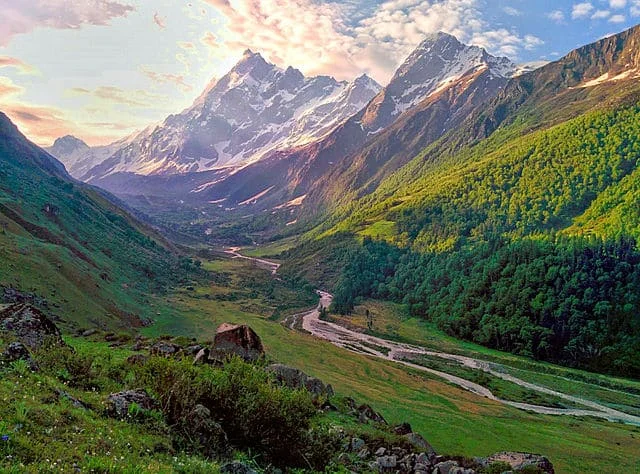
Har Ki Dun Trek
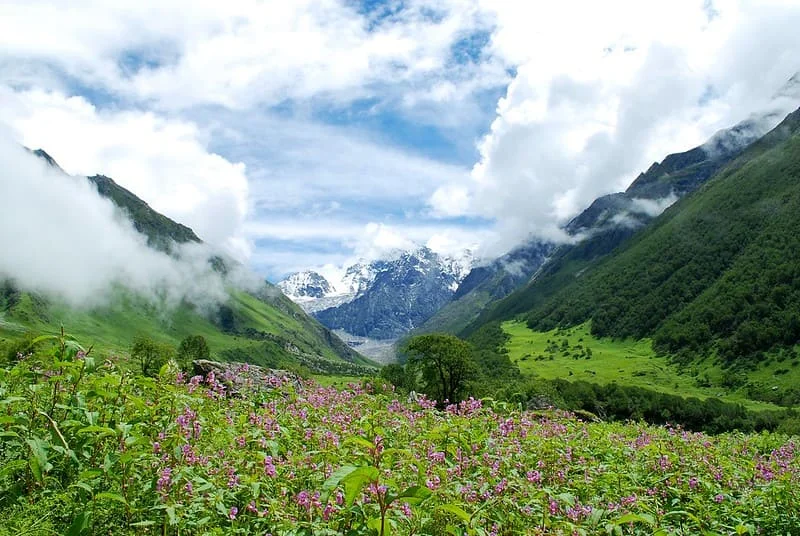
Valley Of Flowers Trek
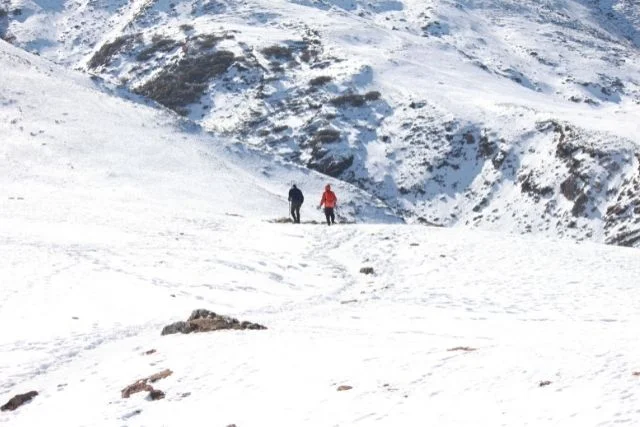
Kuari Pass Trek
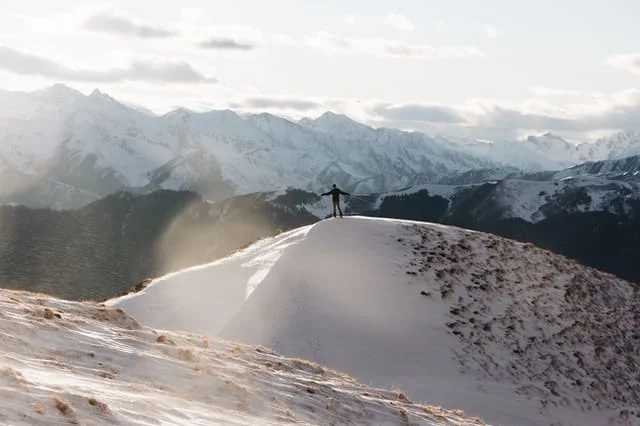
Pangarchula Trek
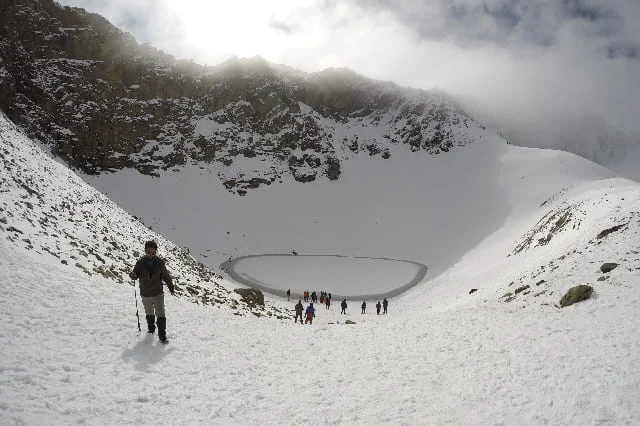
Roopkund Trek
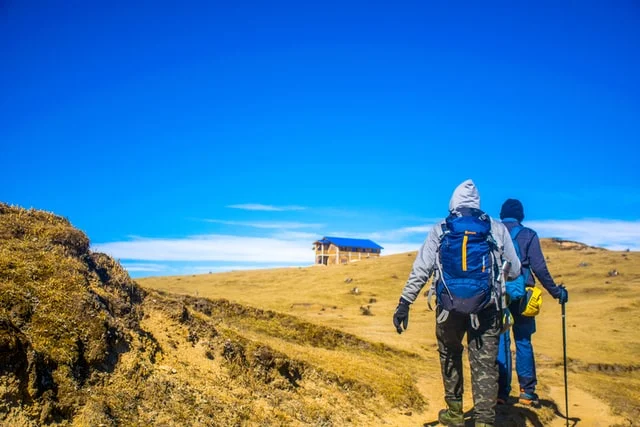
Sandakphu Phalut Trek

Pangarchula With Kuari Pass Trek
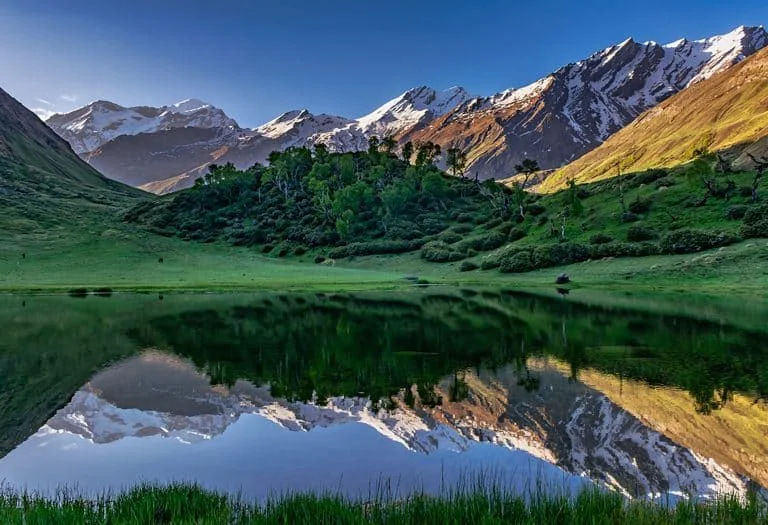
Har Ki Dun with Ruinsara Tal Trek
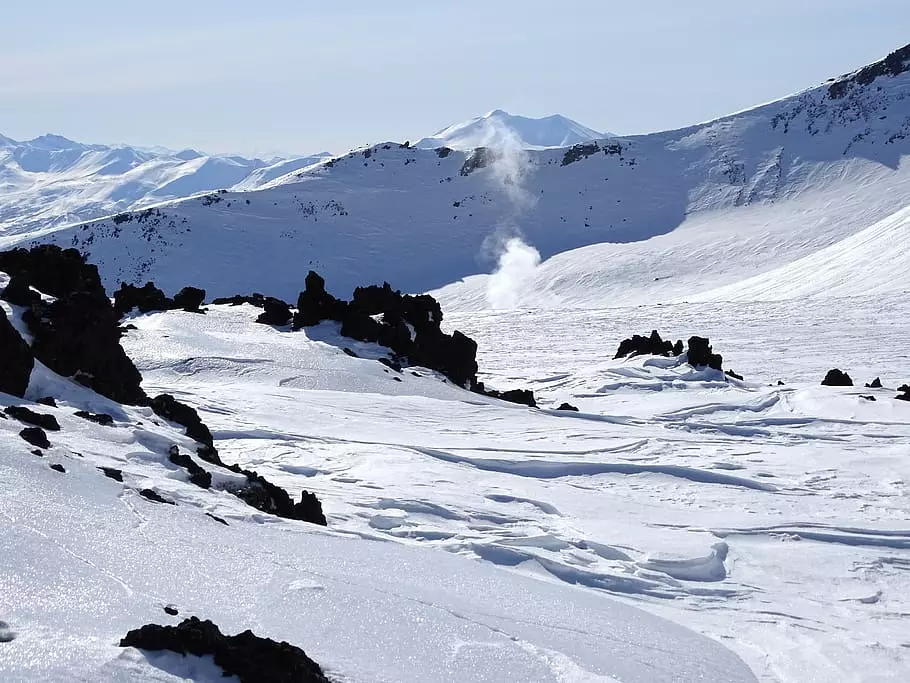
Hampta Circle Trek
Choose your date.
- Long Weekend Trips
- All Girls Trips
- Domestic Tours
- International Tours
- Upcoming Trips
- Corporate Program

Welcome Guest

Shyamlee Khanna
“ Had a winter trekk of Kuari pass. The trekk was amazing and well planned. Our guides (Vishal and Laxman) were very helpful during the whole trip. Looking forward for a next trip soon! ”
Mukul Varshney
“ The Kashmir Great Lake Trek with Just Wravel was an absolute dream come true. Words can't fully capture the emotions I felt while exploring the mesmerizing landscapes and immersing myself in the local culture. This journey touched my heart in ways I never expected, and I'm forever grateful to Just Wravel for creating such a profoundly moving experience. It's not just a trek; it's a piece of my soul forever embedded in those majestic mountains and serene lakes. ”
Anurag Bhardwaj
“ I recently embarked on the epic Kashmir Great Lakes trek with these adventure wizards, and it was like stepping into a real-life fairy tale. The team at Justwravel knows how to throw a party in the wilderness! From the jaw-dropping landscapes to the trek leaders like Vishal bhai who are basically super fun nature encyclopedias, they've got it all.. I had the best time with him and definitely going to be in touch for my future trekking plans as well ?? And let's not forget the incredible staff team who whipped up some mouthwatering food! Well and that's something you wouldn't expect on a trek like that! Their culinary skills added an extra layer of delight to our adventure. Their entire team made camping easy, trekking a breeze, and every moment an adventure. So, if you're looking for a dose of thrill and priceless memories, grab your backpack and join the Justwravel gang. You won't regret it! #AdventureGoals ”
Aman Agrawal
“ Spent an amazing week with JustWravel at Kashmir Great Lakes. Our Guide Vishal was AWESOME and we recieved great support from our back up team as well. Ajaz Bhai kept me motivated whenever I got too slow on the trek.. thank you for this amazing experience team!!! ”
Ankita Bora
“ I went for a valley of flowers trek with Justwravel from July 15-20, 2023. I had an absolutely amazing experience with them. The trek leads were very experienced and ensured we had a safe and enjoyable experience. The team ensured to respond to our queries of the weather and assured us of a safe trek experience. I would recommend Justwravel! ”
Disha Gupta
“ Had an amazing experience while doing the Sar Pass trek solely because our trek leader Vishal was an amazing human being who understood the team we'll adapted to our capabilities. Some of us were slow, but that was never a problem for him, he just continued being his cheerful self and encouraged us to move on. Vishal also displayed proper planning and leadership skill. The trek was breathtaking in itself although slightly challenging so I wouldn't recommend it for beginners. I would grade it as moderate coz of the steepness of it at certain places. Also here's a pic of Vishal so you can ask for him on your trek. ”
Rebecca Fernandes
“ I went on sar pass trek with Justwravel and as usual had a very excellent and magnificent experience thankyou so much Justwravel for making this trip also a memorable one . And the Trip lead Vishal Tiwary was extremely kind and well versed with the mountains, he guided us really well and shared his best knowledge so that we can take care of our health and reach the summit in the best way possible. Ended the trip with lots of good memories and hope this journey continues!! ”
“ It was my first time with Just Wravel and I did Sar Pass trek with them. I had an amazing experience in terms of stay as well as the trek. Stunning campsite, great food and our trek lead, Vishal, was extremely kind and very well versed with the mountains to guide us to summit despite bad weather conditions. Met a great bunch of people, couldn�t have asked for more, will recommend 100% ”
Paridhi Aggarwal
“ I recently did a trip to Leh Ladakh with JustWravel team, and boy, was it an experience for a lifetime! The trip leaders - Geetanjali, Ashish, Shashank - took such good care of the travellers. The team's thoughtfulness and local experience really shone through in the way the itinerary was planned. Plenty of photo opportunities, and daily briefings to prepare us for the unfamiliar climate and terrains of Ladakh. We had sufficient time for rest & recuperation and the accommodations provided were the best-possible, given the environmental conditions in that particular region. Really glad I did this trip solo and chose to go ahead with JustWravel's expertise. All we had to do was show up and the team ensured that we would have a great time - exploring the destinations and clicking away pictures of the beautiful mountains, valleys & lakes. Special shoutout to Geetanjali who really helped keep the spirits high and thanks to her, a group of strangers just felt like long-lost friends. Truly a memorable trip! ”
Shriti Chatterjee
“ Had visited Spiti valley in August with very experienced trip lead Namit.Though the weather conditions were tough Namit kept reassuring safety for us throughout the trip. Good arrangements for stay and food by Justwravel.The driver too was very experienced for the tough driving roads.Namit and the entire group were very friendly and cheerful-had wonderful time.Thanks JustWravel and Namit for the amazing memorable trip.Recommended. ”
Apeksha Godre
“ Went for 11D/10N Ladakh Trip with Just Wravel. Had amazing time with a great bunch of people, who were complete strangers at the beginning of the trip. Just Wravel has a well curated itinerary that covers all important sights but also leaves enough time for personal relaxation/exploration. Our Trip leaders: sashang and abhishek ashish were helpful and available throughout the duration of trip. Safety of Bikers was ensured, through the entire duration of trip. Food and Accomodation were great as well. Would strongly recommend Just wravel for anyone planning a trip to Ladakh. ”
Hemang Pandya
“ It was by chance I came across JustWravel and there was something about it that made me go for it. So I took the chance and booked my first ever group trip to Leh Ladakh with them only to have an amazing experience that I am sure I wouldn�t have been able to managed on my own. The seamless organization and smooth execution of entire trip made it truly memorable. From start to finish, the they ensured that everything was well-planned and efficiently managed. Their attention to detail and commitment to providing a great travel experience is highly commendable. Special thanks to Manjunath for always looking out for everyone in the group! ”
Swasti Mehta
“ I went to the Valley of Flowers trek with Justwravel in July, and it was one of the best experiences of my life. It was my first ever proper trek, so I was a bit nervous. But the team kept me comfortable all the time and I had so much fun. Would definitely travel with them again on other treks! ”
Preethi Dalia
“ It was a great trip in Bali with justwravel and our tour guide "Parth". I had a wonderful time with the group. Created lots of memories to cherish for lifetime. All the pickups were done on time. The itinerary was also well planned. Parth ensured that every one in the group feels comfortable. He always fixed issues quickly whether they were due to travel or food. Also we got a good photographer as a bonus as our tour guide. Thank you JustWravel for making this a memorable trip. Best Wishes, Anju ”
Anju Aggarwal
“ Just when I wanted a break, not actually a break rather an experience, JustWravel popped up in my Google Search, that too with options like backpacking grps, all girls with pick up and drop location at Delhi, so I booked the All Girls Spiti Valley Trip (01/07/2023) with JustWravel.Our entire trip went very smooth until the last day in Manali (09/07/2023) when Himachal was hit by the Natural Calamity. By God's grace our entire group was very much safe in Manali. The agency handled our extended stays (3days) in Manali hotel, including meals, travel and everything. Our trip leader Mehek Mahajan kept us always updated and was always there to support us in every way plausible. She even suggested to book tickets from Chandigarh as Delhi was flooded too, most of us did that and reached home safely. Inspite all these, the journey to Spiti Valley was indelible. And one thing is for sure, next time if I get to travel I'll again choose JustWravel. ”
Alisha Mullick
“ I had the most amazing trip experience to kashmir under the leadership of Omer. Traveling with him was an absolute pleasure. His warm and friendly personality created a positive and inclusive atmosphere among the group. His extensive knowledge and love for the local culture added a special touch to our journey. He was always available to answer questions, address concerns, and provide valuable insights about the destinations we visited. Thank you, Omer for making this an unforgettable experience. I highly recommend anyone to travel under his guidance looking for a memorable and expertly organized travel experience. ”
Arushi Singhal
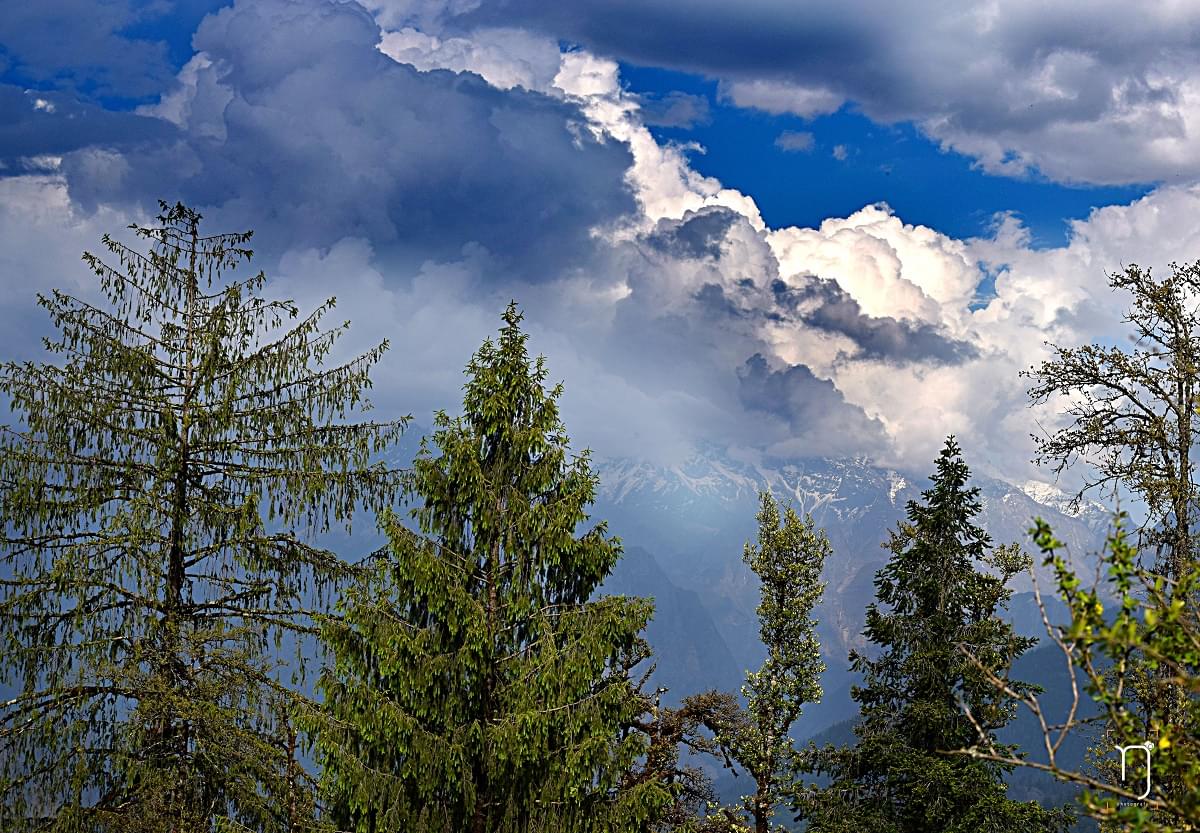
Photos More

Kuari Pass Trek
Pickup & Drop
Rishikesh to Rishikesh
Easy to Moderate
Trek Length
Safe Travel
Flexible Cancellation
Certified Captains
24/7 Support
Nestled in the Garhwal region of the Himalayas, the Kuari Pass trek is one of the best winter treks that our country has to offer. Situated at an elevation of 12,516ft, it is also known as the Lord Curzon trail, named after the former Viceroy of India during the British Raj who was the first person to complete this trek in 1905. His connection to this trek is one of the reasons why it’s popular among not just Indian travelers but fascinates a lot of American and European travelers from all over the world as well. The Kuari Pass trek, as it was carried out back in the day and continues to follow the same path till today, starts from Joshimath and ends at Kuari Pass, covering a 28km long trail that consists of gentle slopes, coniferous forests, and stunning views of the snow-capped mountains in the backdrop. During the long trail of the Kuari Pass Trek, we traverse through some of the hidden nearby villages like Tugasi, Guling, and Khullara where you get to take a closer look at the local customs and traditions of Uttarakhand. The trekking route with its scenic views of the Pangarchulla , Chaukhamba , Neelkanth, Dronagiri, Hathi Ghoda, and Nilgiri mountain ranges is what captivates the attention of travel enthusiasts and makes people seek out this particular trek. Not to mention that with its snow-covered oak forests and pearly meadows, it manages to leave a lasting impression on snow fanatics and nature lovers alike. The trek starts from the town of Joshimath which is the base camp for the Kuari Pass trek and traverses through Himalayan hamlets followed by Oak and Deodar Forests and then giving way to some pristine Bugyals which are meadows stretched like a tapestry on the trail. The breathtaking view of the Nanda Devi Massif in the backdrop is the highlight of this trek. Camping under the stars, waking up to a spectacular view of the Himalayas, all while making memories that you will reminisce upon for the rest of your life, the Kuari Pass trek is more than just an adventure, it's an experience of a lifetime, one that you can’t miss out on. Since the Kuari Pass trek comes in the easy to moderate category, it is convenient for both beginners as well as experts, making it accessible for a large group of people who are looking for trekking destinations during the winter season. Among other wonders that this journey has to offer, some lucky trekkers can discover paw prints of Himalayan bears and snow leopards giving them a glimpse at the wildlife that coexists in peace with nature. Overall, The trek to Kuari Pass is a blessing because it provides a perfectly balanced trip that offers adventure for thrill seekers as well as serenity for people who want to attain a certain sense of peace. The best time to do the Kuari pass trek is from the months of November to March. Although it’s one of the few particular treks that is accessible for travel enthusiasts throughout the year, during these months, the weather in this region is perfect and makes the overall experience a thousand times better. So, if you have been spending your time, wondering and trying to plan the perfect winter trek, then look no further because this is as good as it gets.

Rishikesh to Joshimath (254 Kms, 10 Hours Drive)
Drive from joshimath to tugasi (14 kilometers, 45 mins drive) | trek to guling (4 kilometers, 5 hours), trek from guling to khullara (6 kilometers, 7 hours), trek to kuari pass | back to khullara (6 kilometers, 7 hours), trek from khullara to tugasi (12 kilometers, 6 hours) | (drive to joshimath (14 kilometers, 45 mins drive), drive from joshimath to rishikesh (254 kms, 10 hours drive) | end of tour, age limit (trip wise).
Weekend Getaways
Himalayan Treks
Backpacking Trips
Biking Trips
Customized Trips
Inclusions & Exclusions
Cancellation Policy
Payment Policy
Things To Pack
You must pick a good quality backpack with a comfortable fit and straps that won’t give you shoulder pain. You can check out your nearest Decathlon store for a good trekking backpack.
Day Bag / Day Pack :
When you head towards the summit, you are required to carry only a few necessary items and for that, you need a day backpack as you will leave your bigger one on the campsite.
Hiking Shoes :
Durable footwear designed for rugged terrains.
Floaters or Sandals :
Although the entire trek requires a good quality shoe, you still need to let your feet breathe to avoid chafing and blisters. When you are at the camp, a good pair of sandals and floaters will help you to move freely.
Tees / Tshirts :
You must keep at least three pairs of quick dry tees so that you can wash them in between stops for proper hygiene.
A poncho is an evolved form of a raincoat that provides coverage to your body as well as your bag and ensures total water protection from rain.
Quick Dry Towel :
A quick dry towel will help in maintaining proper hygiene. It must dry quickly because the wet fabric will only increase the chance of bacterial growth.
Sanitizer :
Essential for maintaining cleanliness while trekking.
Sun Cap / Hat :
A lightweight sun cap with side flaps is perfect to keep your head cool and avoid sunburns on a sunny day.
Sunscreen SPF 40+ :
To avoid sunburns and chafing, you need to put on sunscreen as well as cold cream.
Water Bottle (Re-usable) :
Hydration is extremely important when it comes to trekking. Carrying a water bottle that you can refill with Himalayan water is a must.
Personal Toileteries :
A bag with all your essentials including napkins, toothpaste, sanitizers, paper soap, etc should be carried in a ziplock bag.
Personal Medication / First Aid :
A few cuts and bruises are almost inevitable when you are on a trek so carrying a medical kit with bandages, Dettol, etc is necessary.
Sun Glasses / Reading Glasses :
Photochromatic glasses are specs that are designed to transform into anti-glare shades depending upon exposure to the sun. They are good when it comes to eye protection but one can also opt for clip-on glasses etc.
To keep your electronic devices powered during the trip.
Power Bank :
Ensures your devices stay charged when there are no outlets.
Personal Documents & ID's :
Identification proofs like Aadhar Card, Drivers License.
Laundry Bag (Waterproof) :
In case your clothes get wet or your garments don’t dry, you can carry them in polythene. However, make sure that all the plastic that you are carrying into the woods leaves with you. Don’t litter in the mountains.
Track Pants :
A good pair of track pants made of polyester will let your skin breathe. They’re lightweight, dry easily, and comfortable to walk around in. You can easily avoid chafing and rashes by investing in a good pair of track pants.
Trekking Shoes :
A good trekking shoe is comfortable, provides ankle support, and has a good grip as well. They shouldn’t be chunky, instead, they should be lightweight and sturdy.
Cotton Socks :
Cotton socks are extremely comfortable to move around in and are lightweight as well which is why you can always count on a good pair of cotton socks while trekking. However, keep in mind to change them and avoid wearing them when they are wet.
Woolen Socks :
A good pair of woolen socks, especially merino, are comfortable, limit odors and provide adequate insulation from the cold so you can wear them at night.
Woolen Gloves :
Insulated gloves help in maintaining proper body heat in your hands and also provide a better grasp on trekking poles.
Main Jacket :
It’s emphasized that you need to carry proper layers so you can avoid getting cold which is why you need to carry a heavy jacket that you can put on over your other clothes.
Woolen Cap :
A woolen cap will help prevent cold when you ascend to high altitude. You can also cover your ears to avoid any pain and discomfort you might face in them when going at high altitudes.
A versatile layering option for various temperatures.
Scarf / Balaclava :
Along with sun rays and chilly winds, you also get hit by dirt and grime during treks which is why it's important to carry a scarf or balaclava so you can cover your face when needed.
Head Lamp :
You can’t rely on moonlight when you are in the mountains. A torch or even a headlamp with a fresh pair of batteries is always a good idea to bring along.
Trekking Pole :
The trekking pole assists in more than one way. It saves energy while also providing stability and helps you to maintain proper balance.
This should be obvious. To make sure that you get to capture all the great moments from your trek. Make sure that you have enough storage and some extra batteries as well.
Riding Gear :
If your trip involves biking or motorcycling.
Moisturiser & Cold Cream :
Your lips can become chapped due to the harsh cold winds so it's important to keep them moisturized.
Sanitary Pads :
Essential for feminine hygiene.
Insect Repellent :
Guards against pesky bugs and insects.
Emergency funds for unexpected situations.
Thermal is a piece of garment that helps in keeping your body warm in cold temperatures. It is a necessary item that you need when going on a high-altitude trek.
Snacks / Dryfruits / Energy Bar :
Provides quick energy on the go.
Positive Attitude :
The most important item for a successful trek or trip, keeping your spirits high and adaptable to the challenges of the journey.
Starting From
Double - Room Will be shared between 2 people.
Triple - Room Will be shared between 3 people.
Quad - Room Will be shared between 4 people.
Memories for Life
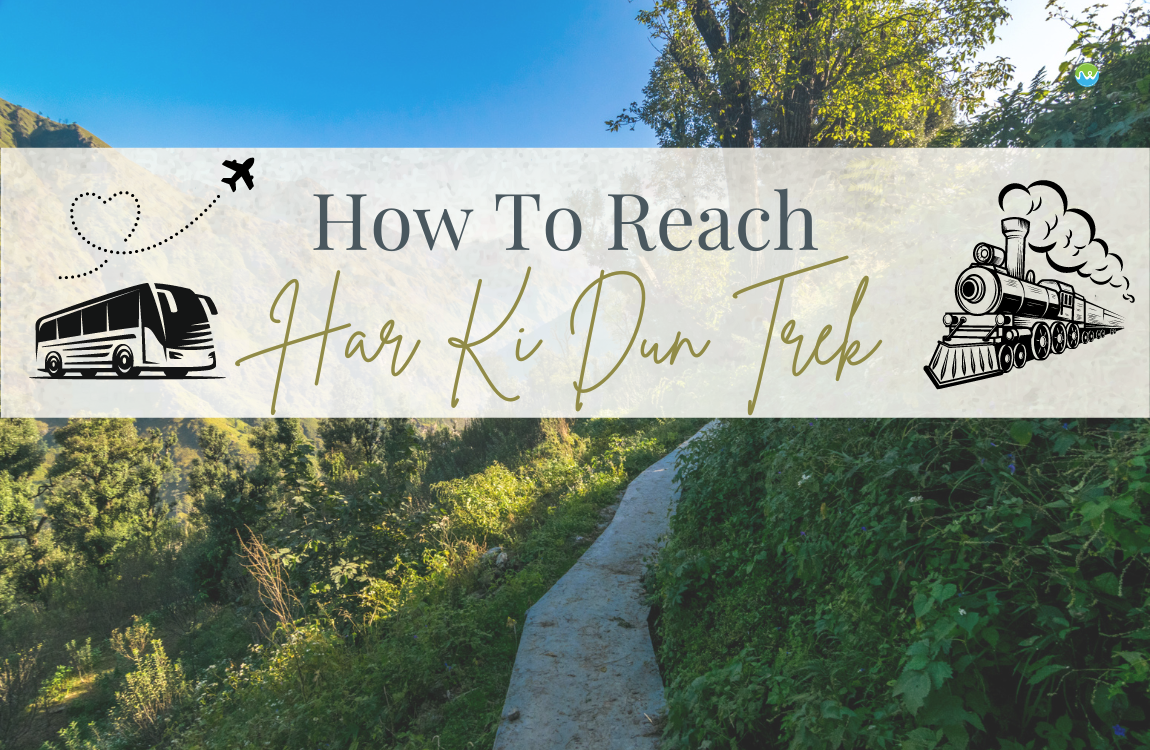
Published on 14 Jun
9 minutes read
How To Reach Har Ki Dun Trek

11 minutes read
Best Places To Visit On Independence Day Long Weekend 2024
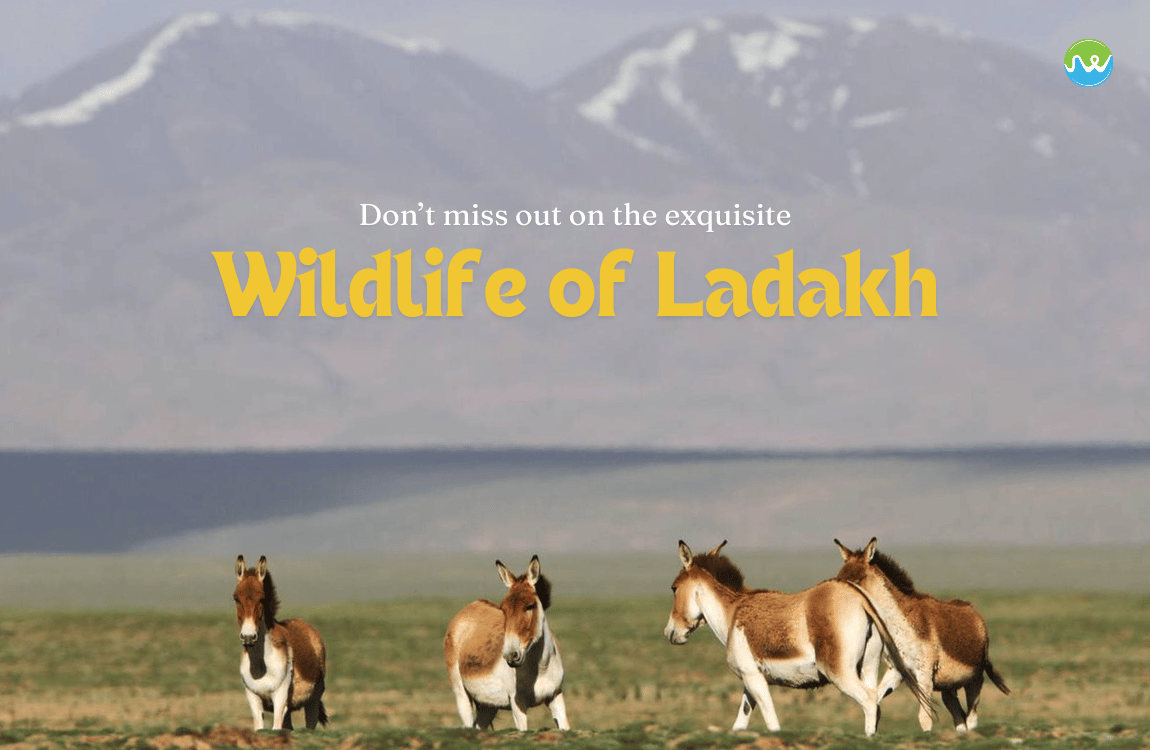
Published on 13 Jun
10 minutes read
Don’t miss out on the exquisite wildlife of Ladakh
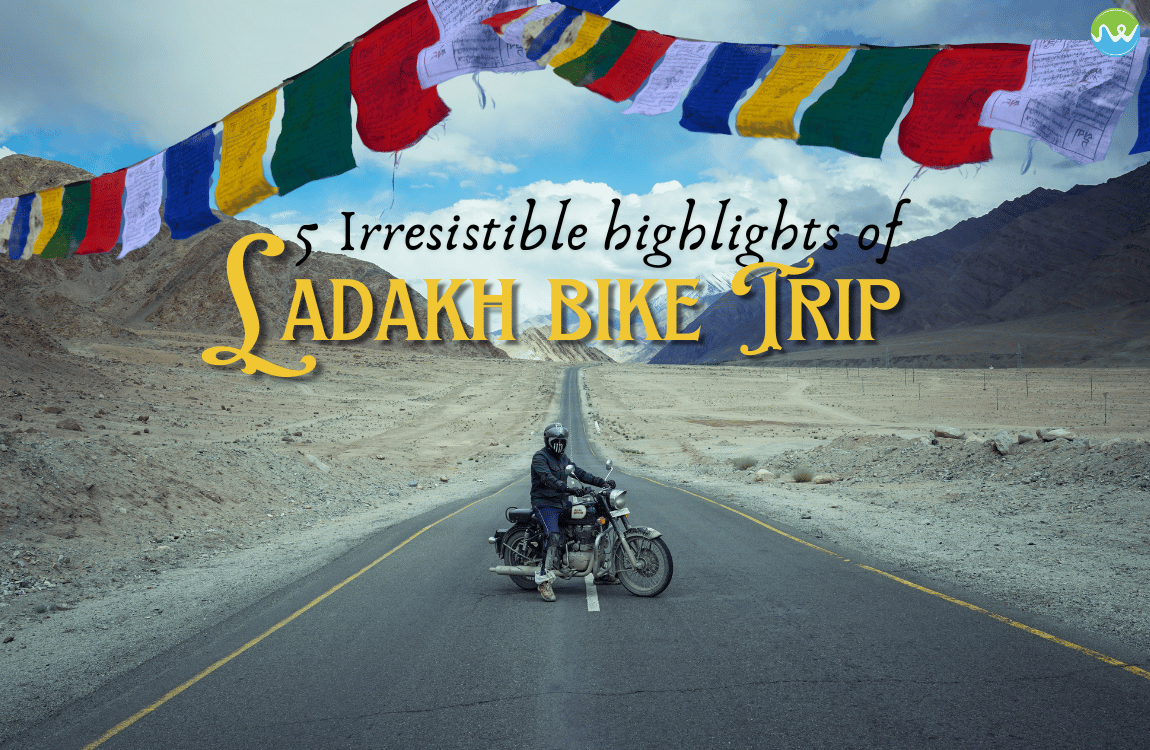
Published on 11 Jun
5 Irresistible Highlights of a Ladakh Bike Trip
There is a land where the sky seems within arm’s reach, where the rugged terrain challenges every sinew of your body, and where the culture is as rich as the vast landscape. Welcome to Ladakh, the dream destination for every biker. With its unparalleled beauty, challenging riding conditions, rich cultural experiences, adrenaline-pumping thrills, and unmatched […]
Have any Doubts
What kind of food can i get on the kuari pass trek.
There are no restaurants available, trekkers can carry some packaged foods or snack items with them
What Does the Kuari Pass Trek Include?
Stretching over 4 days and 6 if you include the Rishikesh stops, the trek starts from the village of Dhak, in the beautiful Nanda Devi National Park. The spectacular view of Mt. Nanda Devi and the forest views are the trip's highlights
What's the Best Season for Kuari Pass Trek?
Spring offers you the best of both worlds - while not too cold, the national park's spring flowers are in full bloom, and trekkers and can still see remnant snow.
How far is Mt. Nanda Devi from Kuari Pass Trek?
Mt. Nanda Devi is about 40 kilometres from the pass. The mountain's view is the highlight of the trek.
How Cold Does Kuari Pass Trek Get In the Winter?
Winters at Kuari are difficult - temperatures range from 12 degrees celsius all the way to -8 degrees
How far is Kuari Pass Trek from Dehradun?
The distance is 148 kilometres. As mentioned, buses are the reccomended method over the Nanda Devi Express.
Where is Kuari Pass Trek located?
Kuari pass is located in the western part of Nanda Devi Sanctuary in Uttarakhand.
Read More: https://www.justwravel.com/blog/kuari-pass-trek-guide/
How many kilometers does the whole Kuari Pass trek cover?
The total distance covered during the Kuari pass trek on the Dhak-Kuari Pass-Auli trail is 21.5 km.
Read more about the route - https://www.justwravel.com/blog/kuari-pass-trek-itinerary/
Can you go to Kuari Pass Trek by Road?
There are no direct buses from Delhi to Joshimath. From ISBT Kashmere Gate in Delhi, you can take overnight UKRTC buses and Volvos to Haridwar. The gap between Delhi and Haridwar is approximately 222 kilometres. From Delhi to Haridwar, you can also take a taxi or an outstation cab.
Are guest houses available to stay during or amidst the Kuari Pass trek?
As Kuari Pass trek area is uninhabitable, there are no guest houses amidst the trek, though you can bring your tents and equipments to help with
How long do we walk each day?
The average daily walking distance is 7- 9 km, and trekkers can complete it in 5-7 hours. Walking will not be a challenge for anyone because the trek is simple.
Which is the last ATM avaliable during the journey?
Joshimath has the last ATM on the way to the base camp.
Is the network available throughout the journey?
There are a few places where you can rely on a stable communication network. At Joshimath, Dhak village, and Guling, you can find decent network and internet connectivity.
Should a person be physically sound for this Kuari Pass trek?
Yes! a good level of fitness is required for the person to complete the trek.
What is the maximum altitude during Kuari Pass trek?
Kuari Pass trek reaches a maximum altitude/height of 12,516 ft.
What is the minimum age limit during the Kuari Pass trek?
14 years is the minimum limit, however they are supposed to be accompanied by their parents
What kind of shoes should be apt for the Kuari Pass trek?
The most important aspect of the trek are good trekking shoes, your trekking shoes should be warm, and made of waterproof material.
What is the starting point for the Kuari Pass Trek?
Joshimath is the starting point for the Kuari Pass Trek.
Read more: https://www.justwravel.com/blog/kuari-pass-trek-guide/
What are the nearby places to go from Kuari Pass Trek?
Auli, Nanda Devi Peak, Trishul Peak, Gorson Bugyal, Tali Lake
Which mobile service/internet provider works best at Kuari Pass Trek?
Vodafone, Jio, Airtel and BSNL are the prominent networks, Kuari Pass has a limited network and connectivity.
What is the level of fitness expected from the participants?
Any trek needs a high level of fitness to ensure that you have a good time.
Read More: https://www.justwravel.com/blog/kuari-pass-trek-guide/
Should I be carrying a medical kit?
Yes, it is always advisable to bring your own medicine on every trek, regardless of whether the organisers have it.
Can senior citizens do this Kuari Pass trek?
If you are a senior citizen, bring a medical certificate from your doctor stating that you are eligible for adventure activities such as trekking.
What is the difficulty level for the Kuari Pass trek?
Kuari Pass is an easy-moderate trek
Is taking anti-altitude sickness medicines like Diamox advisable?
Diamox will not be needed since the highest altitude you will reach on the excursion is approximately 13500 feet. However, if you have had trouble adjusting to such elevations in the past, you should consult a doctor first.
Is camping allowed on the Kuari Pass Trek?
You can camp amidst the lush green meadows, consisting of vast green pastures with Himalaya Views.
How many routes are there to reach Kuari Pass Trek?
There are a total of four routes for the destination:
1. Ghat, Ramni, Sanatoli to Kuari Pass, 6 days 2. Joshimath, Auli and Gorson to Kuari Pass, 5 days 3. Joshimath, Mirag, Tugasi and Khulara to Kuari Pass, 5 days 4. Tapovan, Khulara to Kuari Pass, 5 days
Related Trips
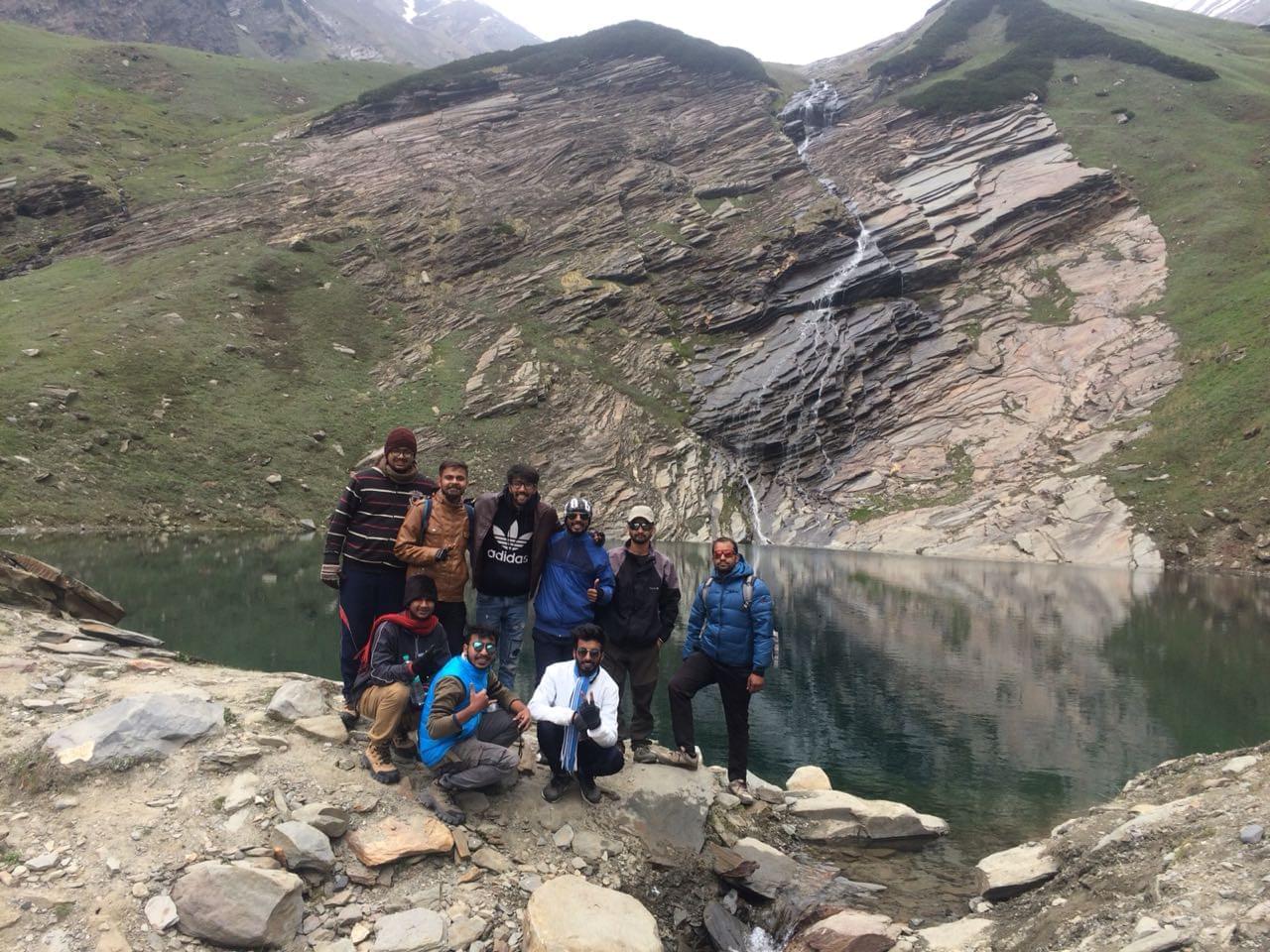
Beas Kund Trek
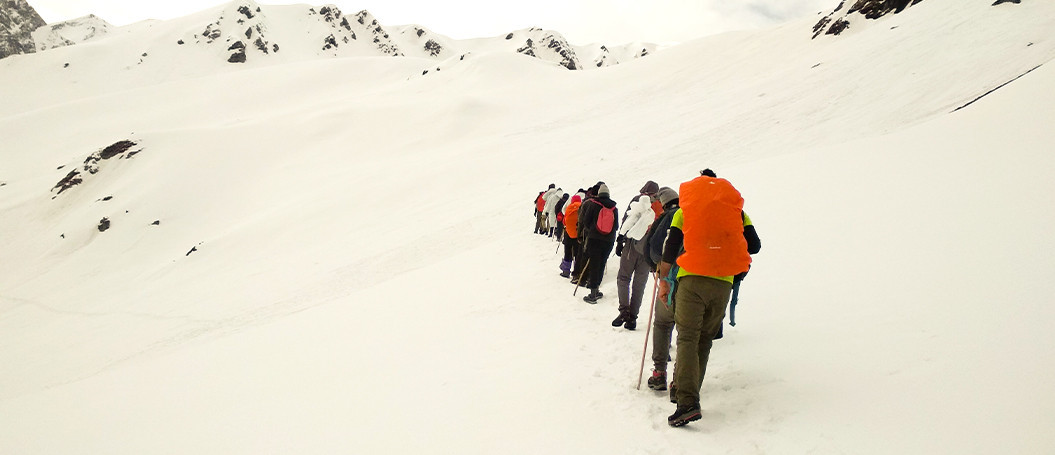
Sar Pass Trek
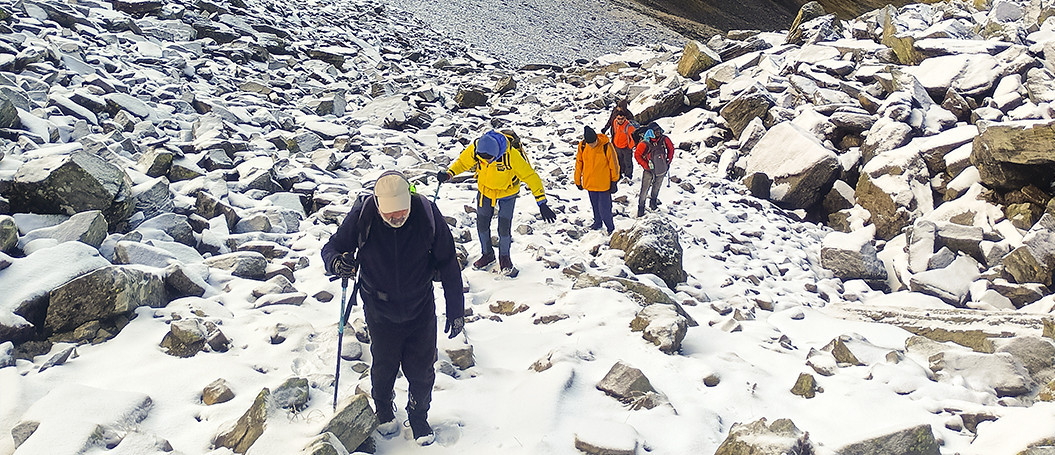
Chandranahan Lake Trek
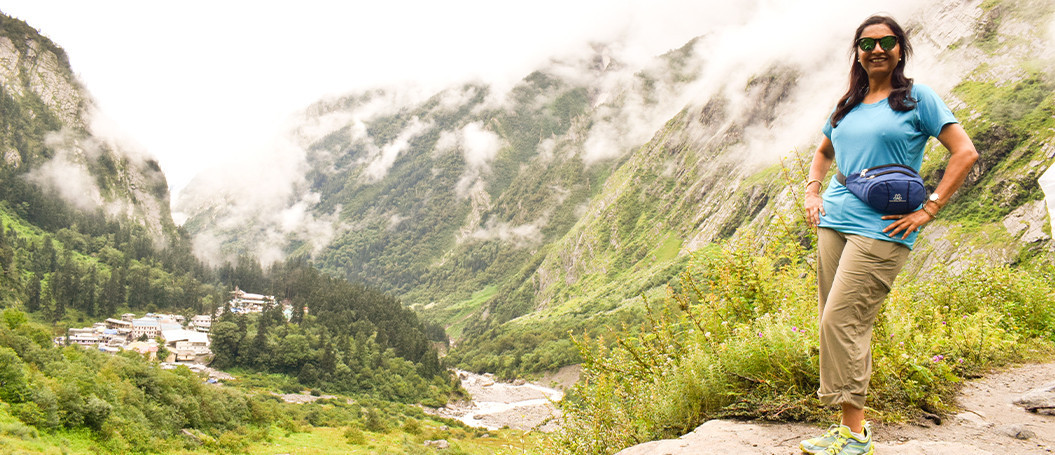
All Girls Trek to Valley of Flowers
Select Occupancy
Credit Note :
The Booking Amount will be credited to your JW Profile which can be accessed by logging in to the website through your Email ID. Credit Notes issued have no date of expiry and can be used entirely in any of your future trips.
Similar Packages

Sign up now!
Be the first one to know all about the Exciting Offers, Travel Updates and more.

B-42, 2nd Floor, Tower- B, The Corenthum, Block A, Sector 62, Noida, Uttar Pradesh 201301
+91-8810 457 631
© 2015-2024 JustWravel Pvt. Ltd.

B-42, 2nd Floor, Tower- B, The Corenthum, Block A, Industrial Area, Sector 62, Noida, Uttar Pradesh 201301
Group Tours
Starts From
₹ 10,800 +5% GST
- Travel News
- Homestay Registration

Kuari Pass Trek
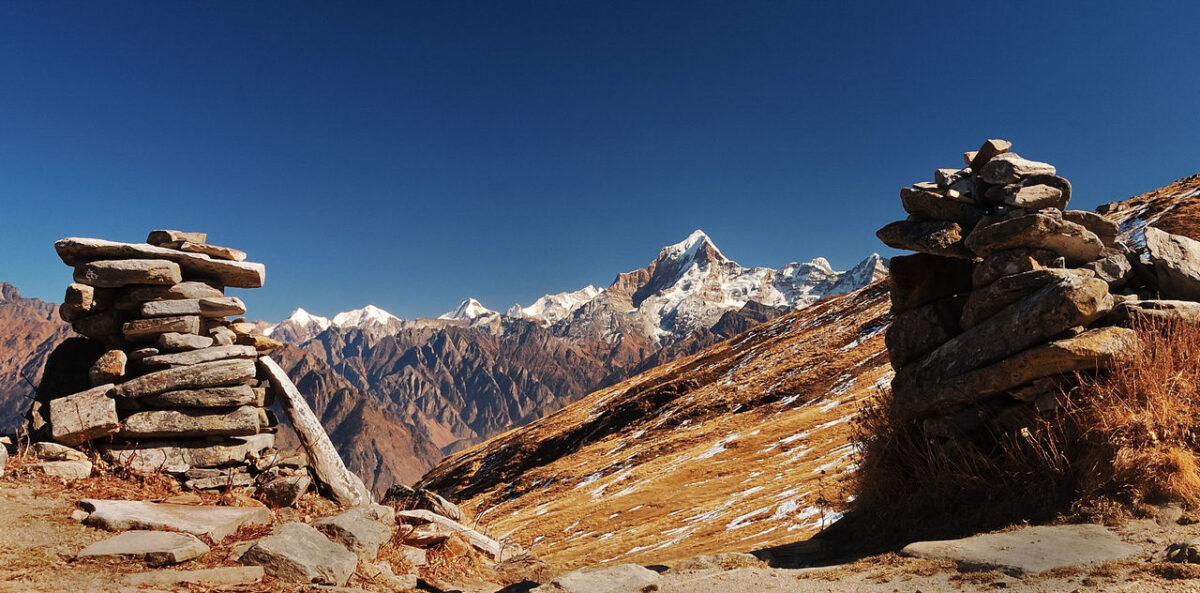
₹ 9,500 / Person
Autumn / Summer / Winters Total Trekking Distance: 30 Km Trekking Duration: 4 Days Trek Difficulty: Moderate Experience Level: Beginner Fee Includes: Joshimath to Joshimath
- Description
- Reviews (0)
Batch Availability
15 Oct – 20 Oct ( Available )
22 Oct – 27 Oct ( Available )
29 Oct – 3 Nov ( Available )
5 Nov – 10 Nov ( Available )
12 Nov – 17 Nov ( Available )
19 Nov – 24 Nov ( Available )
26 Nov – 1 Dec ( Available )
Kuari pass trek is a magnificent trek with beautiful landscape views in Garhwal Himalayas. It is also known as Lord Curzon Trail. Kuari Pass trek is one of the best treks in winter and might be accessible in all seasons. It is an old trekking route to connect Virahi Ganga Valley with the Dhauliganga river valley. It also connects with the Roopkund trail. Kuari Pass Trek is an excellent choice for trekkers who want to enjoy snowy mountains, face challenges in harsh conditions, passionate about birds and flowers.
From Kuari Pass Trek, you will get the best panoramic view of mount Nanda Devi(7816m), Dunagiri(7066m), Hathi(6727m), and Gauri(6708m). Apart from these, Neelkanth, Kamet, Mana Peak, Rishi Pahad, Mukut, Changbang, etc., are also visible from Kuari Pass Trek.
Best time to visit Kuari Pass Trek
Kuari Pass Trek can be accessible in different timeframes. The best time to visit the Kuari Pass trek is November – December in Winters, March- April in Spring, and September month in Autumn Season.
Kuari Pass Trek in winters:
From November, fresh snowfall starts, due to which the white sheet of snow gets scattered all over the trek. With the snow-capped Himalayan peaks, it provides very scenic and spectacular landscapes.
Kuari Pass Trek In post-monsoon:
From mid-August to September, the beautiful bugyal which falls in this trek, filled with many different species of colorful wildflowers, Which look very seductive to watch. It is the best time for nature lovers, nature and bird photographers, and amateur trekkers.
Brahmatal Trek in Spring:
In this period, beautiful green forest decorated with red, pink, violet Rhododendron flowers, which gives a splendid panorama of nature with snowy mountains.
Base camp for Kuari Pass Trek
Karchi Village, Near Joshimath, Distt. Chamoli, Uttarakhand, PIN code-246483.
Alternative to Kuari Pass Trek
Bali Pass Trek, Nagkund Kankata Pass Trek
Sort Itinerary
Itinerary for kuari pass trek.
Day 1: Rishikesh to Joshimath pickup for Karchi
- Distance - 275 Km
- Driving Time - 10 Hrs.
- Maximum Altitude - 2286m/7500ft
Reach Joshimath via Rishikesh or Haldwani, approximately 260 km from the Rishikesh and 290km from Kathgodam. We will pick you from the Joshimath for the Karchi village. Karchi village is a beautiful small village, which is our base camp for the Kuari Pass Trek. People in Karchi village have well maintained their old traditions and values. You will enjoy the fresh and healthy organic food there.
Day 2: Karchi to Saimati
- Distance - 3 km
- Trekking Time - 3 Hrs.
- Maximum Altitude - 2828m/9278ft
- Altitude Gain - 542m
On the first day of trekking, you should wake up early in the morning because the first ray of sun falling on the Hathi-Gauri and Dronagiri mountains is mesmerizing. It is always fascinating to watch the golden-red reflection of the sun rays on the Himalayan peaks. We will do some stretching and yoga so that it will be easy for you to climb. After breakfast, we will start hiking towards the Saimati campsite, a 4 km climb from the Karchi Village. So gear up for the upcoming adventures.
The nearest campsite before the Kuari Pass is the Khullara campsite. Khullara campsite is located at an altitude of 3390m and around 1104m higher than Karchi village. It is advisable not to climb more than 900m in a day while going above 2500m altitude. There is a chance to get Altitude Mountain Sickness while going beyond 2500m. Therefore, we camp between the Karchi Village and Khullara campsite, which is Akhrotghatta/ Saimati campsite. Saimati is a small beautiful bugyal near Chhani village located in the middle of the forest.
Day 3: Saimati to Khullara Campsite
- Distance - 4 km
- Maximum Altitude - 3390m/11122ft
- Altitude Gain - 562m
After having breakfast in the morning, we will leave for the campsite. Khullara Campsite is at a distance of about 3 Kms from Saimati Campsite. The hiking trail proceeds through the forests and beautiful meadows. Meadows are full of green grass and colorful flowers in September, which is very attractive to see. After September, due to extreme cold at night, these green grass and flowers die and are converted to golden-brown meadows. During winters, Khullara Bugyal and Kuari Bugyals cover with a sheet of snow. From Khullara, one has a mesmerizing view of the Himalayas and the surrounding forest. You would find many types of birds around Khullara as well as the beautiful Monal bird can also be seen.
Day 4: Khullara to Kuari Pass and Back
- Distance - 9 km round Trip
- Trekking Time - 7 Hrs.
- Maximum Altitude - 3820m/11122ft
- Altitude Gain- 430m
From Khullara Campsite, we will leave early in the morning for Kuari Pass. Kuari Pass is about 6 km from Khullara. Keep only the essentials with you as we will be back at Khullara Campsite today. As soon as we climb a climb of about 200 meters from Khullara, we reach Kuari Bugyal. After trekking about 1.3 kilometers in Kuari Bugyal, you will be at the top ridge of Bugyal. There is a small temple and two stone pillars on either side of the trek, which give a gate-like feeling.
The trail from Auli to Kuari Pass is also meet at this place. There is a view of the Kuari Pass area and the path for the Kuari Pass trek. Trekking from here to Kuari Pass is relatively easy. There is one more mountain ridge before Kuari Pass, which is also the highest point of the Kuari Pass Trek. You can see Kuari Pass visible from this point.
When you reached Kuari Pass, another part of the Kuari Pass Trail or Lord Curzon Trail is noticeable, which goes towards Irani village via Pana village. From Irani village, you can go towards Badrinath Highway via Ghat. From Irani village, one can also go on other treks like Sapta Kund Trek, Roopkund Trek, and Nilladi Belpatra Trek. Kuari Pass trek is used for centuries by villagers for travel. It connects Virahi Ganga and Dhauliganga Valleys. After spending some time in Kuari Pass Trek, we will go back to the Khullara Campsite.
Day 5: Khullara to Auli
- Distance - 14 km
- Trekking Time - 6 Hrs.
- Minimum Altitude - 3450m
Today is also going to be very adventurous. First of all, we will connect to the Kuari-pass-Auli trail to reach Auli from the Khullara campsite. The trek goes from a sharp mountain ridge and has many challenges. Therefore you should be very cautious while passing the mountain ridge. The Khullara-Auli trek is 14 km long, so it will be very tedious for you but also very scenic. An extensive Himalayan range is visible from this trail. Also, the best view of the Nanda Davi Peak is visible from the trek ahead. We will reach Auli by the evening via Tali Taal and Garson Bugyal. We will stay at the skiing destination Auli.
Note: Today’s stay point may change due to heavy snowfall, inaccessible routes, unforeseen weather conditions, or other reasons. It could be Joshimath via Karchi.
Day 6: Joshimath to Rishikesh
- Distance - 260 Km
- Driving Time - 9 Hrs.
We will drop you at bus station Joshimath. From there you can go to your respective destinations. You have completed the Kuari Pass Trek, one of the best treks in the Garhwal Himalayas. Hope! You would have enjoyed this trek and taken unforgettable memories of this trek with you. Don’t forget to give your valuable feedback and share your experiences with us.
Kuari Pass Trek Price
₹ 9,500 Inc GST – Joshimath to Joshimath
- Accommodation Hotel/ Guesthouse/ Tents
- Meals as per itinerary
- Safety Equipment (oxygen cylinder, first ad...)
- Tour Guide.
- Trekking Gears like Crampons, Gaiters (When needed).
- Forest entry charges, permits & camping fee.
- Necessary Permit
- Porter/Mule charges for carrying personal luggage.
- Any costs arising out of unforeseen circumstances like landslides, roadblocks, bad. Weather, etc.
- Trekking Gears like poles, shoes, poncho etc.
- Travel Insurance.
Things to carry
- Waterproof Trekking Shoes
- Woolen/Cotton Socks (Thick) - 2-3 Pairs
- Woolen sweater ( warm & Light )
- Jacket/Windcheater (waterproof 0° to -10° )
- Trek Pants/Lower - 2 units
- Thermal wears - 2 pairs
- Full Cotton T-shirts - 2-3 units
- Inner wears - 2-3 Pairs
- Warm woolen shawl ( Thin & Light )
- Water Proof Rucksack ( 30-60 liter )
- Rain coat/Poncho
- Rain cover for your bag
- Portable Tourch/Headlamp
- Water Bottle
- Winter Moisturizer Cream
- Sunscreen Lotion
- First Ad Kit ( ORS, AMS tablets, Band Ad, Pain Relief Spray, Coldarin, etc.)
Kuari Pass Trek Gallery
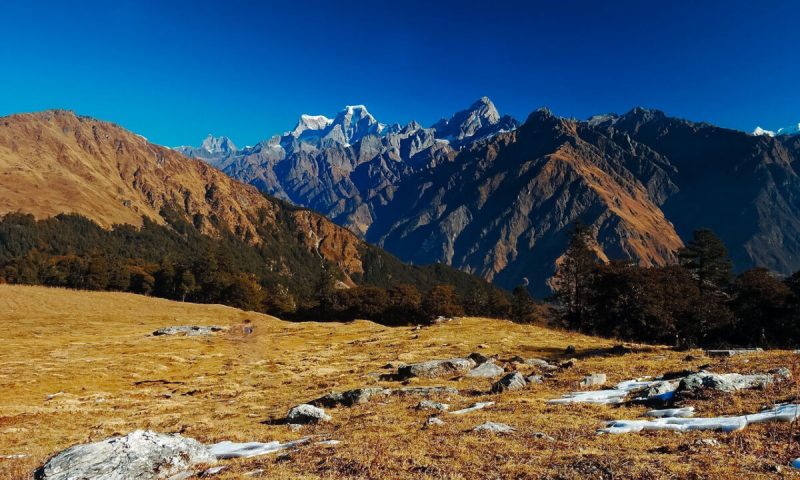
Kuari Pass Trek Route Map
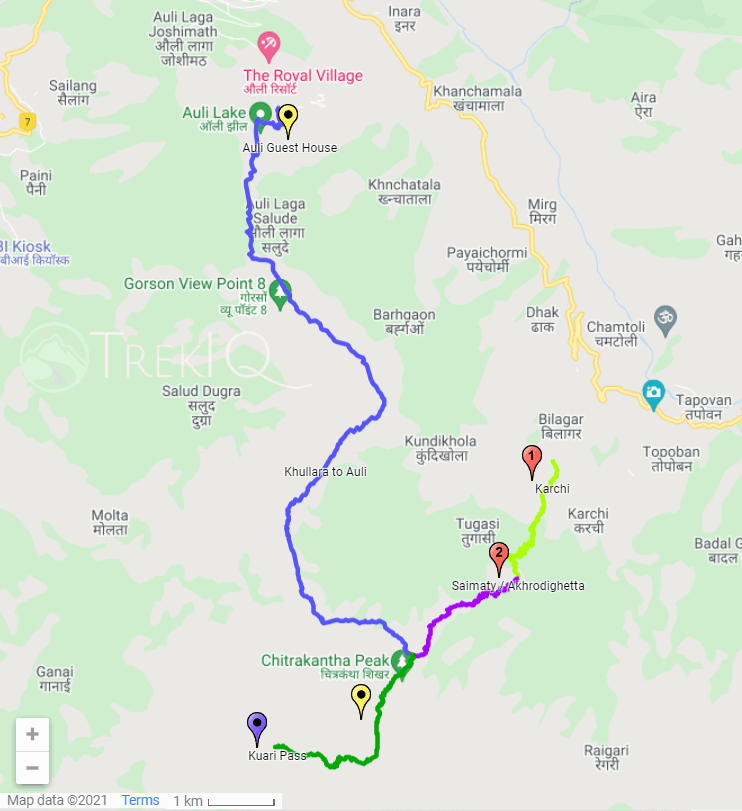
Kuari Pass Trek FAQs
The best time for Kuari Pass Trek is the winter season. It is beautiful to view snowfields and snowy mountains. Apart from winters, September month also the best time to visit Kuari Pass Trek as at this time there are beautiful meadows filled with flowers of different colors.
Joshimath is the pick-up and drop point for the Kuari Pass Trek. Our price is inclusive of pick-up from/drop to Joshimath.
The total trek length of the Kuari Pass Trek is about 30 km from Karchi village to Auli. Karchi to Karchi round trip is approximately is 23 km.
In some cases, individuals suffer from Acute Mountain Sickness when ascending to elevations of over 3,000 meters from sea level. However, it is a common and mild condition. If the body gets enough time, then it can be overcome. The reason why it happens is- reduced air pressure at high altitudes as well as lower oxygen levels. One of the more severe forms of mountain sickness is called High Altitude Cerebral Edema, where fluid builds up in the brain. It is a life-threatening situation and requires immediate medical attention.
Yes, AMS may occur during the trek, as the elevation of Kuari Pass Trek is more than 3000m. While going beyond the Khullara campsite, there are more chances of having AMS due to the high altitude of more than 3390m. The highest point of the trek is at the elevation of 3820m. In winters, there are low oxygen levels, so more prone to AMS.
Kuari Pass Trek Facts
Latitude & Longitude
30.447789° N 79.565963° E
Max Altitude
3820m / 12533ft
Total trek distance
Difficulty Level
Trip Duration
6 Days 5 Nights
Pickup & Drop
Kathgodam/Rishikesh
Essential facts
Nearest Medical Facility
Nearest Hospital
Nearest ATM
Mobile Connectivity
Karchi/Auli
Last Electricity
Nearest Bus Station
Nearest Railway Station
Nearest Airport
- Like Us On Facebook
- Follow Us On instagram
Kuari Pass Trek Reviews
There are no reviews yet.
You must be logged in to post a review.
Similar Treks..
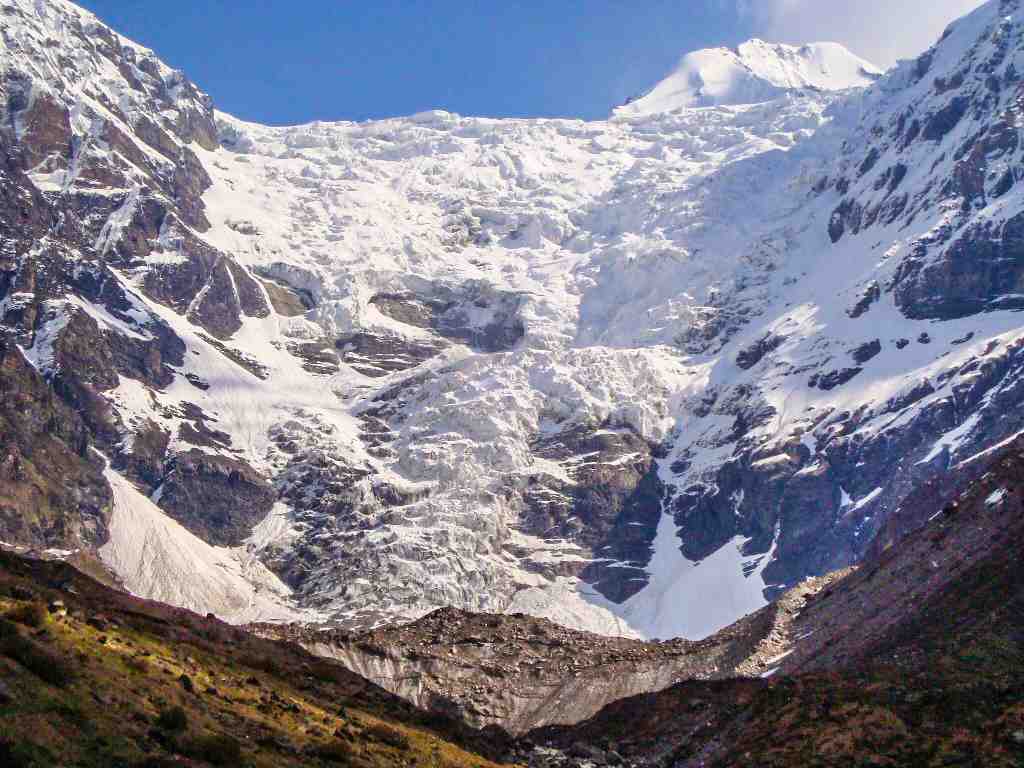
- Rated 0 out of 5
Kafni Glacier Trek
- ₹ 11,500 / Person
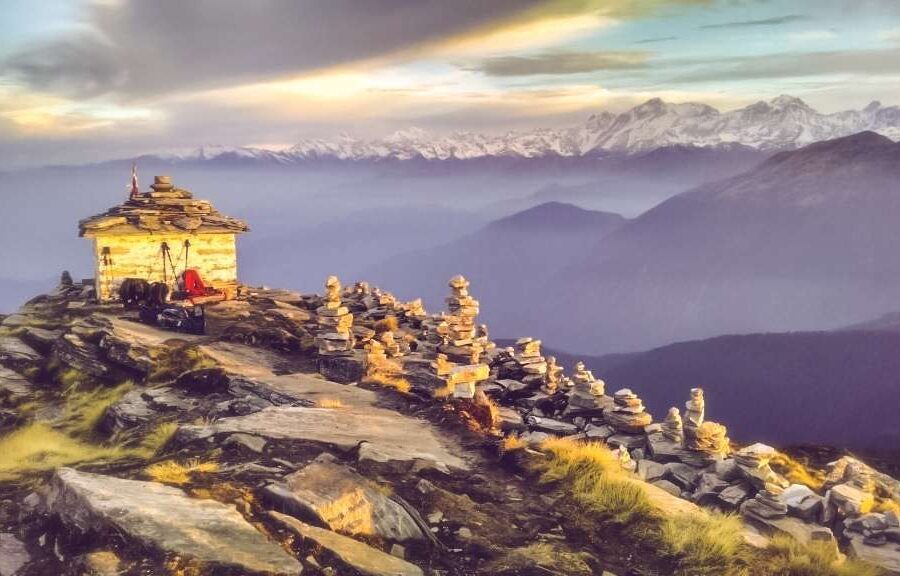
Deoriatal Chandrashila Trek
- ₹ 6,000 / Person
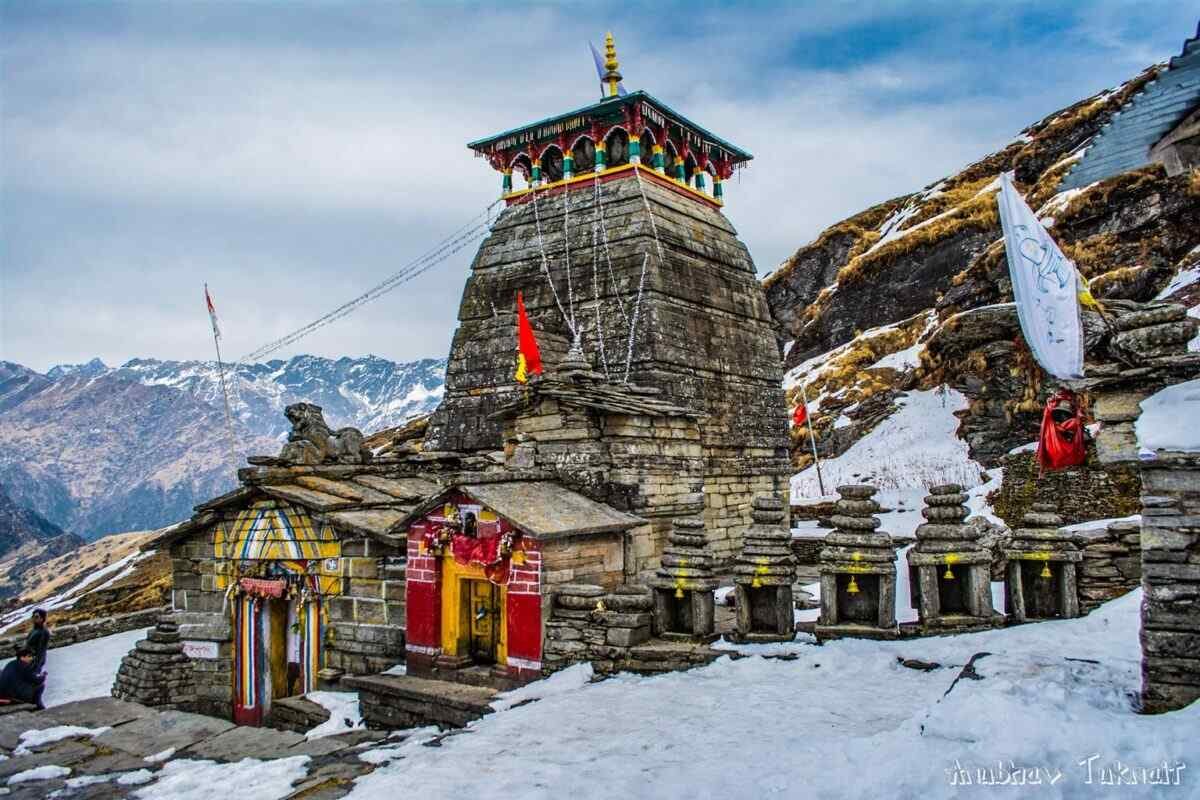
Chopta Tungnath Trek
- ₹ 5,000 / Person

- [email protected]
- 11 Am - 7 pm (Mon - Sat)
- Events By Difficulty
- Challenging Treks
- Events by Experience
- advanced beginner
- experienced
- Mountaineer
- Events by activity
- Events By Month
- privacy policy
- Cancellation & Discount
- Terms & Conditions
- Disciplinary Action Policy
- Homestay Policy & Terms
Drag and Drop (or) Choose Files
Request For a Trek
Click here to open in full Page
Group Size min 4* 4 5 6 7 8 9 10 11 12 13 14 15 More Than 15 Send Message
—————————————————————-
Request For A New Trek
Click here to open in full Page
—————————————————————————————-
Click here to open in full Page
0 / 180 Send Message Please do not fill in this field. Please do not fill in this field. Please do not fill in this field. Please do not fill in this field.
———————————————————————-
Subscribe Our Newsletter
Available Coupons !
There are no Coupons available right now.
Please refer to the discount and coupon policy before using coupons . While processing payment means you have a discount and coupon policy.
Up to 20% extra discount for groups
Directly applicable while checkout
Nature Sports
Individual sports, racket sports, target sports, mountain sports, team sports, roller sports, water sports, start a sport, return to sport, injury recovery, lose weight, improve performance, sport and recreation, sustainable practice, sport and constraints, safety and security, discovery a new sport, sport for mental health, short on time, infographics.

- ONLINE EVENTS
- play.decathlon.in
- SHOP ONLINE
- decathlon.in
….. come to those who subscribe. Once a month, we’ll send you a curated list of stories, tips, nutrition, and more.

Add Your Voice To Ours:

Something very cool comes your way
All you need advice and stories for your sport, delivered straight to your inbox (every month).Nothing more.Nothing less.
P.S: You will enjoy this.

Kuari Pass Trek 2023- A Complete Guide | Himalayan Trek
Embark on an unforgettable adventure with the Kuari Pass trek, a breathtaking Himalayan journey. Click to read more on the detailed guide.

Welcome to the Kuari Pass Trek, an adventure that unveils the splendour of the Garhwal Himalayas. In this pristine region, Kuari Pass stands tall at 4264 meters, offering a front-row seat to some of the Himalayas' most majestic peaks.
Among the top three treks, alongside the Deoriatal and Sandakphu treks , Kuari Pass holds its own as a captivating journey through nature's wonders. Located in the Chamoli district of the Himalayas, the true magic unfolds in the lush Himalayan meadows known as Bugyals, with Gorson Bugyal being a standout.
Walking through enchanting forests filled with Deodar and Oak trees, you may even encounter the footprints of Himalayan black bears and elusive leopards. This trek, while not overly strenuous, rewards you with unparalleled vistas of the Himalayan Range, with the Nanda Devi Massif stealing the show.
If you are craving an adventure that weaves through meadows and snowy slopes, pack your essentials and make your way to nature's grandeur.
Kuari Pass Trek - History
Before we delve into the details, let's explore the history that makes Kuari Pass even more intriguing. This trek gained fame in 1905 when Lord Curzon and explorers Eric Shipton and Bill Tilman embarked on a pioneering expedition through this region. It is no wonder that the trek is also known as The Curzon Trail. Lord Curzon himself improved the path for this remarkable journey.
The trek takes you through the heart of the Himalayas, where you will cross several lesser passes like Vinayak Pass and Tali Top, as well as five major rivers: Pindar, Kaliganga, Mandakini, Bheriganga, and Dhauliganga.
About Kuari Pass Trek: Details
- Duration : 6 Days and 5 Nights
- Distance : Covering a distance of 33 kilometres
- Altitude : Reaching an elevation of 12,516 feet
- Level of Challenge : Rated as Easy to Moderate
- Temperature : Expect daytime temperatures between 13°C to 18°C, while nighttime can drop to -3°C to 4°C
- Ideal Time for Kuari Pass Trek : Plan your adventure between March to mid-June and from mid-September to early November
- Closest Railway Station : Haridwar stands as the nearest railway station
- Airport : You can fly into the Jolly Grant Airport, located in Dehradun
How to Get to Kuari Pass?
To commence your expedition towards the enchanting Kuari Pass, your gateway is Rishikesh, and you have three distinct routes to reach this starting point:
- Overnight Train/Bus to Rishikesh : Opt for a comfortable overnight train or bus ride directly to Rishikesh.
- Overnight Train/Bus to Haridwar and Onward to Rishikesh : Alternatively, you can choose to take an overnight train or bus to Haridwar. From there, embark on a 35-minute drive to Rishikesh, assuming normal traffic conditions.
- Flight to Dehradun Airport (Jolly Grant Airport) and Travel to Rishikesh : If you prefer a quicker journey, catch a flight to Dehradun Airport (Jolly Grant Airport). From the airport, it's a 20-kilometre, 30-minute drive to reach Rishikesh.
Once you have arrived in Rishikesh, your next leg of the adventure involves catching a state transport bus that will transport you to Joshimath. This picturesque journey typically spans 7-8 hours. Upon reaching Joshimath, settle into a cosy guest house for an overnight stay, gearing up for the exciting expedition that awaits you. Now, let's delve into the four primary trekking routes that will lead you to the mesmerizing Kuari Pass:
- Scenic Auli Route (Route 1) : Commence your trek from Joshimath, traverse the picturesque Auli, and venture into the lush green woodlands amidst the grand Himalayas always in sight. Trek through Gailgarh to reach Kuari Pass in just five days, relishing campsites on rolling slopes covered in lush greenery.
- Mirag Exploration Route (Route 2) : Embark on your expedition from Joshimath, passing through Tugasi, Mirag and Khulara on your way to Gailgarh and the Kuari Pass. Ideal for those who prefer to skip the Gorson and Auli meadows, this 5-day trek offers a unique perspective of the journey.
- Tapovan Valley Route (Route 3) : Initiate your trek from Tapovan, located 16 kilometres from Joshimath along the primary route to Malari. This route takes you through the magnificent Tapovan Valley, connecting with the third route at Khulara. While it's the shortest route, be prepared for a strenuous ascent; descending via this path is often recommended.
- Curzon Trail Route (Route 4) : Begin your journey in the welcoming village of Ghat, nestled in the Nandakini Valley, a mere 19 kilometres from Nandprayag. The path leads you through Ramni, Sarkot, Jhenjipatni, Pana, Irani, Sanatoli, and Domabhiti, culminating at the Kuari Pass in 6 days.
The Terrain of Kuari Pass Trek
Referred to as Lord Curzon’s Trails, this route was discovered by the British Viceroy himself. Hiking along this route rewards you with a breathtaking 360-degree spectacle of the splendid Himalayan mountain range. Among them stand giants like Chaukhamba (7128m), Kamet (7756m), Nanda Devi (7817m) and Trishul (7120m). Countless others grace the horizon, including Hathi Ghoda Parbat, Mukut Parbat, Rishi Pahad, Dronagiri, Nanda Ghunti, Mana, Neelkanth, and Changbang.
Starting from Joshimath in the Chamoli region, this trek takes you through a region enriched with perennial rivers, including the Panch-Prayag (Devprayag, Karnaprayag, Rudraprayag). En route, you will encounter remote hamlets, providing insights into the mountain culture.
Himalayan bears and leopard tracks add a touch of wilderness to the journey. Walking through Himalayan meadows, locally known as Bugyals, is a surreal experience. The Gorson Bugyal, an undulating expanse of green pastures, is truly remarkable.
Along the way, you will traverse lesser passes like Vinayak Pass and Tali Top before reaching the pinnacle – Kuari Top, at 13,990 feet.
Itinerary of the Trek
Here's a day-wise itinerary to guide you through the Kuari Pass Trek:
Day 1 : Commencing the journey from Rishikesh and arriving at Karchi.
- Time Spent on the Trail : Approximately 4 hours
- Distance Covered on Foot : Roughly 2.5 kilometres
- Elevation Rise : An impressive ascent of around 1,729 feet, taking you from 9,265 feet to a lofty 11,014 feet.
- Level of Challenge : A harmonious blend of simplicity and moderate exertion, a gradual climb to the enchanting Khullara.
Your journey into the Kuari Pass trek begins at Karchi, but before you dive headfirst into this adventure, you will embark on a lengthy 9-10 hour drive from the serene town of Rishikesh.
The road winds along the mountainside, revealing Garhwal's lush forests and valleys below.
One of the key highlights of this drive is the opportunity to witness the famous Panch Prayag of Uttarakhand. These sacred confluences - Devprayag, Rudraprayag, Karnaprayag, Nandaprayag, and Vishnuprayag - are like stepping stones on your journey into the Himalayan wilderness.
Karchi itself has its own stories to tell, from soothing hot springs to the iconic Mt. Dronagiri peering at you from the horizon. If you arrive a day early or have time after the trek, don't miss the chance to explore the region of Lata, Reini, where the Chipko movement, a pivotal moment in India's environmental history, first took root.
Day 2: Trekking from Karchi to Akhrotghetta
On this day, your adventure takes a more intimate turn as you leave behind the wheels and put on your trekking shoes . The day starts with a 40-minute drive, setting the stage for a 5-hour trek covering 2.75 kilometres.
This leg of the journey Includes a gain in altitude from 6,175 feet to 9,265 feet, offering a delightful mix of challenges. The trek commences with a gentle ascent for the initial 20 minutes, followed by a steeper 45-minute climb through the enchanting forest. As you delve deeper into the woods, the terrain oscillates between gradual and steep ascents.
About a kilometre from the start of your trek, you will find yourself enveloped in a forest of pine, oak, and maple trees. It begins with a carpet of fallen pine cones and maple seeds, creating a forest floor rich in textures and colours.
As you venture further, keep your eyes peeled for a lone walnut tree, a sign that you have reached your campsite for the day, Akhrotghetta. Nestled in a clearing, this campsite is adorned with views of towering peaks, including the prominent Hathi Gauri and the ever-watchful Mt. Dronagiri. Don't forget to wake up early to catch the first rays of sunlight caressing the peaks in the morning.
Day 3: Trekking from Akhrotgetta to Khullara
Day three promises to be a journey through nature's masterpiece. Over 4 hours and 2.5 kilometres, you will experience an elevation gain from 9,265 feet to 11,014 feet. The trek is graded as easy, with a moderate ascent to Khullara.
The forest comes alive with golden oaks, adding a touch of elegance to the green and brown tapestry. As you walk, keep an eye out for streams that can turn treacherously slippery in winter, thanks to the formation of hard ice known as verglas.
Dwarf Rhododendrons mark the next stretch, leading you to your next campsite in Khullara. With Mt. Dronagiri to the left and the regal Hathi Ghoda peaks in sight, this leg of the journey promises a visual feast. On a clear day, you might even spot Kamet, Neelkanth, and other peaks gracing the horizon.
Day 4: Journey from Khullara to Tali via Kuari Pass
As you enter day four, you are about to embark on one of the most exhilarating stretches of the Kuari Pass trek. Over 8-9 hours and 7.65 kilometres, you will experience a variety of terrains and altitudes, with an ascent to Kuari Pass and a descent to Tali.
Your day starts with a steep ascent out of the forested area surrounding Khullara, leading you to a ridge that's a stretch of Lord Curzon's trail.
Neelkanth, Nilgiri, Chaukhamba, Hathi Ghoda, and Dronagiri peaks grace the horizon on one side, while Trishul and segments of Nanda Devi beckon straight ahead. The trail leads you to the upper grasslands of Kuari Pass, marked by a shrine.
Upon hitting the ridge, the grandeur of Pangarchulla Peak comes into view, offering adventurous souls a challenging climb during the Spring season. From the ridge, it's a moderate climb to the Kuari top, offering a 270-degree panoramic view of the Greater Himalayas, with nearly 22 peaks in sight.
Descending from Jhandi Top, you will arrive at Chitrakantha meadows in about 1-1.5 hours, with dense oak forests enveloping you. Your destination for the day, the Tali forest camp, awaits about 40 minutes ahead on this trail.
Day 5: Trekking from Tali to Auli

Day five ushers in a visual extravaganza that culminates your trekking adventure. A 7-8 hour trek covering 8.1 kilometres awaits, with a descent from 10,890 feet to 9,390 feet.
The day begins with a modest climb to Tali Lake, a 30-40 minute endeavour. At this point, you have left the tree line behind, offering you sweeping mountain views once more. The highlight of the day is undoubtedly the breathtaking sight of Mt. Nanda Devi, a sight that can make even the strongest knees go weak.
A steep 20-minute climb from Tali Lake leads to an overhanging trail cutting through a cliff. As you walk along this ledge, you can spot the villages of Lower and Upper Tugasi nestled far below in the valley. After 40 minutes of moderate ascent, the trail takes a U-turn, leading you to Gorson Bugyal.
Gorson Bugyal treats you to wide mountain vistas on the right and behind you, a feast for the eyes. In about 2 to 2.5 hours, you will arrive at Padiyar. As you proceed, the path leads you into a beautiful oak forest. Within just 15 minutes, you'll come across the serene Padiyar temple. After your visit to Padiyar temple, the trail continues its descent.
You will spot Upper Auli, where ski lift number 10 finishes its route, in just a short 10 to 15 minutes. Auli itself lies around 1,000 feet below this point. You will eventually arrive there by strolling through the picturesque meadows for about 1 to 1.5 hours.
Once you reach Auli, the next leg of your journey involves driving down to Dhak. Your final destination for the day is a campsite at Karchi, where you will be staying.
Day 6: Homeward Bound - Karchi (Joshimath) to Rishikesh route
On the final day of your adventure, it's time to bid farewell to the Himalayan wilderness and head back to civilization. You will embark on a 9-10 hour journey covering 250 kilometres, driving from Karchi (Joshimath) to Rishikesh.
An early start, ideally before 6:00 AM, is recommended due to the lengthy journey. The journey back also holds a special treat in the form of the famous Panch Prayags. These sacred confluences, a symbol of Himalayan spirituality, mark the final moments of your extraordinary adventure.
Best Time to Visit Kuari Pass
When it comes to visiting Kuari Pass, timing matters a lot. Let's take a look at the best times to plan your journey:
Summer Season:
The best time to go on the Kuari Pass trek is during the summer months, from April to mid-June. The trek becomes more enjoyable and truly fun with pleasant and calm weather during this period.
Monsoon Season:
However, the monsoon season, with its unexpected and sometimes heavy rains, can make the route to the Pass slippery and muddy. This can dampen the mood of trekkers, making it an unfavourable time for planning your vacation.
Springtime Trek:
The Kuari Pass trek is suitable for all adventurers from mid-September to early November. During this season, you will find the Pass surrounded by lush greenery, making it a great time for exploration.
Winter Exploration:
For those who don't mind the cold, some travellers even venture to explore the Kuari Pass during the winter months despite the bone-chilling temperatures.
Things to Carry for the Trek
To ensure a safe and comfortable trek, make sure to pack the following essentials:
- Durable Backpack : A rugged backpack is essential for carrying your gear and personal belongings comfortably.
- Insulated Apparel : Pack warm clothing, including a cosy down jacket, insulating thermal layers, and waterproof outerwear to combat changing weather conditions.
- Climbing Harness for Safety : Utilize a climbing harness to secure yourself to the rope, providing an added layer of safety while ascending.
- Crampons for Traction : These are indispensable for maintaining solid footing on snowy and icy terrains.
- Dynamic Climbing Rope : Opt for a dynamic rope that can handle both your weight and the equipment you are carrying.
- Powerful Headlamp : Be prepared for early morning starts and late-night hikes with a dependable headlamp, and don't forget to pack extra batteries for extended use.
- Rugged Hiking Boots : Ensure you have sturdy, waterproof boots offering excellent ankle support and compatibility with crampons.
- UV-Blocking Sunglasses : Protect your eyes from harmful UV rays and blinding snow glare with a quality pair of sunglasses.
- Waterproof, Insulated Gloves : Keep your hands dry and warm with waterproof gloves that provide both dexterity and grip.
- Extra sock wear: During your trek, it's smart to carry an extra pair of socks. They can be a real game-changer if you run into unexpected rain, need to wade through water, or your feet get too sweaty.
What is Famous in Kuari Pass?
Kuari Pass is famous for its:
- Scenic Places: Offering panoramic views of the Chaukhamba Range, Mana, Kamet, and more, along with the Nanda Devi Sanctuary and the Gangotri region.
- Flora and Fauna: The trek takes you through rich forests, and you might encounter Himalayan wildlife like the elusive snow leopard or the playful Himalayan tahr.
- Historical Significance: It's the same trail Lord Curzon once traversed, adding a historical charm to the trek.
Frequently Asked Questions
- Is the Kuari Pass Trek easy for beginners?
Yes, Kuari Pass Trek is of moderate difficulty, making it an excellent choice for beginners.
- What is the best time to do the Kuari Pass Trek?
The best time for the Kuari Pass Trek is from mid-November to mid-February during the winter season and from mid-February to mid-April in spring.
- Are there any age restrictions for the trek?
While there is no upper age limit for trekking in India, it's advisable for children to be at least ten years old and for all participants to be physically fit and prepared for the challenging terrain and altitude.
- Is it possible to do the trek solo, or is a guide necessary?
While going on a solo trek is feasible, we recommend considering the services of a knowledgeable trekking guide. Their familiarity with the route, weather dynamics, and steadfast focus on your safety make them an indispensable companion.

For the Love of Sports
When you join our subscribe list, you get access to the best of sports inspiration, tips, stories and more to practice your sport. Just One Digest Per Month (Promise)
Related Posts

If you are also planning to embark on a trekking trip, here are the essential items that should be a part of your trekking bag.

This is the ultimate guide to the Chadar trek, which takes place in Ladakh, India. The post includes information about how to prepare for the trek and other tips for first-time trekkers.
- Online Events
- Shop Online
- Find a Store
- Expert Advice
- Ambassadors
Connect with us
Please subscribe here

Kuari Pass Trekking Guide: How to Safely Hike the Kuari Pass
It’s no secret that I had a spectacular time completing my Kuari Pass trek. (Read Part I and Part II of my experience here.) I loved the Indian Himalayas — I truly have never seen more beautiful mountains.
But often when travelers decide to hike the Himalayas, they head to Nepal . I get it- Nepal is home to the tallest mountains in the world: Everest, K2, Annapurna. But most of us aren’t looking for a one-in-three chance of death (Annapurna) or a ten-week trek (Everest); we just want to enjoy nature and see big mountains.
Which is why I whole-heartedly recommend hiking the Indian Himalayas; they’re uncrowded, cheap and absolutely beautiful. And why hike in Nepal, which is becoming increasingly touristy, crowded and expensive , when you can have the Indian Himalayas all to yourself?
And I mean all to yourself. We came across eight other hikers in our entire eight-day Kuari Pass trek.

Our trek started and ended in Rishikesh, and lasted 10 days total: two days in transit, and eight days of hiking.
Table of Contents
Things to consider when planning your Kuari Pass trek:
What do you want to see.

Hankering for ancient monasteries? Head to Ladakh, a Tibetan Buddhist region. Verdant forests? Think Sikkim. Stunning mountain vistas? The Garhwal Mountains, especially around Nanda Devi. (This was my trek!)
Do you want to hike the Kuari Pass independently, or with trekking company?
Personally, I didn’t even consider independent trekking as I’m not an experienced enough hiker. But on my trek, we met four hikers who were hiking independently so it can be done.
How to pick a trekking company:
When in doubt, check TripAdvisor. Our trekking company, Red Chilli Adventure , came highly recommended on TripAdvisor, ranked #1 in Rishikesh and with a Certificate of Excellence.
I absolutely adored Red Chilli- there wasn’t a kink in the whole operation. We had charming guides, delicious food and smooth logistics. Really I couldn’t recommend them highly enough. Plus, the value for your money is incredible.
One thing to note is some trekking operators prefer to take on a certain number of clients; for example, Red Chilli has a minimum of four hikers and a maximum of ten. If you have a smaller or larger group, you will pay an additional fee.
How much will your Kuari Pass trek will cost?
We had a group of four, and each of us paid $440 USD . Costs became incrementally cheaper with more trekkers:
Group of 2 pax INR 34000 per person Group of 3 pax INR 28500 per person Group of 4-5 pax INR 25000 per person Group of 6-7 pax INR 22500 per person Group of 8-10pax INR 20000 per person
Note: we paid 50% of the total in advance as a deposit, and there was a 3.09% government service tax.
And don’t forget to factor in tips for your guides and porters! We tipped our guides $75 each, and our porters $40 each.
What does your trek include?

Our trek included transportation to and from Rishikesh, one night in a hotel, tents, three meals a day and all permits and entrance fees. This also included a staff of two guides, five porters, one cook and a team of mules.
Our trek didn’t include sleeping bags, but they could be rented for 100 rupees ($1.50 USD) a day. (Pro tip- bring a silk liner if you’re planning on renting!)
The difficulty of the Kuari Pass Trek:
If you’re an avid and experienced hiker, then a difficult hike may be right up your alley. Our trek was moderate which was the perfect difficulty level for me; challenging but bearable.
Best time of year to hike the Kuari Pass:
As a rule, the best times to hike the Himalayas are spring (March-May) and fall (September to November) . The summer months are monsoon season and the winter months are quite cold, so spring and fall are optimal.
We did our trek in May and the weather was sunny most days.
How long your trek will last:
If you’re short on time, a five-day trek might be perfect. Our trek lasted ten days total: two days of transit, eight days of trekking. For me this was the perfect length; any longer and I think I would’ve lost it.
What to pack for your Kuari Pass trek:
Day-pack – I absolutely adore this backpack, and it was essential for carting around my snacks, Camelbak and extra layers on the trail. ( Note – the backpack I used at the time of the trek, the North Face Refugio, has been discontinued. This one is very similar though! )
Sleeping bag – I love, love, love my Marmot Angel Fire and am so glad I brought it. (I also slept in it for the entire month of Yoga Teacher Training!) But if you’re renting a sleeping bag from the trekking company, pack a silk sleeping bag liner – they’re also great for grimy hostels.
Power bars – While Red Chilli supplied us with snacks on the trail, sometimes I was glad to have a Luna Bar or two.
Camelbak – for quick hydration. This went straight in the daypack and was an absolute lifesaver.
iPhone and headphones – great for taking photos and listening to music. To save battery life, I turned off a bunch of my phone’s functions with this list .
Solar charger – Not essential, but great if you’re on a longer trek and need to charge your phone. Note- pre-charge it in an outlet before the trek- the solar function didn’t seem to work very well.
Face wipes – to clear away sweat and grime after a long day.
Headlamp – Essential for midnight or pre-dawn bathroom runs.
Pain killers – I packed Advil for headaches and back pain.
Sunscreen with SPF 50 – Essential when you’re hiking at high-altitude. And don’t forget your your ears and the tops of your hands- that’s where we got burnt the worst! Consider bringing aloe vera too if you burn easily.
Small scissors, Neosporin, band-aids – a godsend to those of us who blister!
Kindle – great for lazy post-trekking afternoons. Bonus points if the light is built-in.
Plastic bags – for dirty or wet clothes.

Note- pack warm , with lots of layers . Ski socks are especially great for cold nights!
My usual outfit: a tank top or t-shirt and Hot Chillys thermal top, with a fleece and rain coat in my bag. For bottoms I wore either athletic shorts or Hot Chillys thermal leggings layered with Zella leggings on top. For my shoes I wore hiking boots and socks, with a dorky wool hat and sunglasses to finish off the look.
Warm jacket
Hiking boots and socks
Ski socks for sleep
Flip flops – to change into post trekking. SO nice!
Wool hat
Sunglasses with UV protection
Hot Chillys thermal top and bottom – I’m a lifelong fan of Hot Chillys, so silky and warm or cool depending on what you need!
Leggings and/or hiking pants
Tons of tank tops or undershirts
Pijamas – in my case, a big t-shirt and athletic shorts
Rain cover for both day-pack and backpack

Would you ever try the Kuari Pass trek?
Red Chilli Adventure did not pay or perk me in any way for this mention- I really just loved them this much! And the Amazon links in this post grant me a small commission at no extra cost to you- thanks for helping keep Ashley Abroad afloat.
Enjoyed this post? Subscribe here!
Subscribe here to receive new Ashley Abroad posts straight to your inbox.
Thanks for subscribing! Now check your email to confirm your subscription.
There was an error submitting your subscription. Please try again.
About Ashley Fleckenstein
Ashley is a travel and lifestyle blogger who lives in Ann Arbor, Michigan. Since college she has au paired in Paris, backpacked the world solo, and lived in Uganda. Her work has been featured by Buzzfeed, Forbes, TripAdvisor, and Glamour Magazine.
40 thoughts on “Kuari Pass Trekking Guide: How to Safely Hike the Kuari Pass”
You’ve definitely sold the Indian Himalayas to me! If I had a bucket list, they would totally be getting written on it.
I love your comment about Nepal being the better choice if you have a penchant for maybe-dying or hiking for weeks (and spending thousands to do so). For the average hiker, it seems like India is the better option.
I totally agree. Plus, it’s definitely more unique!
Ahh I can’t get enough of those gorgeous mountain vistas. Looks like a photographers dream. Thanks for all of the tips – I will definitely be leaning toward the Indian Himalayas if I ever plan a trek there.
It really was a photographer’s dream! Some of the best views I’ve ever seen.
Lately, I’ve grown more and more obsessed with the idea going to India. And after reading this post, India has moved up another notch on my place-to-go-next list. I would LOVE to go on a trek like this. I’ve never done any serious trekking, so it seems like it could be a great option for someone who’s inexperienced, like me. And I really like that you can choose what sort of terrain to hike through. Although based on your photos I’d probably choose to do your same route! I still think $440 per person is a steal. There are a lot of things that draw me to India, but I really love that it’s such an affordable place to travel!
$440 was SO cheap for what we got. We were essentially glamping with a huge team of men and mules. In any other place on earth it would’ve cost $1500 easy!
this sounds pretty amazing. I’m not sure I realized people even did trekking in India. Those views are amazing. I have to admit though- Everest had a pretty big draw for me.
I totally know what you mean. But I guess what’s great about India is that it’s cheaper, less crowded and the views are so great! I imagine Nepal is amazing in a totally different way though.
I had never thought of hiking the himalaya through India, but I will definitely consider it now. You’re hats not dorky either, it’s cute!
Haha thanks! My outfits in the Himalaya were kind of hideous, but who cares- you’re in the middle of nowhere anyway, haha.
While I’m heading to Nepal in December to hike, you’ve inspired me to head to hike the Indian Himalayas as well. What can I say, you had me at seeing eight people in eight days.
It was the best! We saw tons of locals but almost no fellow trekkers.
I love packing lists :) great trips! Still something I’d like to do… although I’m far too lazy for 10 days. Maybe a 3-day lol
Lol I know, 10 days without showering was LONG. We were all so filthy by the end…
I’d say within the next few years. I’m actually considering a 6 month hike on the east coast of the US along the appalachian trail.
I’ve heard great things about the AT- definitely read Bill Bryson’s book about it, hilarious! :)
Very thorough post on a topic that I’m really interested in! I’d love to hike the Himalayas one day but am not dead set on hiking the big ones in Nepal. When I go to hike there, I’ll definitely be going in India. Thanks!
Glad to hear it, Mike! My next trek would probably be Everest Base Camp- that looks amazing.
This sounds absolutely incredible. Honestly, it’s refreshing to get to a travel blog that tells about not-so-known places and experiences. Great post with great information as well, makes me want to go to the Himalaya right now!
I was so blown away by what I saw I had to share! :)
I would like to go to the Himalayas one day and previously, I would have thought to do it in Nepal rather than in India as it seemed to be better organised. However, this trek sounds so much more manageable especially coming in the wake of the awful tragedy in Nepal. I can’t even imagine how their friends and family are feeling right now. Safety and an experienced guide is absolutely essential. Thanks for the tips Ashley.
Definitely. The area I was trekking was so much safer than Everest- Everest is so high and avalanches do happen.
Thanks for sharing this, Ashley! I might prepare myself to trek Himalaya next year and I was looking for some useful info, thanks again :)
Great to hear! And enjoy the Himalayas, they’re mind-blowing!
Gosh, I’m so behind in your posts. But, I would absolutely 100% do this! One of my top travel “bucket list” items is to do the Everest Base Camp trek. I love the mountains so this is right up my alley. Glad you had a great experience. :-)
Well if you’re a mountain lover than this is definitely right up your alley! And I would LOVE do do the Everest Base Camp Trek. I’ve read so many biographies about climbing Everest, K2 and Annapurna!
I trekked Ladakh for two months in 1979 and again two months in 1982. Glad you finally made it. ✨
I’ve been to Nepal twice. As long as you don’t climb summit it’s pretty safe. I’m afraid above message is a bit misleading. Views are stunning and you can’t say where it’s better in India or Nepal. And yes, Nepal is more organized in terms of trekking since they do it for years.
I think she’s just trying to say that altitude sickness is at a much higher risk when you are trekking in Nepal. Trails in Nepal require you to climb high mountain passes. I plan to trek Everest Base Camp and my fellow travel buddies advise me to train harder because we will be reaching an altitude of 5300 meters. I agree with the other poster here, for the average hiker who wants to get a striking views of The Himalayas, India is a better option.
Btw, I enjoyed reading this entry and I’m also looking forward to explore The Indian Himalayas.
I’m so happy I found this post Ashley! Only now, I know -sorry :-p I’ve been to India several times but always postponed a trip to the Himalayas with several excuses, even though it’s on my top bucket list. All your info are so useful that I think I will definitely do 10 days trekking trip next time ;-) Thank you x
Hi Lucy, I’m glad that you found it useful! I absolutely loved my trek and couldn’t recommend it more :). Best of luck to you.
Great post Ashley, glad I got to read it. Trekking in Himalayas has always been a wonderful experience and the things you mentioned above is the most important things to consider. Check out some of the top hiking destinations of Nepal , I am sure you are going to like it.
Thanks so much :)
Brilliant, well written article, thank you. You’ve definitely sold the Indian Himalayas to me! You may find of interest the following article, about the top 10 treks in Nepal, it features the crowded options but also the more remote and interesting ones as well! http://www.thetravellerspost.com/asia/writers-pick-the-10-best-himalayan-treks-in-nepal/
Hey, thanks for sharing this informative post. Recently, I was planning a Himalaya trek with my friends and consulted an Adventure travel agency named as adrenaline-travel.com/tours/everest-base-camp-trek who offered a very affordable plan and now we are going next week for a trek. Will definitely share my experience once I am back. :)
That sounds awesome!
Hi Ashley.. just read your blog..great reading and some lovely snaps.. looks like an ace trip and looks like i am sold on India over Nepal.. well maybe still might look at Anapurna Basecamp though… anyhow which Red Chilli Trek did you do.? the only Nanda Devi one I can find is for 15days. your assistance would be most appreciate… kind regards Matthew
Hi Matthew, I’m not sure what is available now because I did the Red Chilli Trek four years ago. Best of luck!
what about hiking on your own with only a guide and staying in hotels/rooms with shower and food on the trek. what can you advise about that
Hi Miranda, I can’t say I recommend that as I’m not sure it would be safe. Best of luck!
Comments are closed.
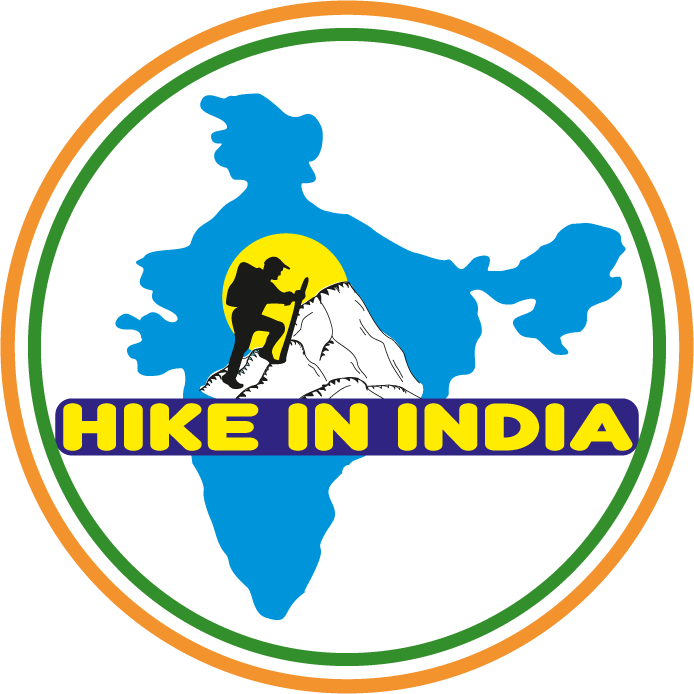
- Upcoming Treks
Kuari Pass Trek
Duration : 6 days 5 nights, the price : ₹ 11,500.00, max people : 50, start location: dehradun, age range : 12-60, total seats : 50 /50, date expired .
Kuari Pass Trek , nestled in the pristine Garhwal Himalayas at 12,500 ft. altitude . This Trek offers a breathtaking high-altitude adventure that beckons both seasoned trekkers and novices. This awe-inspiring trek leads you through enchanting rhododendron forests, charming remote villages, and meadows adorned with a riot of wildflowers. The main highlight is the awe-inspiring panorama of towering peaks, including Nanda Devi, Trishul, and Dronagiri that unfolds as you reach the pass. With its stunning vistas and moderate difficulty level, Kuari Pass Trek is an excellent choice for those seeking a rewarding Himalayan experience. Discover nature’s beauty and challenge your limits on this unforgettable journey in the heart of Uttarakhand.
Schedule Details
Day-1 : dehradun to joshimath (290 km).
- Pick up from Dehradun Railway Station/ISBT.
- Drive to the Joshimath.
- Enjoy the Dinner.
- Overnight stay at Guest House / Home stay.
Day 2 - Joshimath to Dhak Village, Trek start to Gulling Top (3 km/9,000 ft.)
- After breakfast we drive to Dhak village.
- Trek to Guilling Top from Dhak village.
Day 3 - Gulling Top to Forest Camp (5 km / 11,000 ft.)
- Enjoy the Breakfast.
- Trek to forest camp which is abour 5 km.
- Enjoy the dinner in the beautiful campsite.
- Overnight stay at Camp.
Day 4 - Forest Camp to Kuari Pass Summit (15 km / 12,500 ft.) Descend to Khullara Base-camp
- Wake up early then have your breakfast.
- Start your trek towards Summit.
- After spend some time and capturing some photos.
- Descend back to Khullara Base-camp.
- Overnight Stay at Camp.
Day 5 - Khullara Base Camp to Joshimath (10 km)
- After breakfast, Descend to Joshimath.
- Overnight stay at Guest house / Home stay.
Day 6 - Joshimath to Dehradun (290 km)
- This is the last day of our trip.
- Pack your bags and have breakfast.
- Drive to Dehradun.
What's Included
- All necessary permits and entry fees
- Breakfast, Lunch & Dinner
- Medicines (If Required)
- Professional Trek Leader, Guide and Supporting staff
- Stay in Guest House/Camp
- Transportation
What's Excluded
- Any other personal expenses
Location Map
Why Book With Us?
- Customers Feedback matters.
- Trustworthy.
- Experienced Trek Leaders.
- Friendly Staff.
- We do, What we promise.
Got a Question?
- Feel free to whatsapp/call
- +91-8923-888-618
- [email protected]
You may like Tour
Nag tibba trek, kedarkantha trek.
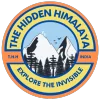
- Summer Treks
- Popular Treks
- Winter Treks
- Difficult Treks
- Latest Treks
- +91-8445363881
- +91-8439264816
- [email protected]

Kuari Pass Trek
- Share This Post:
The Kuari Pass Trek, also known as the Curzon Trail, is a popular trekking route in the Garhwal Himalayas of Uttarakhand, India. This scenic trek offers breathtaking views of snow-capped peaks, lush meadows, dense forests, and pristine alpine lakes, making it a favorite among trekkers and nature enthusiasts.
The trek typically starts from the village of Joshimath and ascends through charming villages, rhododendron forests, and alpine meadows. Along the way, trekkers are treated to panoramic vistas of iconic peaks like Nanda Devi, Kamet, Dronagiri, and Trishul.
One of the highlights of the Kuari Pass Trek is reaching Kuari Pass itself, situated at an altitude of approximately 3,650 meters above sea level. From the pass, trekkers can enjoy mesmerizing views of the surrounding Himalayan peaks and valleys, creating unforgettable memories.
Kuari Pass Trek is suitable for trekkers of all experience levels, from beginners to seasoned adventurers. The well-defined trail, moderate altitude, and gradual ascents make it accessible to a wide range of enthusiasts.
History of Kauri Pass
The history of Kuari Pass, also known as Kauri Pass, is deeply rooted in the ancient trade routes of the Himalayas. Historically, Kuari Pass served as a crucial trade route between the regions of Tibet and India, facilitating the exchange of goods, culture, and ideas between the two civilizations.
Additionally, Kuari Pass holds significance in the realm of mountaineering and exploration. It gained prominence in the early 20th century when British mountaineer Lord Curzon, then Viceroy of India, undertook an expedition to explore the region. This expedition played a pivotal role in popularizing Kuari Pass as a trekking destination among adventurers and outdoor enthusiasts.
Furthermore, Kuari Pass has been a part of various historical and cultural narratives, including ancient Hindu mythology and folklore. It is believed to be associated with the epic Mahabharata, with mentions of the pass in various Hindu scriptures and legends.
Today, Kuari Pass continues to attract trekkers from around the world, drawn by its stunning vistas, rich cultural heritage, and historical significance. It stands as a testament to the enduring legacy of exploration and adventure in the majestic Himalayan region.
Mountain Ranges Visible From Kuari Pass
From Kuari Pass, trekkers are treated to breathtaking views of several majestic mountain ranges in the Garhwal Himalayas of Uttarakhand, India. Some of the prominent mountain ranges visible from Kuari Pass include:
- Nanda Devi Range : The Nanda Devi Range is one of the most iconic and majestic mountain ranges in the Indian Himalayas. It includes the towering peak of Nanda Devi, the second highest mountain in India.
- Dronagiri Range : The Dronagiri Range is characterized by its rugged peaks and dramatic ridgelines. It includes peaks such as Dronagiri Parbat and Changabang, offering spectacular views from Kuari Pass.
- Kamet Range : The Kamet Range is known for its high peaks, including Kamet, the third highest mountain in India. Trekkers can admire the snow-capped summits of this range from Kuari Pass.
- Trishul Range : The Trishul Range is named after its three prominent peaks resembling a trident. It includes peaks like Trishul I, Trishul II, and Trishul III, adding to the stunning panorama visible from Kuari Pass.
- Chaukhamba Range : The Chaukhamba Range is characterized by its four prominent peaks, with Chaukhamba I being the highest. Trekkers can enjoy panoramic views of this range from Kuari Pass, adding to the awe-inspiring beauty of the surroundings.
These mountain ranges offer a majestic backdrop to the breathtaking vistas visible from Kuari Pass, making it a truly unforgettable experience for trekkers and nature enthusiasts alike.
Kauri Pass Bird Watching Flora, fauna and Animals
The Kuari Pass trek presents a haven for birdwatchers and nature enthusiasts, offering a diverse range of avian species and wildlife amidst its breathtaking landscapes. As trekkers navigate through the picturesque trails, they are greeted by a symphony of birdcalls and sightings of various bird species.
Birdwatchers can expect to spot a plethora of avian wonders, including the vibrant Himalayan Monal, majestic Golden Eagle, elusive Koklass Pheasant, and the soaring Lammergeier. The alpine meadows and dense forests of the region also provide habitat to numerous songbirds, thrushes, and warblers, adding to the rich tapestry of birdlife.
In addition to birdwatching, trekkers may encounter a variety of wildlife along the Kuari Pass trek. This includes sightings of Himalayan Musk Deer, Bharal (blue sheep), Himalayan Tahr, and occasionally, elusive predators like the snow leopard and black bear. The diverse flora of the region, including rhododendrons, junipers, and alpine flowers, further enriches the trekking experience.
Exploring the birdlife, flora, and fauna of the Kuari Pass trek offers trekkers a deeper connection with nature and a greater appreciation for the biodiversity of the Himalayan region.
Why You Should Go for Kauri Pass Trek
Kuari Pass Trek offers a transformative journey through the stunning landscapes of the Garhwal Himalayas, making it an ideal choice for adventurers seeking a soul-stirring trekking experience. Here's why you should go for this iconic trek:
- Scenic Beauty : The trek treats you to breathtaking views of snow-capped peaks, lush valleys, and pristine alpine meadows, providing a visual feast for nature lovers and photographers alike.
- Majestic Mountain Ranges: From Kuari Pass, you can witness iconic peaks like Nanda Devi, Kamet, Dronagiri, and Trishul, offering a surreal backdrop to your trekking adventure.
- Rich Biodiversity: Explore the diverse flora and fauna of the region, with opportunities to spot rare Himalayan flowers, birds, and occasionally, elusive wildlife like the snow leopard.
- Cultural Immersion: Interact with local villagers, visit ancient temples and monasteries, and immerse yourself in the rich cultural heritage of the Garhwal Himalayas, adding a cultural dimension to your trekking experience.
- Moderate Challenge: Kuari Pass Trek offers a moderate level of challenge, suitable for both novice and experienced trekkers. It involves trekking through varied terrain, providing a thrilling adventure experience.
- Personal Growth : Completing the Kuari Pass Trek fosters personal growth, resilience, and a sense of accomplishment as you conquer rugged terrain and overcome challenges along the way, leaving you with lasting memories and a sense of fulfillment.
- Spiritual Connection: Follow in the footsteps of ancient pilgrims and connect with the spiritual essence of the Himalayas as you traverse sacred landscapes and visit ancient temples and monasteries along the route.
Overall, the Kuari Pass Trek promises an enriching and transformative experience amidst the awe-inspiring beauty of the Garhwal Himalayas, making it a must-do for adventure seekers and nature enthusiasts alike.
Why to choose Kuari Pass Trek?
Choosing the Kuari Pass Trek offers a transformative journey through the stunning landscapes of the Garhwal Himalayas, making it an ideal choice for adventurers seeking a soul-stirring trekking experience. Here's why you should choose the Kuari Pass Trek:
- Scenic Beauty: The trek treats you to breathtaking views of snow-capped peaks, lush valleys, and pristine alpine meadows, providing a visual feast for nature lovers and photographers alike.
- Personal Growth: Completing the Kuari Pass Trek fosters personal growth, resilience, and a sense of accomplishment as you conquer rugged terrain and overcome challenges along the way, leaving you with lasting memories and a sense of fulfillment.
Is it safe trek for me ?
The safety of any trek depends on various factors, including your physical fitness, experience level, preparation, weather conditions, and adherence to safety guidelines. The Kuari Pass Trek is generally considered safe for trekkers who are adequately prepared and have a reasonable level of fitness.
Here are some factors to consider when assessing the safety of the Kuari Pass Trek:
- Physical Fitness: The trek involves moderate to strenuous levels of physical activity, including ascending and descending uneven terrain. Ensuring that you are physically fit and have undertaken some preparatory training can enhance your safety on the trek.
- Experience Level: Kuari Pass Trek is suitable for both novice and experienced trekkers. However, having some prior trekking experience and familiarity with high-altitude trekking can contribute to a safer and more enjoyable experience.
- Weather Conditions: Weather conditions in the Himalayas can be unpredictable, with sudden changes in temperature, rainfall, and snowfall. It's essential to check weather forecasts before embarking on the trek and be prepared for varying weather conditions.
- Trekking Gear and Equipment: Having the appropriate trekking gear, clothing, and equipment is crucial for safety and comfort during the trek. Ensure that you have sturdy hiking boots, warm clothing, rain gear, a first aid kit, and other essential items.
- Acclimatization: Acclimatizing to the altitude is essential when trekking in high-altitude regions like the Himalayas. It's recommended to take it slow, stay hydrated, and listen to your body to prevent altitude-related illnesses.
- Guide and Support: Hiring a local guide or joining a reputable trekking company can enhance safety by providing local expertise, support, and assistance throughout the trek.
- Safety Guidelines: Following safety guidelines, staying on designated trails, avoiding risky maneuvers, and adhering to the instructions of your guide can significantly contribute to your safety during the trek.
Ultimately, assessing your own capabilities, being adequately prepared, and taking necessary precautions can help ensure a safe and enjoyable trekking experience on the Kuari Pass Trek.
How to difficulty level kuari pass
Kuari Pass Trek is generally considered to be of moderate difficulty level. The trek involves moderate to strenuous levels of physical activity, including ascending and descending uneven terrain. While the trail is well-defined and does not require technical climbing skills, trekkers should be prepared for long trekking days and changes in altitude. The trek's altitude gain and high-altitude passes may pose challenges for some individuals, requiring proper acclimatization and physical fitness. However, with proper preparation, including physical conditioning, acclimatization, and adherence to safety guidelines, trekkers of average fitness levels can successfully complete the Kuari Pass Trek.
What should you keep in mind for the Kuari pass trek?
Kuari Pass Trek, several essential considerations ensure a safe and enjoyable journey. First, prioritize physical fitness by engaging in regular exercise to build endurance for the trek's moderate difficulty level. Acclimatization to the high altitude is crucial; ascend gradually, stay hydrated, and recognize symptoms of altitude sickness. Prepare for varying weather conditions in the Himalayas by packing appropriate clothing layers, including warm layers, rain gear, and sun protection. Invest in quality trekking gear, such as sturdy hiking boots and trekking poles, to navigate the rugged terrain comfortably. Maintain environmental consciousness by practicing Leave No Trace principles and minimizing your impact on the fragile ecosystem. Stay hydrated, fuel your body with high-energy snacks, and follow safety guidelines to ensure a safe trekking experience. Lastly, familiarize yourself with emergency procedures and carry a basic first aid kit for any unforeseen situations.
Winter Season
winter season, typically spanning from November to February, transforms the Kuari Pass region into a winter wonderland. During this time, the landscape is blanketed in pristine snow, creating a serene and picturesque setting for trekking. The temperatures in the winter season can drop significantly, with daytime temperatures ranging from -5°C to 5°C (23°F to 41°F) and nighttime temperatures plummeting further. Heavy snowfall is common during this season, covering the trails and surrounding mountains in a thick layer of snow. Trekking during winter requires specialized gear for cold weather, including insulated clothing, sturdy boots, and crampons for traction on icy trails. Despite the challenges, winter trekking offers a unique and serene experience, with fewer crowds and breathtaking views of snow-capped mountains.
Summer Season
- The summer season, from March to June, brings milder temperatures and clear skies to the Kuari Pass region.
- The landscape comes alive with vibrant colors as wildflowers bloom across the alpine meadows, creating a picturesque setting for trekking.
- Trekking during summer offers comfortable weather conditions, making it an ideal time for beginners and families to explore the region.
- The trails are relatively dry and free from snow, allowing for easier navigation and accessibility to higher altitudes.
- Summer trekking provides ample opportunities for birdwatching, wildlife spotting, and enjoying the stunning natural beauty of the Himalayas.
Monsoon Season
- The monsoon season, from July to September, brings heavy rainfall and occasional thunderstorms to the Kuari Pass region.
- Trekking during this season can be challenging due to slippery trails, landslides, and reduced visibility caused by fog and mist.
- The lush greenery and blooming flora create a vibrant atmosphere, but trekkers must exercise caution and be prepared for adverse weather conditions.
- It's advisable to check weather forecasts regularly and plan trekking routes accordingly to avoid areas prone to landslides and flash floods.
- Despite the challenges, trekking during the monsoon season offers a unique perspective of the region's natural beauty, with cascading waterfalls and verdant landscapes.
Altitude we are going to cover in This Trek
Kuari Pass Trek covers a significant altitude range, starting from the base elevation of approximately 1,800 meters (5,905 feet) and ascending to the highest point around 3,650 meters (11,975 feet) above sea level. This ascent involves a gain in altitude of approximately 1,850 meters (6,070 feet). The trek offers trekkers the opportunity to experience the gradual transition from lower elevations characterized by lush forests and meadows to higher altitudes where alpine vegetation and snow-capped peaks dominate the landscape. Adequate acclimatization and physical fitness are essential to navigate the altitude variations comfortably and safely during the Kuari Pass Trek.
Key Points of Kuari pass trek
Duration: The duration of the Kuari Pass Trek typically ranges from 6 to 7 days, including travel to and from the base camp.
Base Camp : The trek usually starts from the village of Joshimath in Uttarakhand, India, serving as the base camp for the Kuari Pass Trek.
Summer Temperature: During the summer season (March to June), the temperature in the Kuari Pass region ranges from 10°C to 20°C (50°F to 68°F) during the day and may drop to 5°C to 10°C (41°F to 50°F) at night.
Winter Temperature: In winter (November to February), the temperature can plummet to sub-zero levels, with daytime temperatures ranging from -5°C to 5°C (23°F to 41°F) and nighttime temperatures dropping further.
Altitude: The highest point of the trek is Kuari Pass, situated at an altitude of approximately 3,650 meters (11,975 feet) above sea level.
Best Time: The best time to undertake the Kuari Pass Trek is during the months of April to June and September to November when the weather is pleasant, and the trails are relatively dry and snow-free.
Trek Level: The Kuari Pass Trek is considered to be of moderate difficulty level, suitable for trekkers with basic fitness levels. It involves moderate to strenuous ascents and descents, requiring moderate physical endurance.
Trek Distance: The total trekking distance for the Kuari Pass Trek is approximately 30 to 35 kilometers (18 to 22 miles), covering a round-trip route from the base camp to Kuari Pass and back.
Short Itinerary of Kuari pass Trek –
Day 1 : Haridwar to Joshimath
- Depart from Haridwar and drive to Joshimath.
- The journey takes approximately 10-12 hours, covering a distance of around 260 kilometers.
- Arrive in Joshimath, check into a guesthouse or hotel, and spend the night.
Day 2: Joshimath to Gulling Camp
- After breakfast, drive to the starting point of the trek at Dhak village (approximately 12 kilometers from Joshimath).
- Begin trekking from Dhak village to Gulling Camp, situated at an altitude of around 2,450 meters.
- The trek takes approximately 4-5 hours, covering a distance of approximately 9 kilometers.
- Set up camp at Gulling, enjoy dinner, and spend the night camping under the stars.
Day 3 : Gulling Camp to Tugasi Village
- Wake up early, have breakfast, and start trekking towards Tugasi Village.
- The trail passes through dense forests and picturesque meadows, offering stunning views of the surrounding mountains.
- Arrive at Tugasi Village, located at an altitude of around 2,900 meters, after approximately 5-6 hours of trekking.
- Settle into the village homestay accommodation, interact with locals, and experience the traditional way of life.
- Enjoy dinner and spend the night in Tugasi Village.
Day 4: Tugasi Village to Khullara Camp
- After breakfast, resume trekking towards Khullara Camp.
- The trail ascends gradually, passing through scenic landscapes with panoramic views of snow-capped peaks.
- Arrive at Khullara Camp, situated at an altitude of around 3,350 meters, after approximately 6-7 hours of trekking.
- Set up camp at Khullara, enjoy dinner, and spend the night camping amidst the Himalayan wilderness.
Day 5: Khullara Camp to Kuari Pass to Tali Camp
- Wake up before dawn and start trekking towards Kuari Pass to witness the sunrise over the Himalayan peaks.
- Reach Kuari Pass, situated at an altitude of around 3,650 meters, and soak in breathtaking views of Nanda Devi, Dronagiri, Kamet, and other majestic peaks.
- Descend from Kuari Pass and continue trekking towards Tali Camp, located at an altitude of around 3,250 meters.
- Arrive at Tali Camp after approximately 7-8 hours of trekking, set up camp, enjoy dinner, and spend the night camping at Tali.
Day 6 : Tali Camp to Auli to Haridwar
- After breakfast, trek downhill from Tali Camp to Auli, a famous ski resort.
- From Auli, drive back to Haridwar, marking the end of the Kuari Pass Trek.
- The journey from Auli to Haridwar takes approximately 10-12 hours by road.
- Arrive in Haridwar, bid farewell to fellow trekkers and guides, and depart for onward journeys.
How to reach Kuari Pass Trek ?
Option 01:- by train.
- The nearest railway station to the Kuari Pass Trek is Haridwar Railway Station.
- Haridwar is well-connected to major cities like Delhi, Mumbai, Kolkata, and Chennai via regular train services.
- From Haridwar Railway Station, you can hire a taxi or take a bus to Joshimath, the base camp for the Kuari Pass Trek.
Option 02:- By Air –
- The nearest airport to the Kuari Pass Trek is Jolly Grant Airport in Dehradun.
- Dehradun is connected to major cities like Delhi, Mumbai, Bangalore, and Kolkata by regular flights.
- From Dehradun Airport, you can hire a taxi or take a bus to Joshimath, the base camp for the Kuari Pass Trek.
Option 03:- By Bus
- There are regular bus services from Delhi, Dehradun, and Rishikesh to Joshimath, the base camp for the Kuari Pass Trek.
- The bus journey from Delhi to Joshimath takes approximately 12-14 hours, while from Dehradun or Rishikesh, it takes around 9-10 hours.
- Once you reach Joshimath, you can hire a taxi or take a shared jeep to Dhak village, the starting point of the Kuari Pass Trek.
These are the three main options to reach the Kuari Pass Trek, offering flexibility for travelers coming from different parts of India.
Included/Exclude
- Forest Permit and entrance fee
- Accommodation in Hotel on twin share basis
- All meals: breakfast, packed lunch, tea, coffee, snacks, soup and Dinner
- Good Experience Local Trek Leader guide and Technical guide
- Medical Kit
- Oxygen Cylinder
- Personal Insurance
- Medical Certificate
- Personal toiletry Items
- Personal Medicine kit
Tour Amenities
Related tours.

- Amenities 5
Chopta Tungnath & Chandrashila Trek
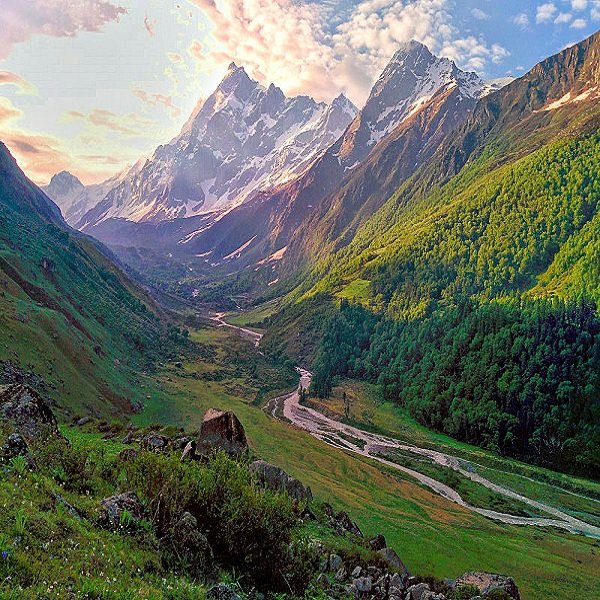
Har ki Dun Trek
Review scores, add a comment cancel reply.
Save my name, email, and website in this browser for the next time I comment.
Tour Information
Tour location, languages support.
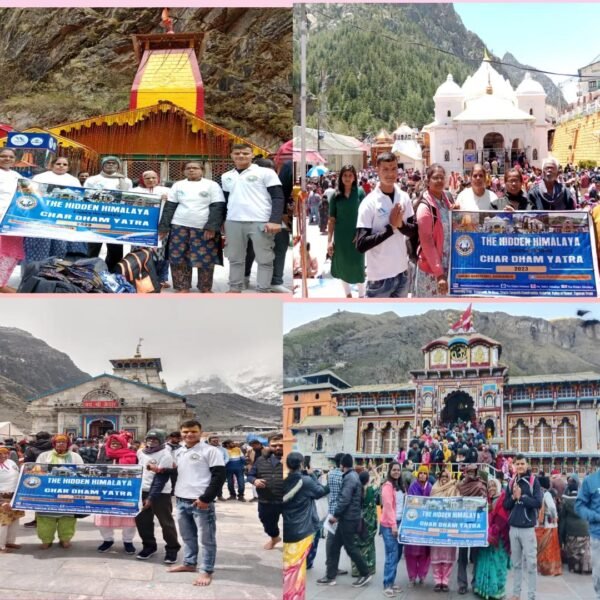
Char Dham Yatra

Mount Srikantha Expedition
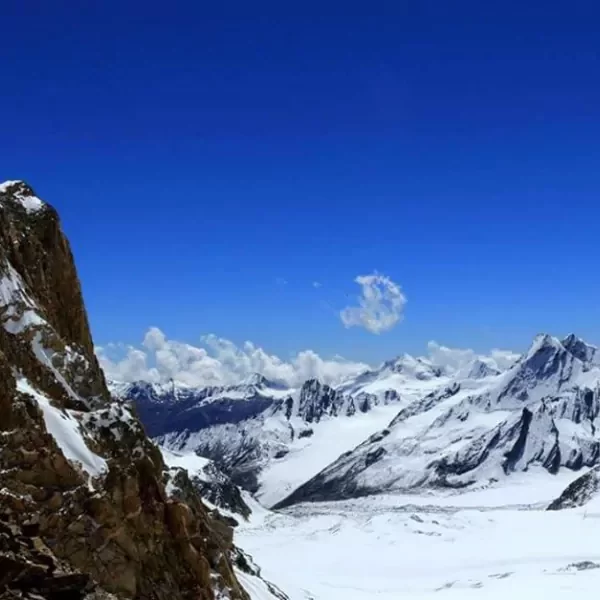
Khatling Glacier Trek
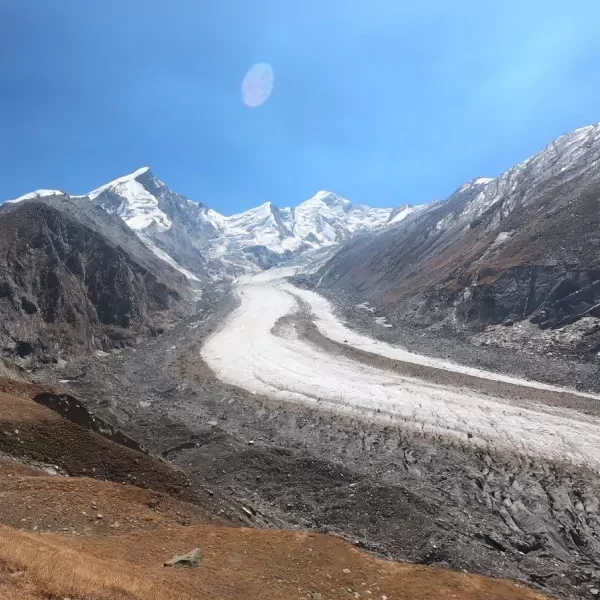
Black Peak Expedition

Satopanth Expedition

Roopkund Trek

Expeditions

Reset Password
WhatsApp The Hidden Himalaya

Kuari Pass Trek 2024 – Price, Itinerary, Dates
Region: Uttarakhand
Base Camp: Joshimath
Grade: Moderate
Distance: 25 km
Min Age: 10 Years+
Best Season: Dec to Feb
Trek Description
Kuari Pass is believed to be one of the oldest treks in India since the 1800’s. Lord Curzon , who was the Viceroy of India from 1899 to 1905, is believed to be the first one to explore the ‘ Kuari Pass ,’ and because of that, this is also known as the ‘ Lord Curzon Trail .’ This pass serves as a crucial link between two significant regions of Garhwal, namely Chamoli and Rudraprayag. It is a truly enchanting adventure in the heart of the Garhwal Himalayas.
This trek is particularly well-suited for beginners and falls into the easy-to-moderate category, making it accessible to a wide range of trekkers. One of the trek’s standout features is the rare opportunity to witness the awe-inspiring Nanda Devi peak . This majestic mountain, the second-highest in India, graces the trail with its snow-capped summits, providing a sight that is rarely seen on most treks.
As the journey unfolds, you’ll find yourself amidst the picturesque meadows of Gorson Bugyal . During the summer months, these meadows are a lush green paradise, surrounded by the towering Himalayas. In contrast, during winter, they transform into a magical snowy wonderland, gradually taking on a golden hue as the snow melts—an exquisite testament to the ever-changing cycles of nature.
The adventure begins with a drive to Dhak Village , conveniently located just 12 kilometres from the bustling town of Joshimath. This tranquil village serves as the perfect starting point for your expedition. The trail initially takes you through enchanting oak and rhododendron forests, creating a mesmerising canopy of colours, especially during the spring season. Along the way, keep an eye out for vibrant wildflowers, including the coveted Himalayan Blue Poppies and Primulas , adorning the trail.
Continuing your journey, you’ll reach the idyllic Gulling Campsite after a 5-kilometre hike. Here, the serene surroundings provide the ideal setting for a peaceful night’s rest and a chance to soak in the tranquillity of the wilderness.
The path then leads you to the Khullara Campsite , an 8-kilometre trek that unveils even more of the region’s natural beauty. The dense forests gradually give way to vast alpine meadows, carpeted with a delightful variety of blooming flora. The landscape bursts with colour thanks to the vibrant rhododendron trees, and you may even spot some Himalayan monal pheasants or Himalayan Blue Sheep grazing in the meadows.
Throughout the trek, your senses will be treated to stunning views of several prominent mountain peaks like Nanda Devi, Dronagiri Parbat, Hathi Parbat, Ghori Parbat and many more.
The trekking route is a haven for biodiversity. Along the way, you may encounter various species of birds, including the magnificent Himalayan Monals , and Himalayan Griffons .
In the lush forests, Himalayan Blue Sheep and musk deer find their sanctuary, and if you’re exceptionally lucky, you might even catch a glimpse of the elusive snow leopard. The diverse flora includes oak , rhododendron , pine, and birch trees , weaving a rich tapestry of colours and fragrances.
- Commence your journey from Rishikesh to Joshimath , covering approximately 250 kilometres.
- The vibrant city of Rishikesh, a hub for spiritual seekers and outdoor enthusiasts. With the Ganga River flowing serenely beside you, you’ll embark on a picturesque road journey.
- As you leave the bustling city behind, you’ll gradually ascend into the serene foothills of the Garhwal Himalayas .
- The road to Joshimath winds through lush valleys, quaint villages, and dense forests, offering glimpses of the natural beauty that awaits you on this trek.
- By the time you arrive in Joshimath, a charming town nestled amidst the mountains, you’ll feel a sense of anticipation for the days ahead.
- Joshimath serves as the gateway to many Himalayan adventures and is the starting point for your Kuari Pass Trek.
- Here, you’ll have the opportunity to rest and prepare for the thrilling trekking experience that awaits you.
- Today’s journey takes you closer to the heart of the Himalayas and immerses you in the trekking experience.
- Drive to Dhak Village , located about 12 kilometres away from Joshimath, and use it as the starting point for your trek.
- Embark on a hike from Dhak Village to the scenic Gulling campsite , covering a distance of roughly 5 kilometres.
- As you reach the Gulling campsite, you’ll find it nestled in a pristine natural setting.
- Set up your tents and enjoy a warm meal as you gather around a campfire. The star-studded sky above the mountains completes this perfect mountain evening.
- Today’s trek is an approximately 8-kilometre hike that takes you from Gulling to the splendid Khulara Campsite.
- The trail will lead you further into the heart of the Garhwal Himalayas, revealing more of its natural treasures.
- The path gradually meanders through lush forests, where tall oak and rhododendron trees provide shade and a sense of tranquillity. The vibrant rhododendron blooms continue to add splashes of colour to the trail.
- As you arrive at the Khulara Campsite , you’ll be greeted by the serene surroundings and the towering peaks of the Garhwal Himalayas.
- Set up your tents amidst this awe-inspiring backdrop and relish a well-deserved meal.
- Undertake a hike from Khulara to the mesmerising Kuari Top , spanning approximately 4 kilometres.
- Continue your journey to Kuari Pass , which is situated roughly 3 kilometres from Kuari Top.
- Marvel at the awe-inspiring peaks that surround you, including Nanda Devi, Dronagiri Parbat, Hathi Parbat, Chaukhamba, Neelkanth, and Ghori Parbat . Take a moment to reflect on the spiritual significance of these mountains in Hindu mythology.
- Trek from Khulara to Tali Dhar , covering an estimated distance of 7 kilometers.
- Progress onwards to the captivating Gorson Bugyal , encompassing an additional distance of around 7 kilometres.
- Witness the grandeur of the Himalayas, with Nanda Devi dominating the skyline. Feel the deep spiritual connection to the region as you learn about its significance in Hindu history and mythology.
- Conclude your day with a taxi ride back to Joshimath, covering a distance of about 20 kilometres.
Journey back to Rishikesh, which is roughly 250 kilometres from Joshimath, marking the conclusion of your remarkable trekking adventure.
What’s Included?
Price inclusion.
- Transportation : Transportation from Dehradun to the basecamp and back to Dehradun is included in the package.
- Accommodation : Enjoy comfortable stays during your trek with accommodation in hotels, guesthouses, or dormitories, offered on a twin, triple, or dormitory sharing basis. When camping, rest in spacious tents on a double or triple sharing basis.
- Meals : We provide nourishing and delicious vegetarian meals. Our meals are designed to keep you energized throughout the trek.
- Camping Fees/Permits : All necessary trekking permits and woodland camping fees are included in the package, ensuring a hassle-free experience.
- Trek Equipment : We provide essential trekking equipment, including dining tents, kitchen tents, sleeping tents with mattresses, and sleeping bags. Utensils, ropes, micro-spikes, and gaiters (if required) are also part of our equipment offerings.
- Mules and Porters : Mules and porters are available to carry central equipment, easing your load and allowing you to focus on the trek.
- Qualified Team : Our team comprises experienced and qualified guides, cooks, helpers, and porters who are dedicated to making your trek safe and enjoyable.
- Basic First Aid : A basic first aid kit with an oxygen cylinder and a helmet (if required) is available to address any potential health concerns during the trek.
- Expert Assistance : You can always reach out to our experts for any queries or assistance during your trekking journey. Simply contact us at +91-8089693825.
Price Exclusion
- Backpack Offloading : If you prefer to offload your backpack, an additional fee of INR 1050 per bag applies.
- Mules or Porters for Personal Bags : The service of mules or porters to carry personal bags is not included and can be arranged at an extra cost.
- Emergency Costs : Any expenses arising from emergencies during the trek are not included in the package.
- Tips : Tips for the trekking team are optional and not included in the package.
- Items Not Mentioned : Any expenses or items not mentioned in the inclusion section are not covered.
- Stay at Dehradun : Accommodation and meals in Dehradun on the last day of the trek are not included.
- Meals During Transportation: Meals during transportation are not included.
- GST : A 5% Goods and Services Tax (GST) is applicable and not included in the package.
Things to Carry
- 45-60 Ltr Bag Pack With Rain Cover & Comfortable Straps
- Hot & Cold Water Bottle Like Borosil & Milton
- Energy Bar, Dry Fruits & ORS
- Personal Medical Kit
- 2/3 Full Sleeves (Non-Cotton)
- 1 Full Fleece T-Shirt
- 1 Fleece Jacket (Woollen Or Sweater)
- 1 Down Feather/Hollofil Jacket
- 1 Waterproof Jacket/Poncho
- 1 Pair Thermal Inners (Upper And Lower)
- 2 Trek Pants (Avoid Shorts & Denim Pants)
- 1 Pair of Waterproof Gloves
- 1 Pair of Woollen Gloves
- Woollen Cap
- 4 Pairs Of Cotton Socks
- 1 Pair Of Woollen Socks
- 1 Pairs Of Sunglasses (U/V Protected)
- 1 Neck Gaiters (Buff)
- 1 Waterproof & High Ankle Trekking Shoes
- 1 Pair Of Floaters
- Hand Sanitizer & Sunscreen Lotion
- Toothbrush And Toothpaste
- Toilet Paper And Wet Wipes
- Quick Dry Towel
- Lip Balm & Antibacterial Powder
- Moisturizer
How To Reach
Joshimath is a well-connected town with multiple transportation options available from Dehradun. The nearest airport to Joshimath is located in Jolly Grant, which is in close proximity to Rishikesh. From there, You can rent a taxi or a bus directly to Joshimath.
For those travelling by train, the nearest railway stations to Joshimath are Rishikesh and Dehradun Railway Station. From these transportation hubs, you have the option to hire a taxi or board a bus that will take you directly to Joshimath.
Joshimath is easily accessible by road, and you can find various transportation services operating between Dehradun/Rishikesh and Joshimath directly.
Difficulty Level of Kuari Pass Trek
The difficulty level of this trek is considered moderately easy, and you shouldn’t encounter significant challenges if you have a good BMI and are in good physical condition.
While the trek is accessible to most hikers, it does present some challenges. The terrain can be steep and rocky in places, and if you want to shoot something with your camera, just do it with less risk, keeping the terrain in mind.
Altitude sickness is a potential concern as you ascend to higher altitudes. Proper acclimatisation and fitness are essential. Additionally, weather conditions can change rapidly in the mountains, so be prepared for sudden temperature drops and unexpected rain or snow.
Best Time for Kuari Pass Trek
Your choice depends on your preference: whether you prefer the vibrant green meadows or the snow-blanketed mountains.
If you desire a snowy trek, the ideal months are December, January, and February, when you can traverse the snow-covered trail. Many opt for winter treks here because they are comparatively less challenging than some other treks in Uttarakhand.
On the other hand, if you want to immerse yourself in lush green meadows, plan your trek for May, June, and September.
You have the opportunity to explore Kuari Pass during all four seasons, each offering its own unique beauty: Autumn, Spring, Summer, and Winter.
Note : We would advise against planning your trek for August and September due to the rainy weather during that period.
More Info of Kuari Pass Trek
This trail is renowned among trekkers with a penchant for history, as it’s often referred to as the Lord Curzon Trail . Lord Curzon, who served as the Viceroy of India from 1899 to 1905, is believed to be the first explorer of this region.
Why is the name ‘Kuari’ Pass?
According to local beliefs, Goddess Parvati , prior to her marriage to Lord Shiva , engaged in meditation at this very location. Lord Shiva, residing on Mount Neelkanth , which lies directly across from the Kuari Pass trail, was deeply impressed by Goddess Parvati’s unwavering devotion and determination.
Consequently, he agreed to marry her and brought her with him. Because Goddess Parvati was unmarried at the time, the trail came to be known as ‘Kuari,’ which means “Bachelor” in Hindi.
Story of Lord Hanuman on Dronagiri Parvat:
According to the Ramayana , during a critical moment when Lord Lakshman, the younger brother of Lord Ram, was wounded by Meghanada, the physician Vaidya Sushen requested Lord Hanuman to retrieve a medicinal plant known as Sanjeevani . This miraculous herb could only be found in the Himalayas. Devoted to Lord Ram, Hanuman embarked on the mission but faced a challenge.
Unsure of how Sanjeevani looked, he decided to uproot the Dronagiri mountain in Uttarakhand and carry it back with him. This act has led to a unique tradition in the Dronagiri region, where Lord Hanuman is not worshipped. Even today, during the Dussehra celebration, when they do Ramleela, the part involving Lord Hanuman is omitted, and the reenactment proceeds without mentioning him.
Nanda Devi Parvat (Adobe of Nanda Devi):
The majestic Nanda Devi peak stands at an impressive elevation of approximately 25,646 feet above sea level. Along the Kuari Pass trail, you’ll catch your first glimpse of this peak at Joshimath, and as you continue to Gorson Bugyal, you’ll be treated to an even clearer and more panoramic view of this towering mountain from its summit to its base.
Nanda Devi holds profound spiritual significance in Hindu history and mythology, primarily due to the reverence of Goddess Nanda Devi and the Nanda Devi Raj Jat Yatra , which occurs every 12 years.
This remarkable pilgrimage covers a distance of approximately 280 kilometres, with devotees embarking on the journey barefoot. The people of Garhwal and Kumaon regions hold this peak in high esteem, worshipping it as Maa Nanda Devi , considered an incarnation of Goddess Parvati.
In the Kuari Pass region, you’ll discover a fascinating variety of plants and trees. One of them is Taxus wallichiana , known locally as ‘ Thuner .’ People in Uttarakhand use it to make medicinal tea because it can help with pain, coughs, colds, and even weight loss.
The oak trees are quite diverse, with around 500 species, and they have many uses. Some are used for making furniture and ships, while others have medicinal properties.
Within the oak family, Green Oaks are used in building wood-framed structures, and Golden Oaks get their name from the beautiful golden leaves they have in the fall.
You’ll also come across Rhododendron flowers, called “ Buransh ,” which are used to make sweet juice. Besides being tasty, they have health benefits like reducing inflammation and helping with various health issues.
Lastly, there’s the Himalayan Birch, or “ Bhoj Patra ,” which was even used as paper in the past. These tall trees have medicinal properties too, and they’ve been used to treat wounds, stop bleeding, and manage conditions like diarrhoea.
The Kuari Pass Trek offers a chance to encounter the fascinating fauna of the Himalayas. While trekking through this pristine wilderness, keep an eye out for the elusive Himalayan fox and the formidable Himalayan bear.
Graceful Himalayan deer may cross your path, and if you’re exceptionally lucky, you might spot the rare and vibrantly coloured Monal bird .
In the skies above, the majestic Himalayan Griffon soars, while Wild boars add their presence to the forest soundscape. And though it’s a very rare sighting, the enigmatic snow leopard, a true symbol of the untamed Himalayan wilderness, might make a fleeting appearance, leaving trekkers in awe of the rich biodiversity of the region.
1. Badrinath:
Badrinath, one of India’s four prominent pilgrimage sites, is situated at an elevation of approximately 10,800 feet. The temple, towering at a height of around 50 feet, is attributed to the 8th-century philosopher Adi Shankaracharya and primarily enshrines Lord Vishnu.
2. Narsingh Devta Temple (Joshimath):
The Narsingh Devta Temple is situated approximately half a kilometre away from Joshimath, positioned in the lower market area of Joshimath. During the winter months, this temple assumes the role of housing the immense idol of Lord Badrivishal when the main doors of the Badrinath Temple remain closed.
According to legend, it is believed that as the Kalyug era progresses, the right arm of Lord Narsingh’s idol will gradually lower, potentially leading to the blockage of the routes to Badrinath.
3. Valley of Flowers :
The Valley of Flowers holds the prestigious distinction of being a UNESCO World Heritage Site , and it boasts a magnificent landscape adorned with vibrant meadows. A visit to this heavenly location is akin to stepping into paradise. This expansive valley stretches across an area of 87 square kilometres in Chamoli, Uttarakhand.
Within this enchanting landscape, you’ll encounter a profusion of over 600 species of blooming flowers, including marigolds, daisies, primulas, poppies, orchids, and numerous others.
The discovery of this valley can be attributed to Frank S Smythe, a British mountaineer, who, along with two fellow mountaineers, stumbled upon it in 1931 while exploring the mountains and losing their way. The best time to experience the valley’s full splendour is from July to September.
4. Adi Shankaracharya Math (Joshimath):
Famously called Jyotirmath, this monastery was established by Jagatguru Adi Shankaracharya ji and his disciples. This monastery or math is just half a kilometre away from the Joshimath Bus stand.
5. Pangarchulla peak:
You can see the Pangarchulla peak from the trail to Kuari Pass. The Height of the Pangarchulla peak is around 15069 feet. You may find it a difficult trek in winter, and if you want to up your level of trekking from easy, then you can try this one. It is one of the most beautiful treks in the Garhwal region.
6. Gorson Bugyal:
Gorson Bugyal comes on the way to Kuari Pass, and from Gorson Bugyal, the vistas of the Nanda Devi peak become even more breathtaking, and you’ll also be treated to a sight of the renowned Dronagiri mountain, positioned right next to Mount Nanda Devi.
Beholding these two sacred mountains, steeped in Hindu mythology and historical significance, is an unforgettable experience.
7. Bagini Glacier trek:
The trek to Bagini Glacier starts from Jumma village, which is just an hour away if you are riding from Joshimath. The famous Dronagiri village will also come in between while you do this trek. To explore the glacier with a little less difficulty, you can try this trek.
Map of Trail
It depends on the season: in winter, it can go as low as -8 degree Celsius. In summer, the average temperature varies between 19-29 degree Celsius.
Nanda Devi Peak and Dronagiri Peak, these peaks can be clearly visible if the weather is good. But the view of Hathi Parbat is the mountain that will take your breath away as it seems like it is just standing right in front of you.
No, there are no charging points during the trek and we would like to suggest that you should charge all your gadgets one night before going on the trek at Joshimath.
Lord Curzon discovered Kuari Pass in 1905.
You will get snow at Kuari Pass from late November or early December till February.
The nearest ATM to the Kuari pass is in Joshimath. But we would suggest you take some cash from Rishikesh as it will be safer for you.
The last known charging point to the Kuari Pass trek is Joshimath, and we suggest you charge all your gadgets at Joshimath.
/ Per Person
5% GST & Transportation Cost
Cancellation Policy
Available Dates
Call for Booking
Similar Treks
Dayara bugyal trek, brahmatal trek, gaumukh tapovan trek, kedarkantha trek, leave a comment cancel reply.
Save my name, email, and website in this browser for the next time I comment.
+ Transportation Cost
Subscribe to our newsletter
Get news and discounts straight to your inbox
We are Associated With
Himalayan Dream Treks
We believe in making the Himalayas more than just a destination; we see them as a life changing experience. Whether you seek spiritual enlightenment, have a passion for trekking, or simply crave adventure, we're here to accompany you on your journey.
Important Links
Why Choose Us?
Advance Payment
Cancellation Policy & Refund
Privacy Policy
Terms & Condition
Career At HDT
Contact Details
+91-80896 93825
+91-94565 46051
Office Address
Dehradun Office :
10 B, Mothorowala Rd, Dharampur, Ajabpur Kalan, Dehradun, India, Uttarakhand, 248001
© All Rights Reserved 2024 Himalayan Dream Treks
(To the Himalayas and Beyond) — Designed & Developed by DeveloSquad

IMAGES
VIDEO
COMMENTS
Enjoy Bike For Mountain of Temu's best price, superior quality & full range of services. Browse thousands of brands and find deals on Bike For Mountain at Temu®, Shop Now.
Let us plan your luxury African gorilla adventure at no extra cost to you. Enquire now! Highly trained and knowledgeable Africa travel agents. 24/7 on-vacation support!
Since 2007, we have brought out treks that have become India's most famous treks: Roopkund, Rupin Pass, Buran Ghati, Kedarkantha, Kashmir Great Lakes, Tarsar Marsar, Brahmatal, Phulara Ridge—the list goes on. In 2023 alone, we brought out five new treks in Indian trekking. We know treks better than anyone.
Day 4: Trek from Khullara camp to Kuari pass summit - (4264 Meters) back to Khullara campsite. Trek Distance 13 km - 8/9 Hours journey. Mode of the journey - On foot - 13 Km Altitude - Kuari pass Summit - 13,989 feet Night Stay - Campsite - on a twin/three share basis The trek from the Tail campsite to the Kuari Pass summit and back to the Khullara viewpoint is a significant ...
The Kuari Pass Trek also known as "the Lord Curzon trail", is an exhilarating adventure that takes you through the breathtaking landscapes of the Himalayas.Nestled in the Garhwal region of Uttarakhand, India, this trek offers a mesmerizing experience for nature lovers and adventure enthusiasts.
The Kuari Pass trek is located in the Garhwal region of Uttarakhand, India, which is known for its natural beauty and cultural heritage. The trek takes you through lush green forests, scenic meadows, and beautiful Himalayan authentic villages, offering breath-taking views of the snow-capped peaks of the Garhwal Himalayas.
The Winter Kuari Pass Trek is a mesmerizing high-altitude adventure in the Indian state of Uttarakhand. It is renowned for its breathtaking vistas of the Garhwal Himalayas, including the Nanda Devi, Dronagiri, and Kamet peaks. This winter trek offers a unique experience for trekkers, allowing you to explore the Himalayas in their snow-covered splendor.
The Kuari pass means the Doorway. This trek was explored by Lord Curzon and is also knows as the Curzon trail. The pass lies at an altitude of 3876 m. The trek passes through Pristine Rhododendron, oak, and deodar forest covered in layers of snow. The Kuari Pass trek is a highly varied & scenic trek.
Kuari Pass Trek Difficulty. Kuari Pass Trek is a high altitude Himalayan trek. The level of this trek is easy to moderate, which demands physical fitness, stamina, and endurance. No prior trekking experience is required which means beginners are always welcomed. The duration of the trek is just od 6 days and it is around 33 kilometers altogether.
Kuari Pass Trek is a renowned high-altitude trekking route in the Indian Himalayas, located in Uttarakhand's Chamoli district. The journey takes you past beautiful green meadows, deep forests, sparkling streams, and attractive villages. The Kuari Pass Trek is famed for providing stunning vistas of the Himalayas' tallest peaks, including Nanda Devi, Dronagiri, Kamet, and Hathi-Ghodi Parbat.
Kuari Pass Trek is one of the most scenic and popular treks in the Himalayas. You will witness the majestic views of the Nanda Devi, Trishul, and Dronagiri peaks, and walk through lush forests, meadows, and villages. This trek is suitable for beginners as well as experienced trekkers who want to experience the beauty and culture of Uttarakhand. Learn everything you need to know about Kuari ...
Kuari Pass Trek from Various Places-From Delhi: By Road: The distance from Delhi to Kuari Pass starting point (Joshimath) is approximately 476 km via NH-7 and 512 km via NH-334. Traveling by bus, taxi, or self-driving are all viable options. The bus journey takes about 12 to 14 hours, while a taxi ride typically spans 11 to 12 hours.
All through the Kuari pass trek, you get to trek through the mystical and ancient forests adorned with Oak and Rhododendron trees. The forests are a perfect treat for photography lovers with tall trees touching the sky, the rays of the sun making its way through the canopy to the ground and a trail with a clearing leading to a magical meadow.
Kuari Pass trek is located amidst the gorgeous Garhwal Himalayas. It offers majestic views, an easy trail and fairly good weather conditions. The best part about the Kuari Pass trek is that beginners will love it. In fact, if you are a first timer, Kuari Pass trek will be a good experience to start.
The Kuari Pass is located in the Garhwal region of the Himalayas, at an elevation of over 4,000 metres (about 12,500 feet). The Chamoli district of Uttarakhand is home to Kuari Pass, one of the most popular hiking destinations in the state. 13. Kuari pass trek distance. Dehradun is the nearest location for our trek basecamp and is well ...
The Kuari Pass Trek in the Jungle of Uttarakhand will provide you with the ultimate beauty when you travel to this untouched paradise in the month of March and April when the destination offers you a view of all Gather Munsignores; Nanda Devi, Trishul, Chaukhamba, and Dronagiri. The Trek covers remote villages of Uttarakhand which are still ...
The Kuari Pass trek, as it was carried out back in the day and continues to follow the same path till today, starts from Joshimath and ends at Kuari Pass, covering a 28km long trail that consists of gentle slopes, coniferous forests, and stunning views of the snow-capped mountains in the backdrop.
Chopta Tungnath Trek. ₹ 3,500 / Person. Book Now. Kuari Pass Trek is a magnificent trek with beautiful landscape views in Garhwal Himalayas. It is also known as Lord Curzon Trail. Kuari Pass trek is one of the best treks in winter and might be accessible in all seasons.
About Kuari Pass Trek: Details. Duration: 6 Days and 5 Nights. Distance: Covering a distance of 33 kilometres. Altitude: Reaching an elevation of 12,516 feet. Level of Challenge: Rated as Easy to Moderate. Temperature: Expect daytime temperatures between 13°C to 18°C, while nighttime can drop to -3°C to 4°C.
Best time of year to hike the Kuari Pass: As a rule, the best times to hike the Himalayas are spring (March-May) and fall (September to November). The summer months are monsoon season and the winter months are quite cold, so spring and fall are optimal. We did our trek in May and the weather was sunny most days.
Book Kuari Pass Trek, Uttarakhand Online Fixed Group Departures. ⛺️Tent Stay. Expert Guides. Group Discounts. Enquire Now
Kuari Pass Trek, nestled in the pristine Garhwal Himalayas at 12,500 ft. altitude. This Trek offers a breathtaking high-altitude adventure that beckons both seasoned trekkers and novices. This awe-inspiring trek leads you through enchanting rhododendron forests, charming remote villages, and meadows adorned with a riot of wildflowers.
Kuari Pass Trek is a renowned high-altitude trekking route in the Indian Himalayas, located in Uttarakhand's Chamoli district. The journey takes you past beautiful green meadows, deep forests, sparkling streams, and attractive villages. The Kuari Pass Trek is famed for providing stunning vistas of the Himalayas' tallest peaks, including Nanda Devi, Dronagiri, Kamet, and Hathi-Ghodi Parbat.
The Kuari Pass Trek, also known as the Curzon Trail, is a popular trekking route in the Garhwal Himalayas of Uttarakhand, India. This scenic trek offers breathtaking views of snow-capped peaks, lush meadows, dense forests, and pristine alpine lakes, making it a favorite among trekkers and nature enthusiasts. The trek typically starts from the ...
Trek Description. Kuari Pass is believed to be one of the oldest treks in India since the 1800's. Lord Curzon, who was the Viceroy of India from 1899 to 1905, is believed to be the first one to explore the 'Kuari Pass,' and because of that, this is also known as the 'Lord Curzon Trail.'This pass serves as a crucial link between two significant regions of Garhwal, namely Chamoli and ...